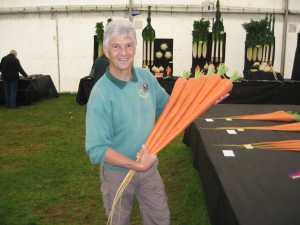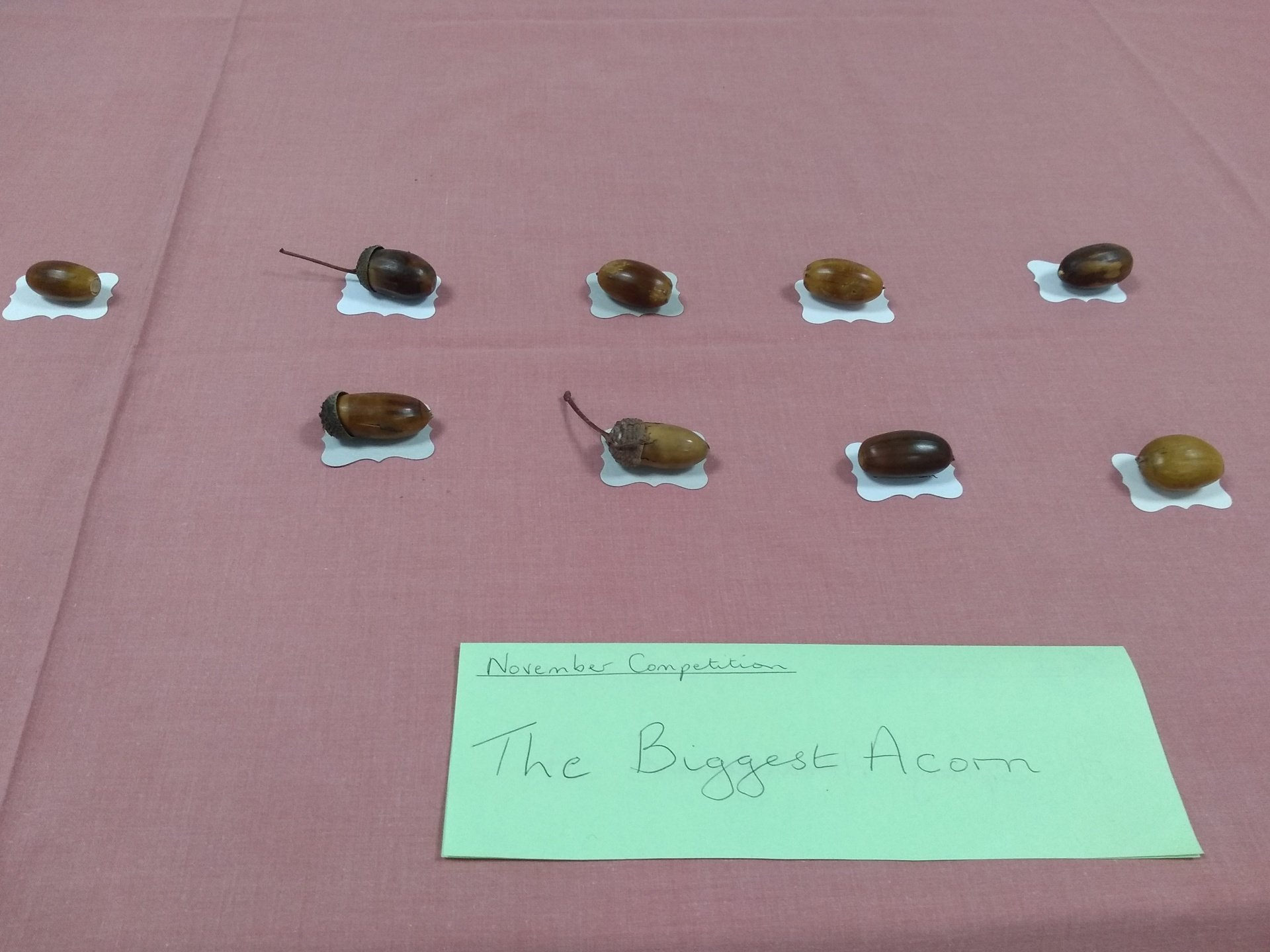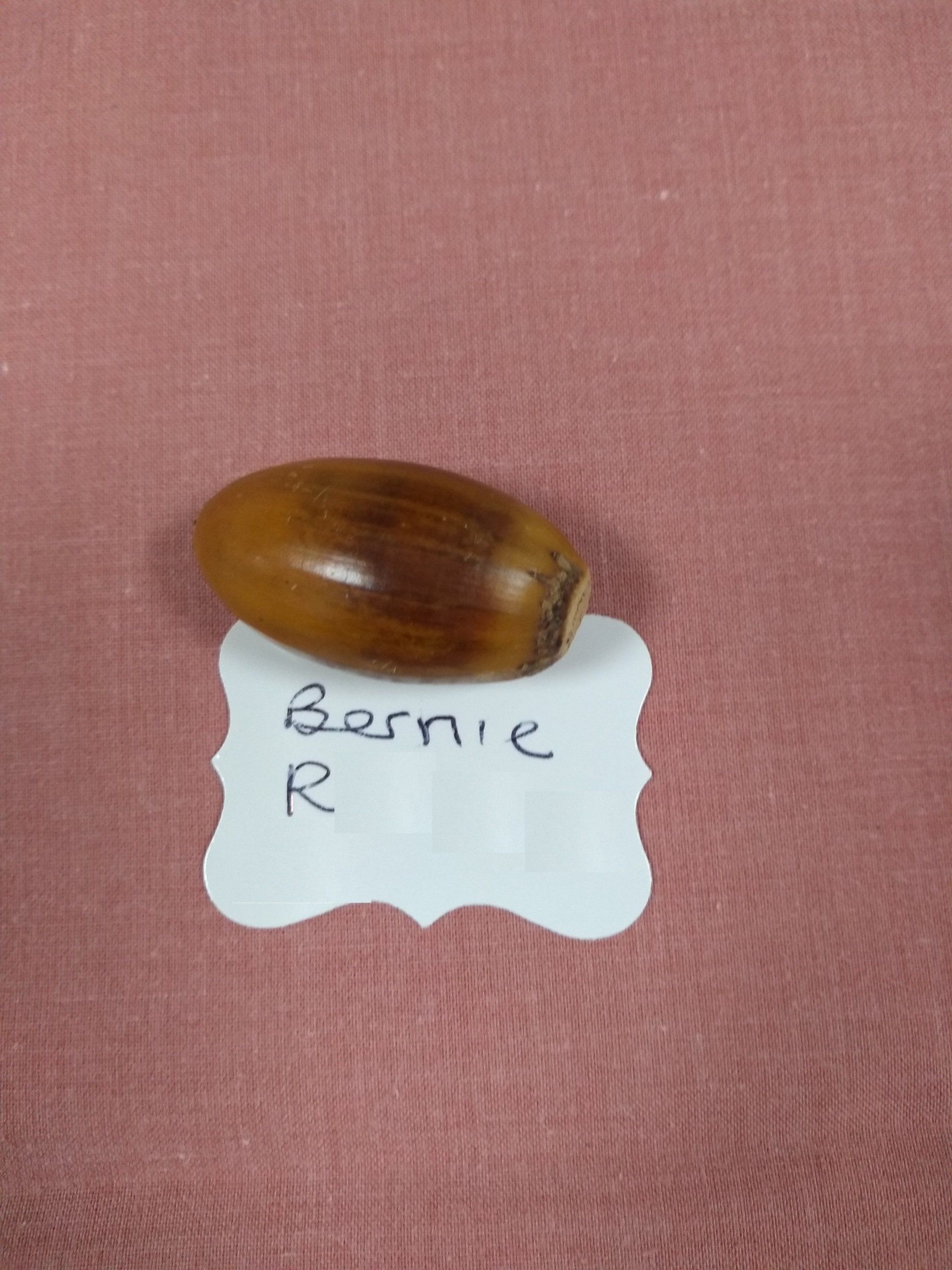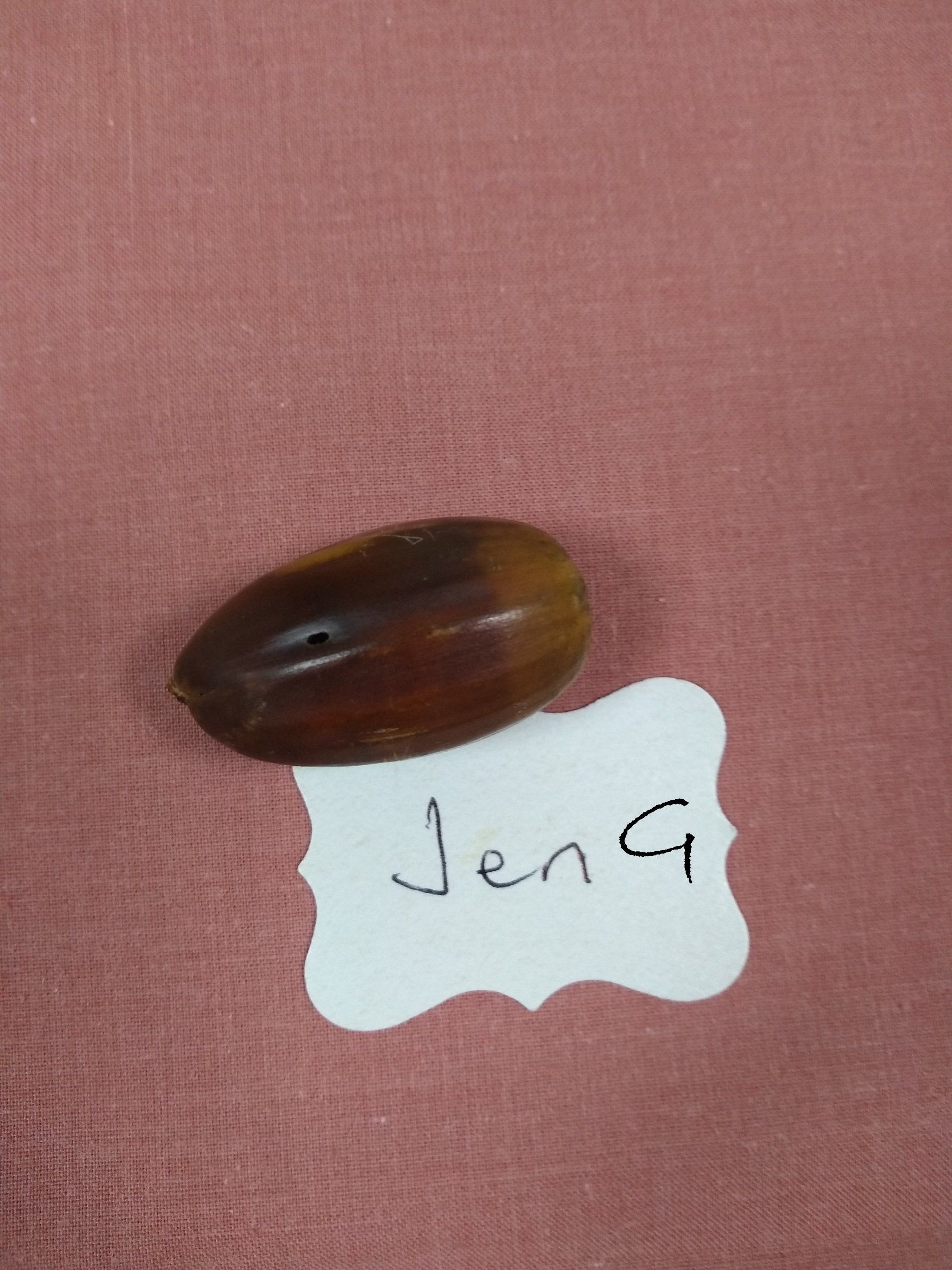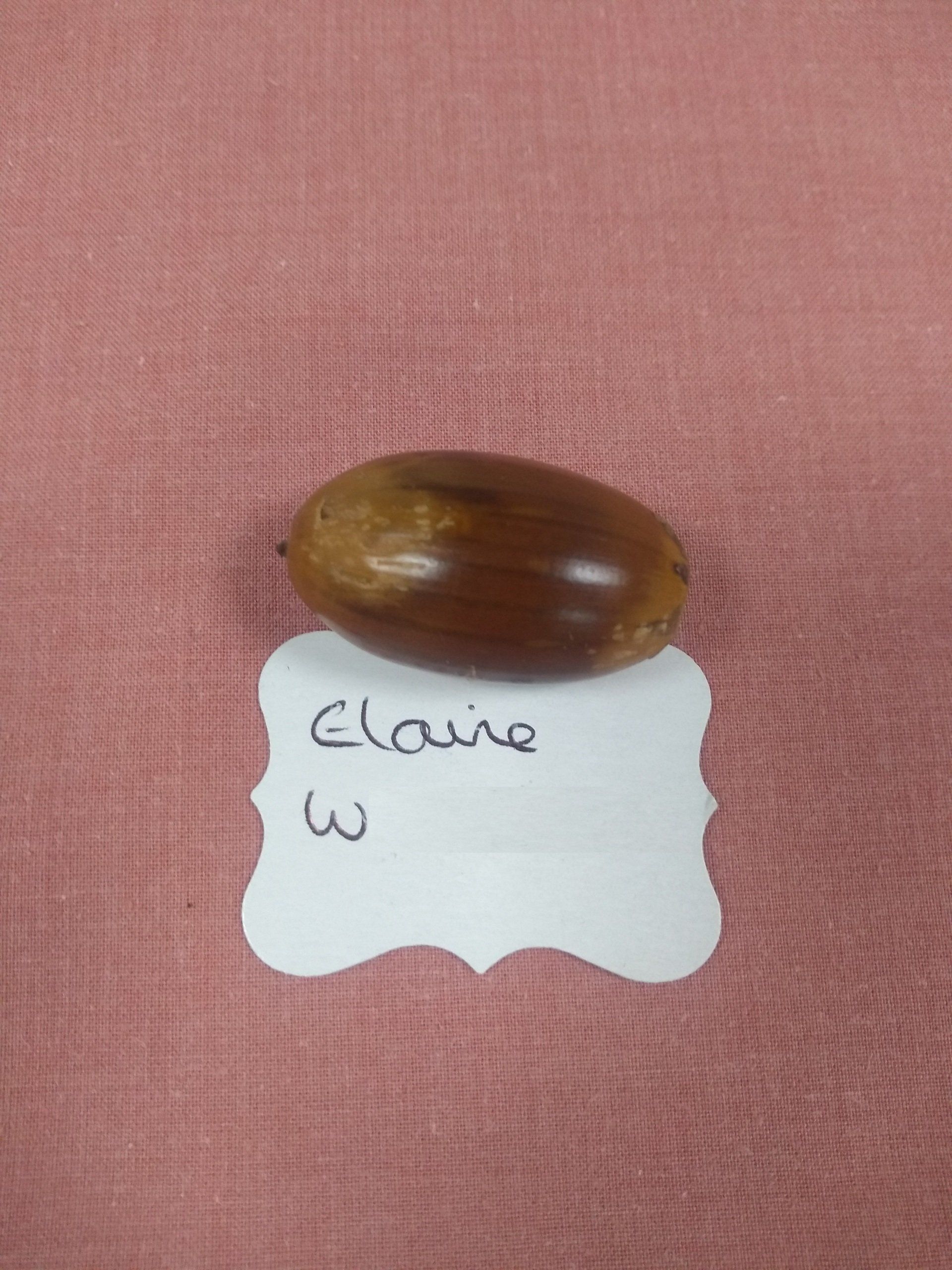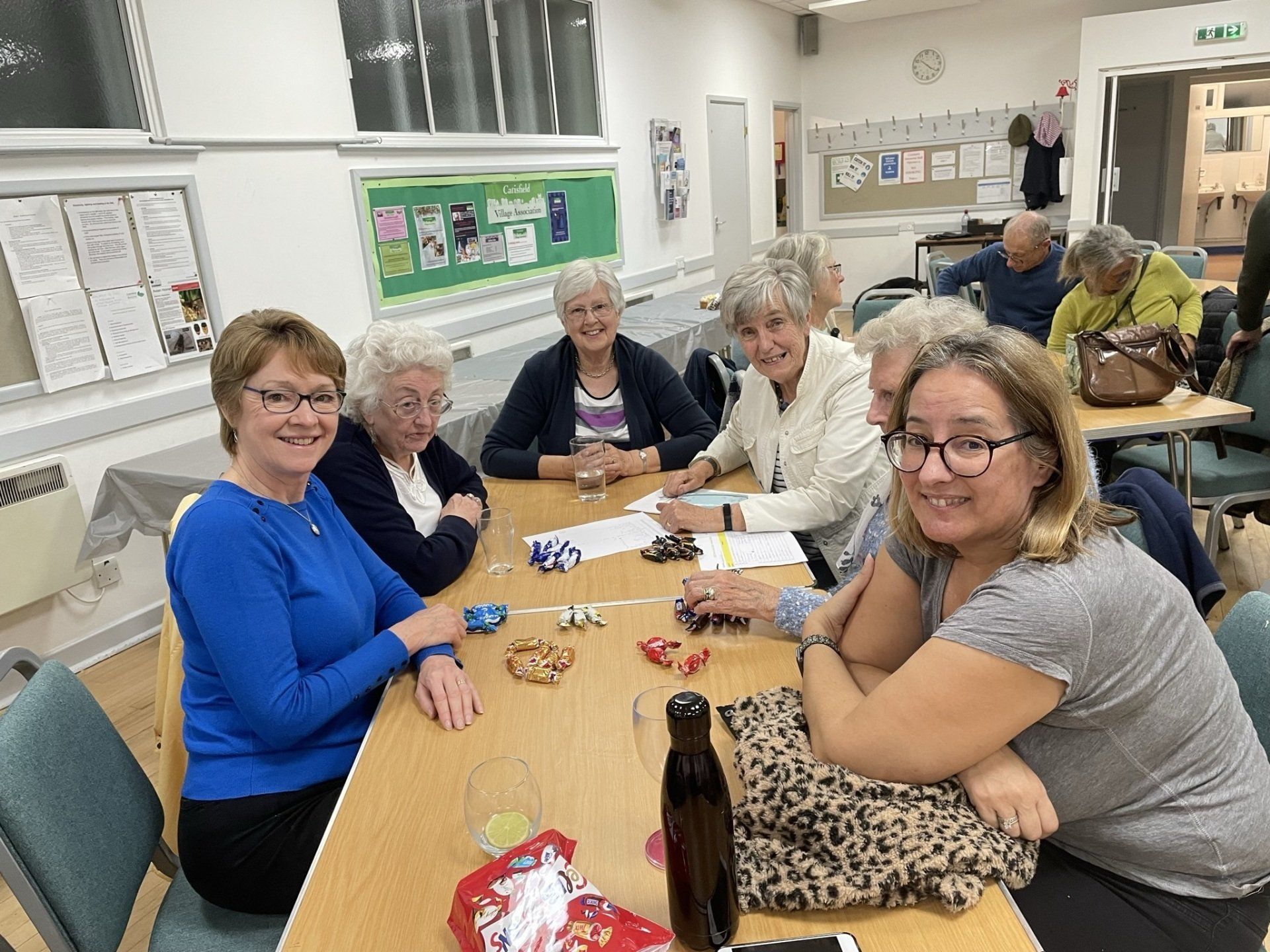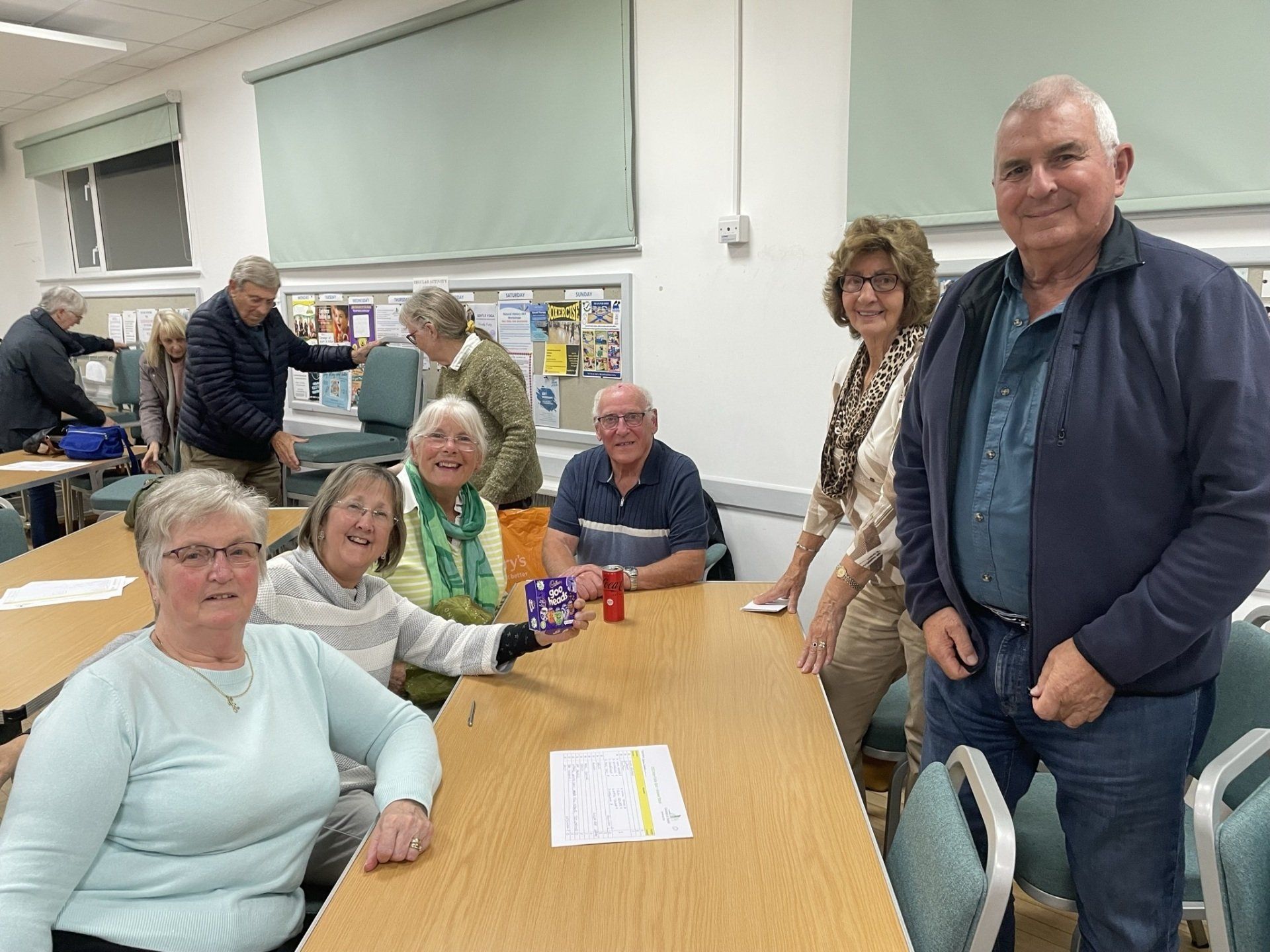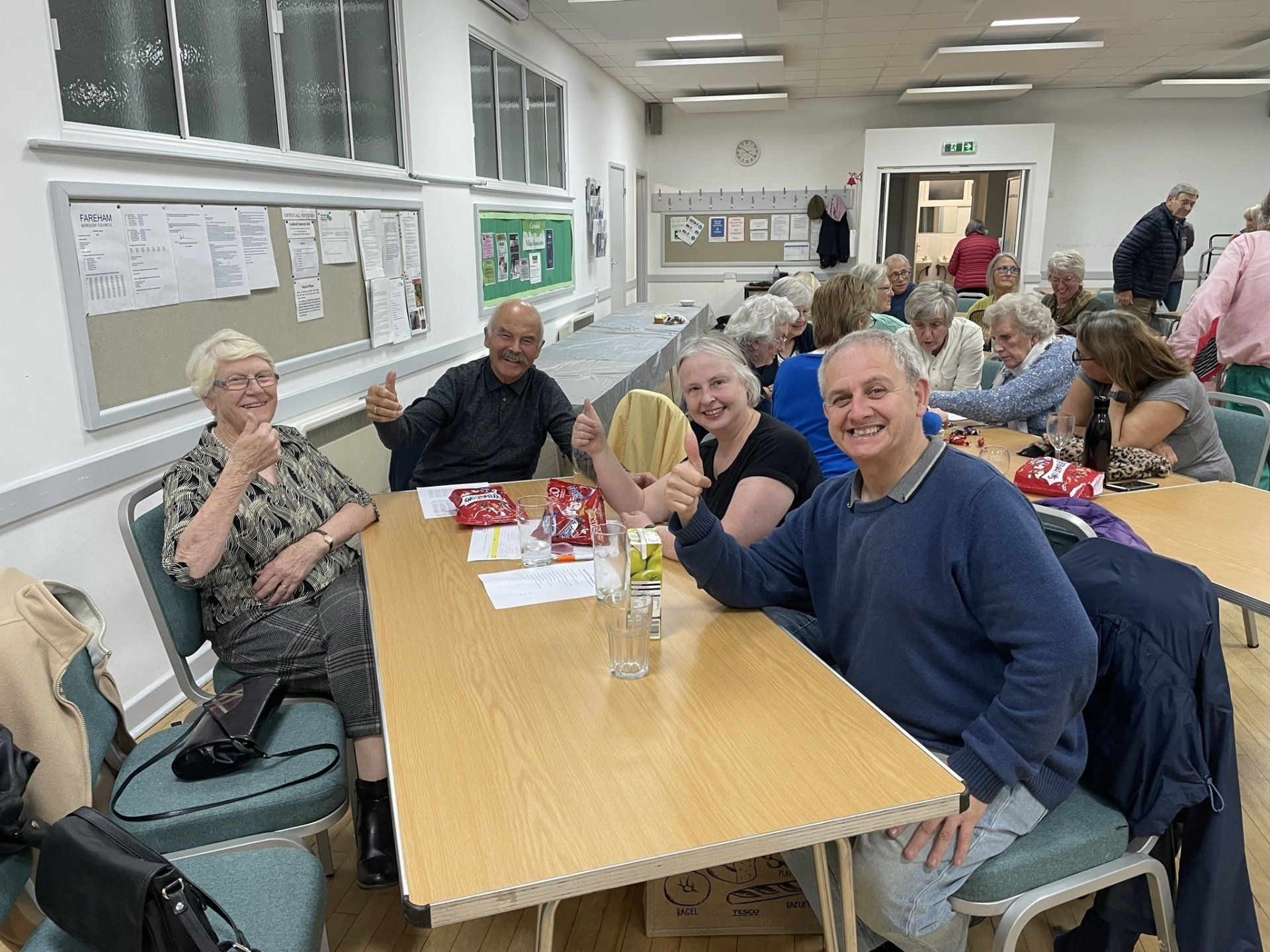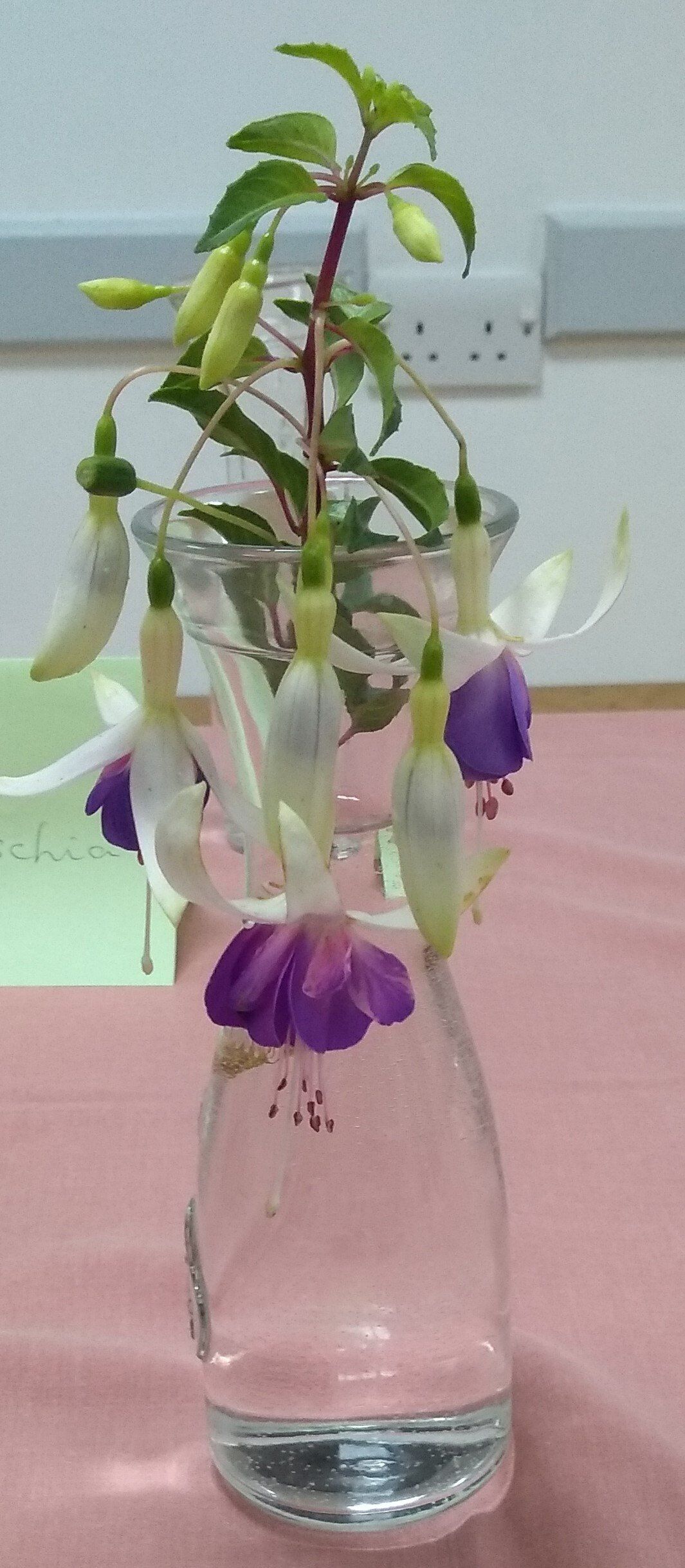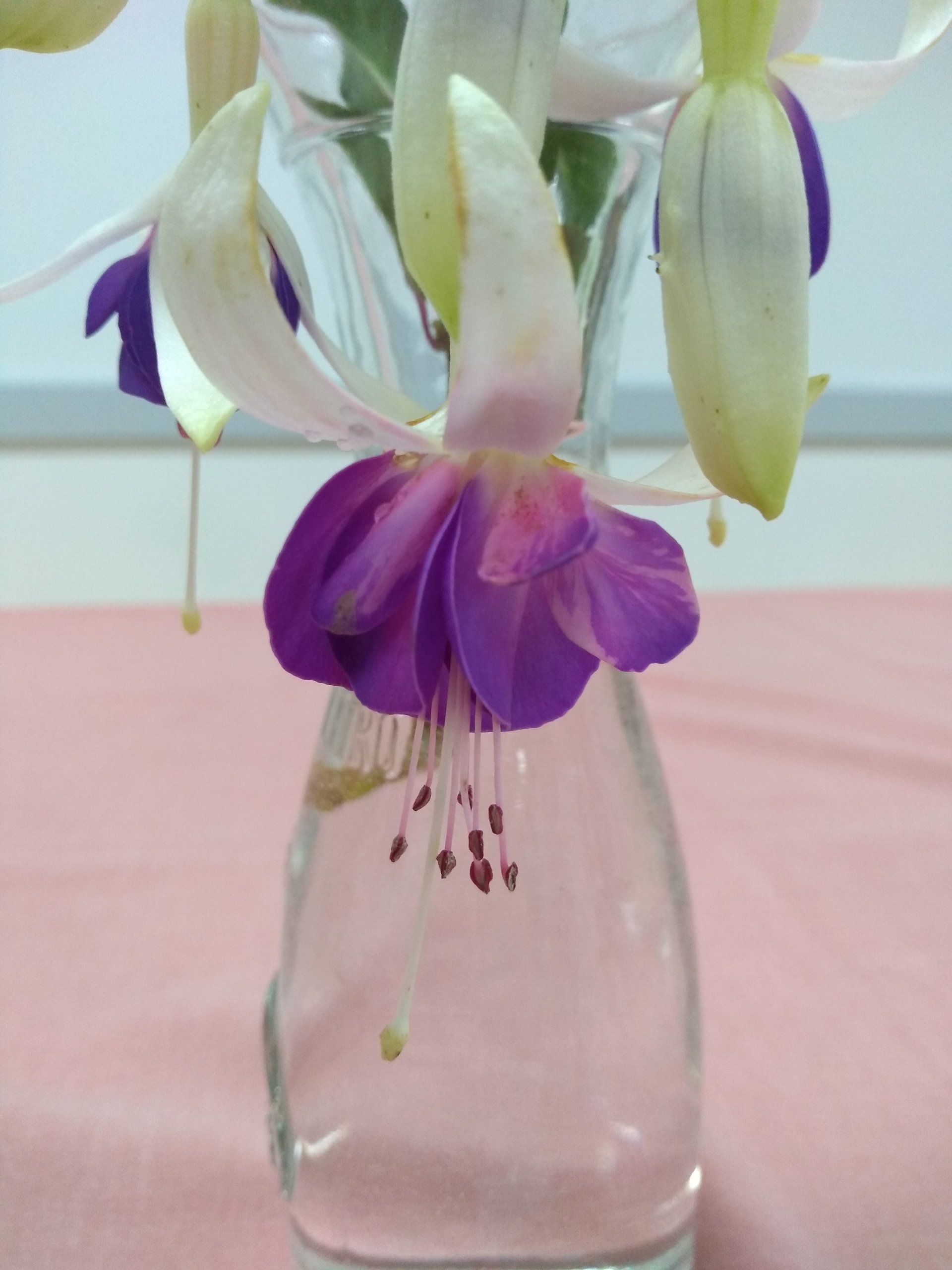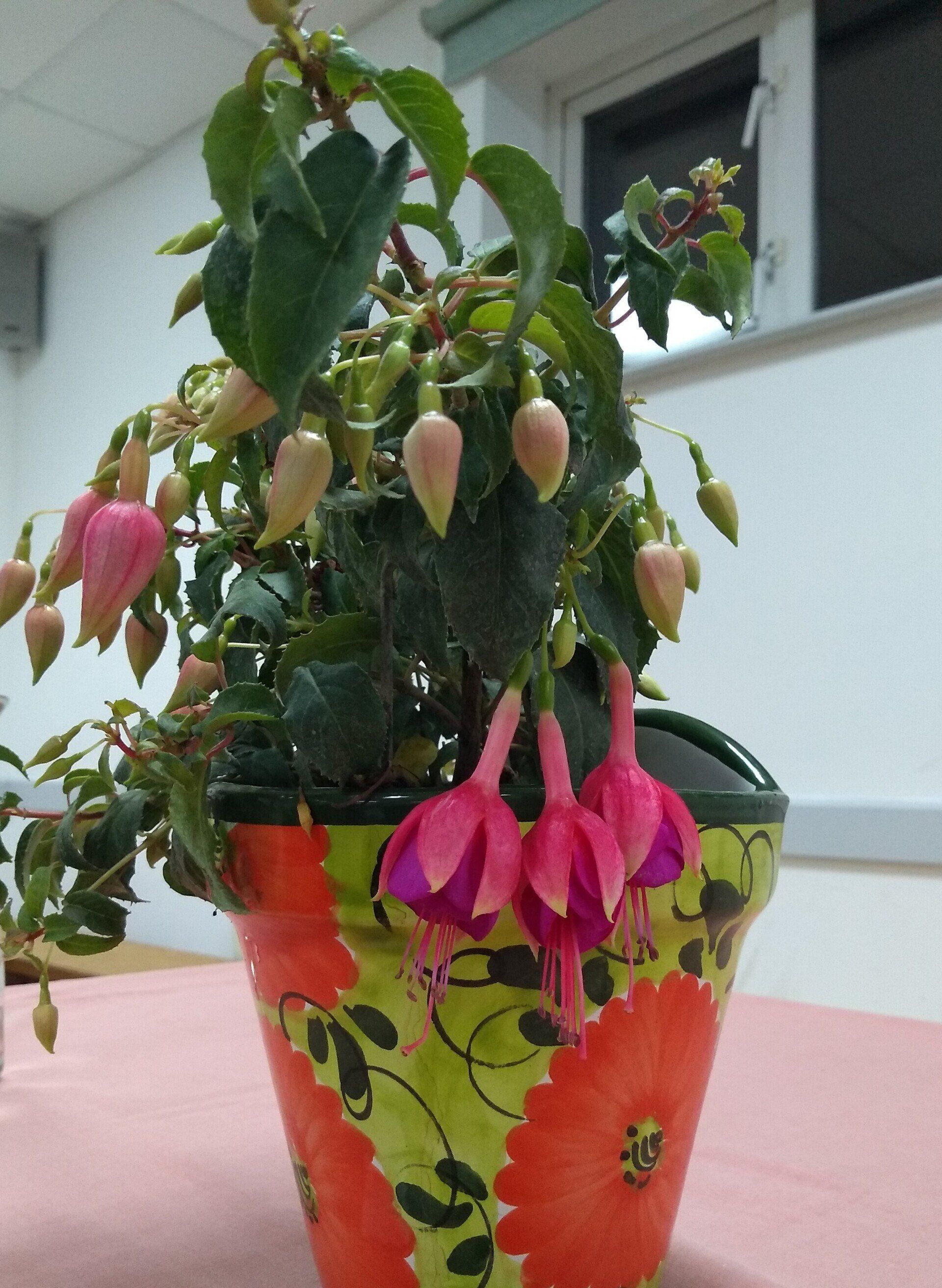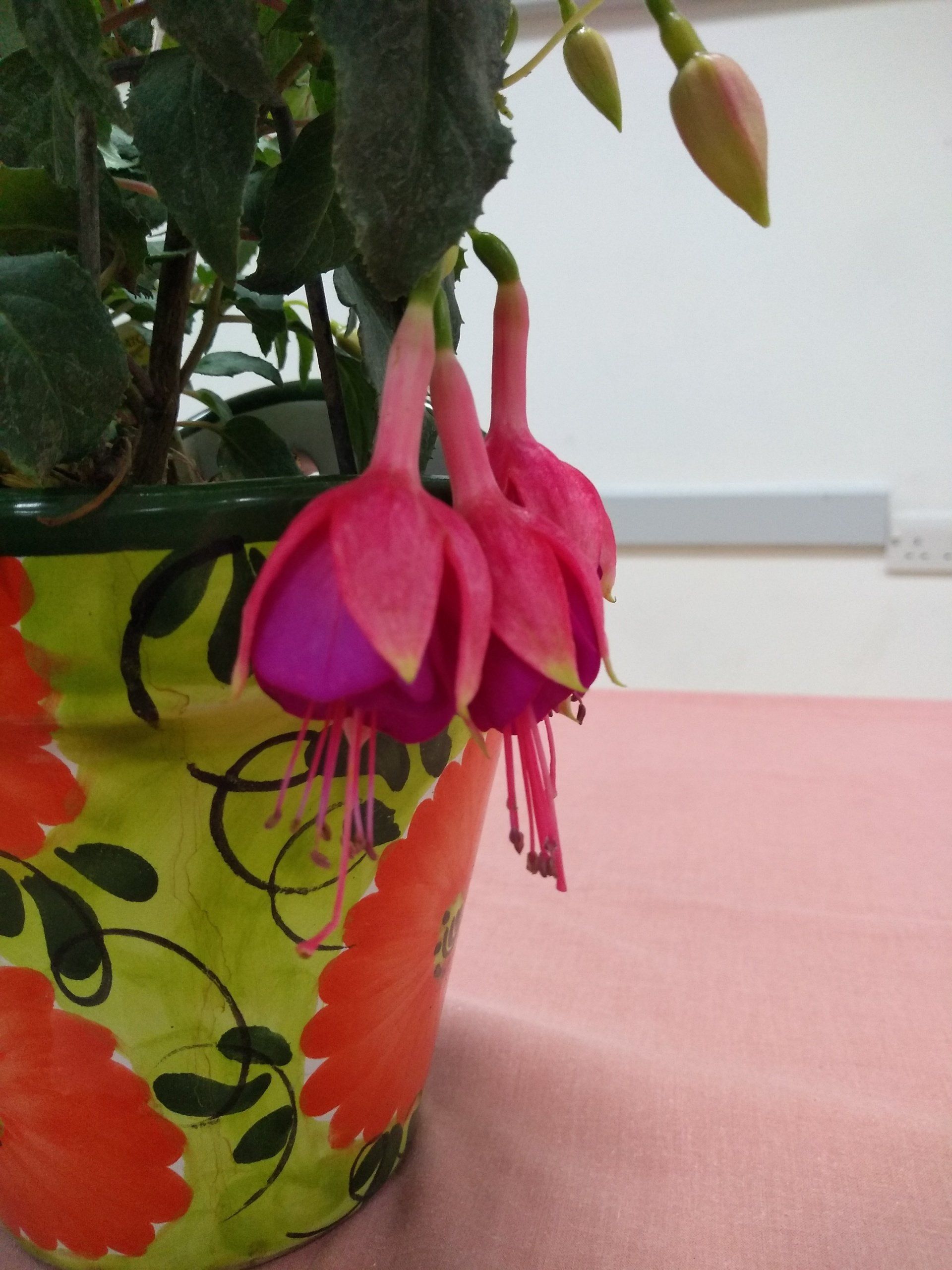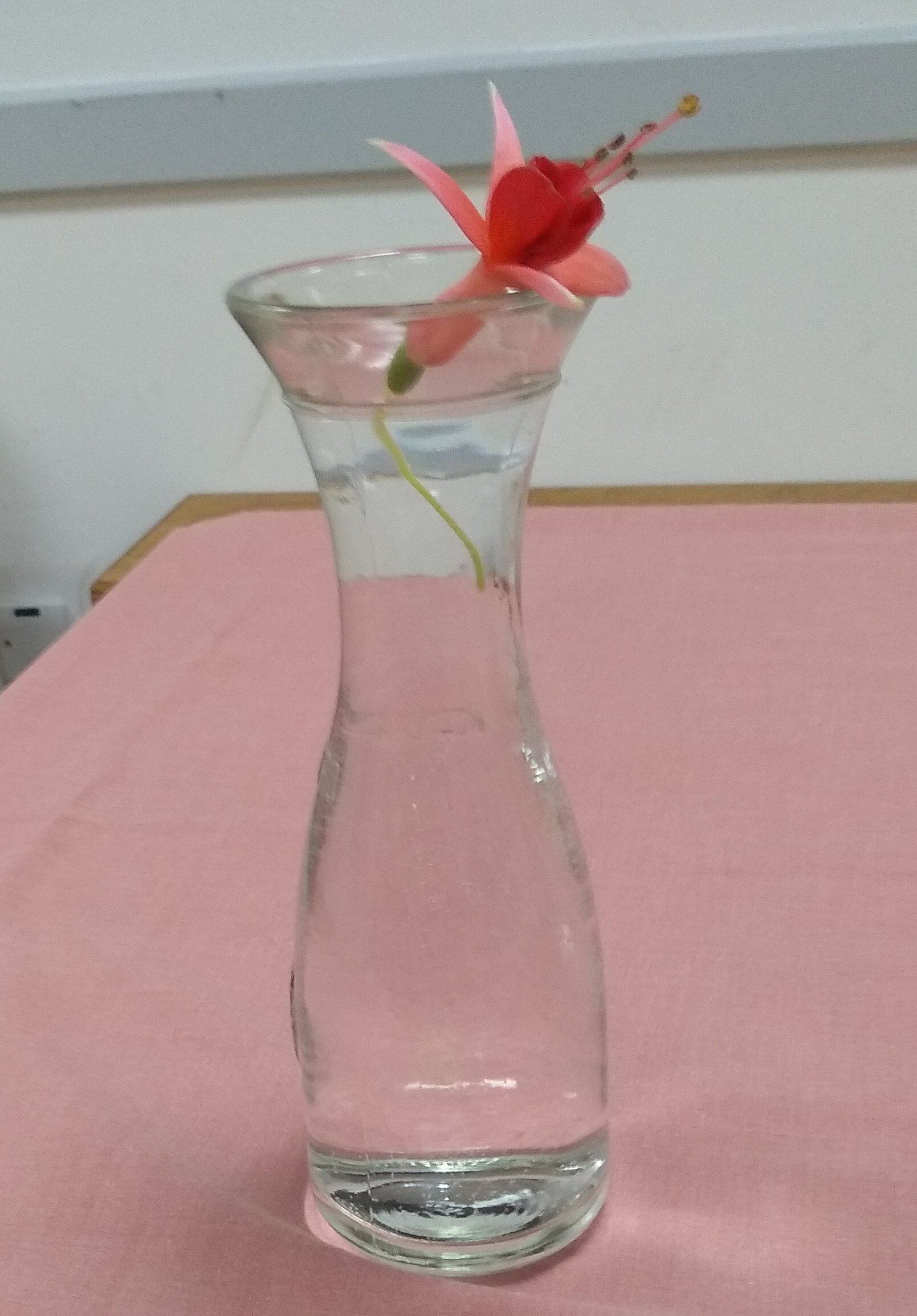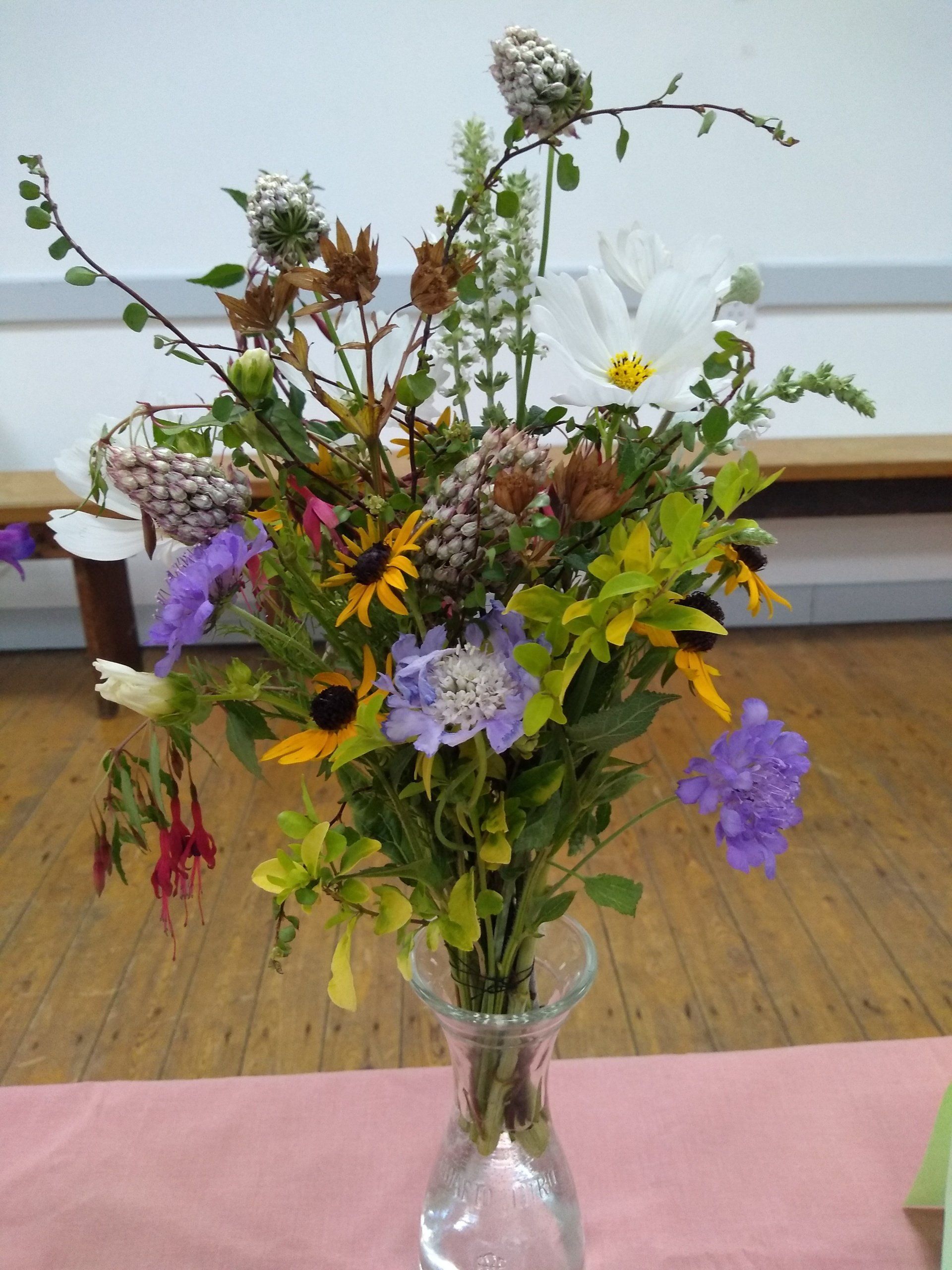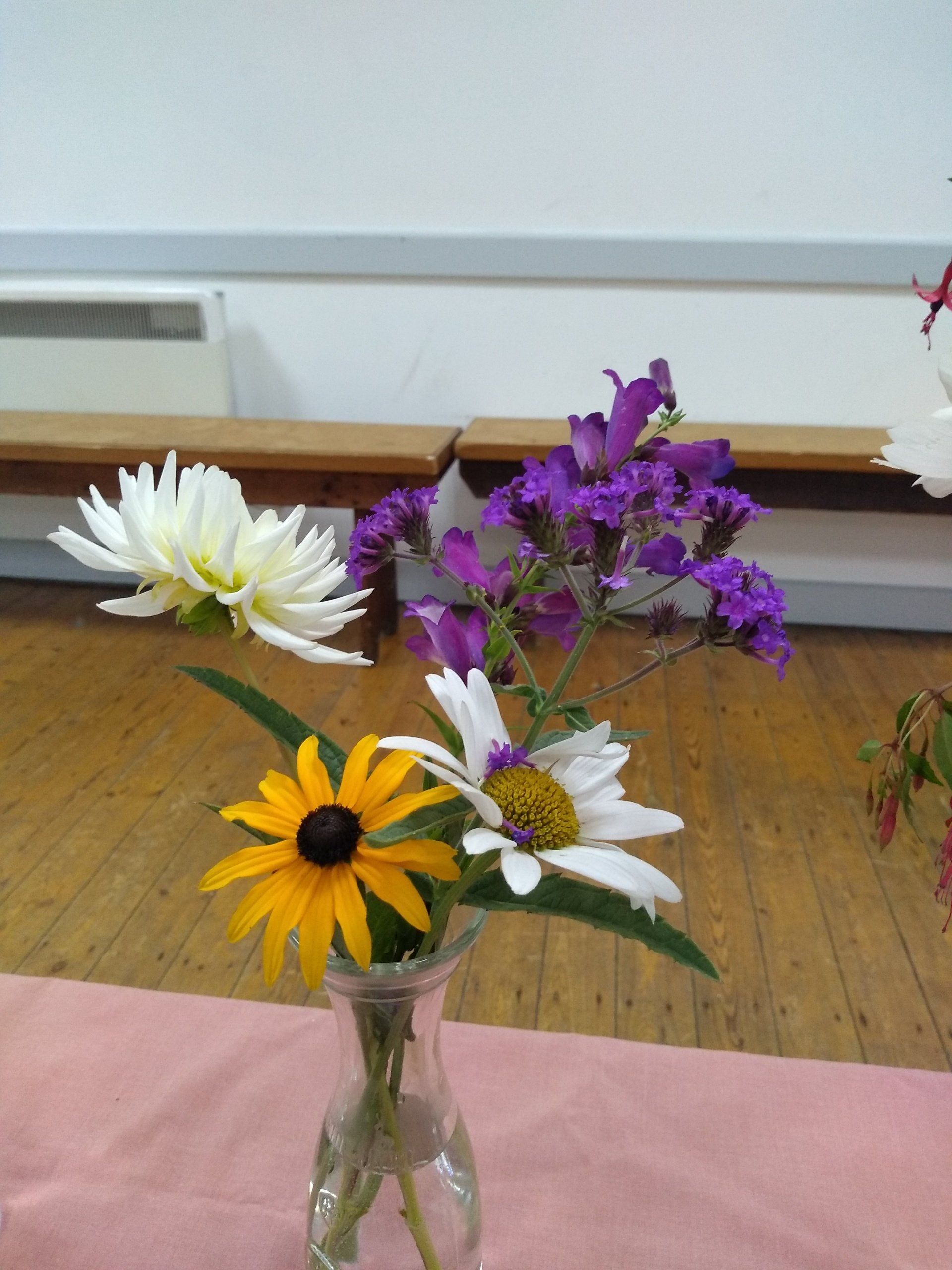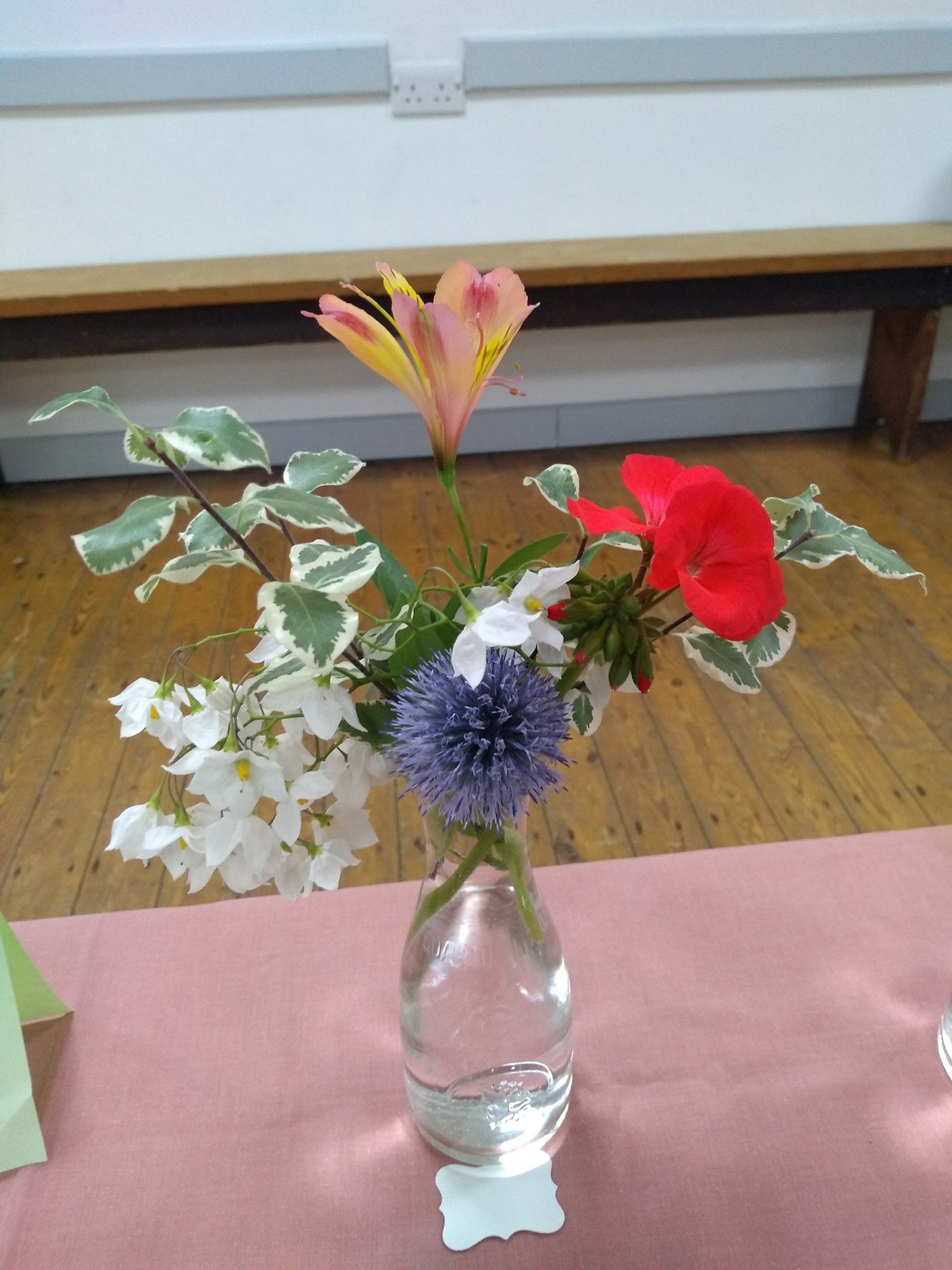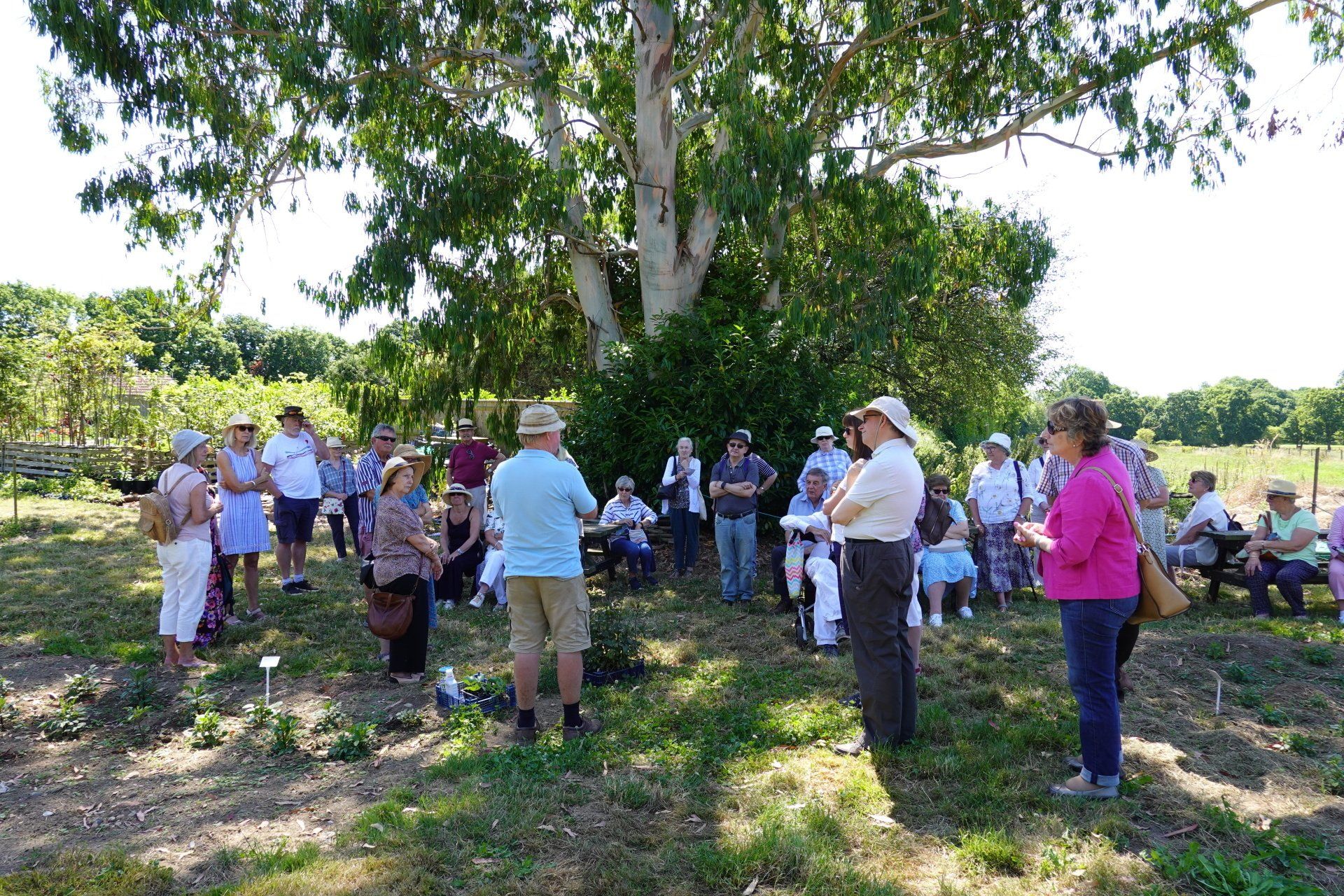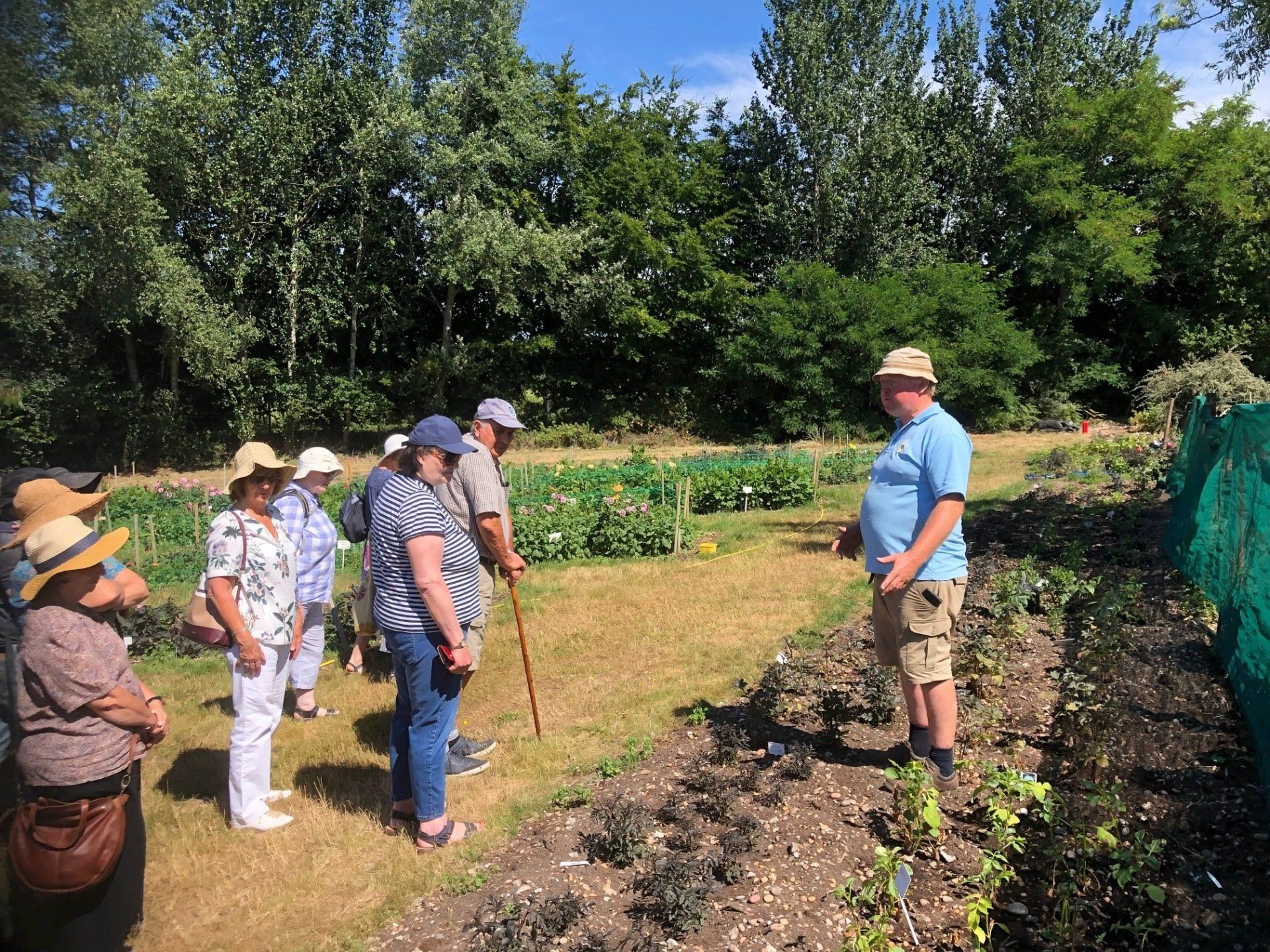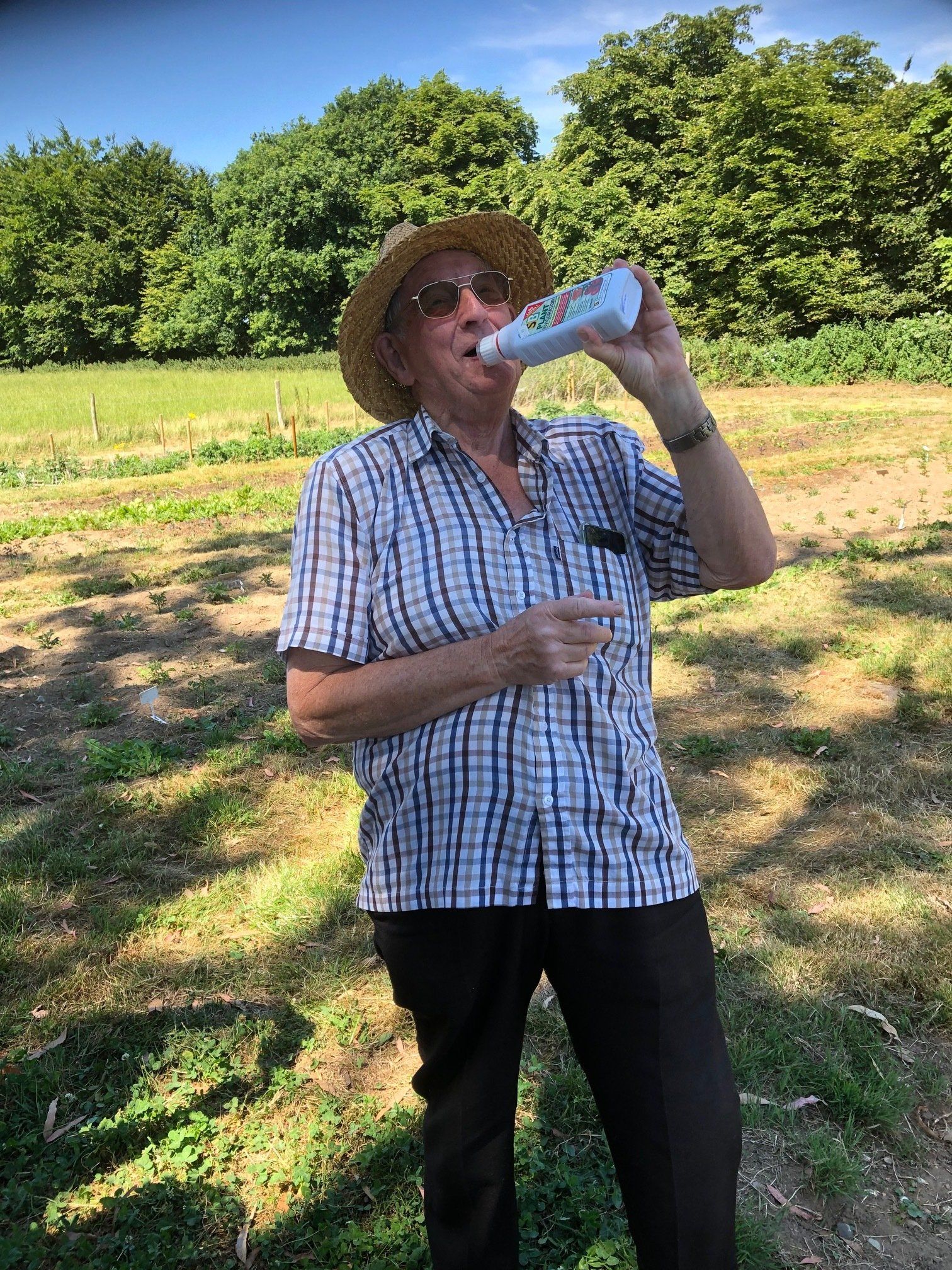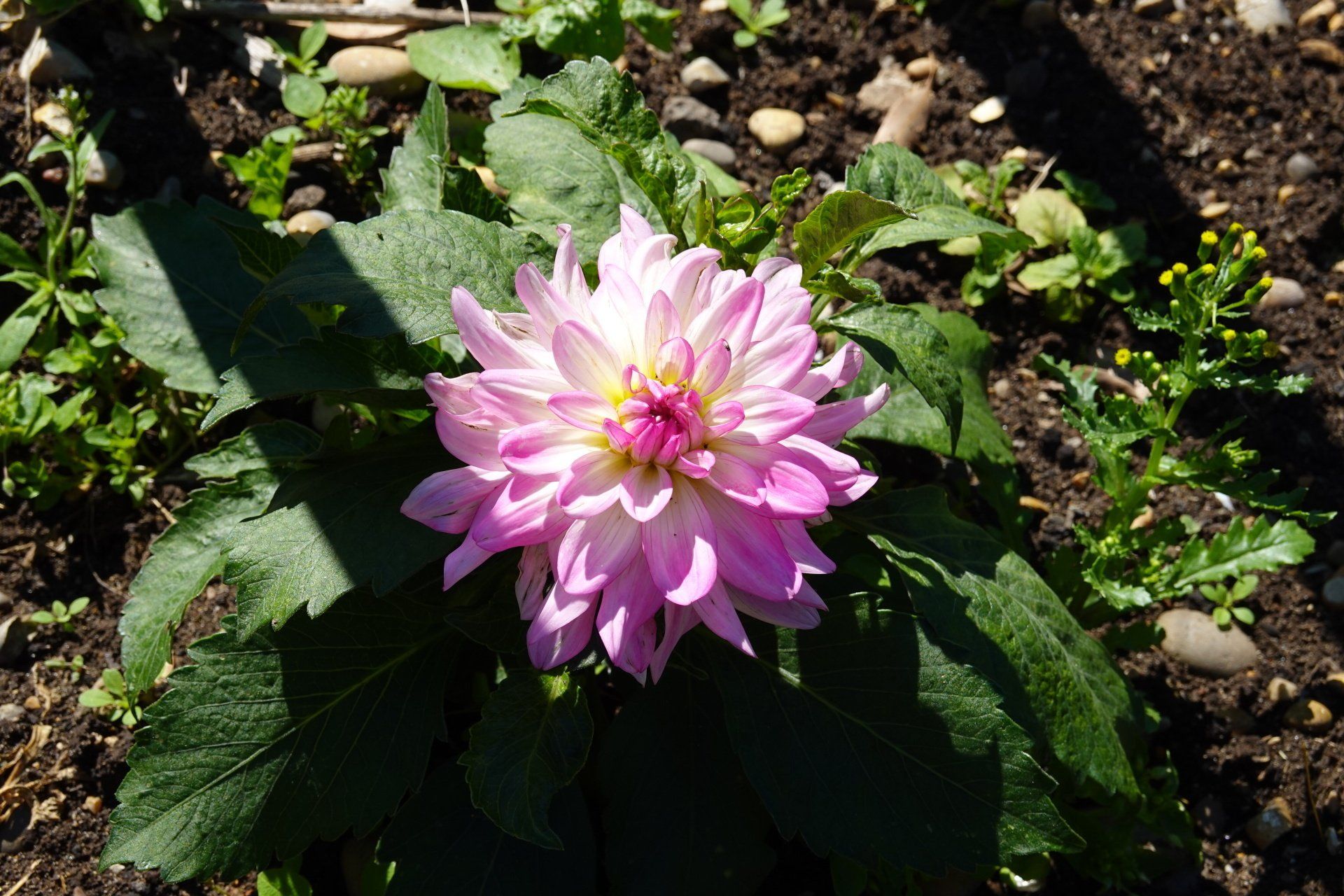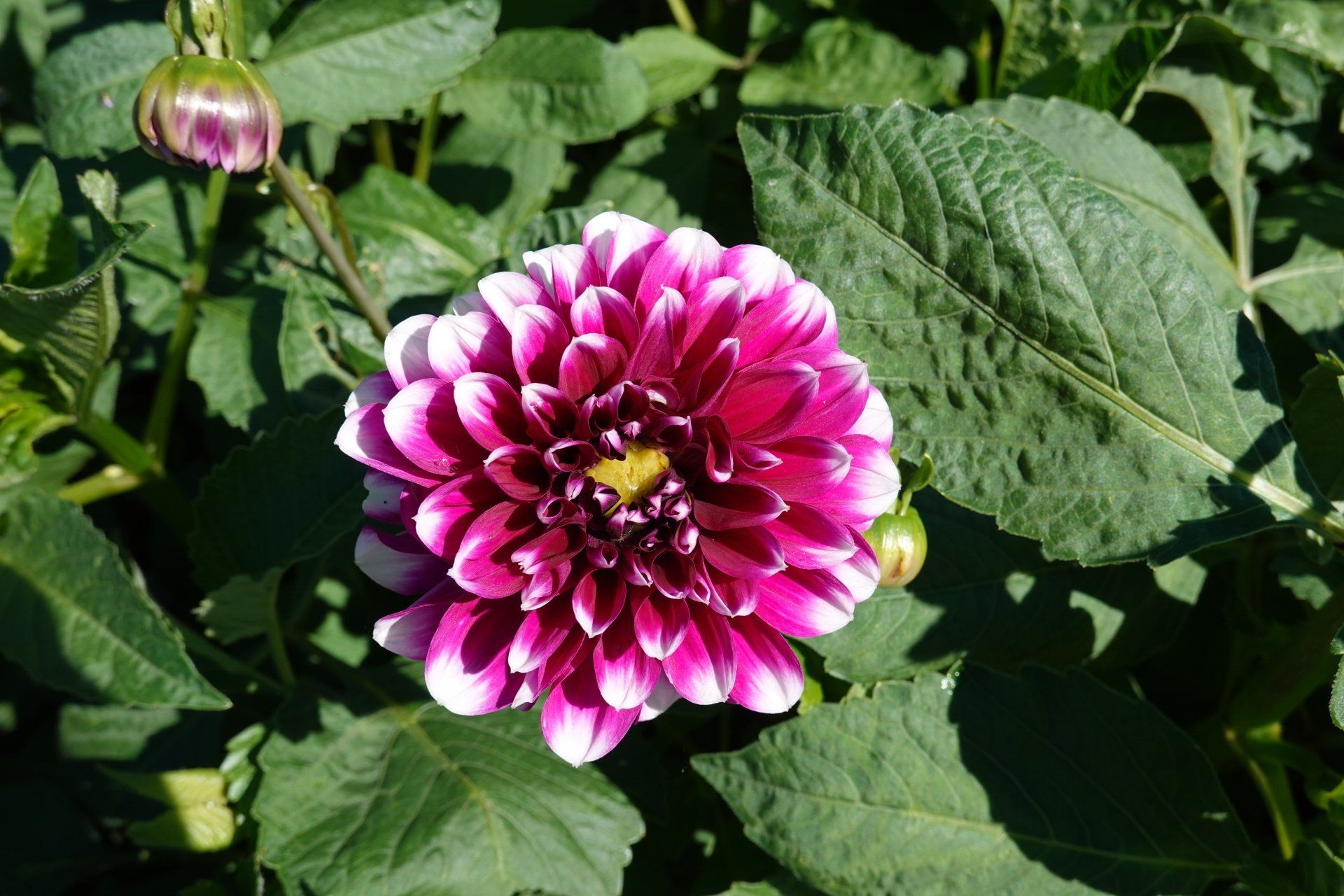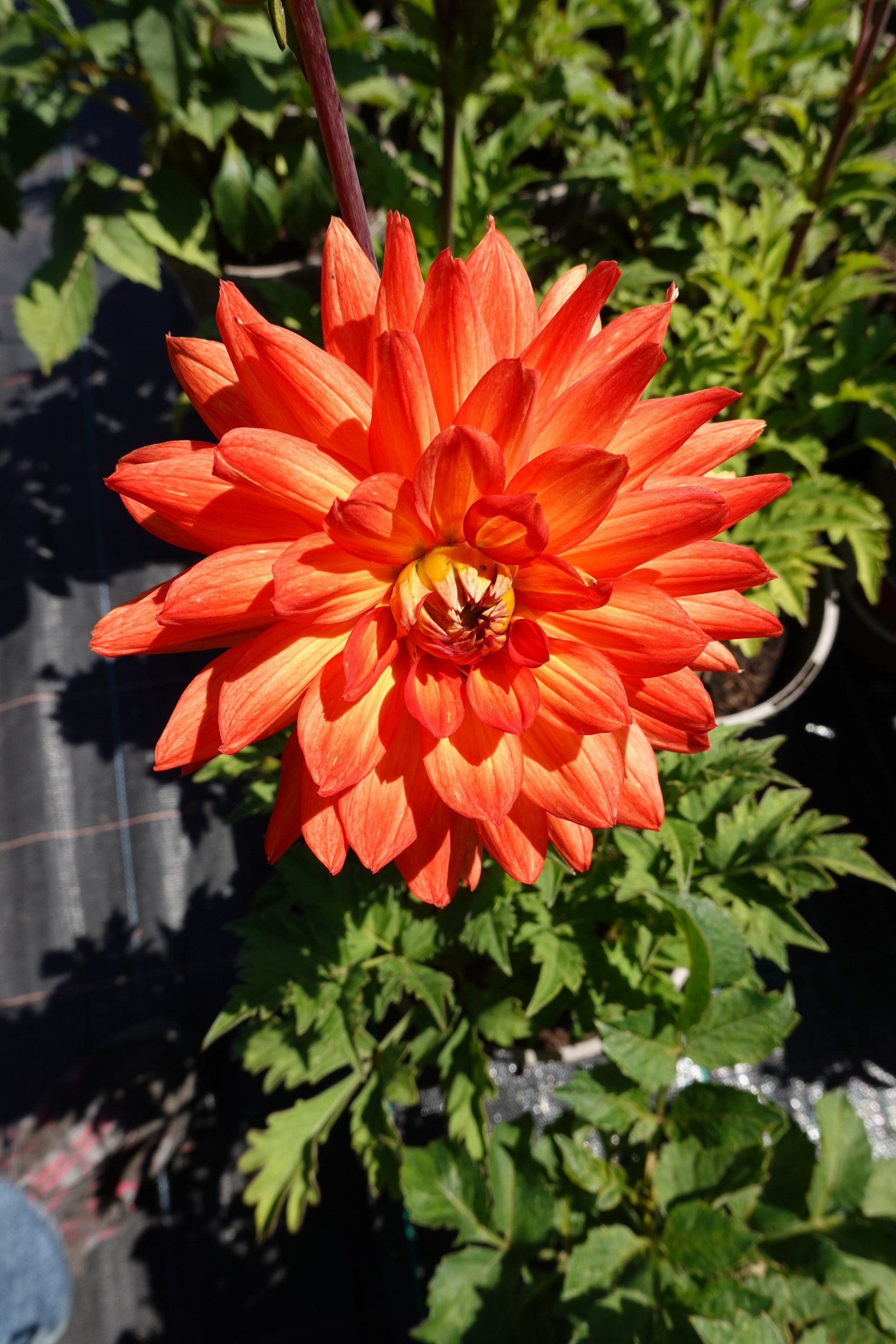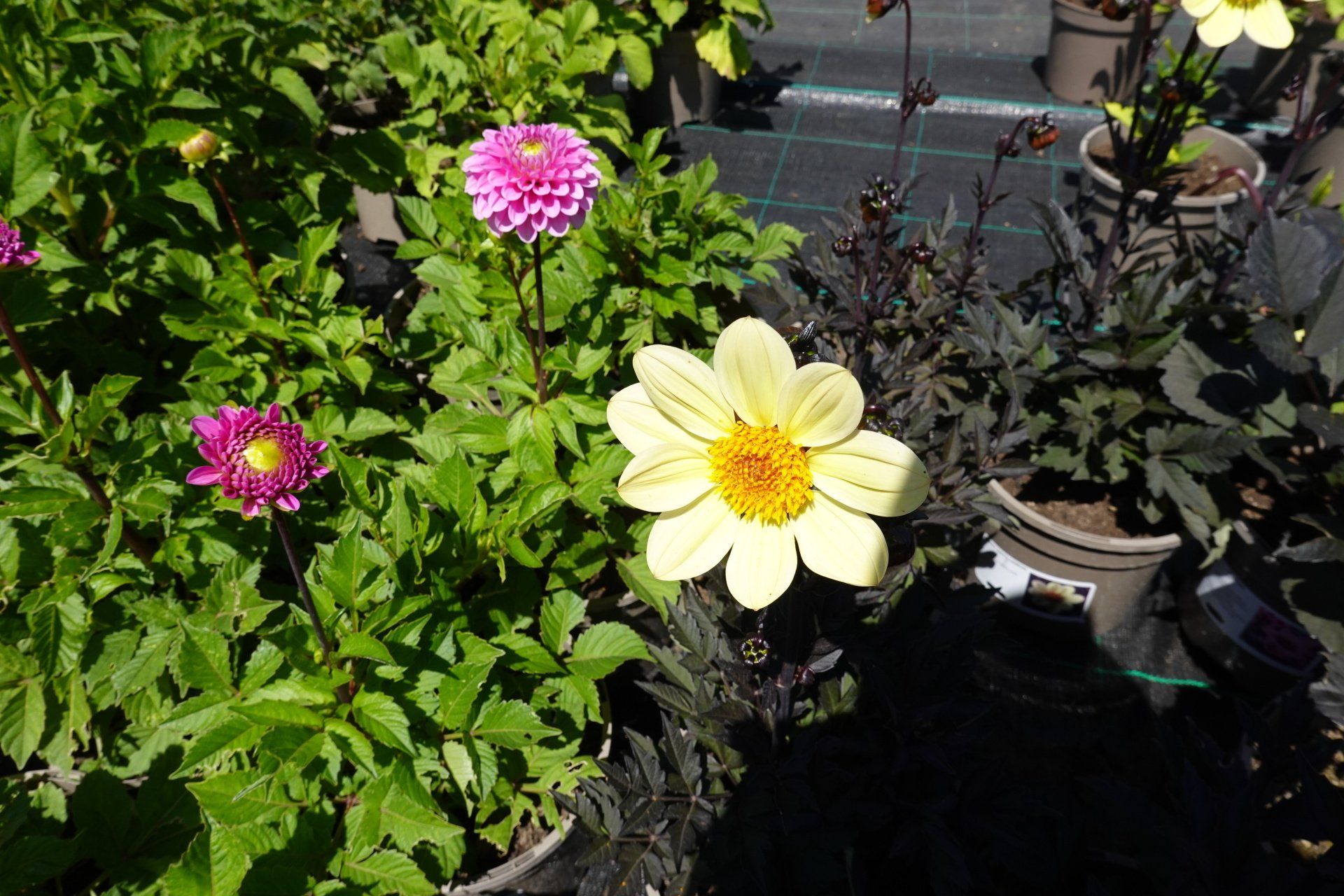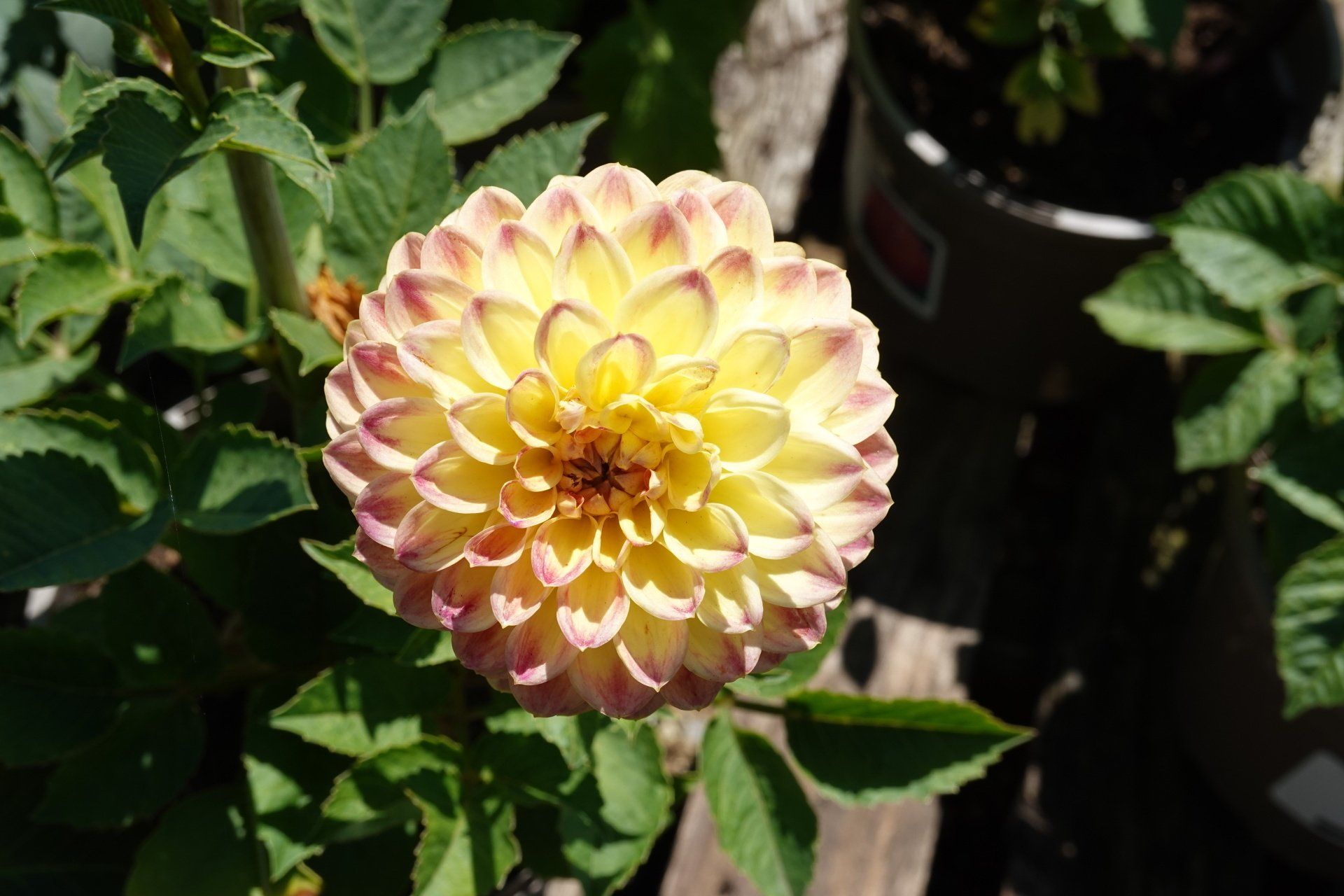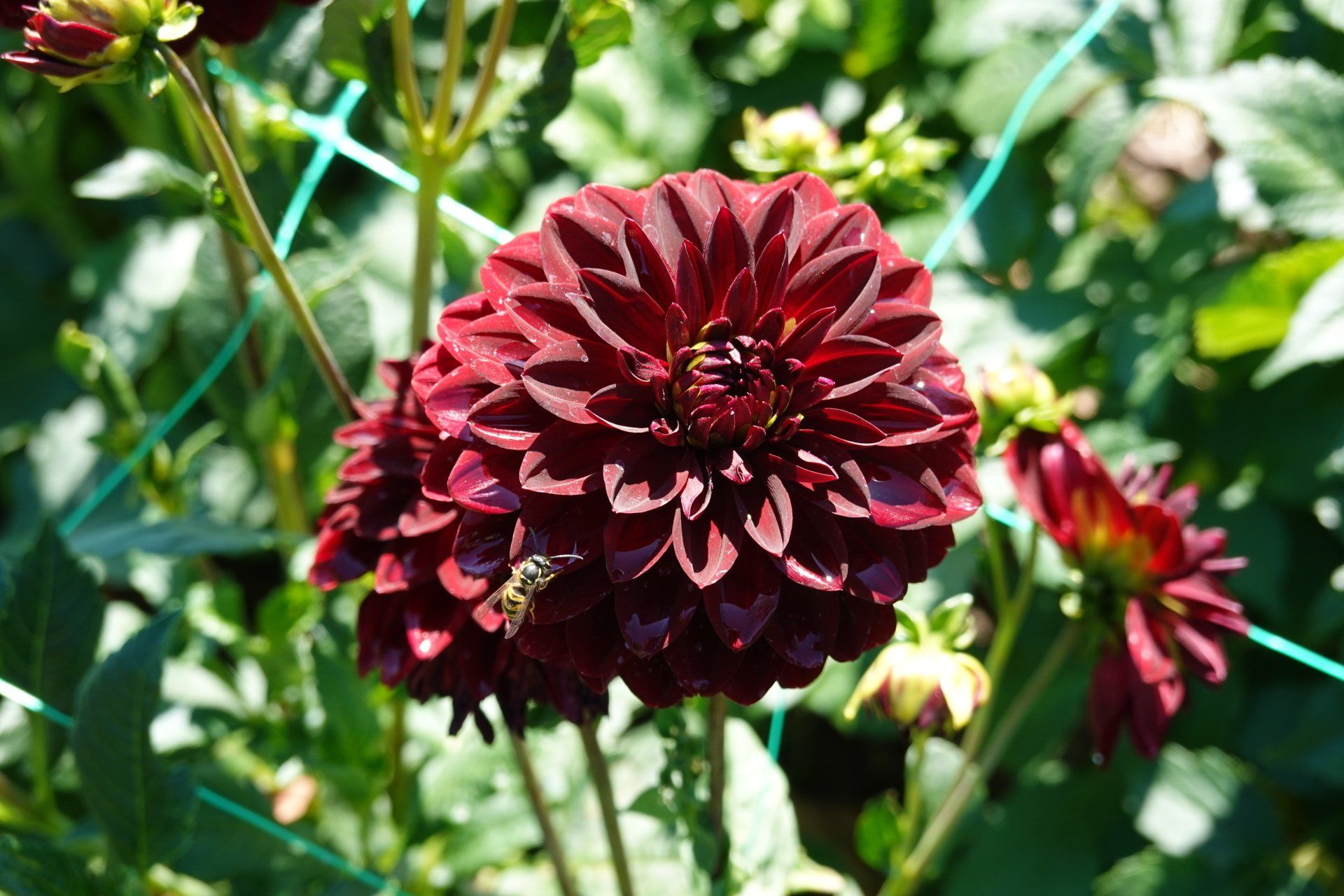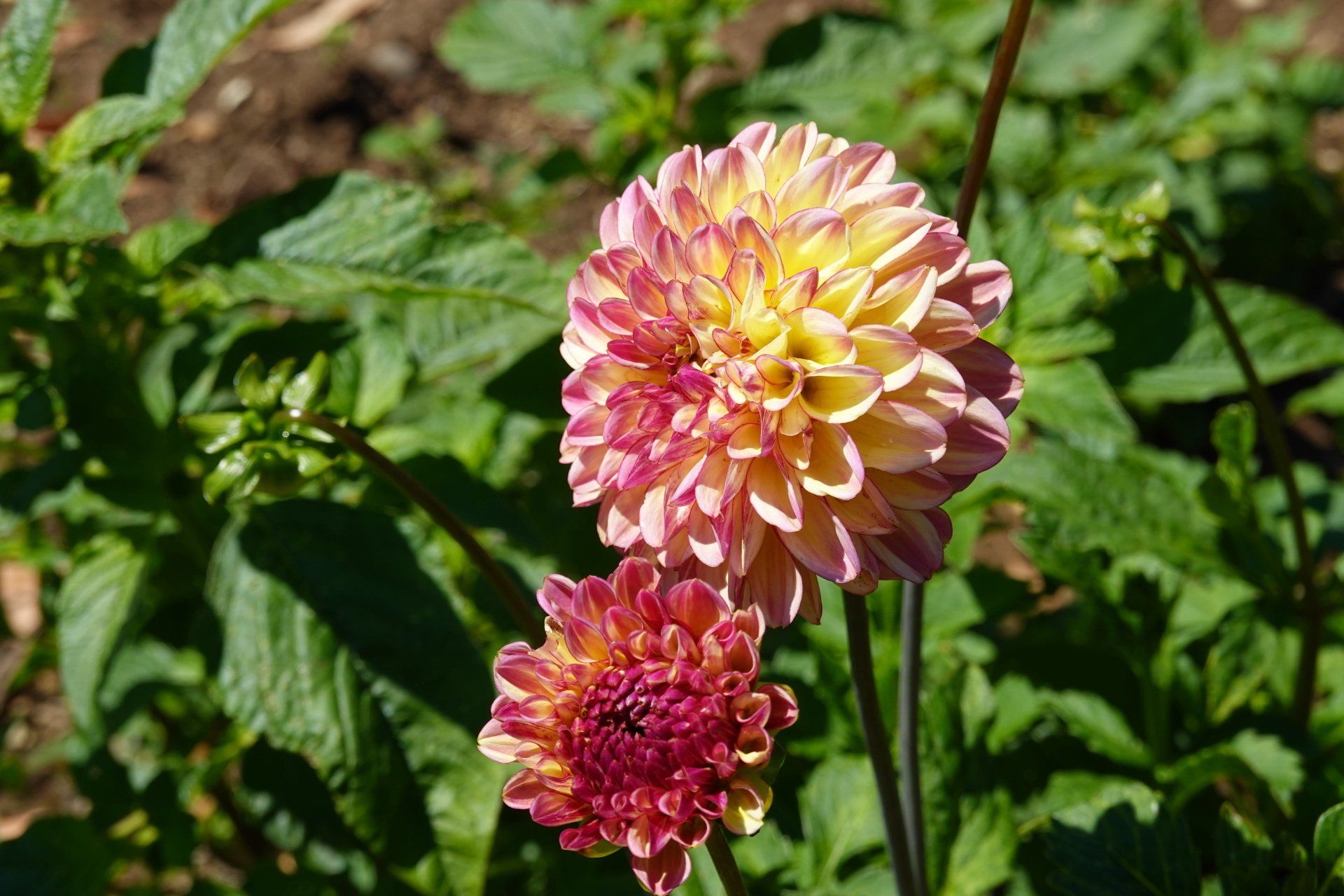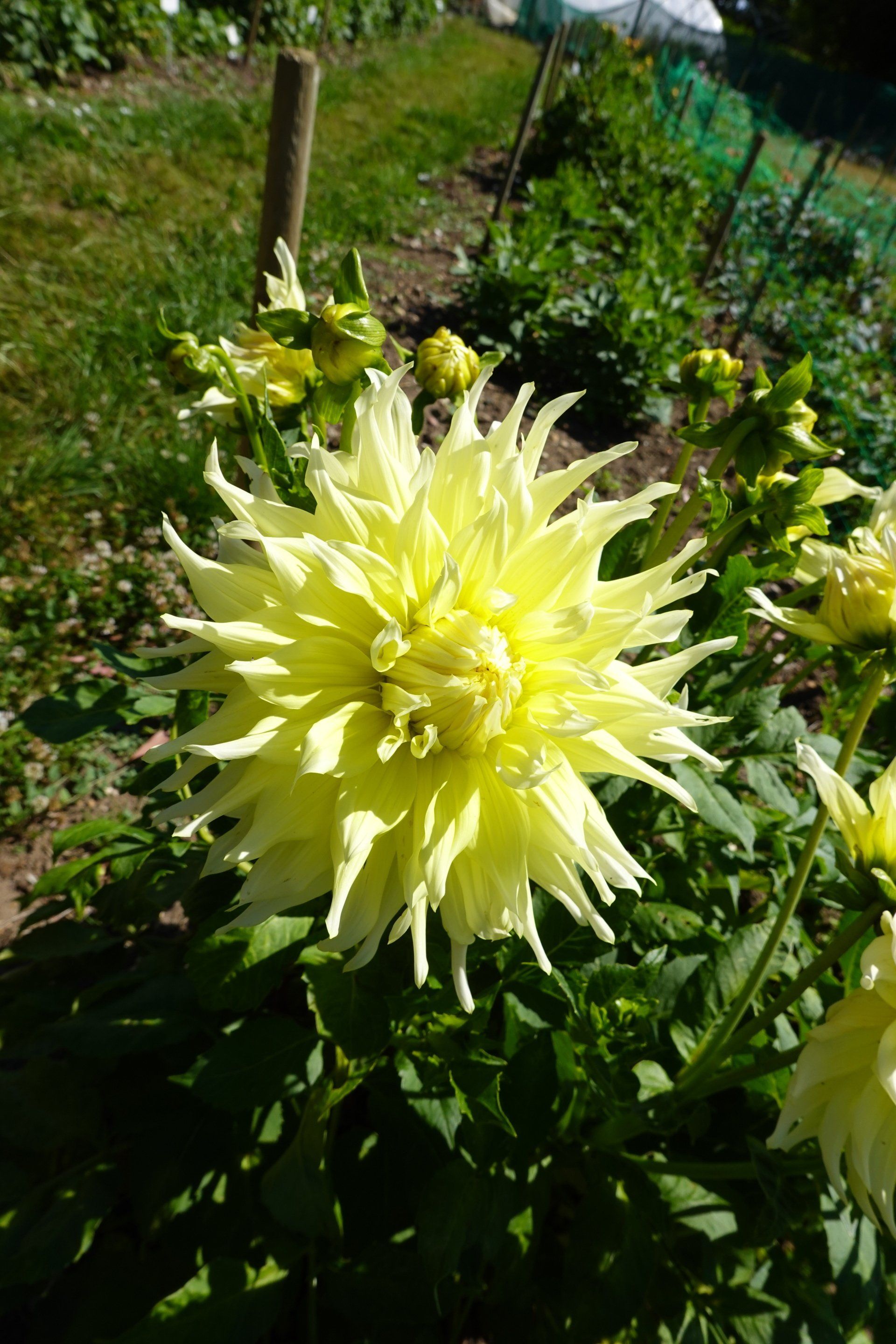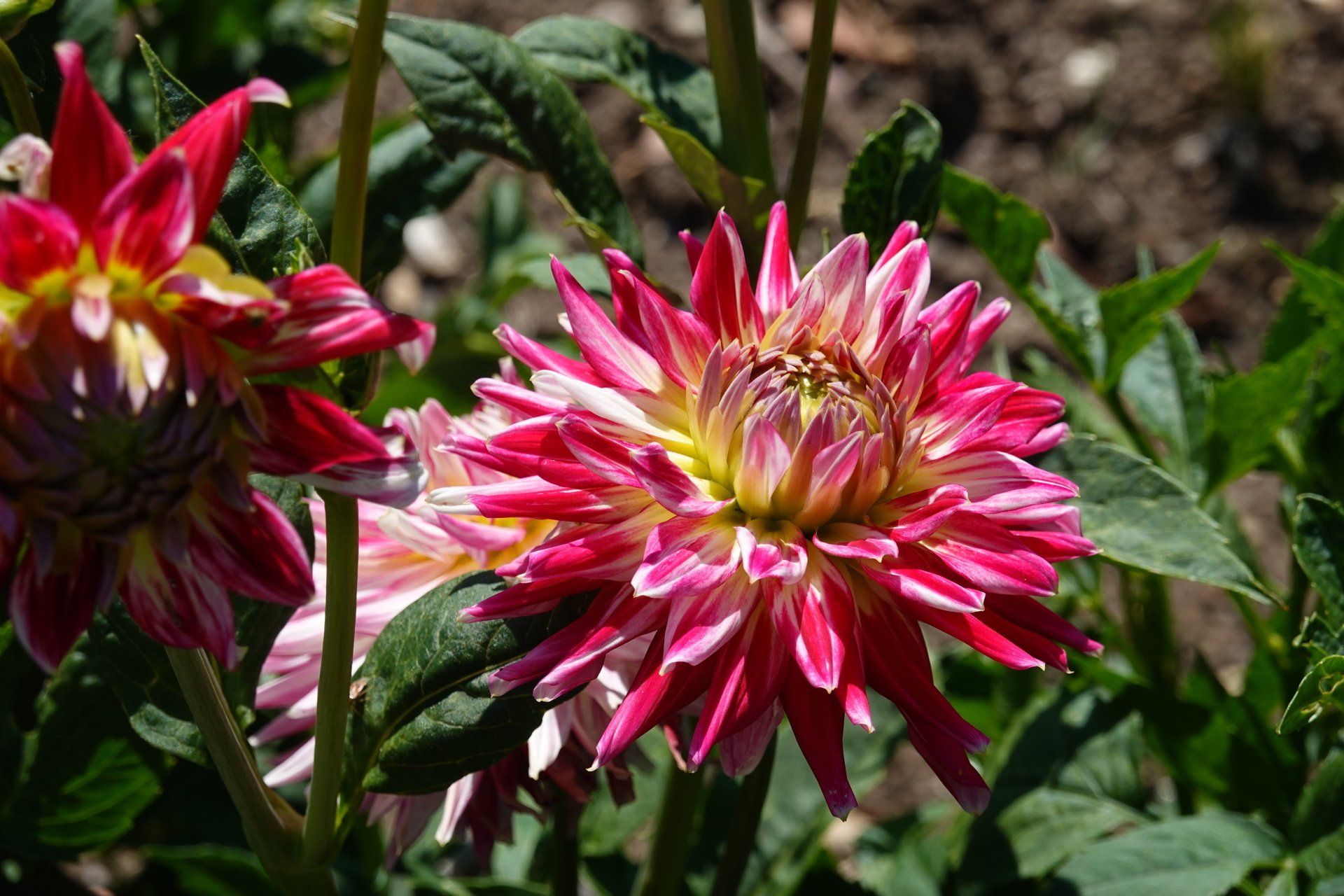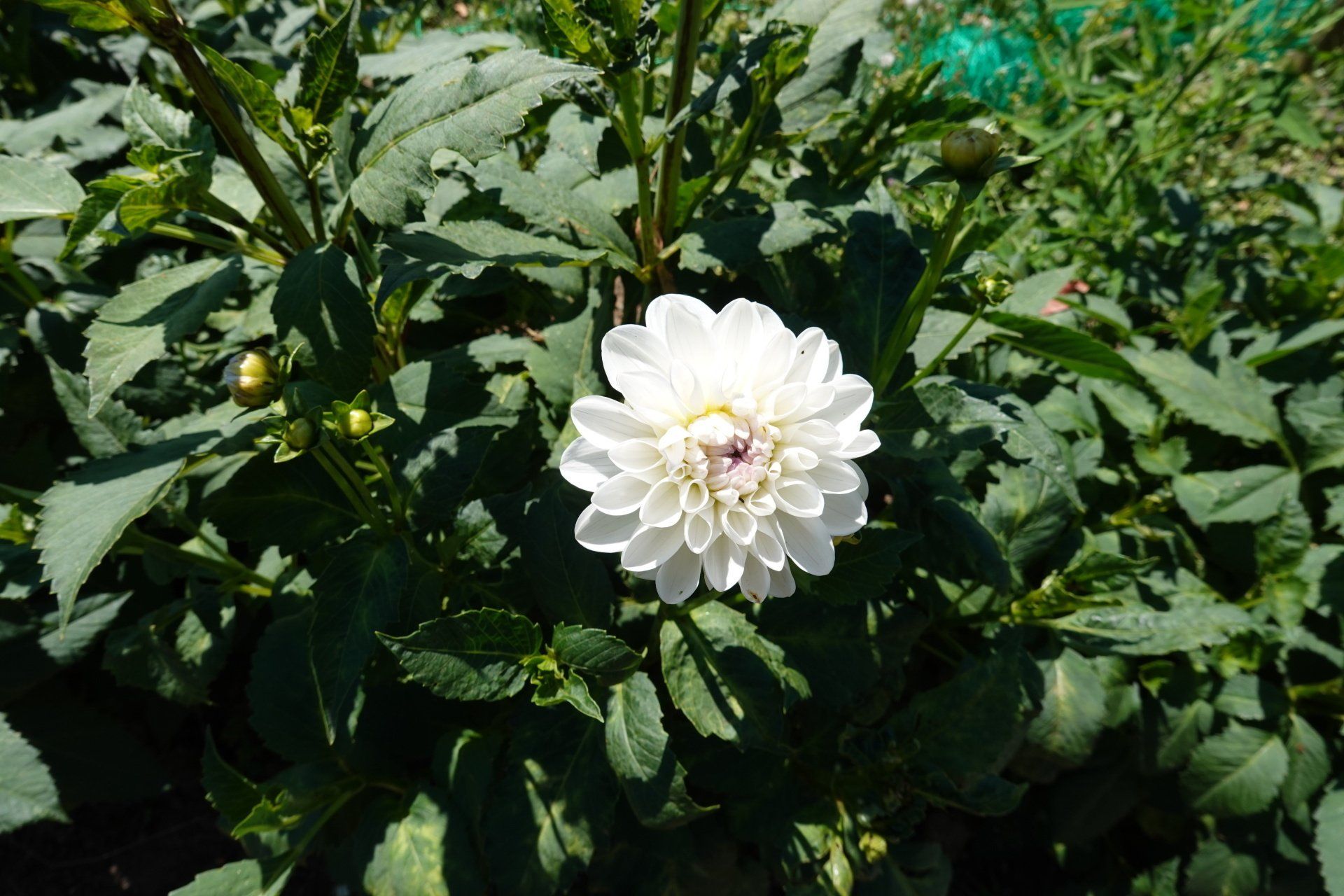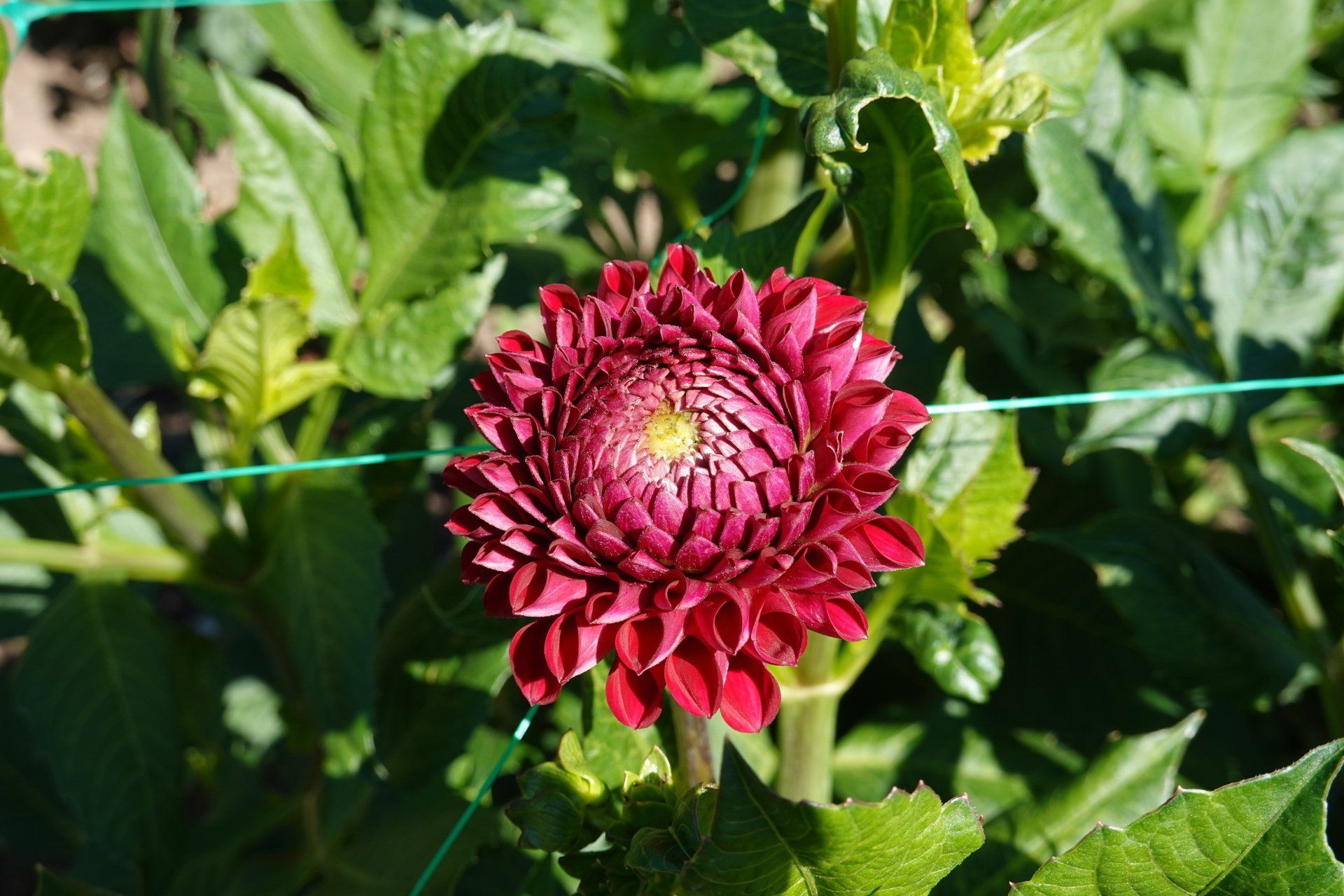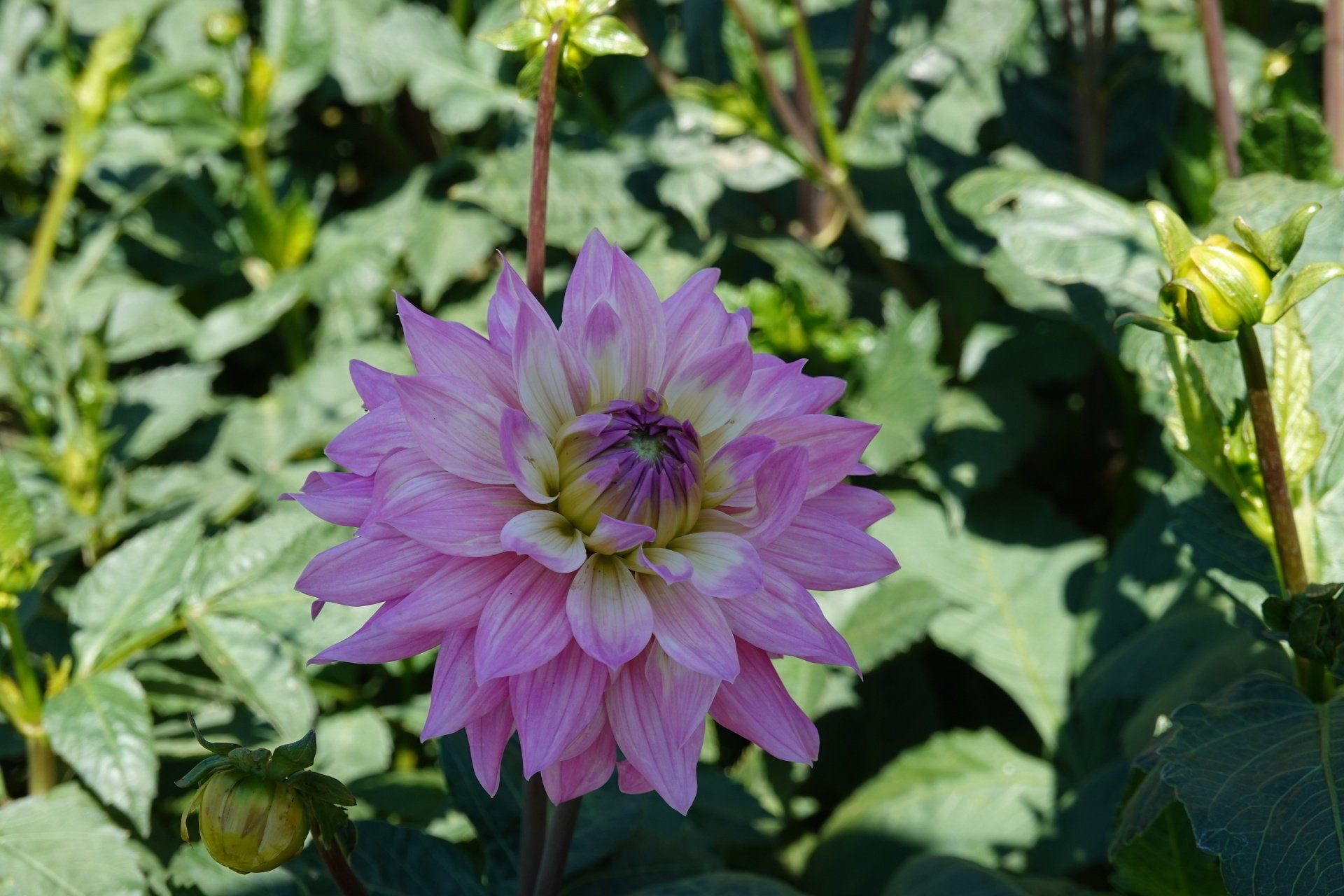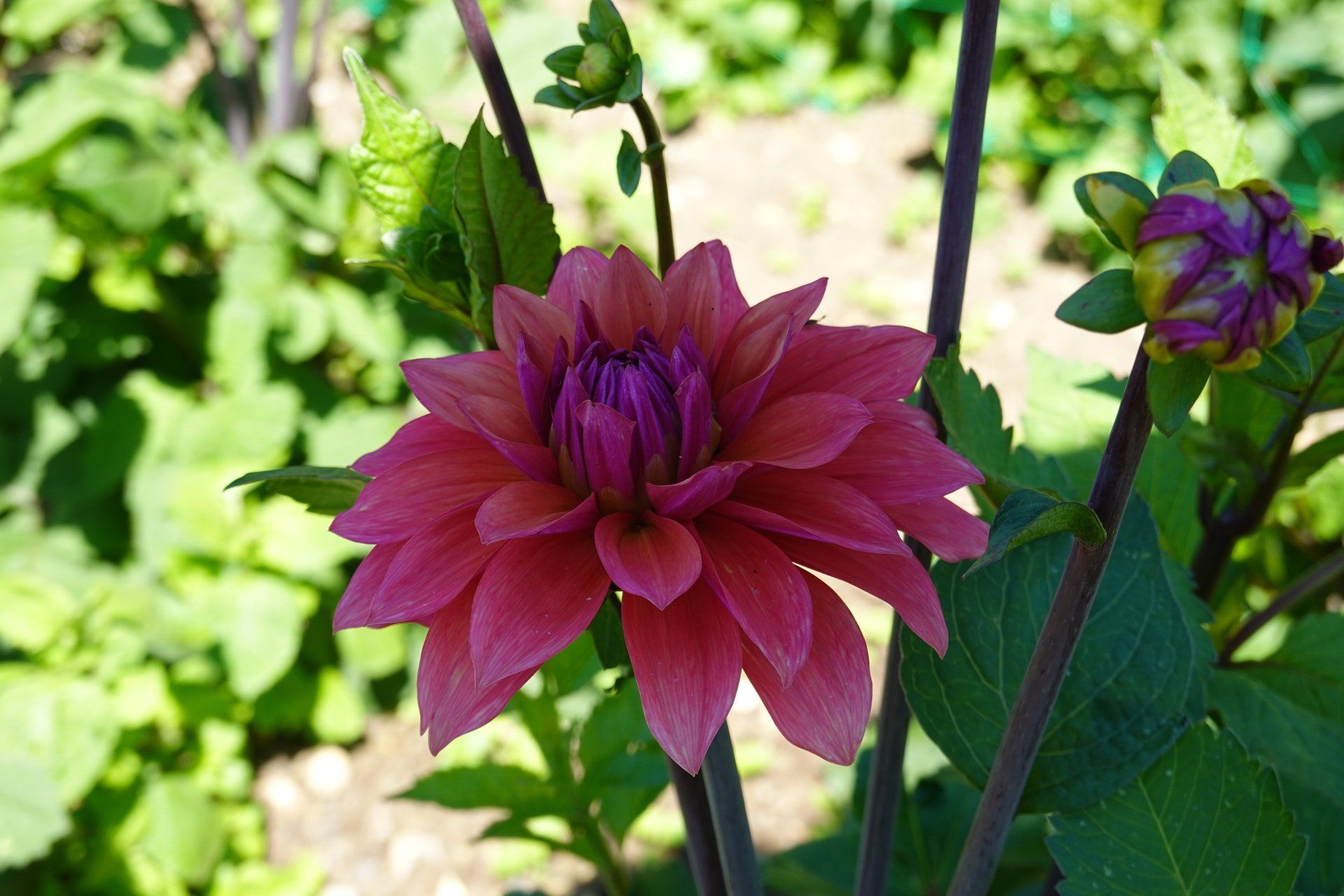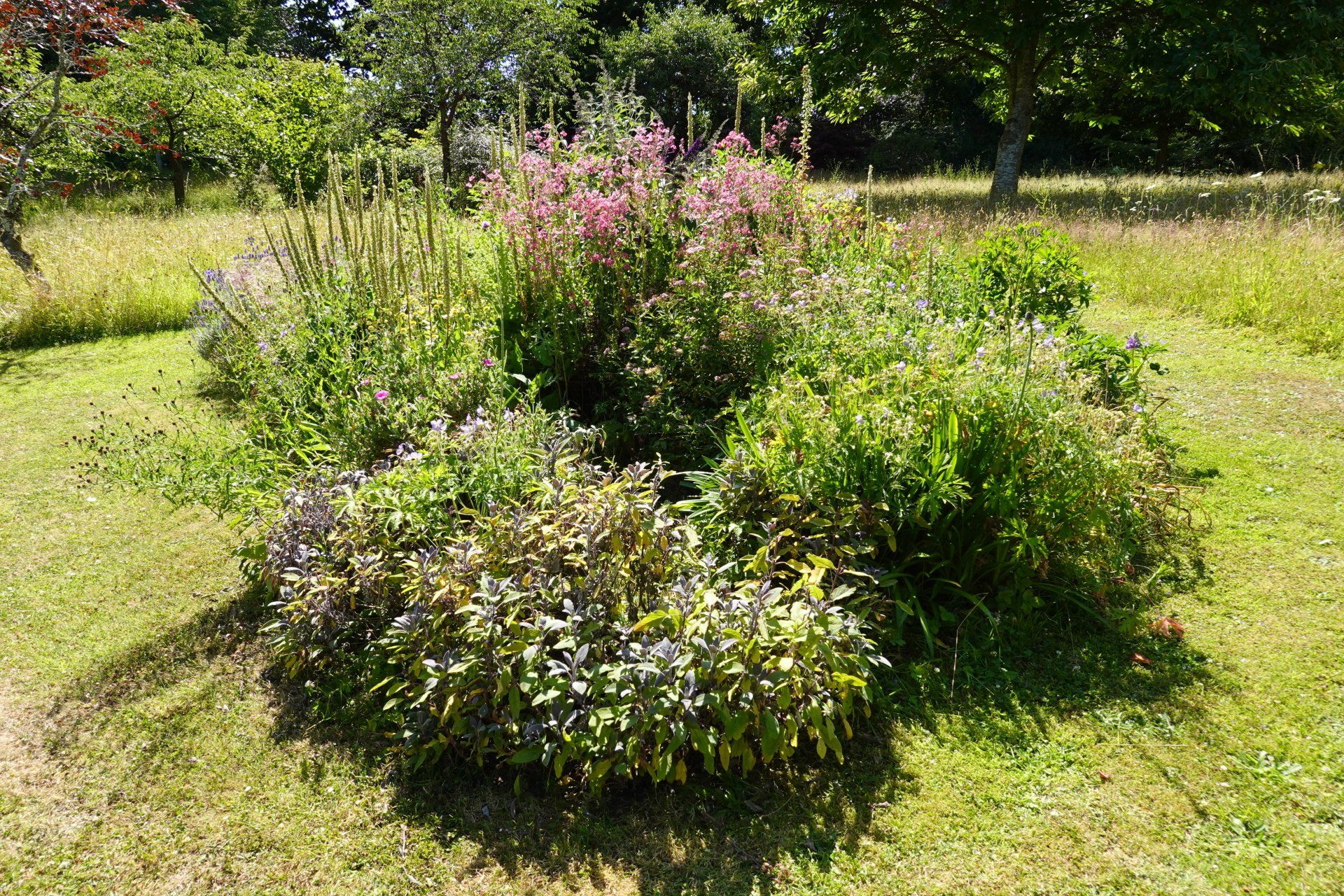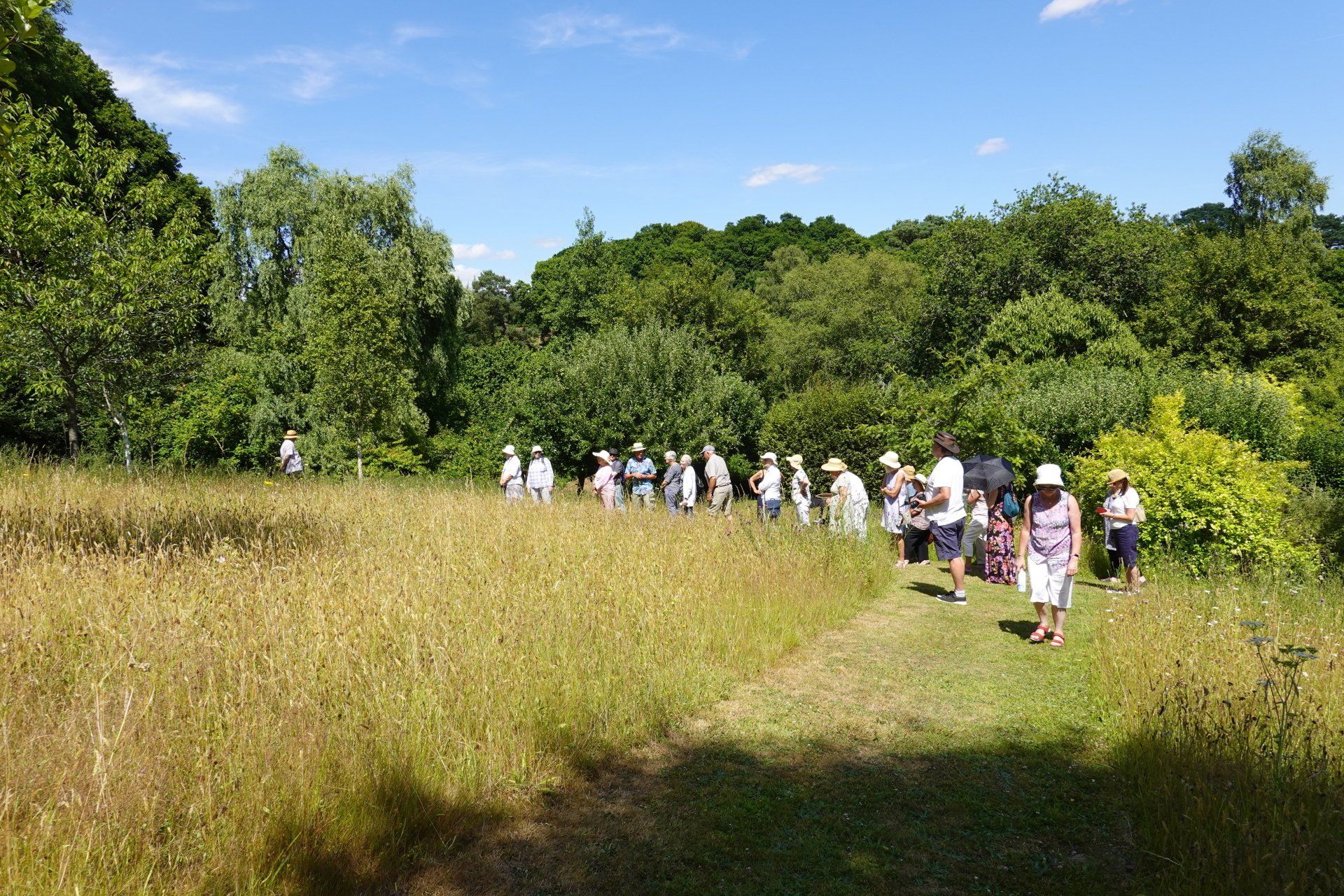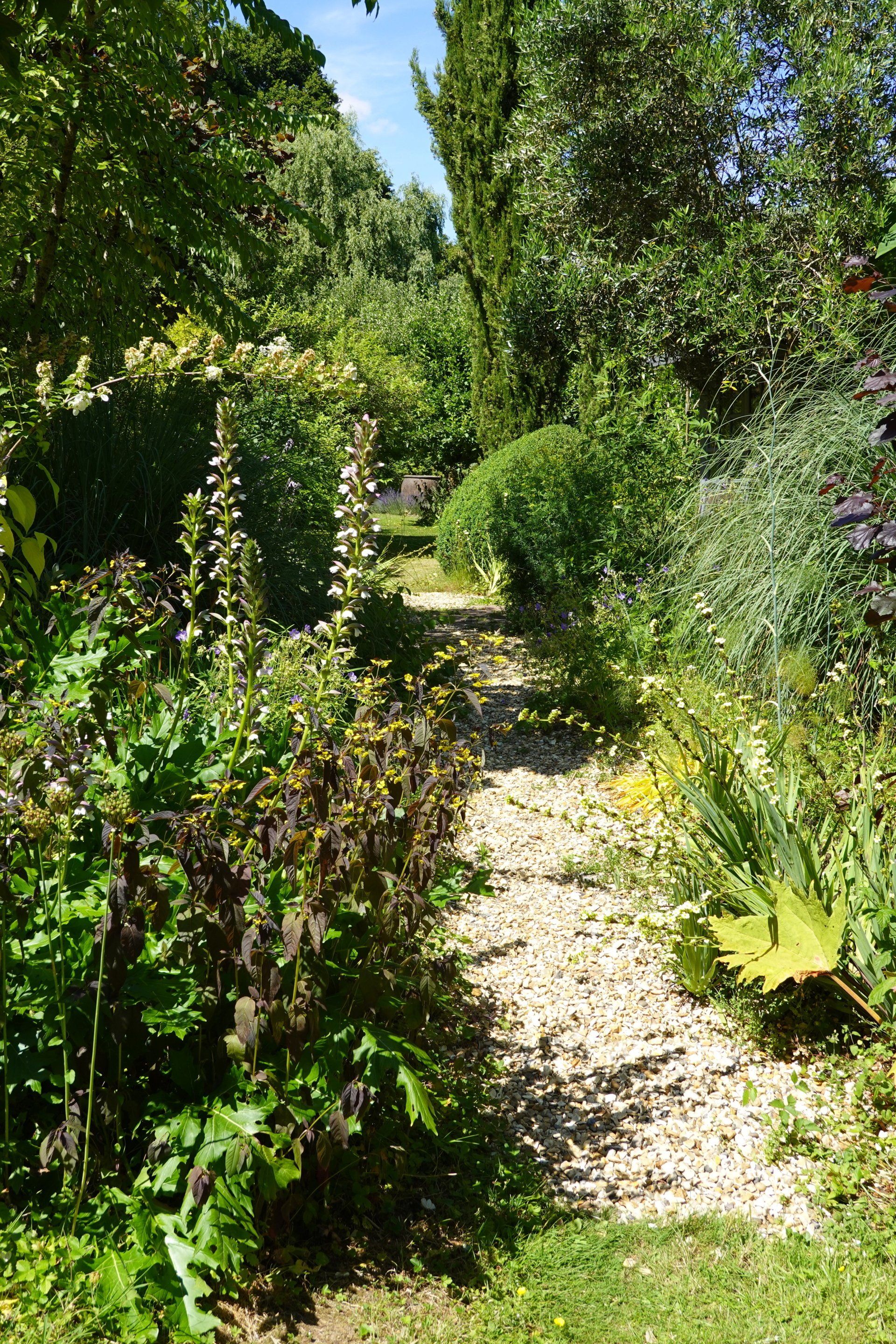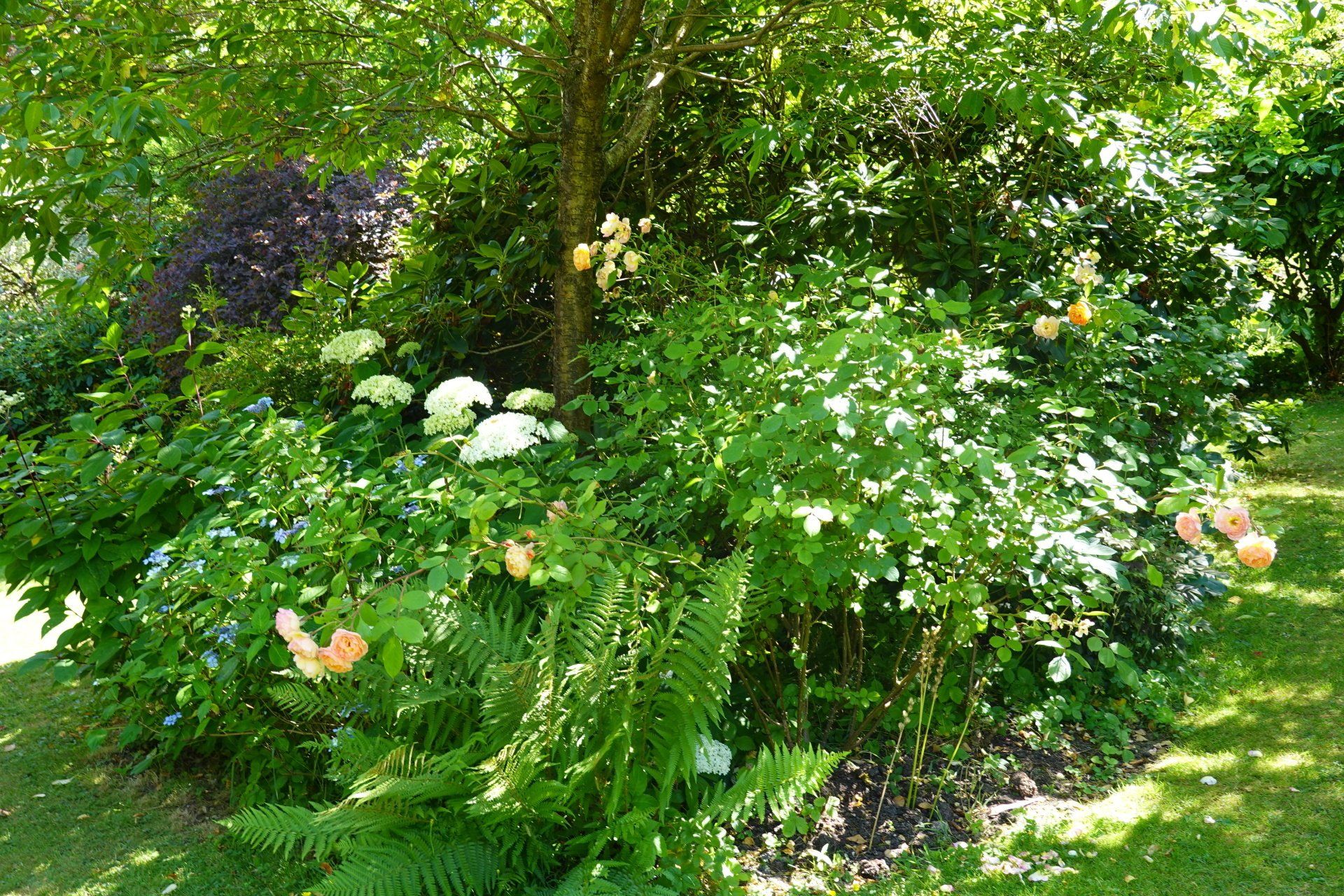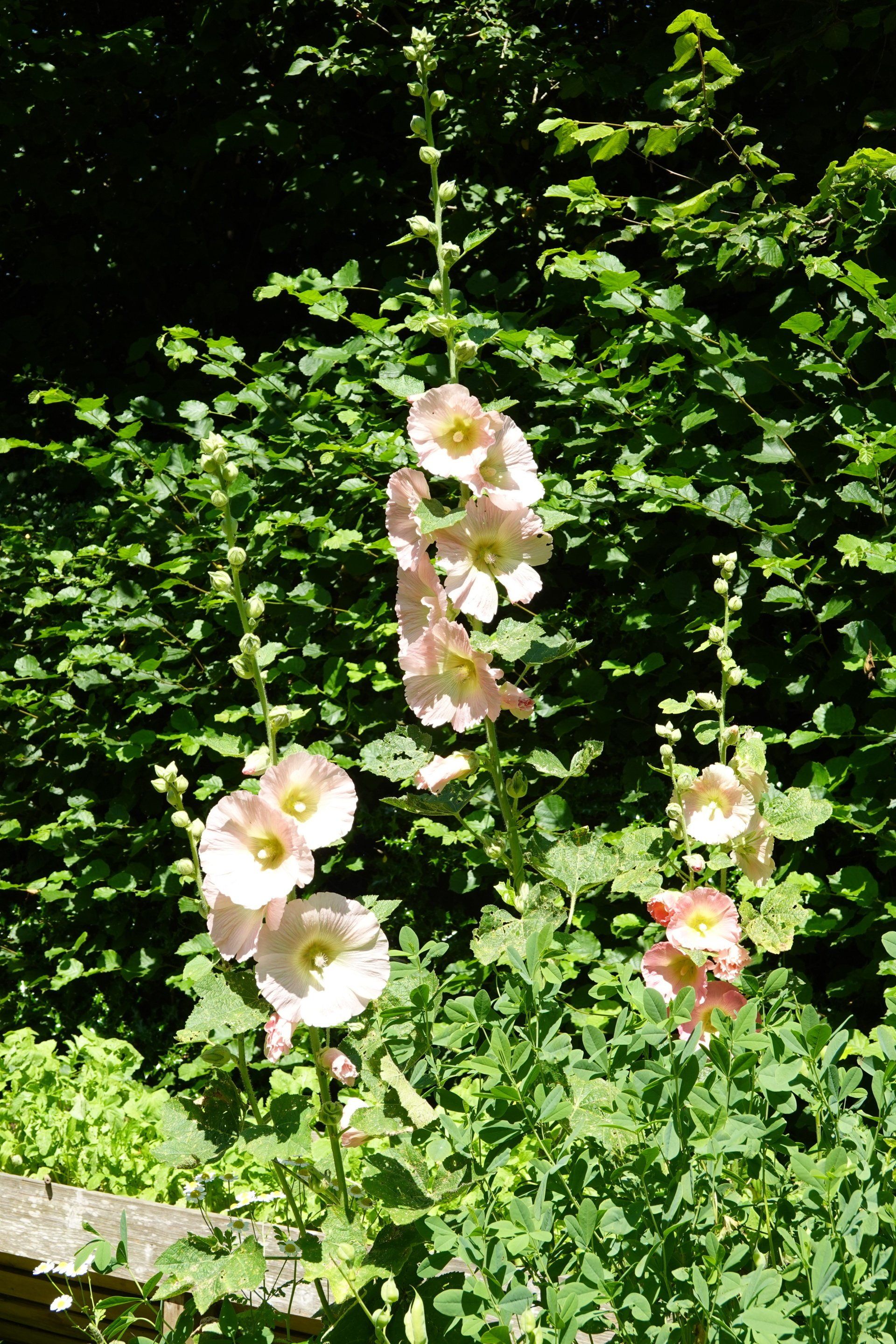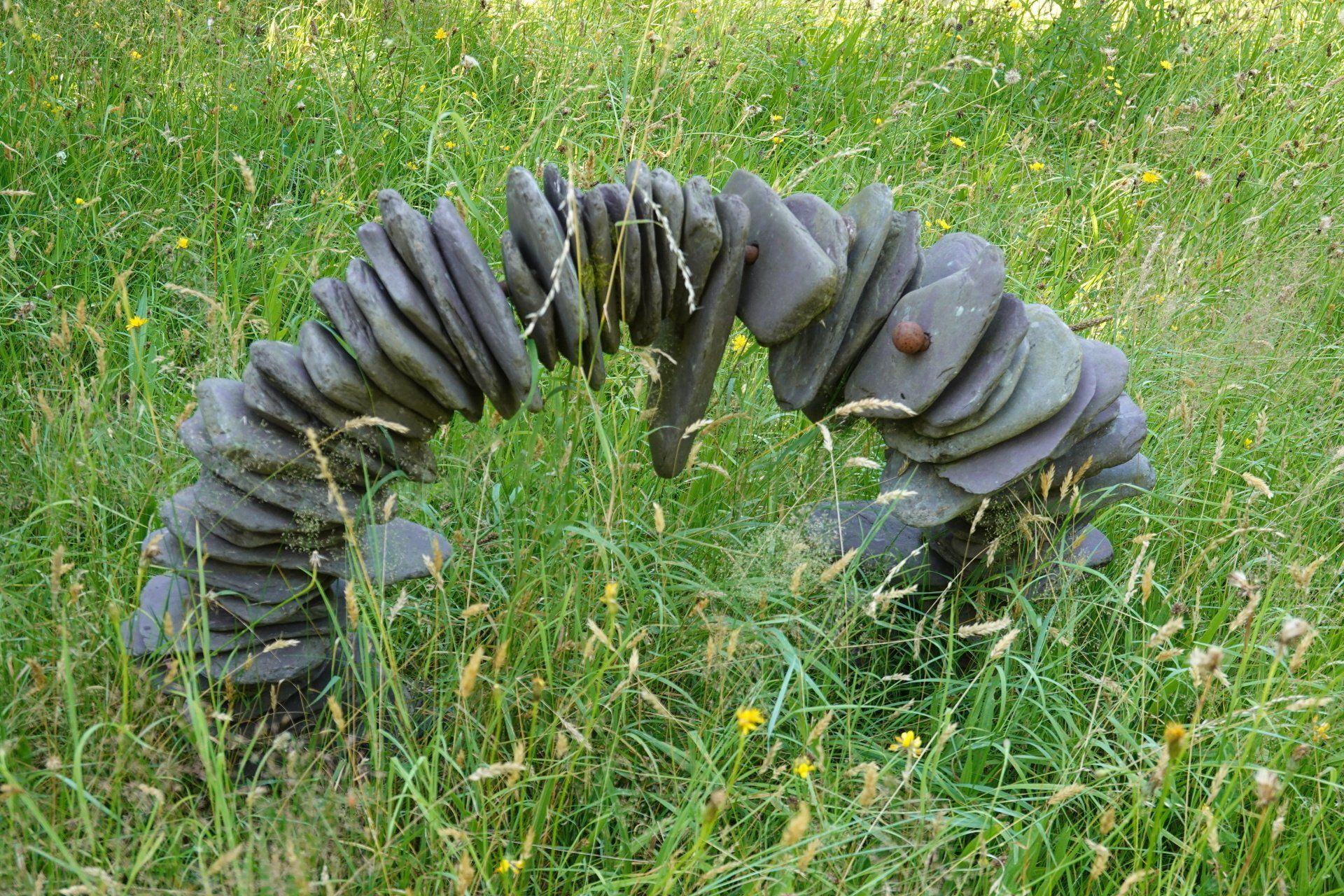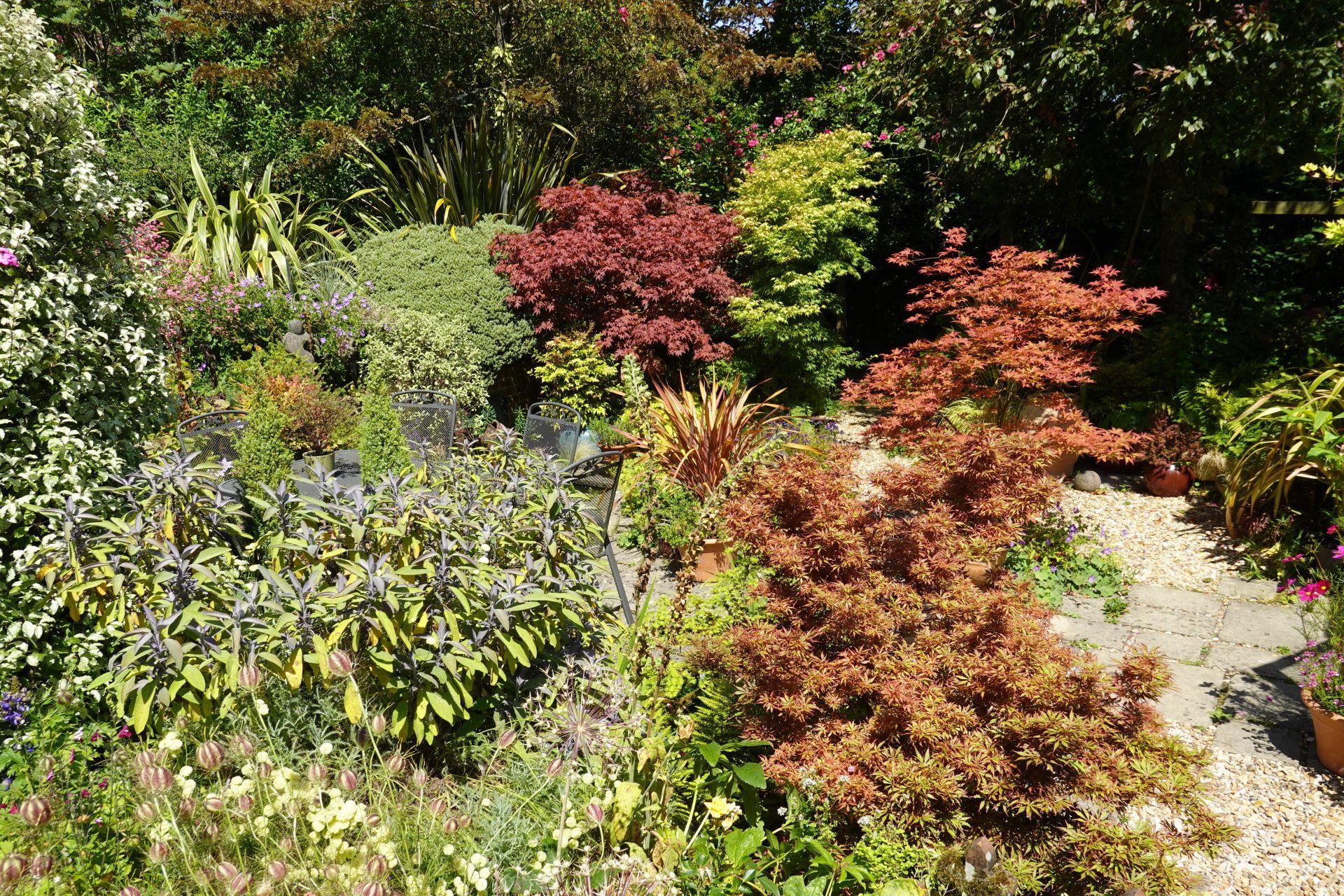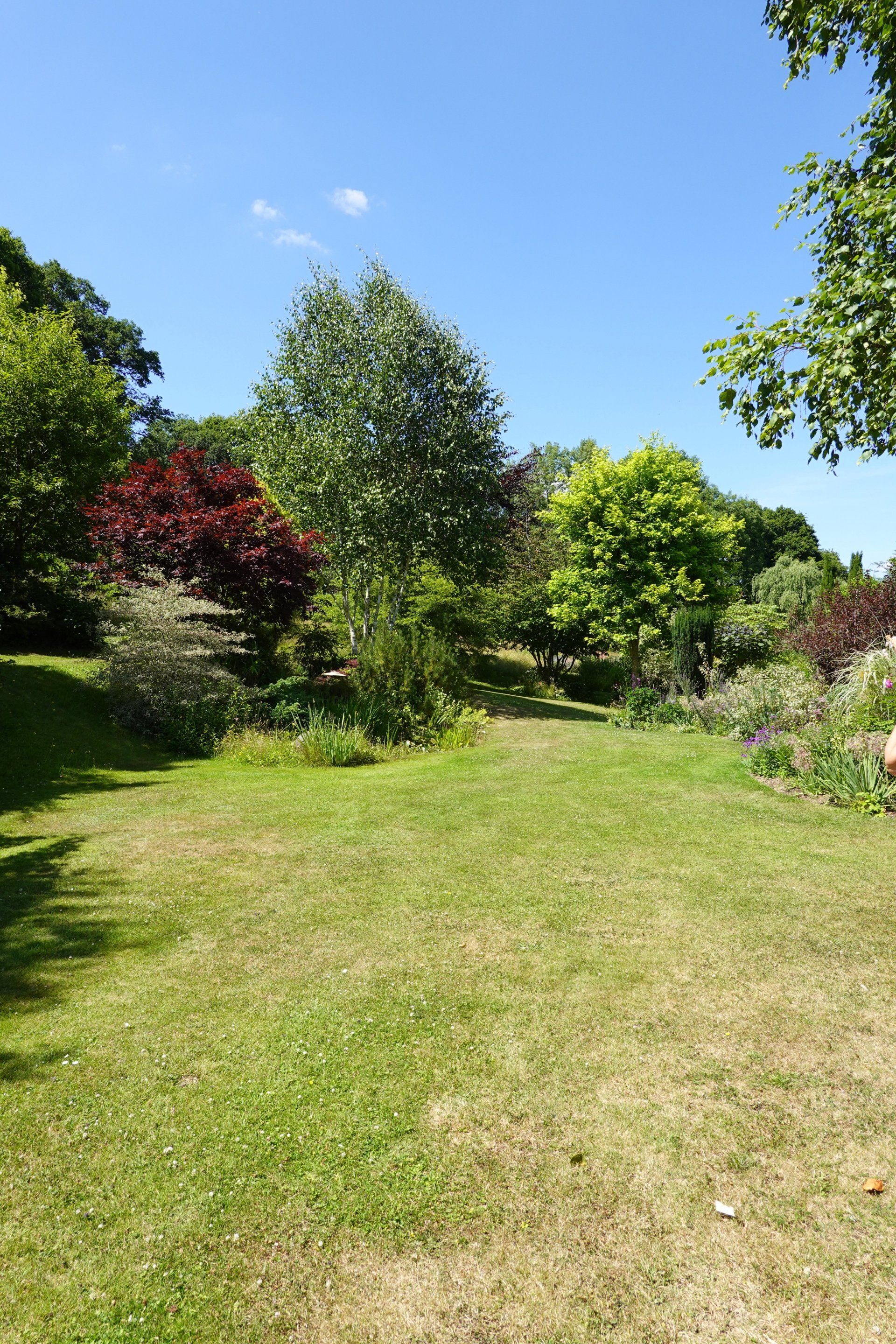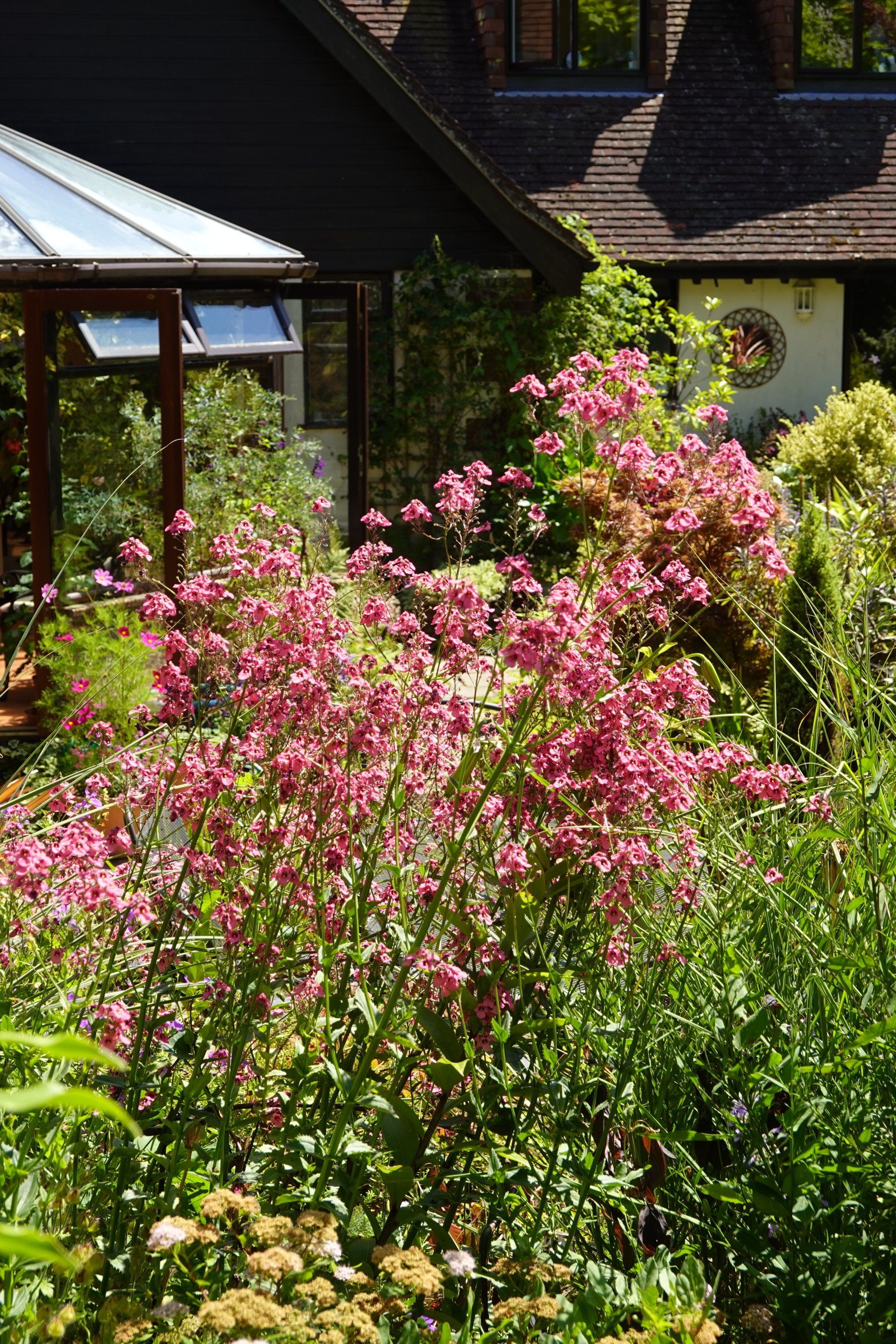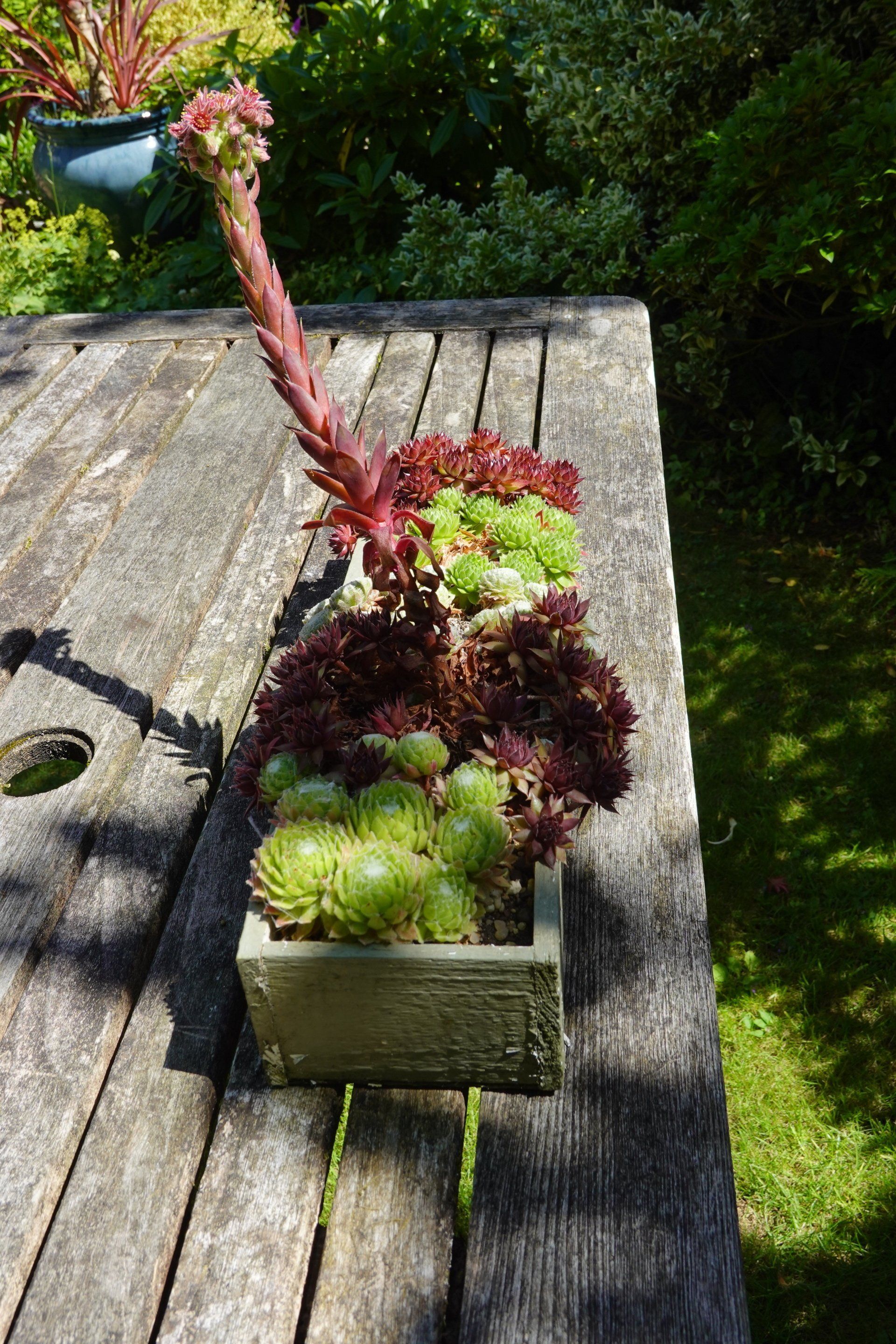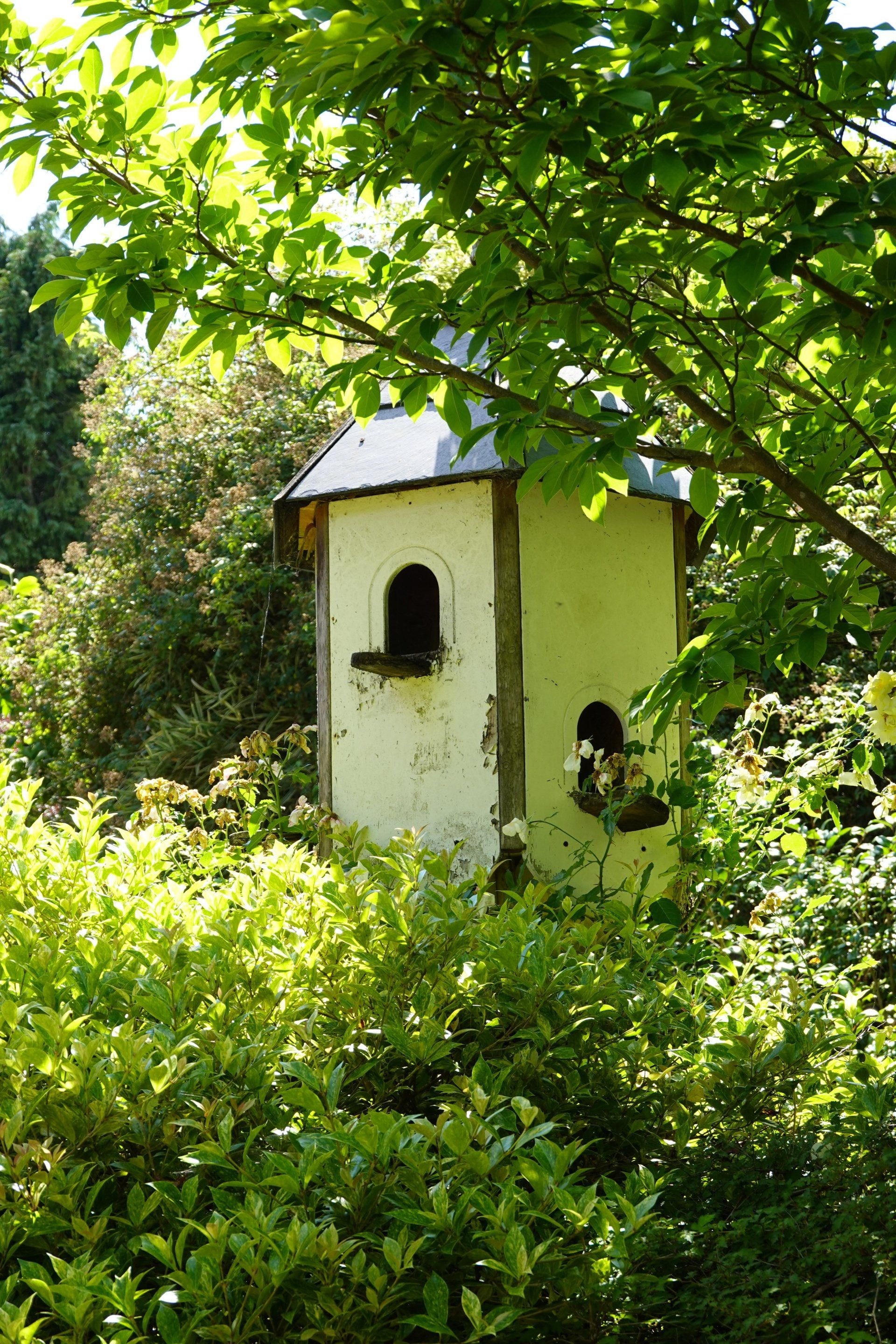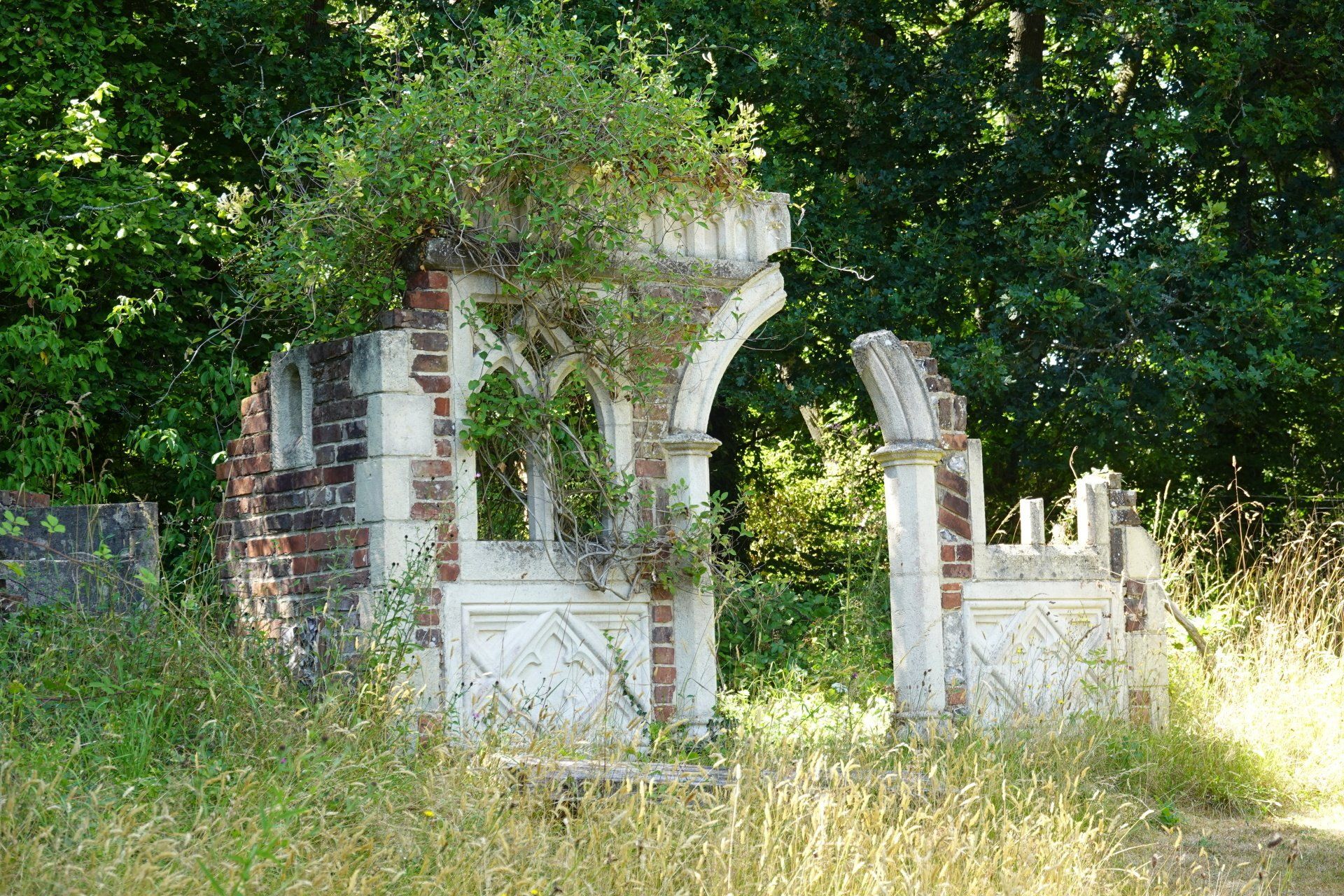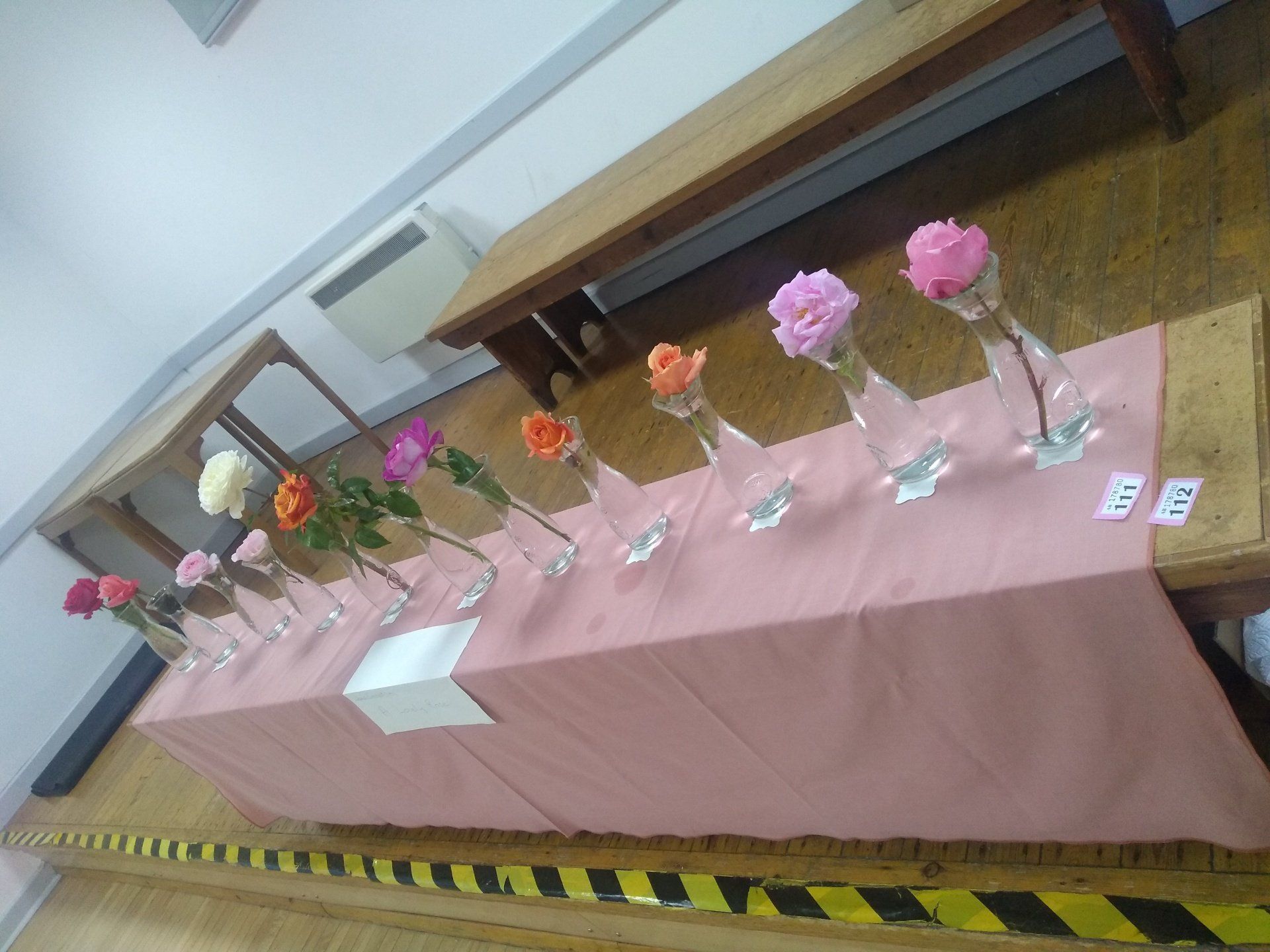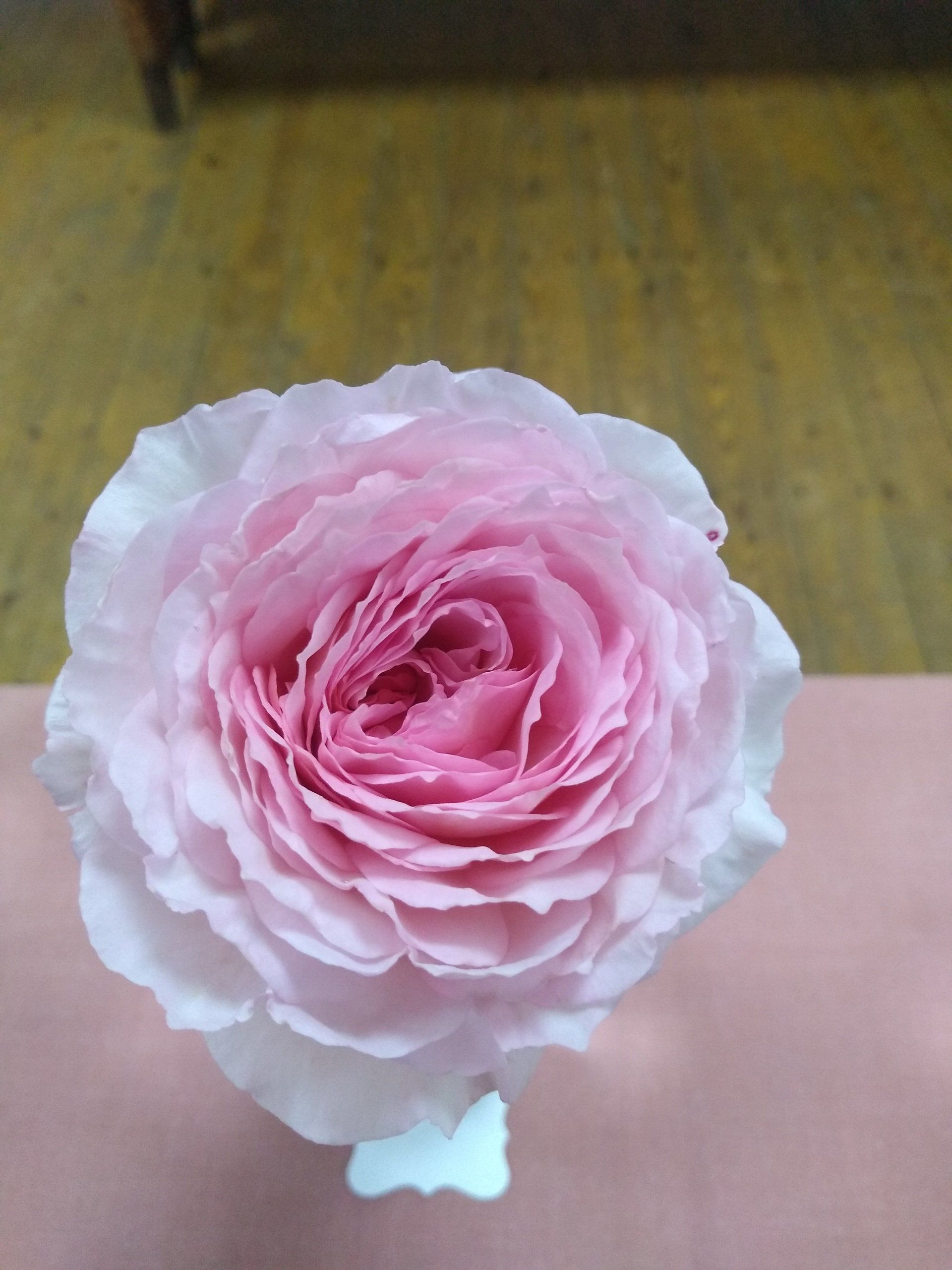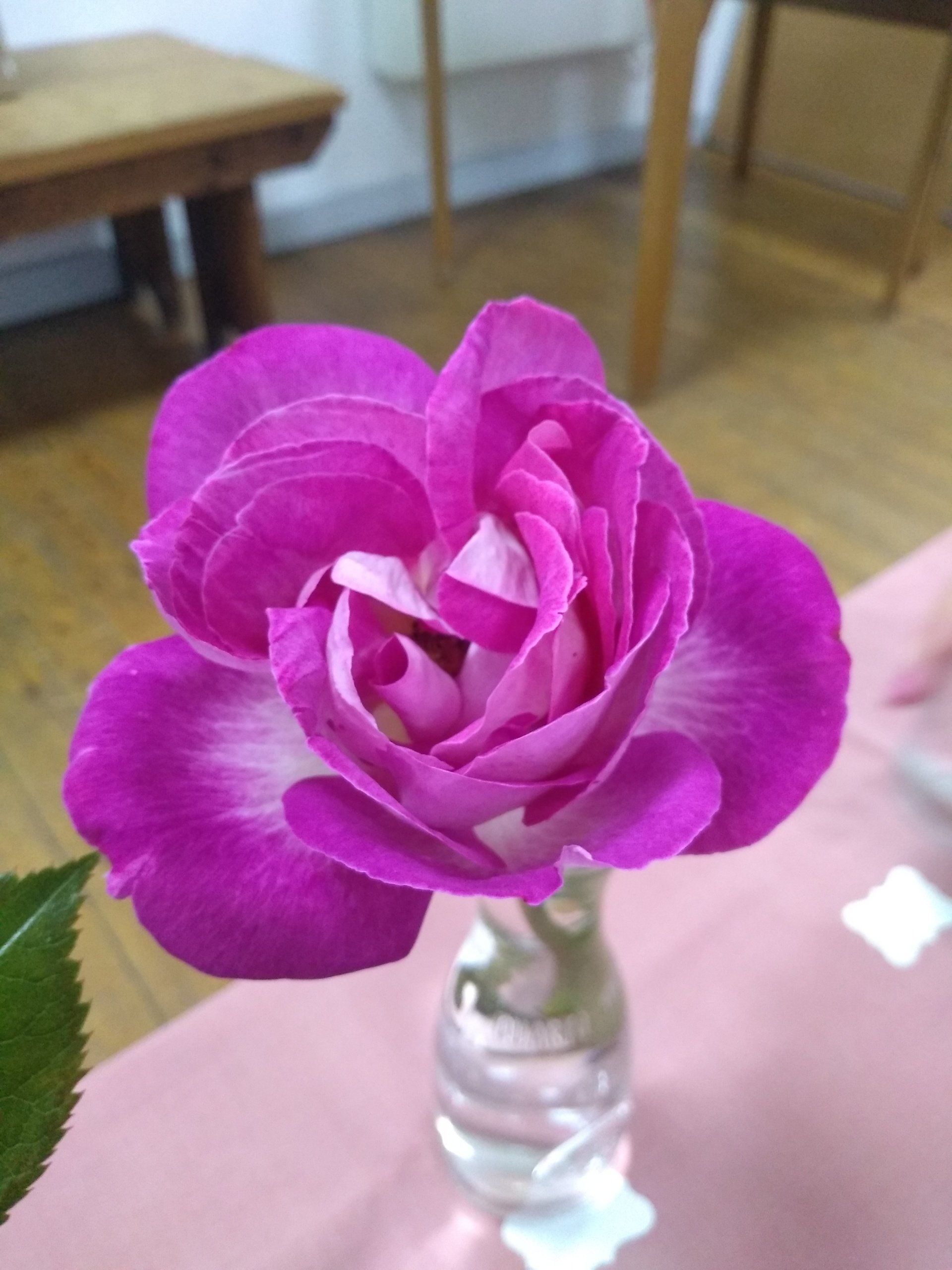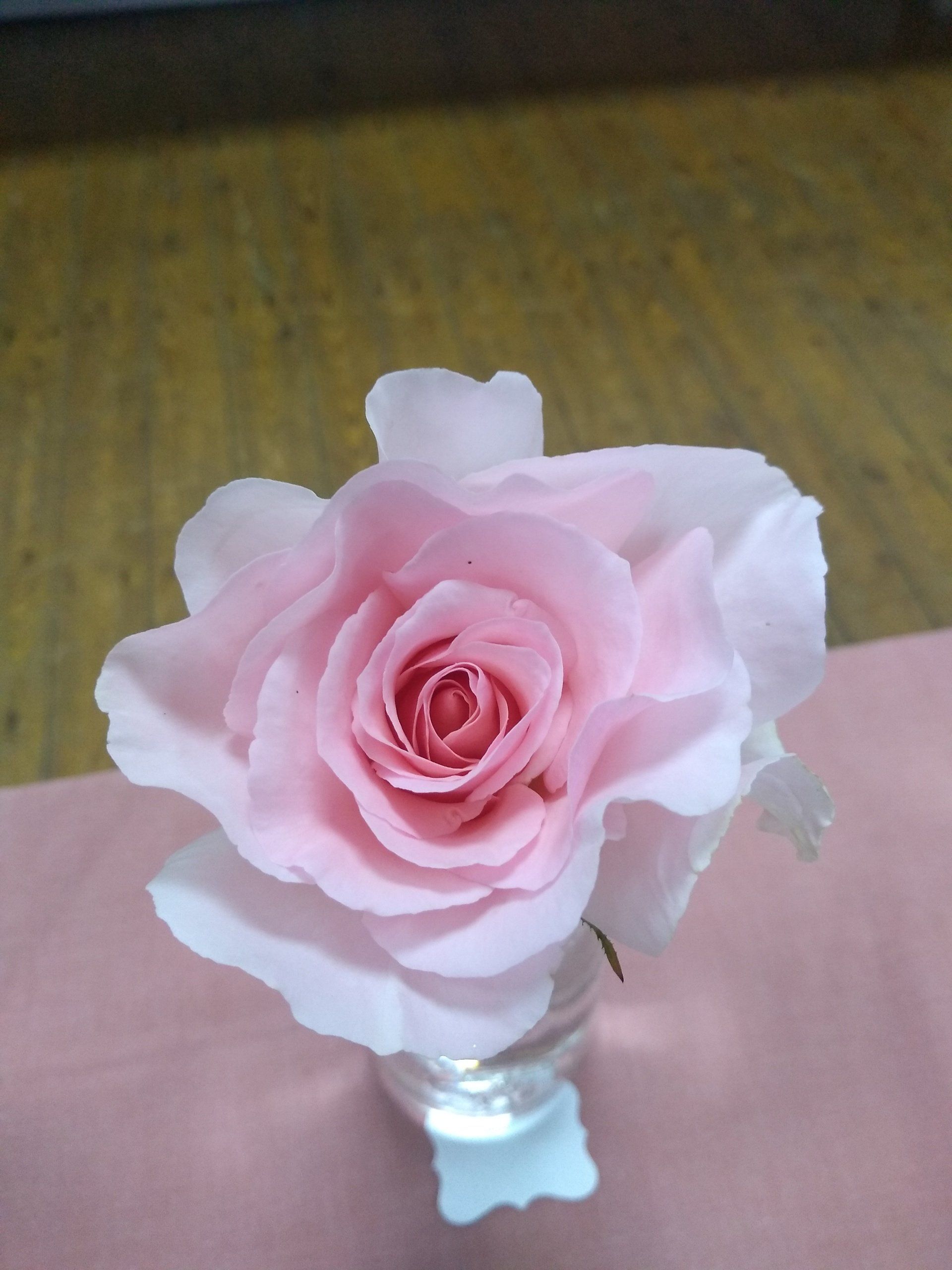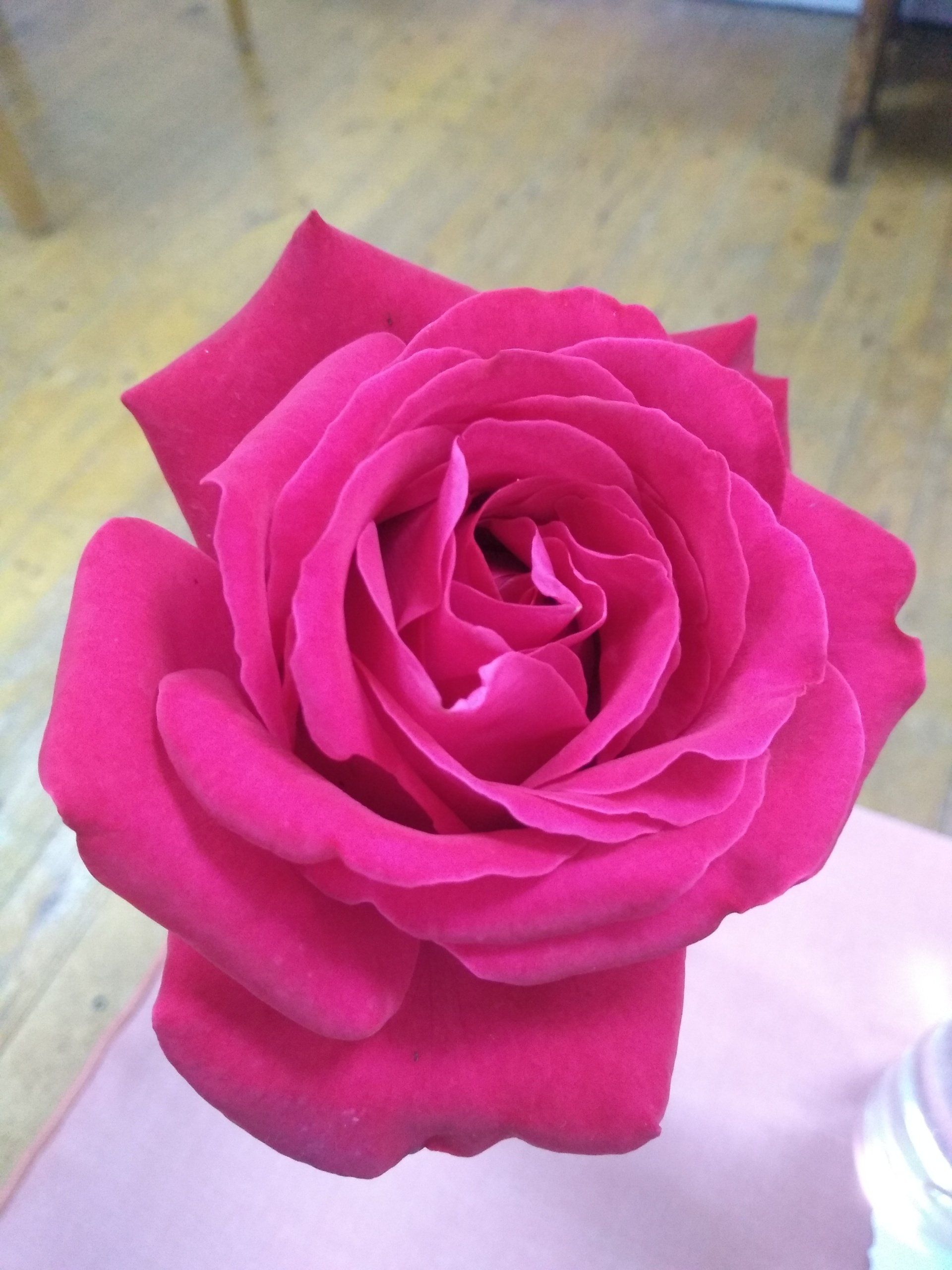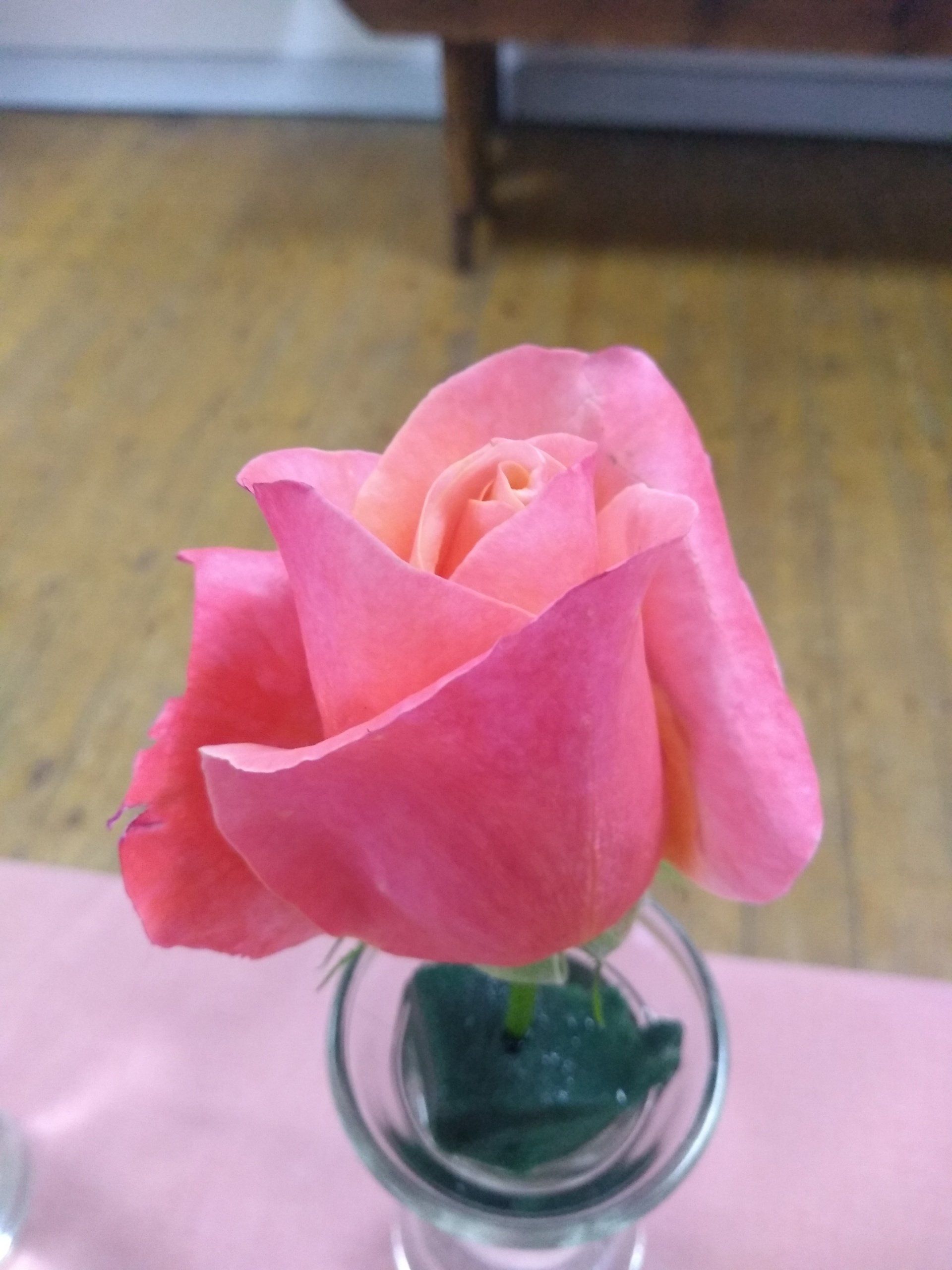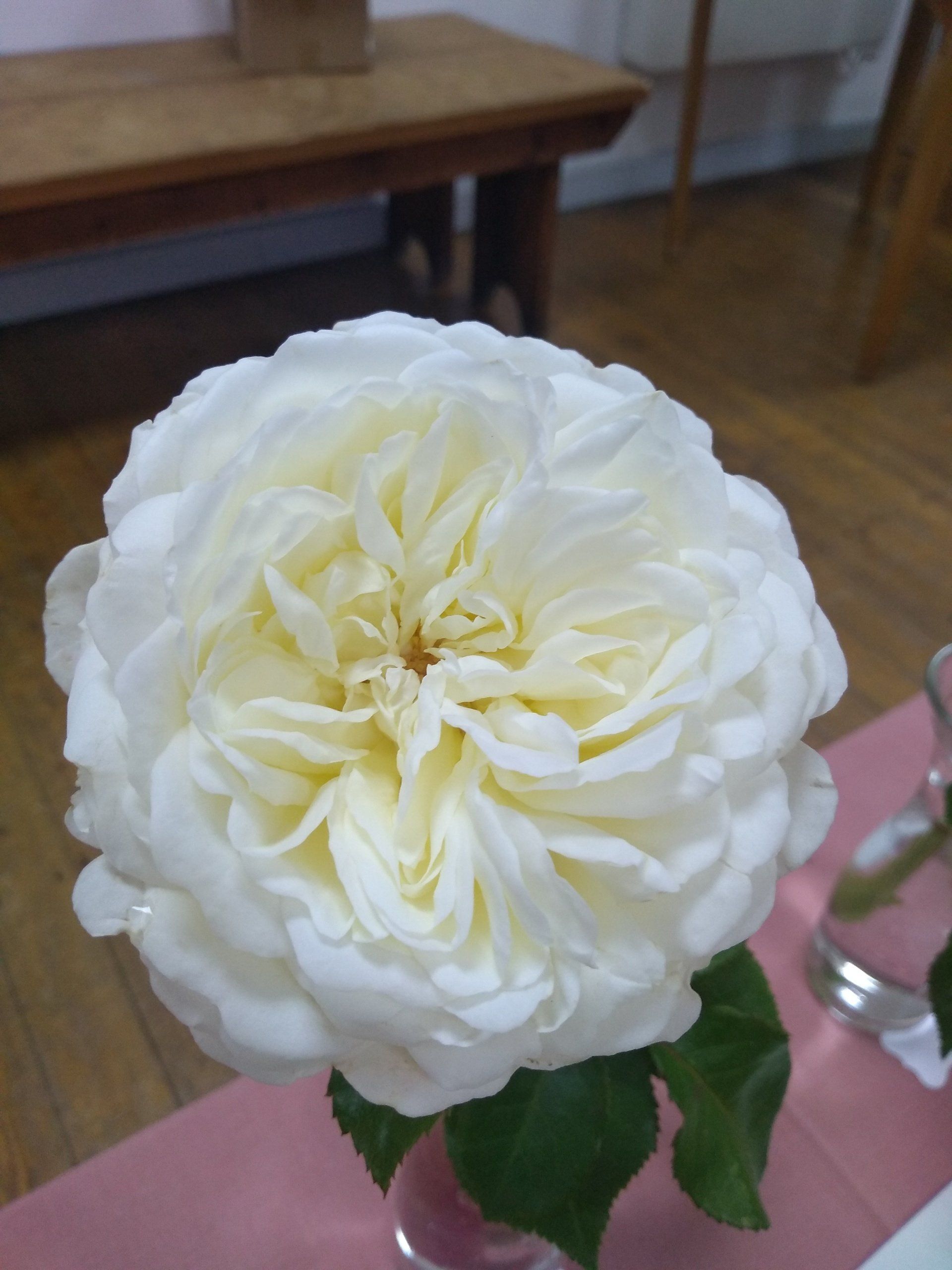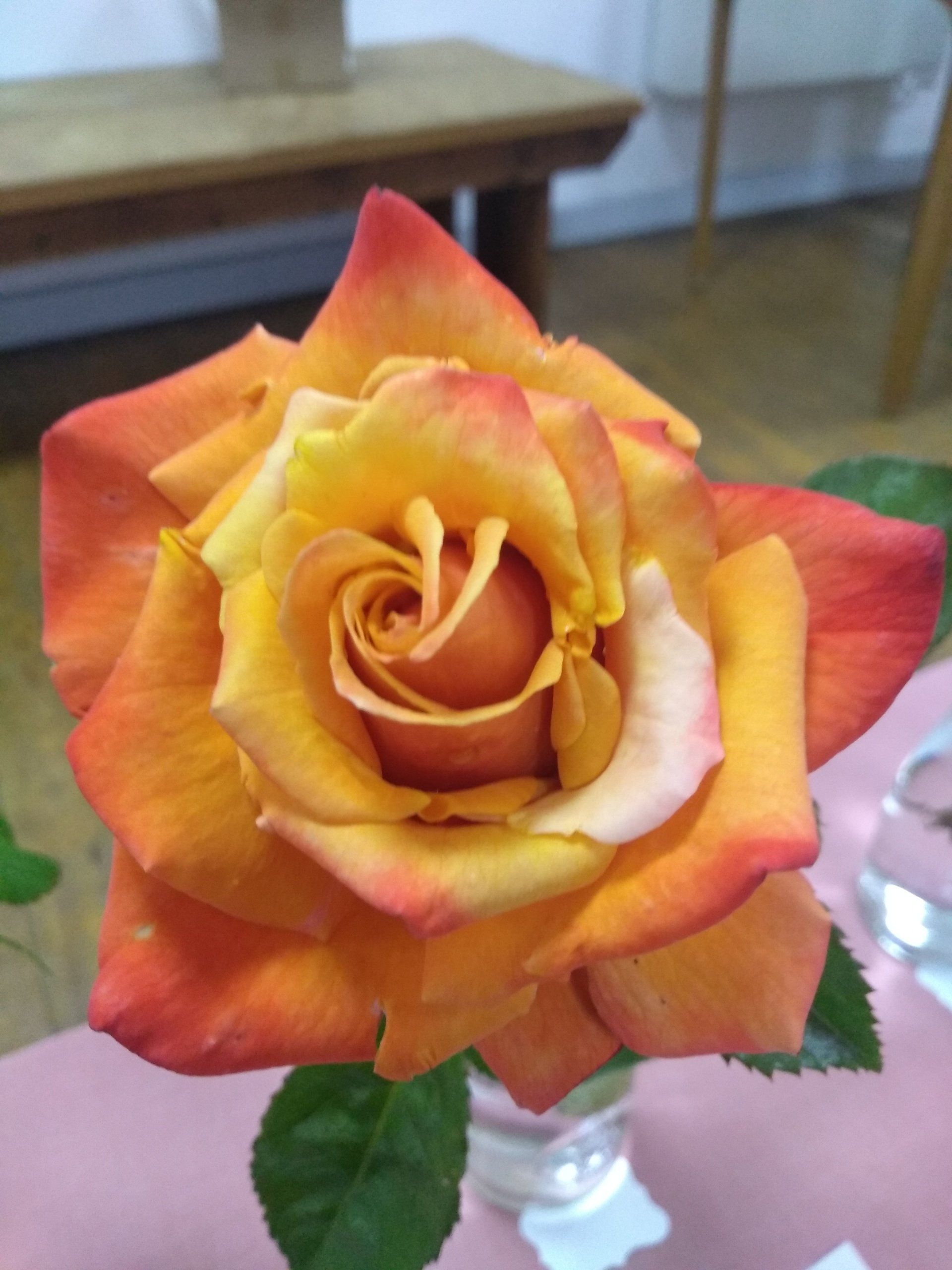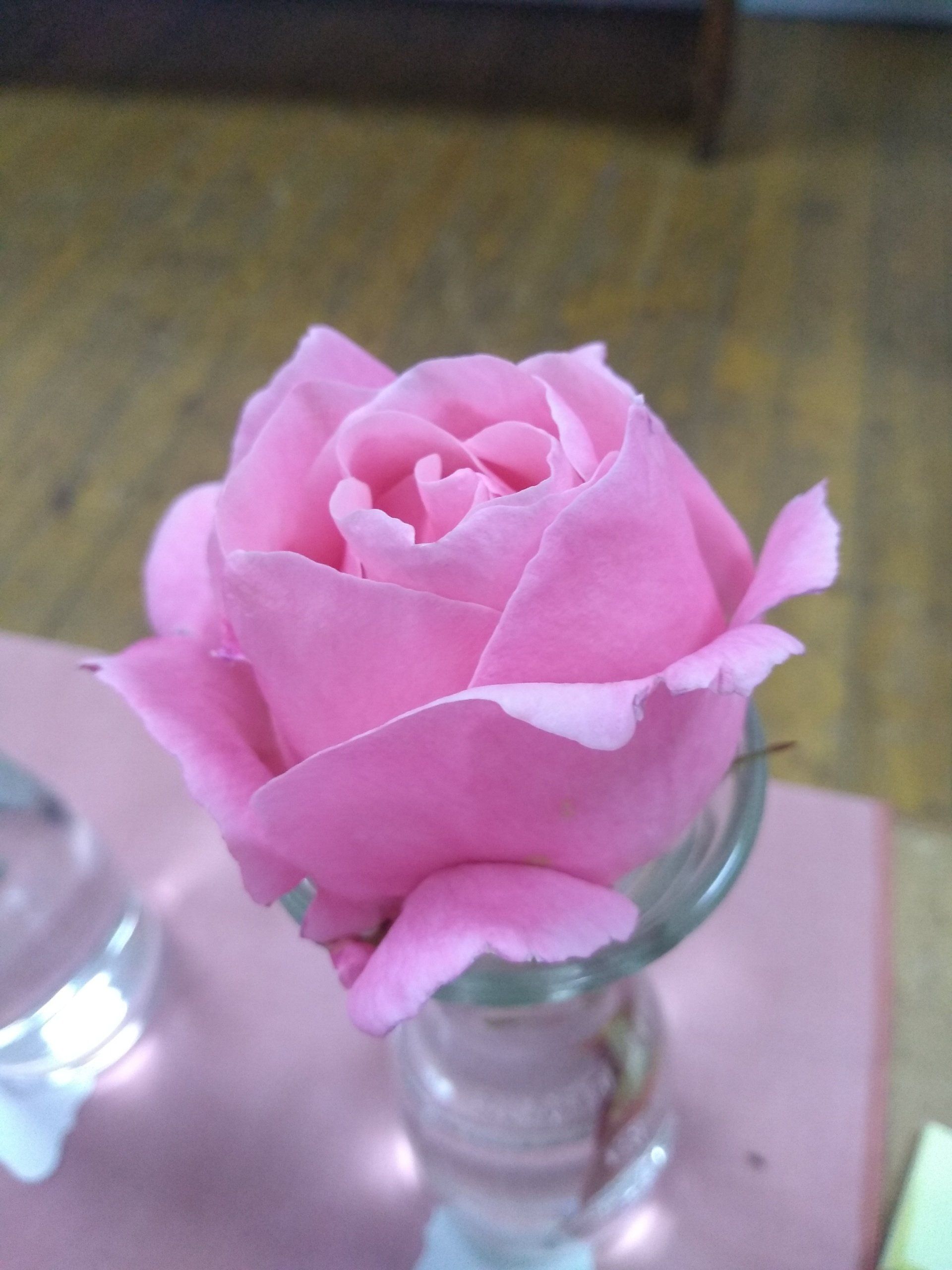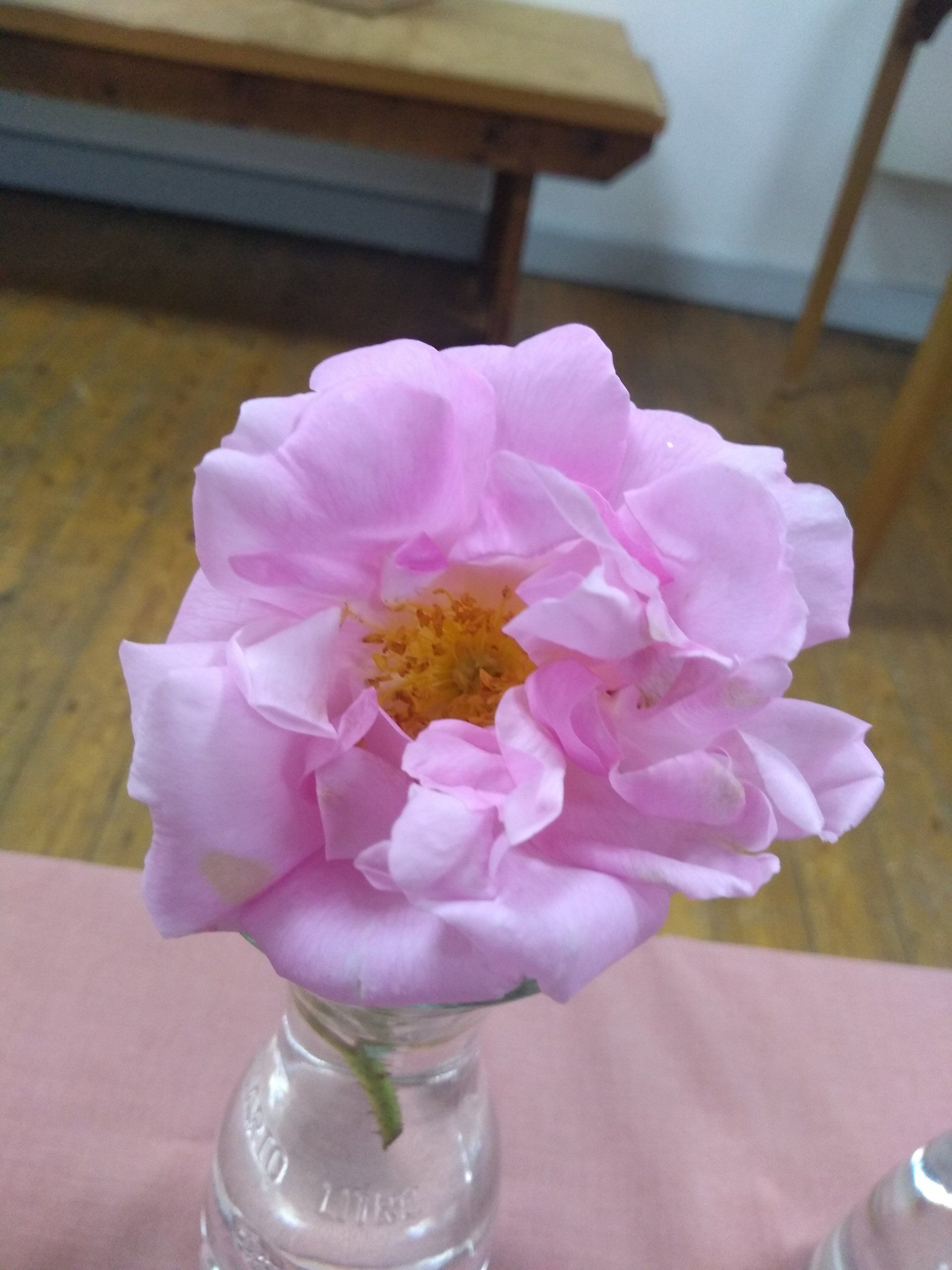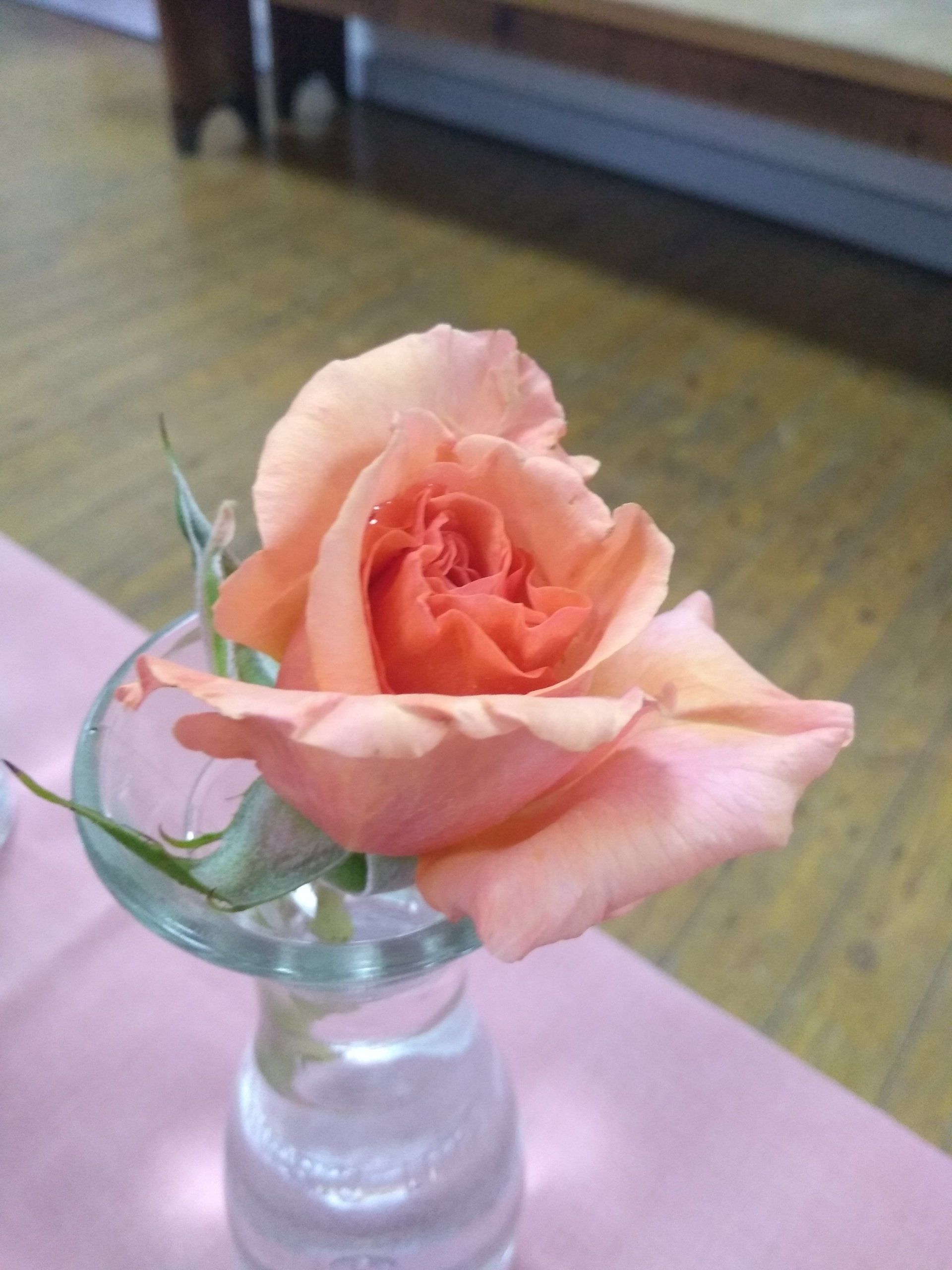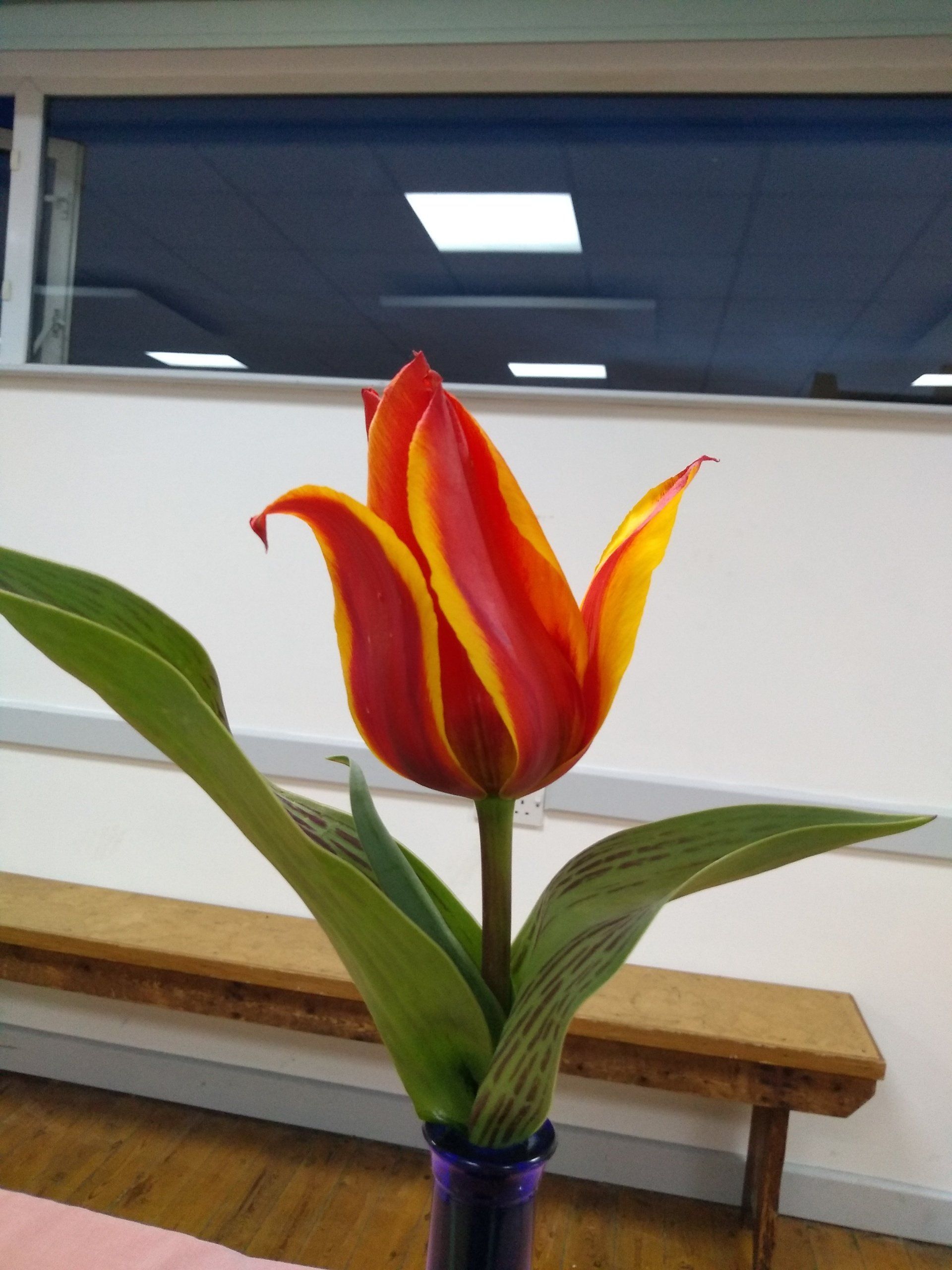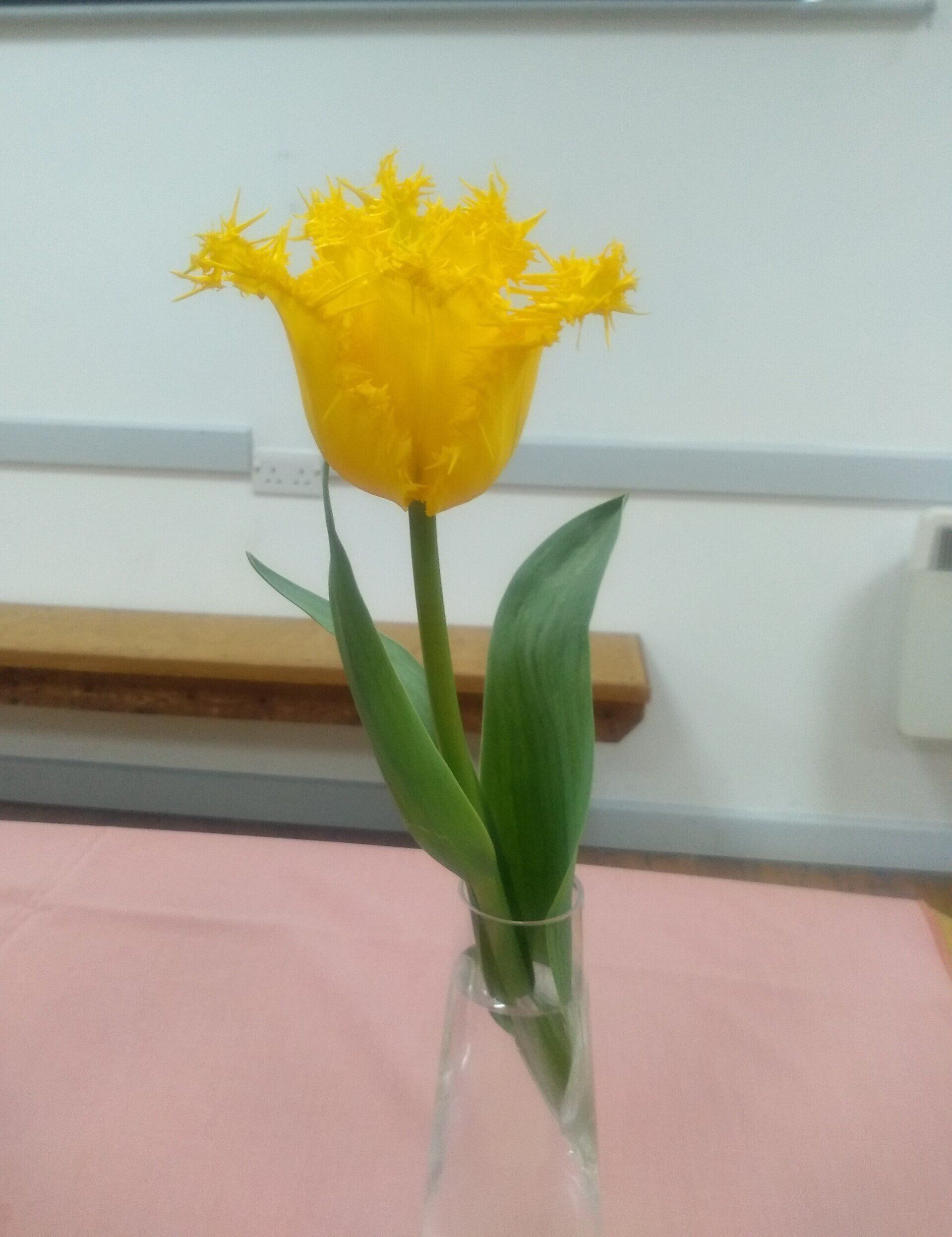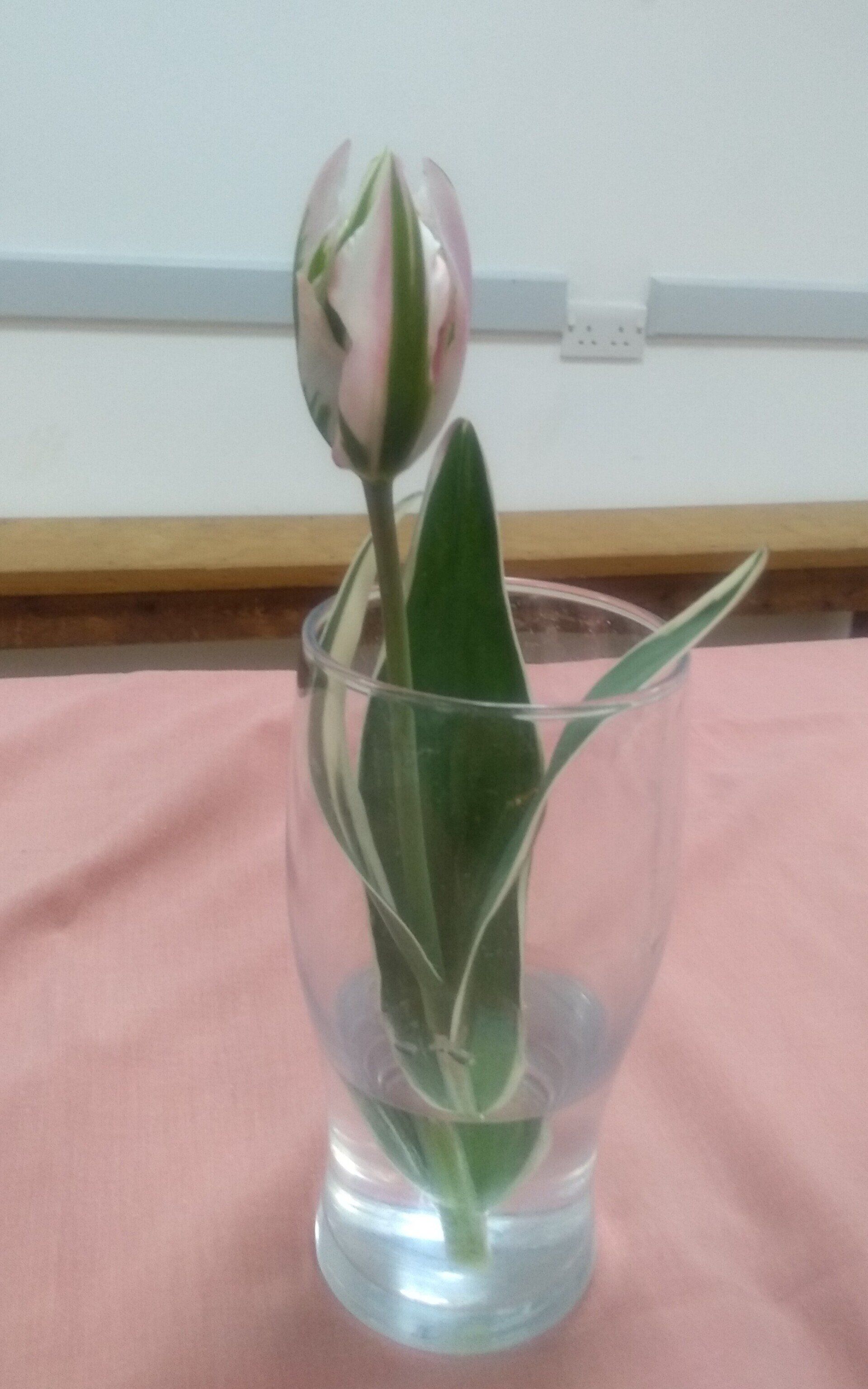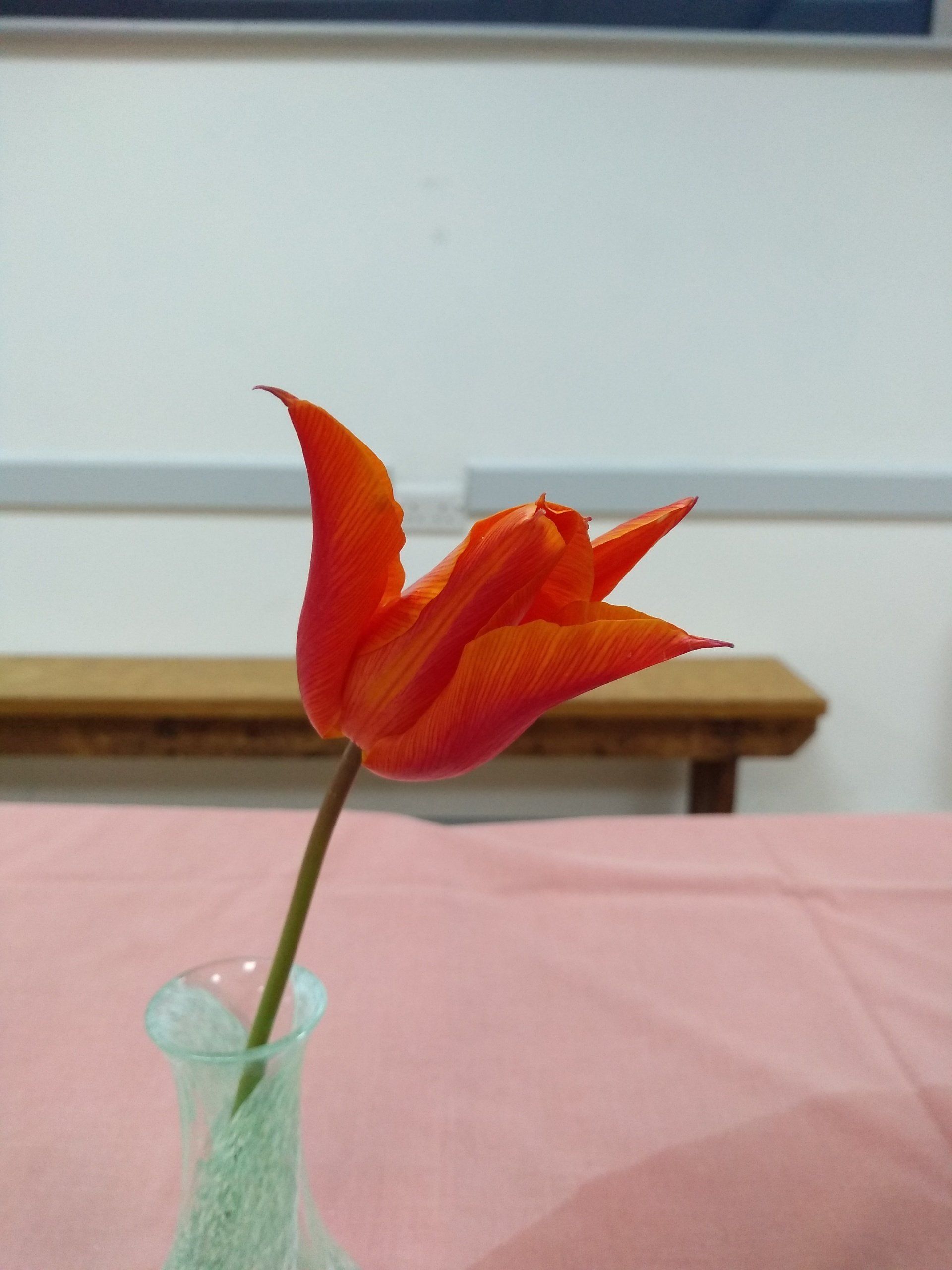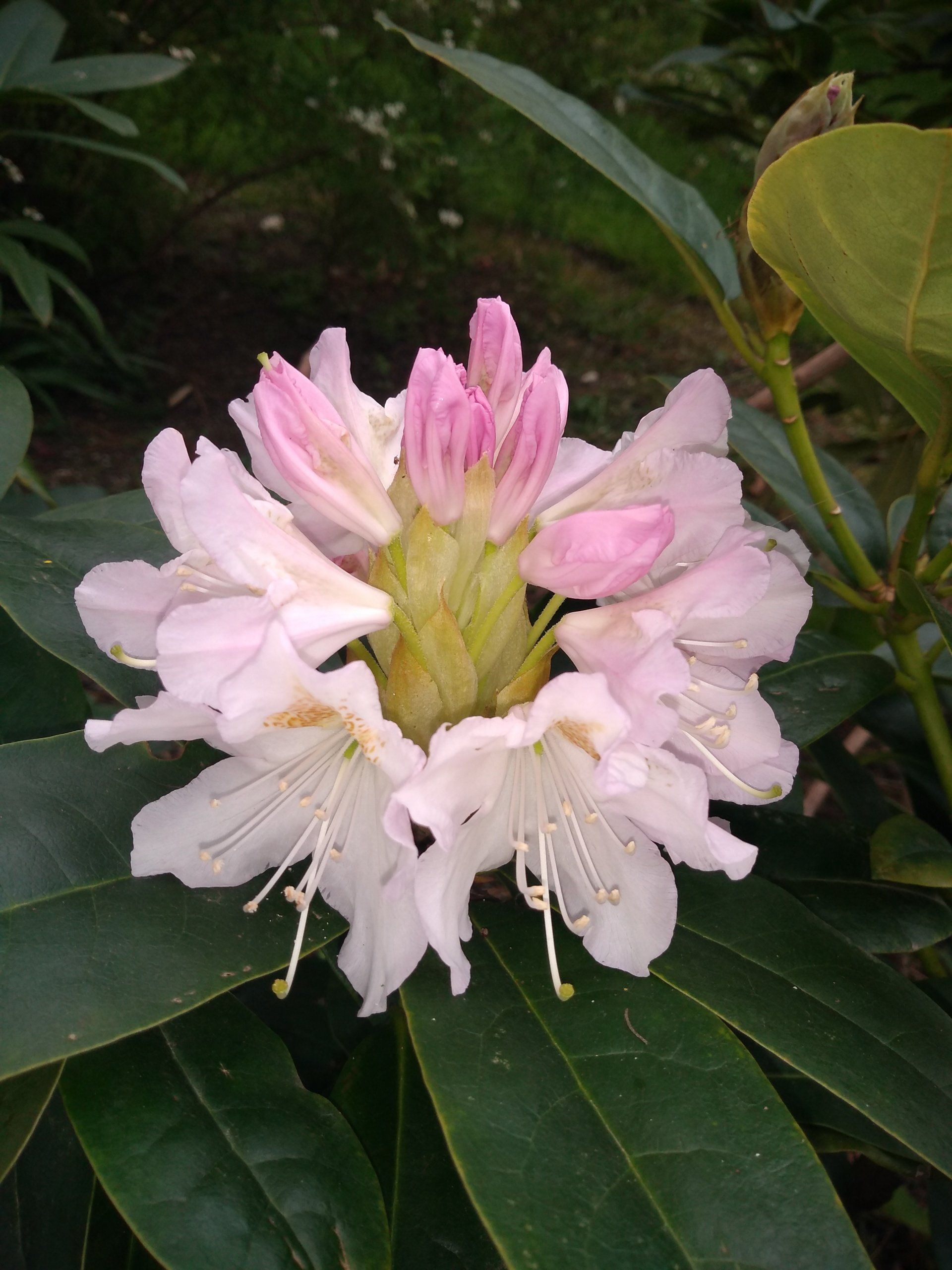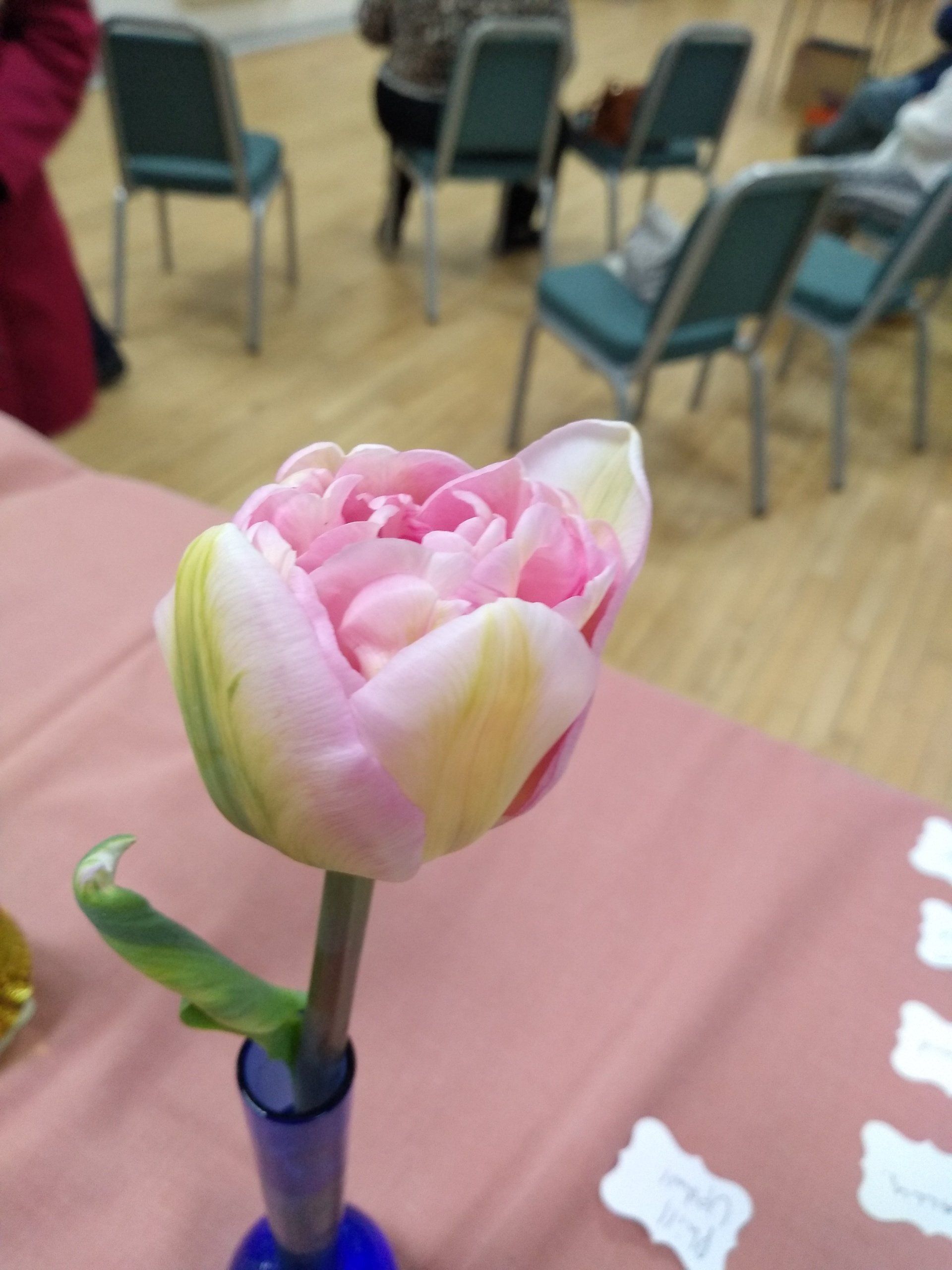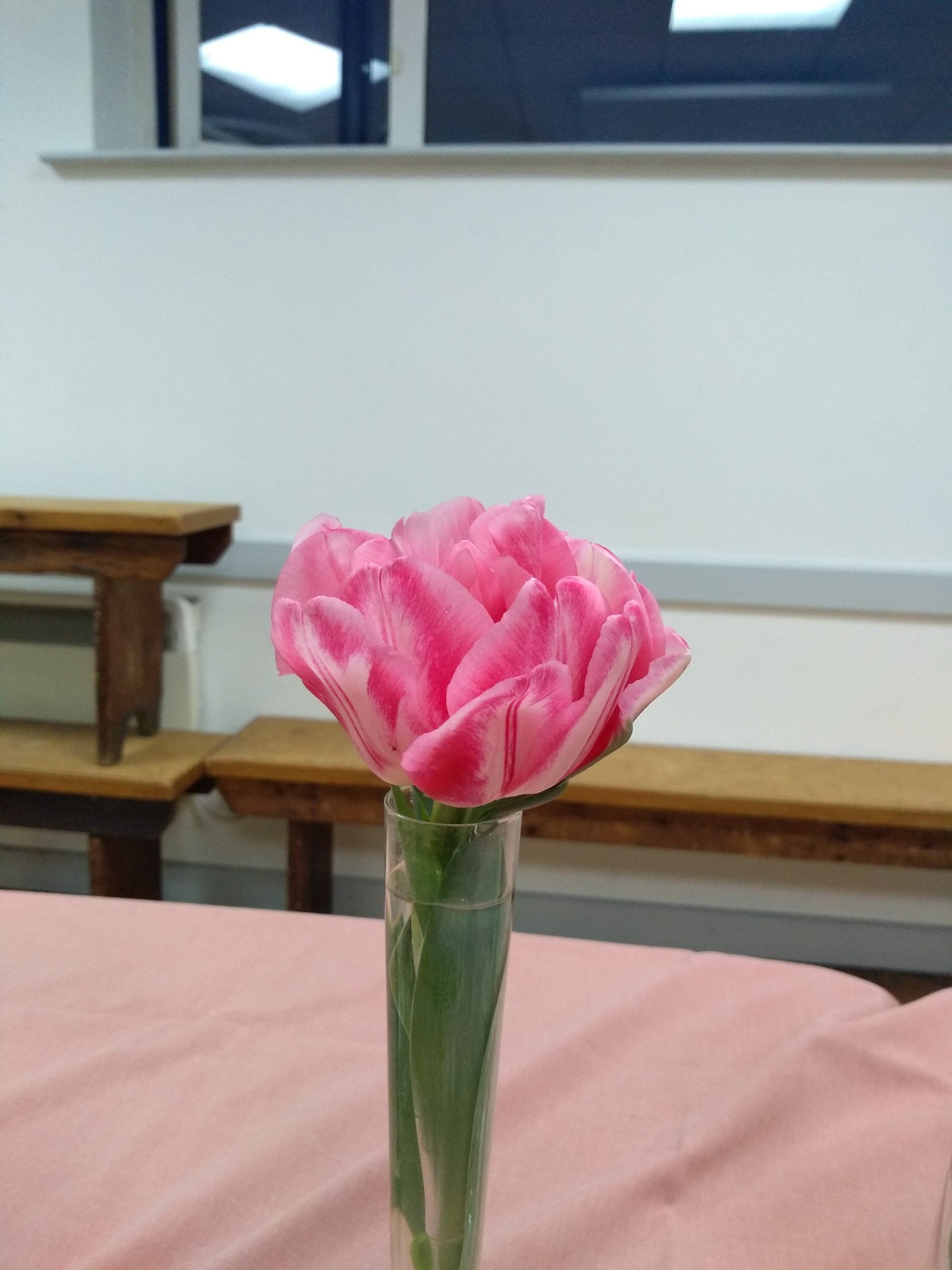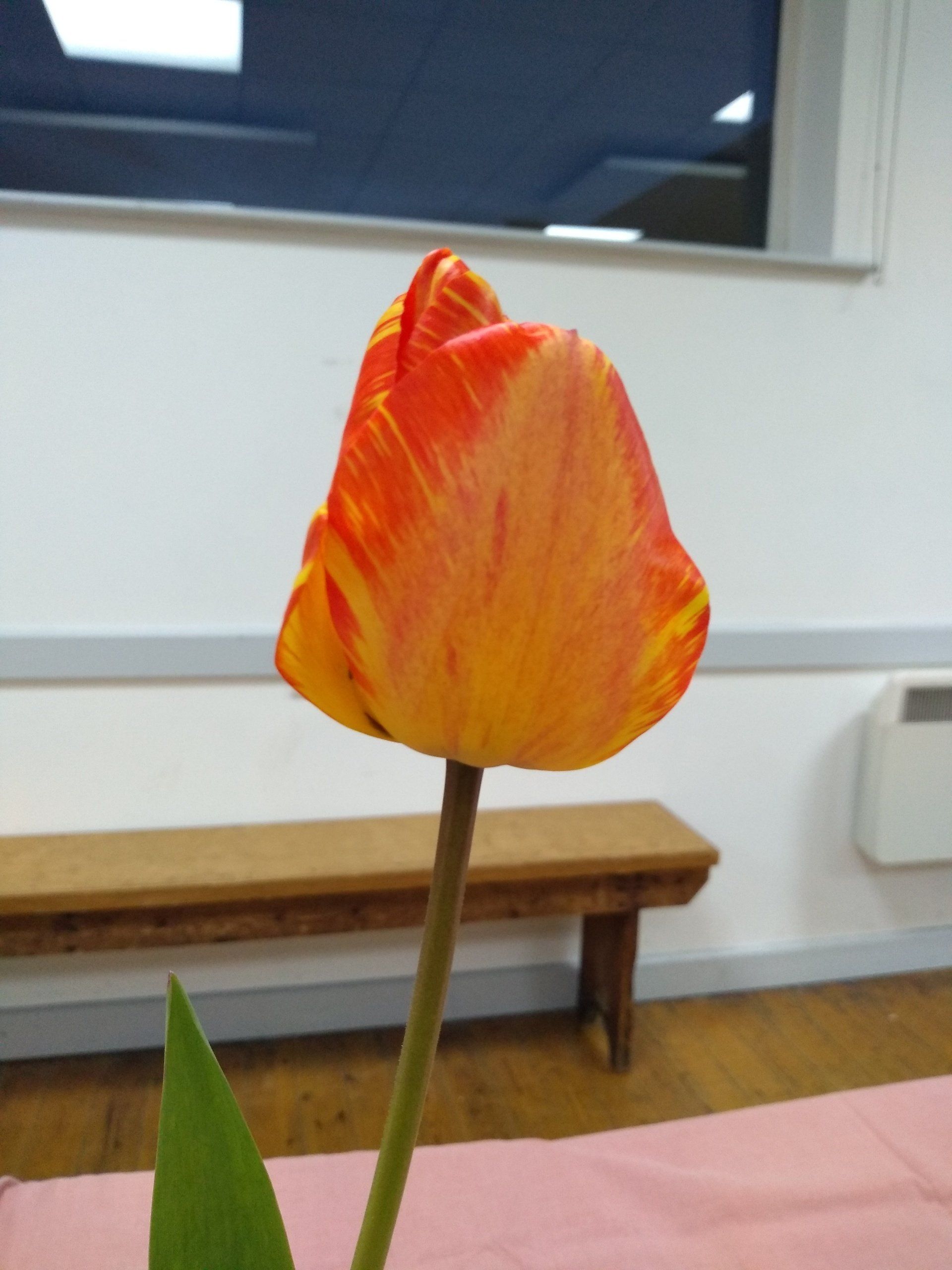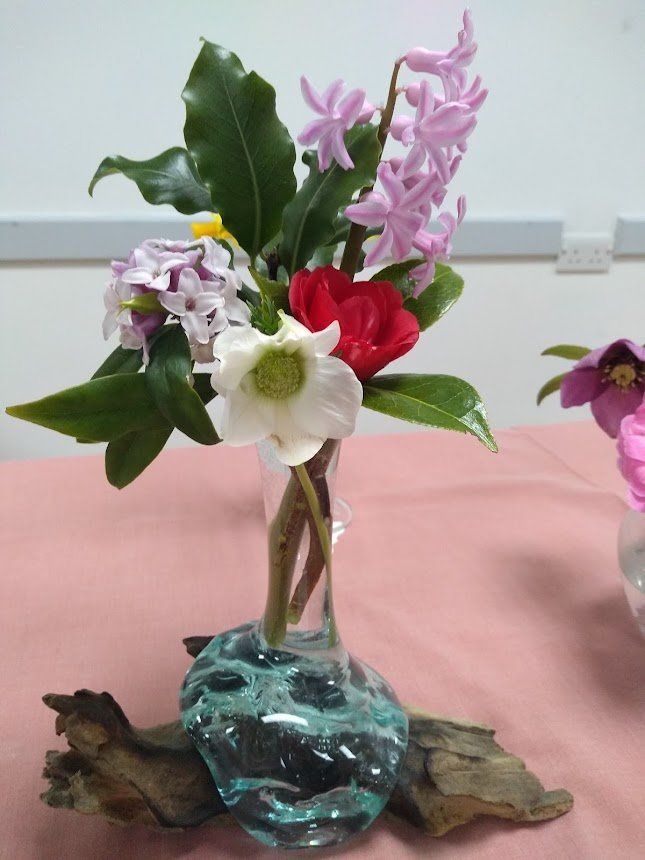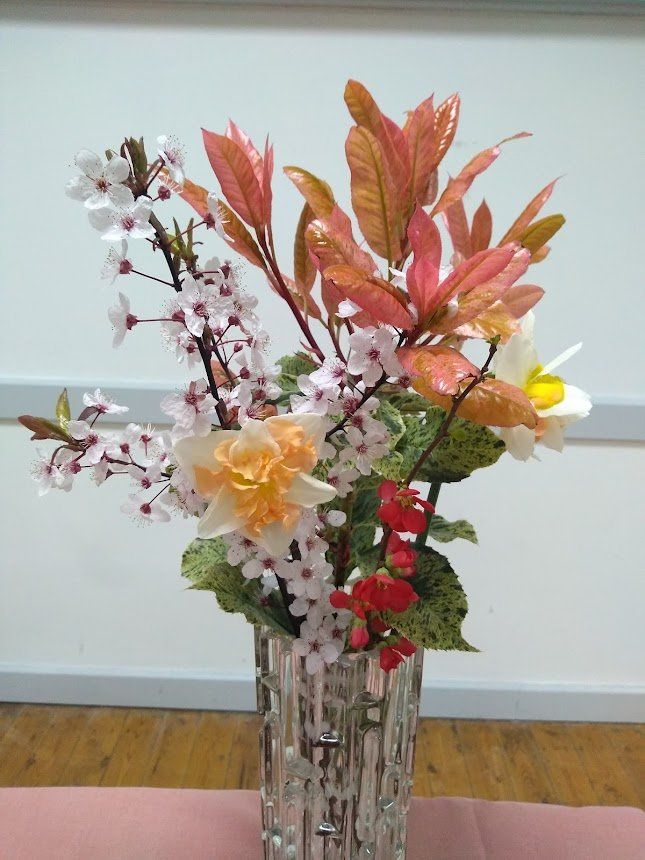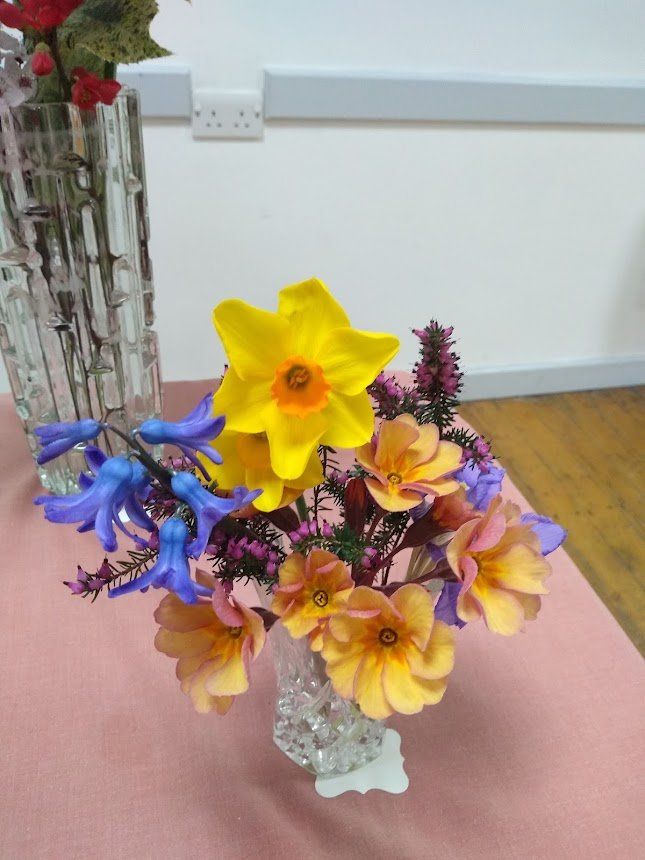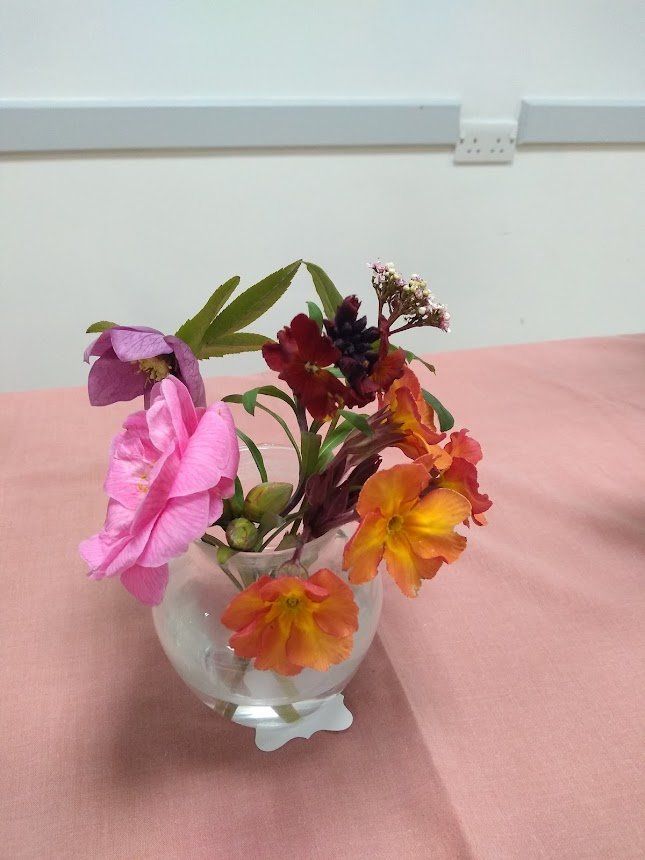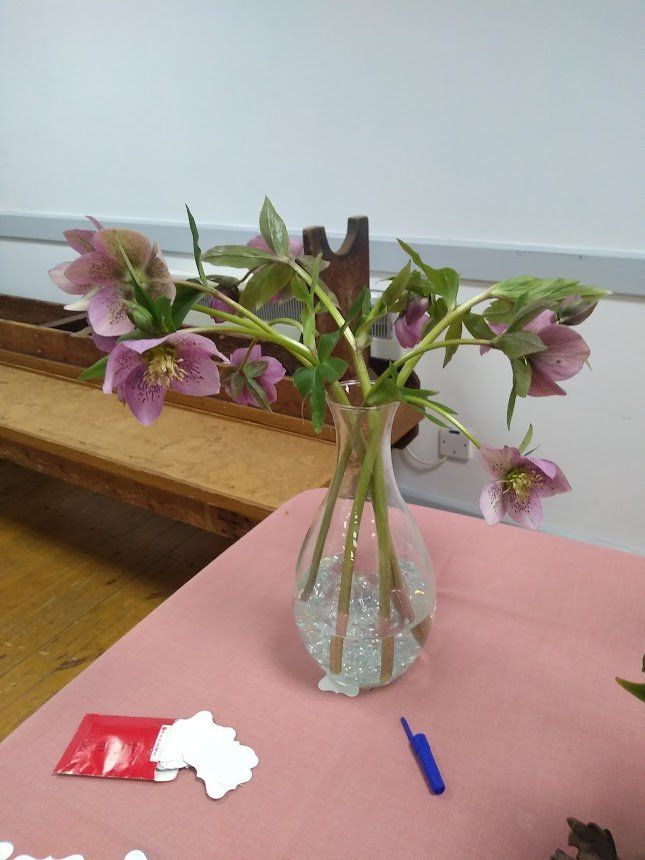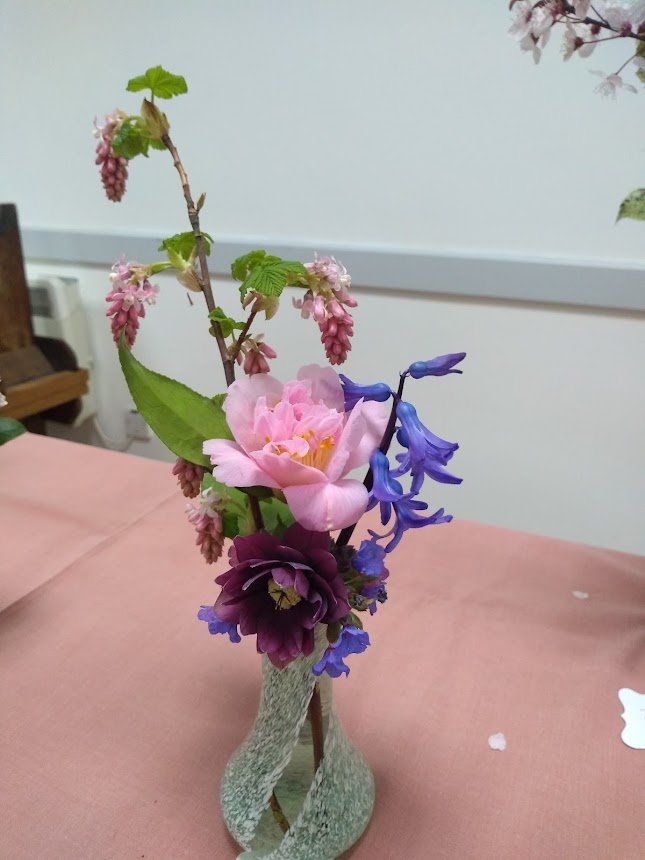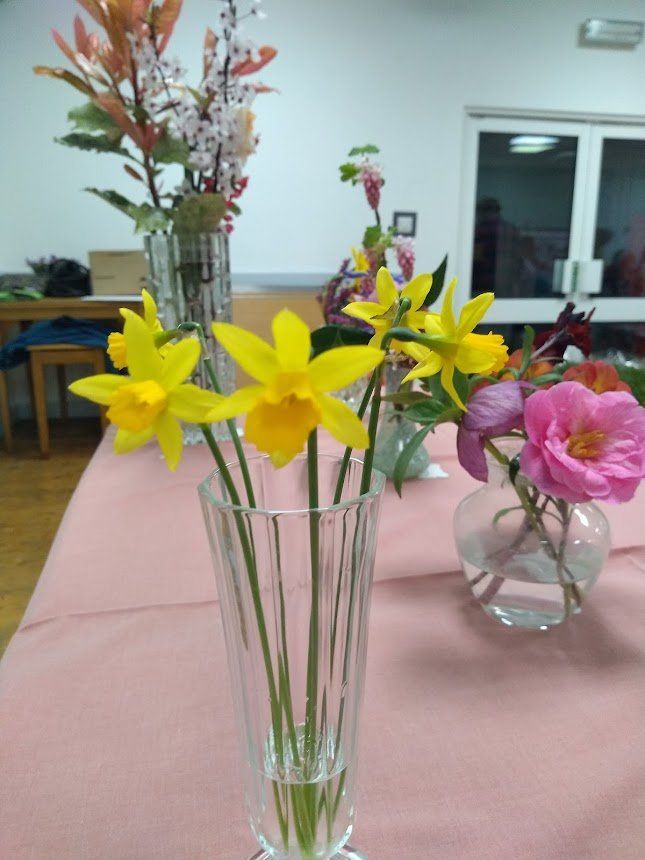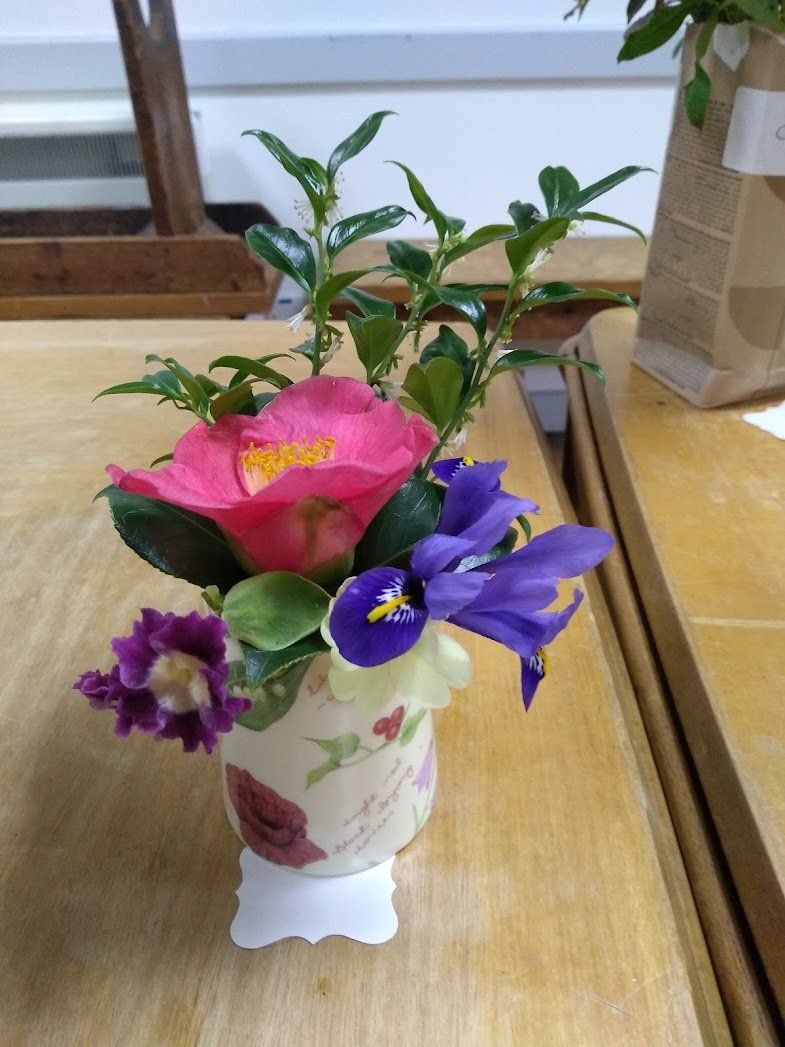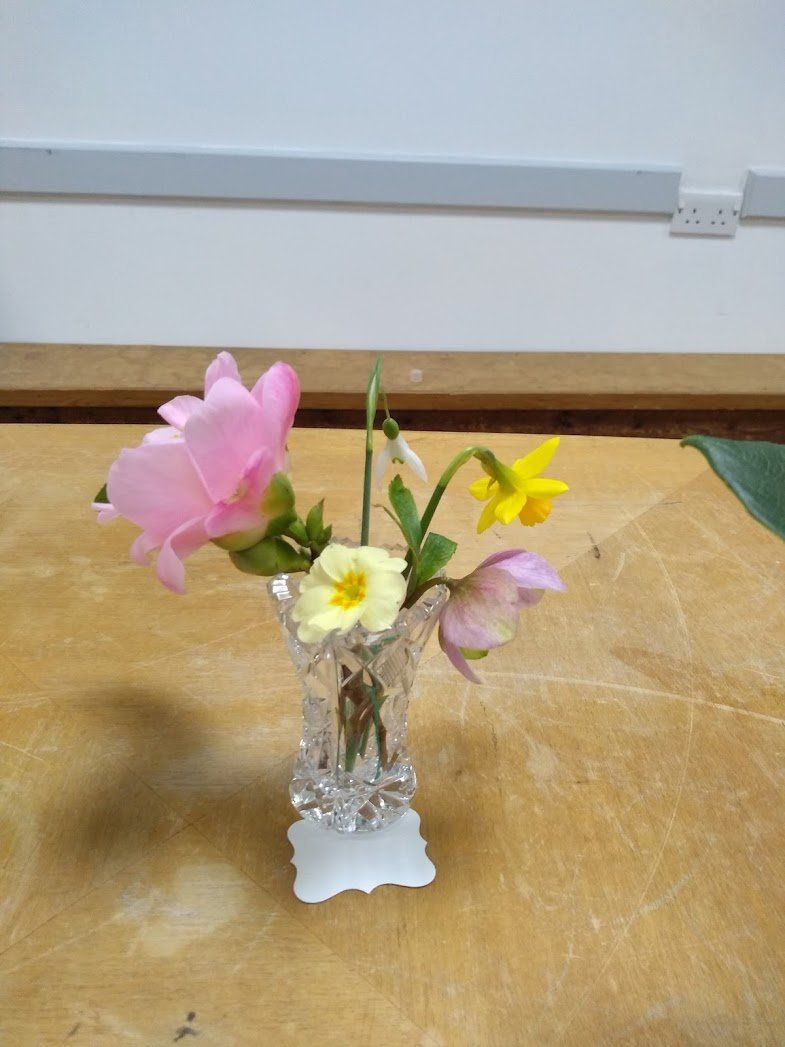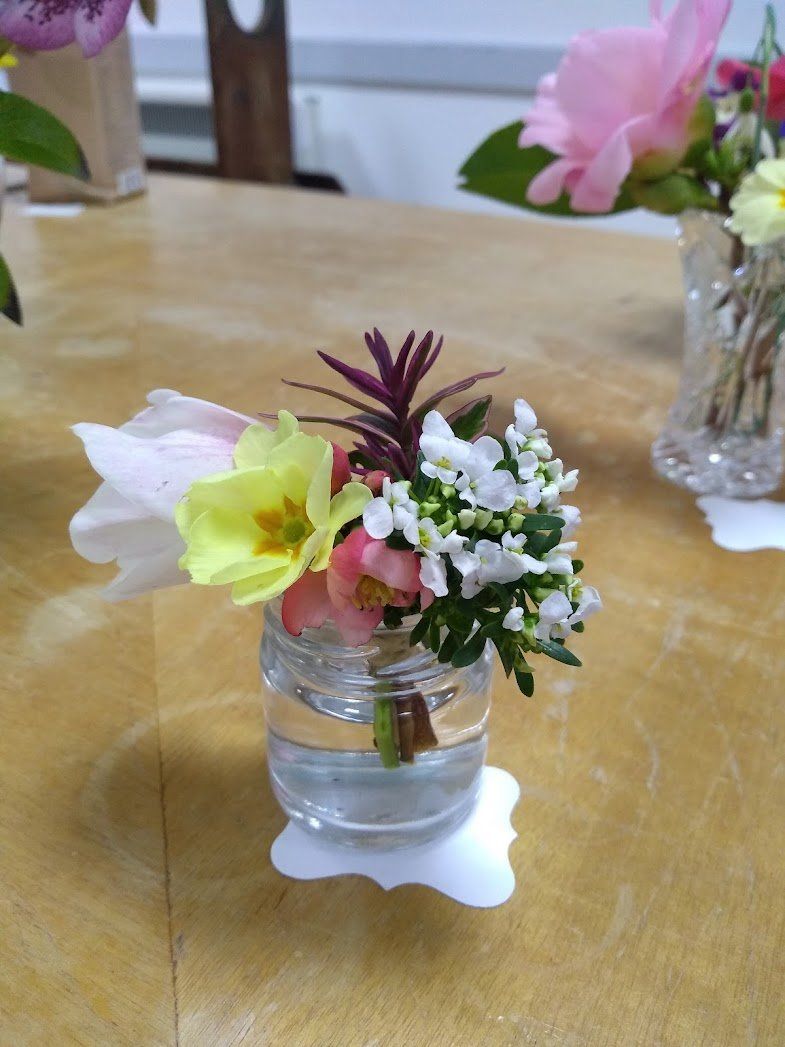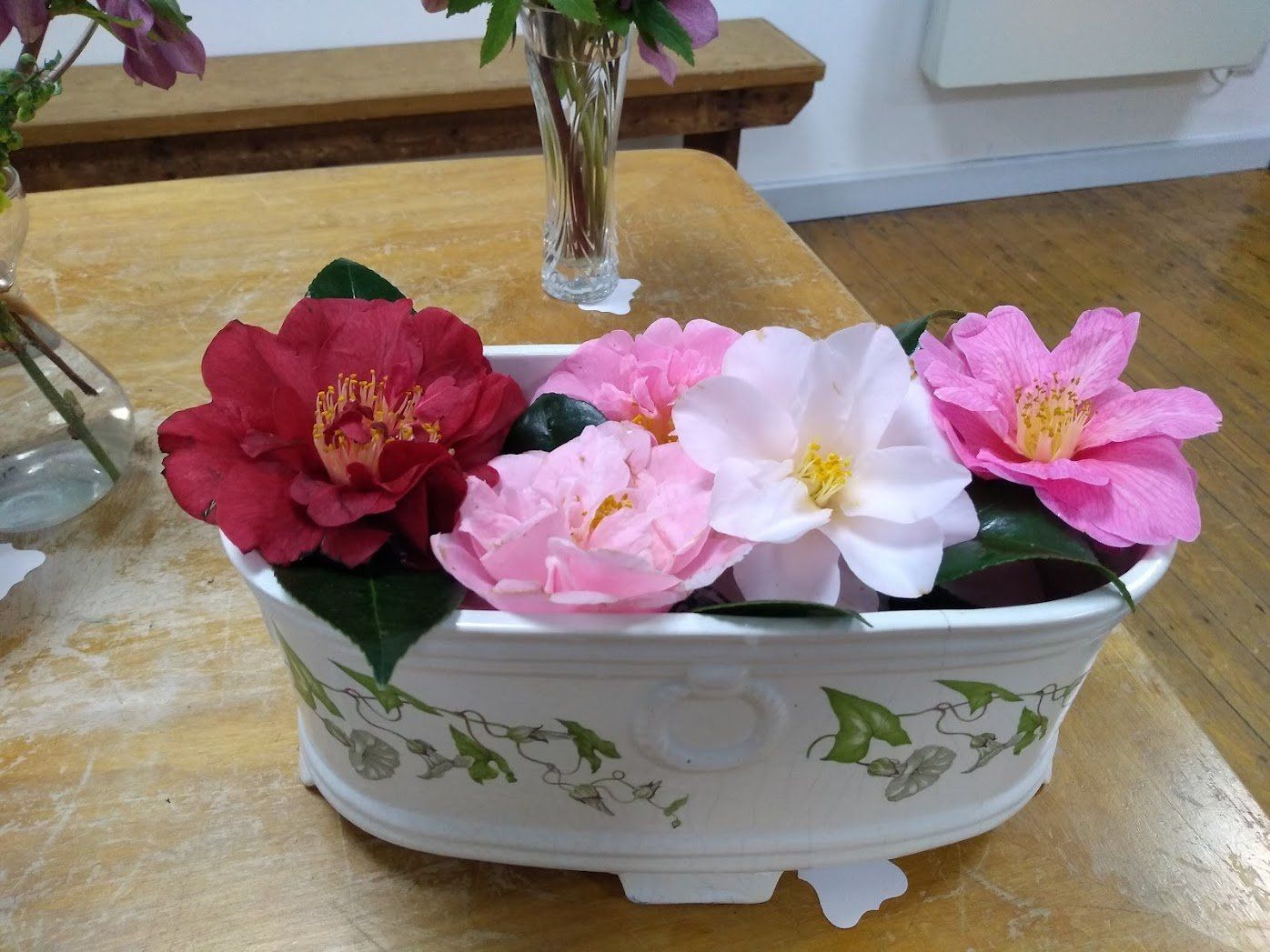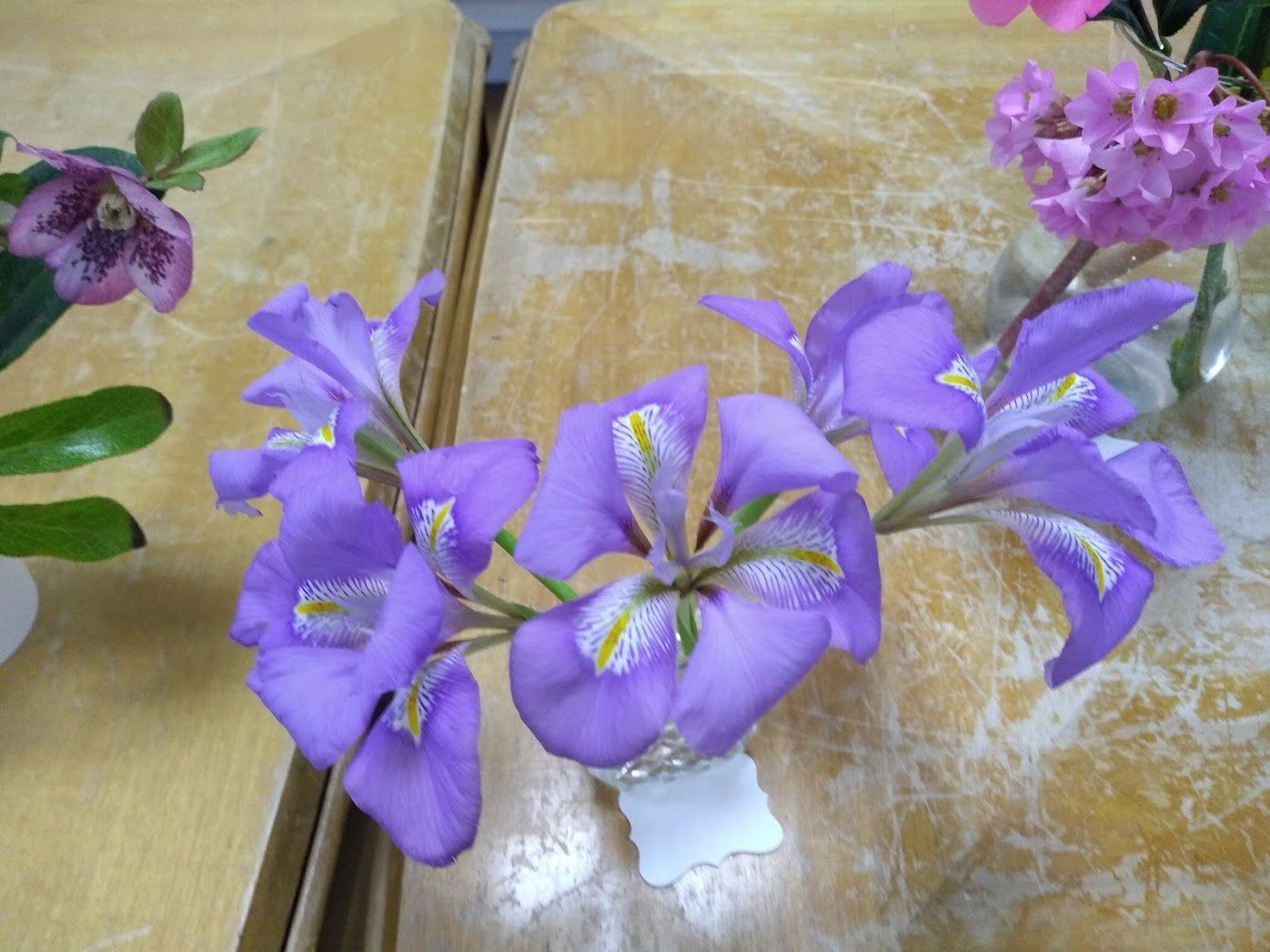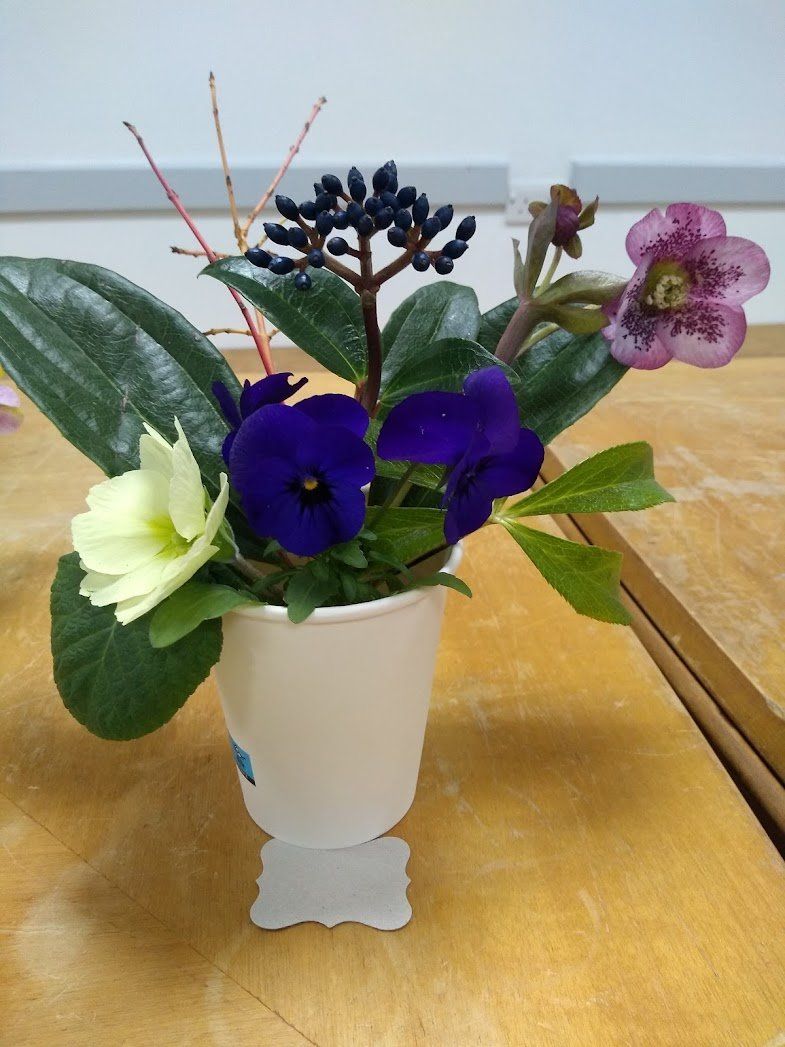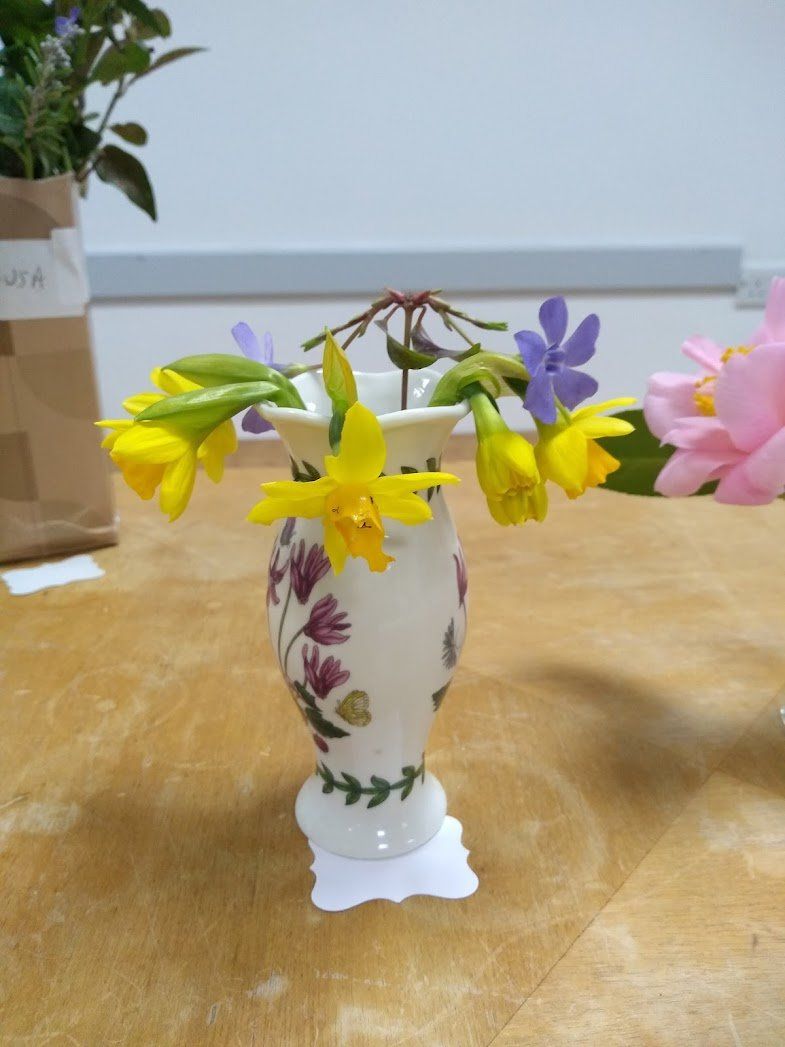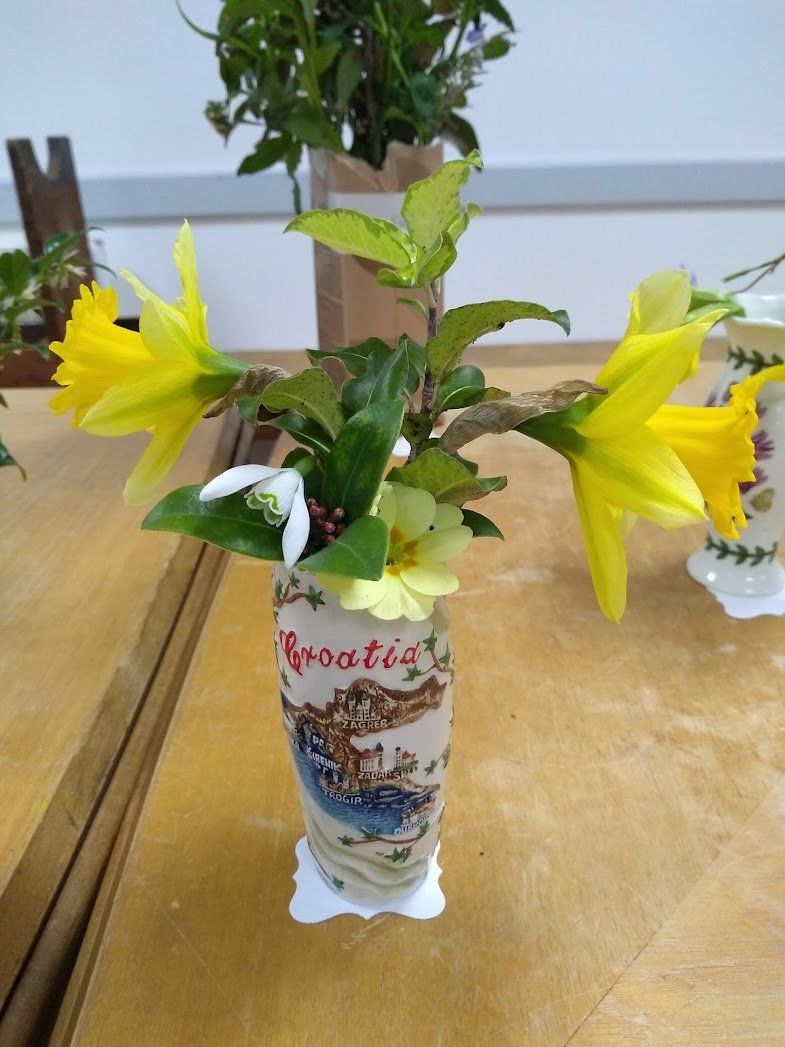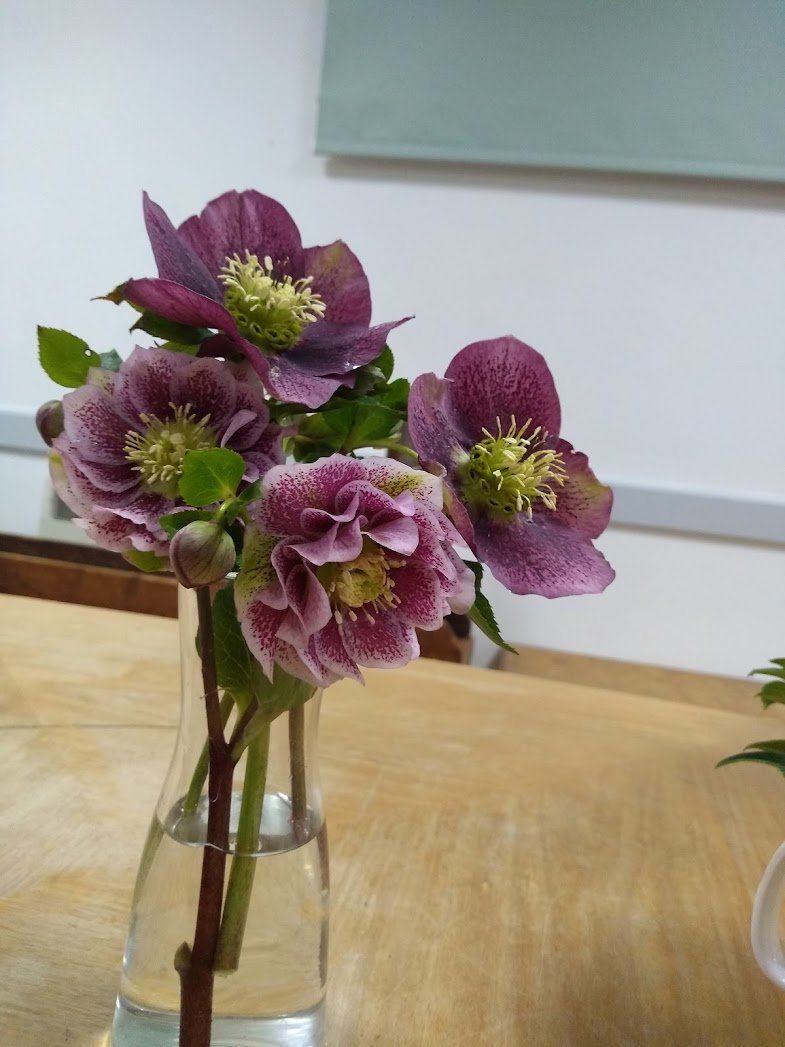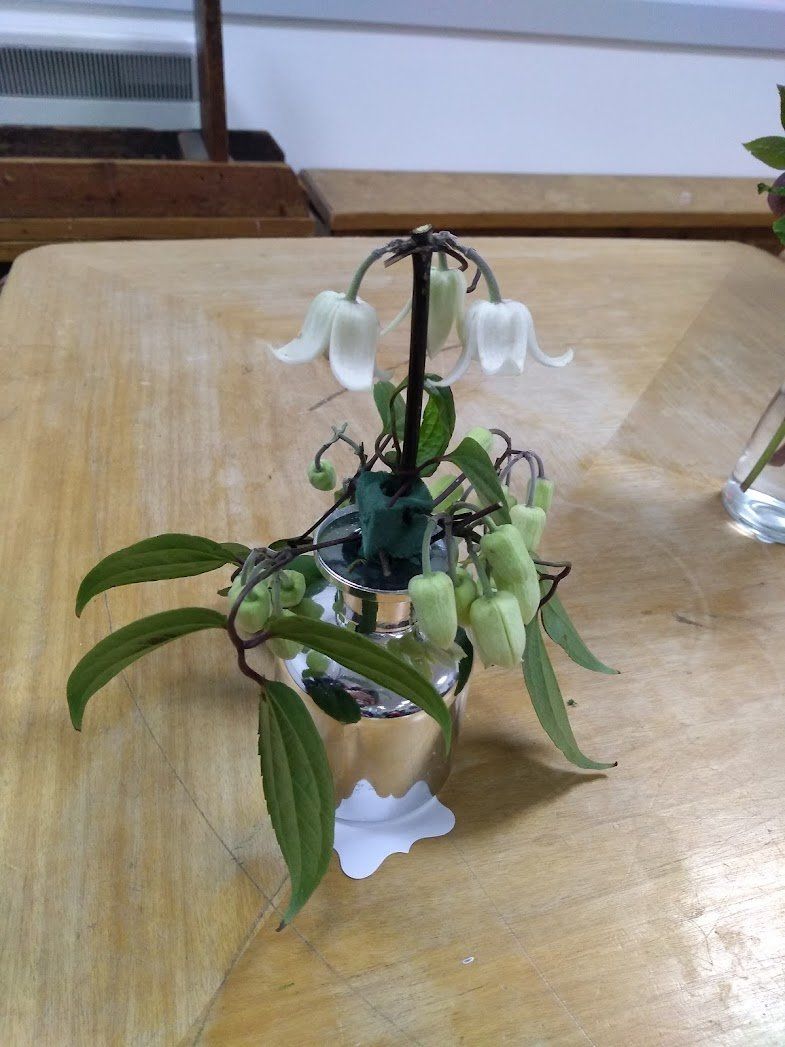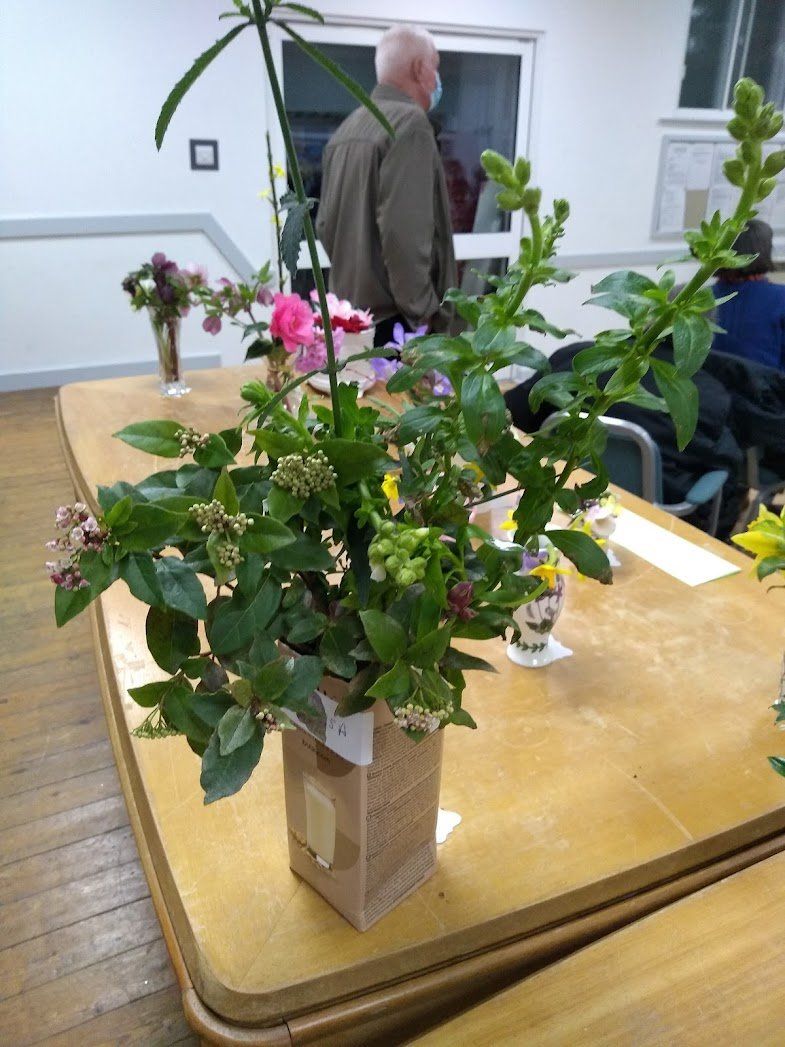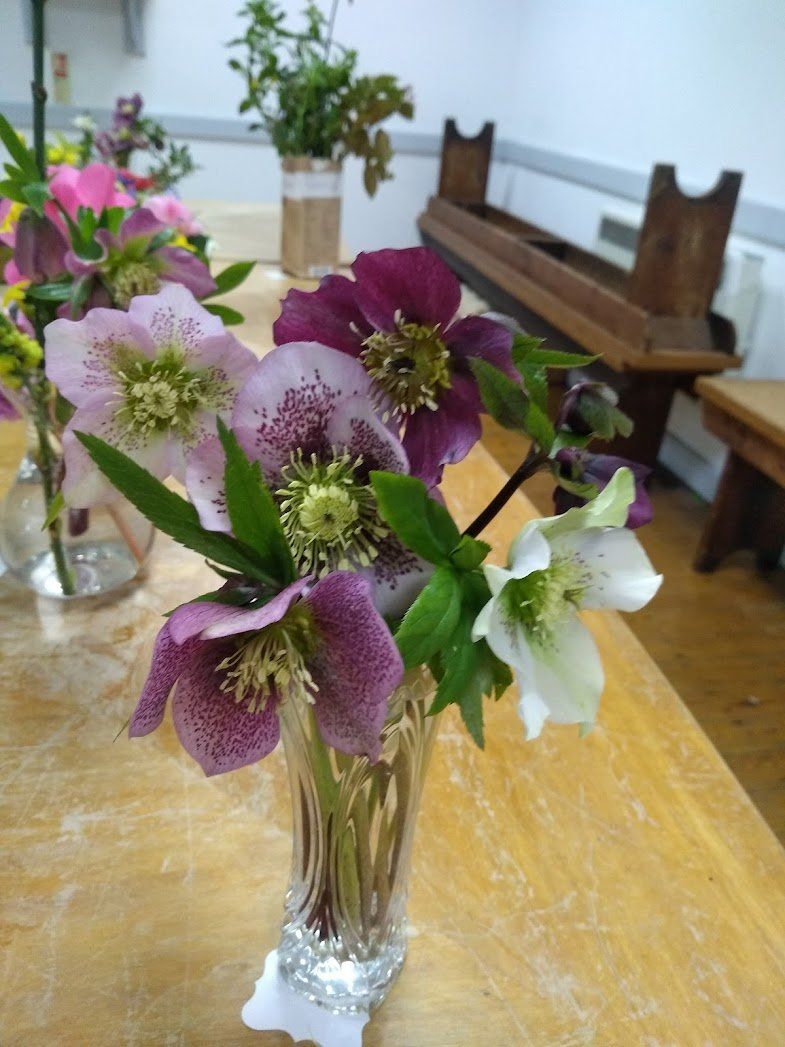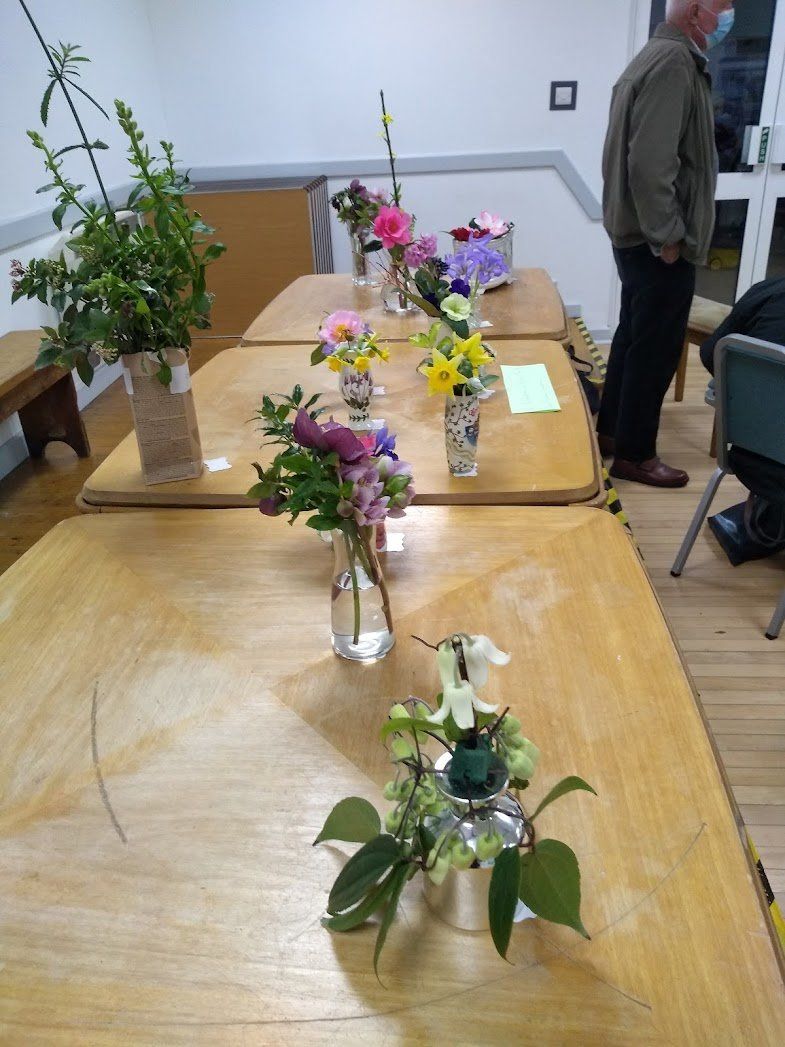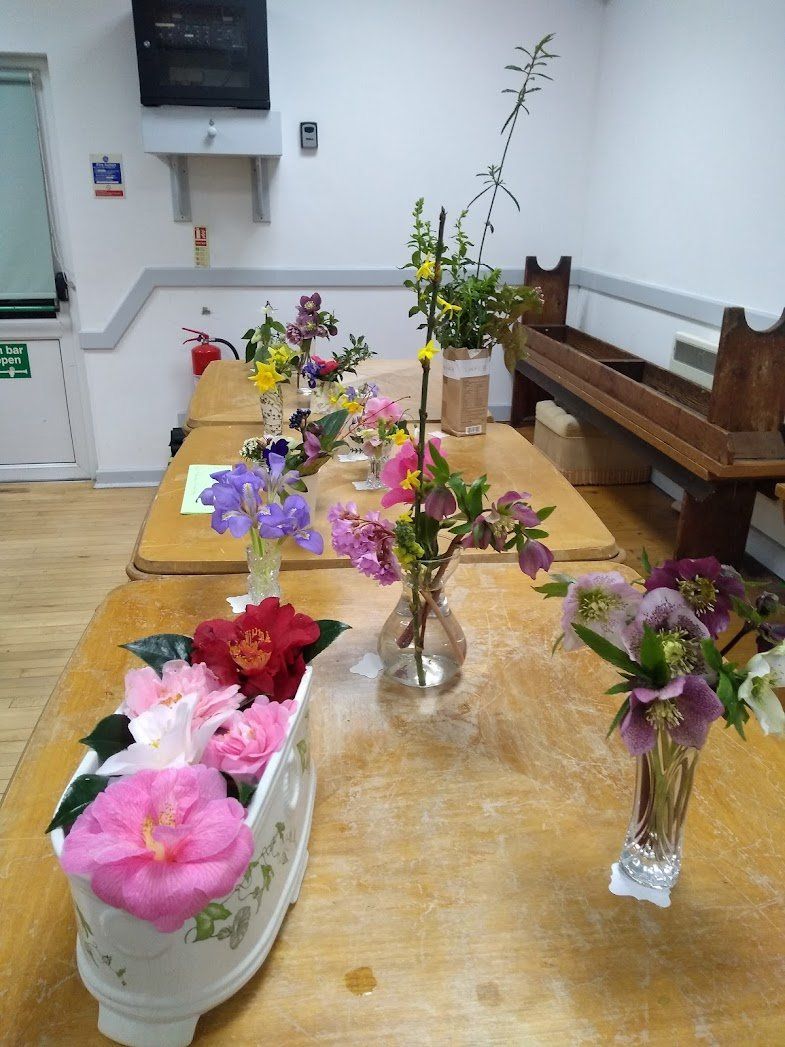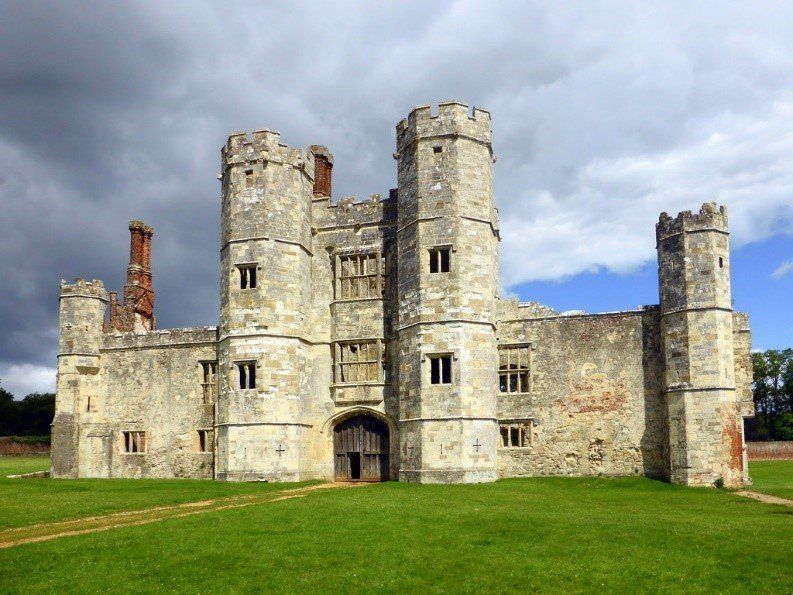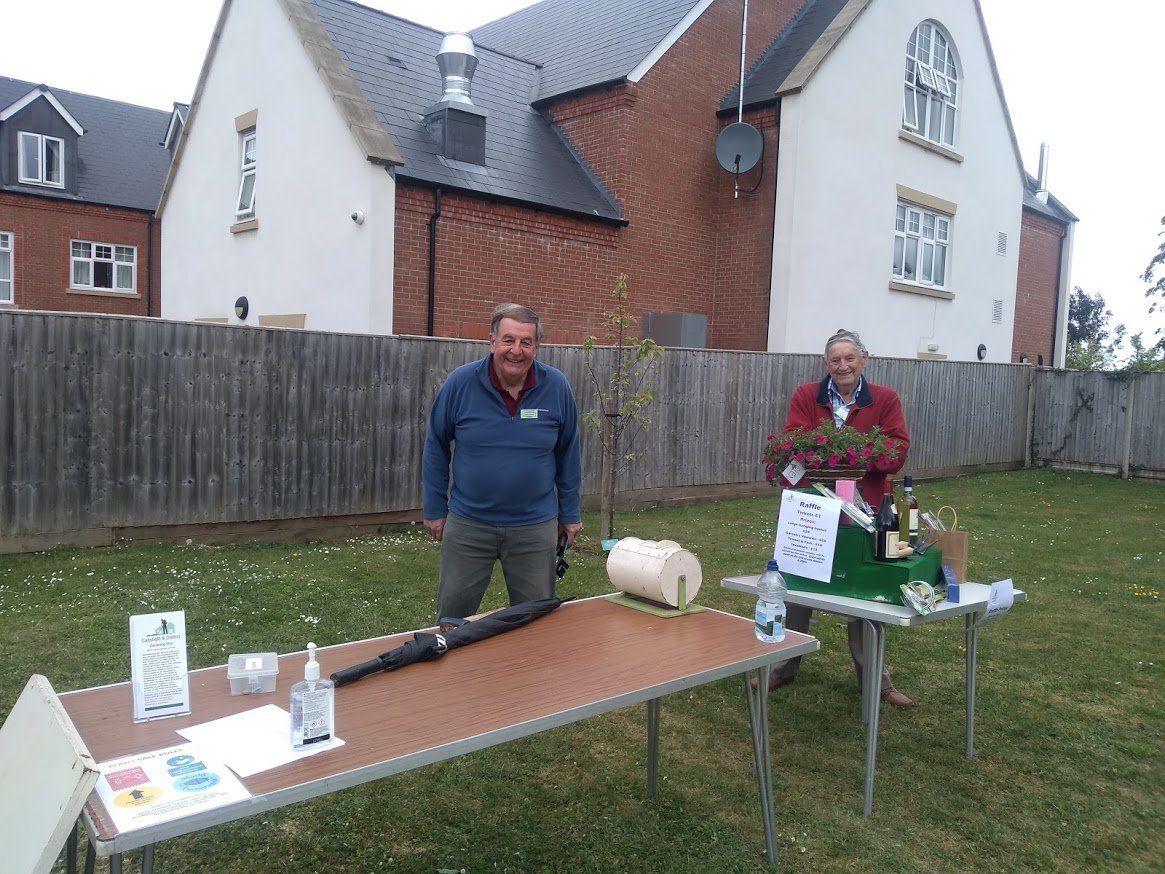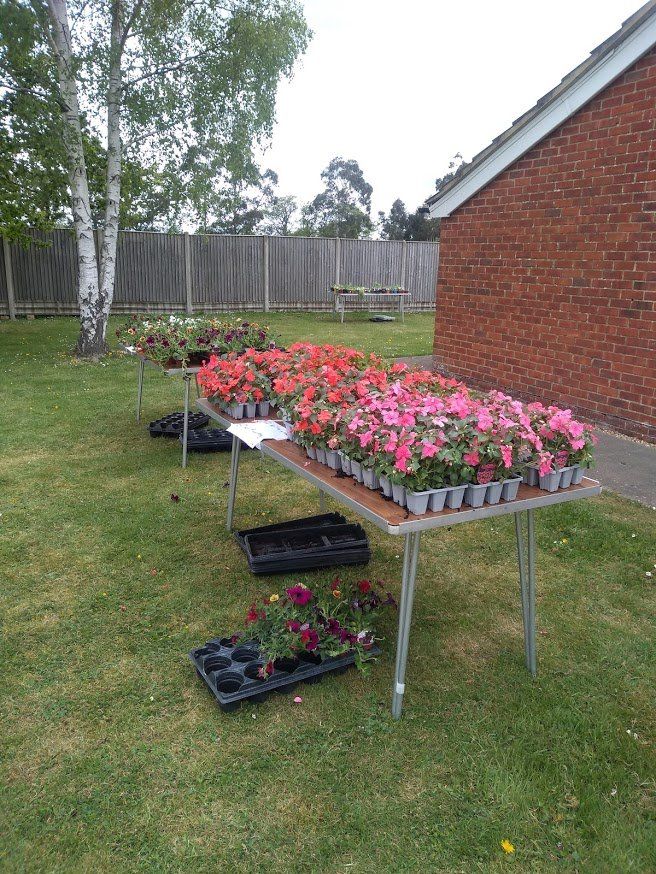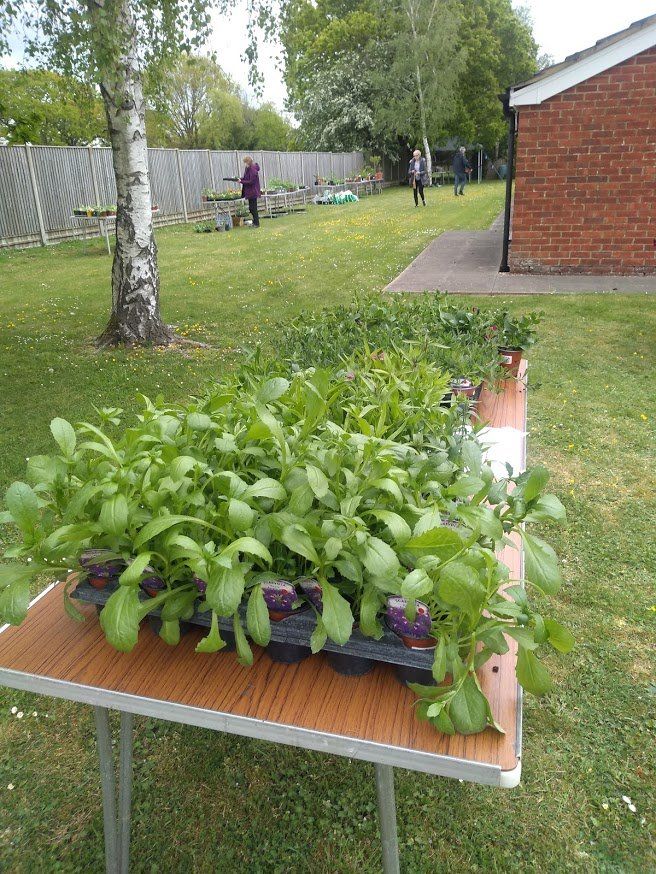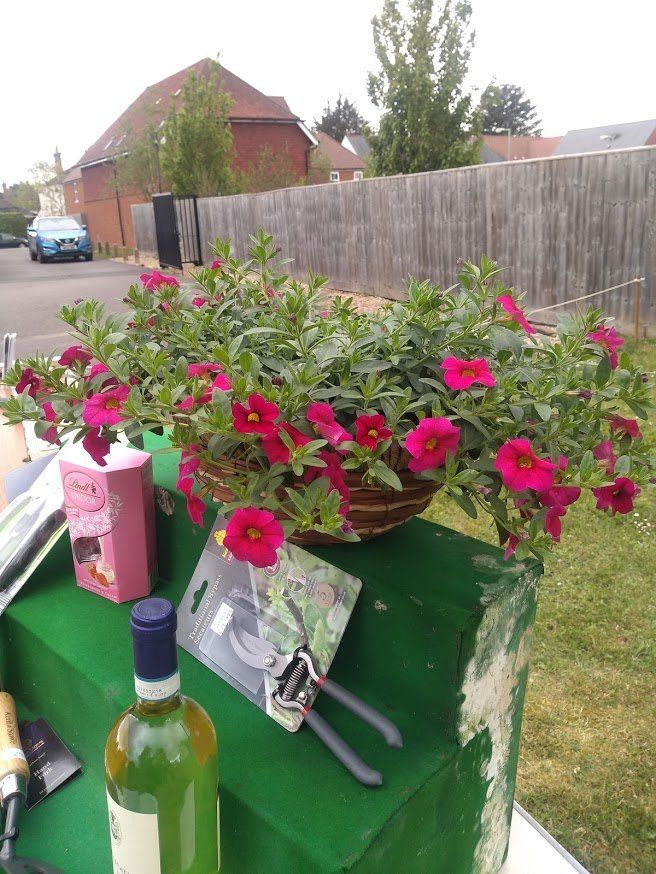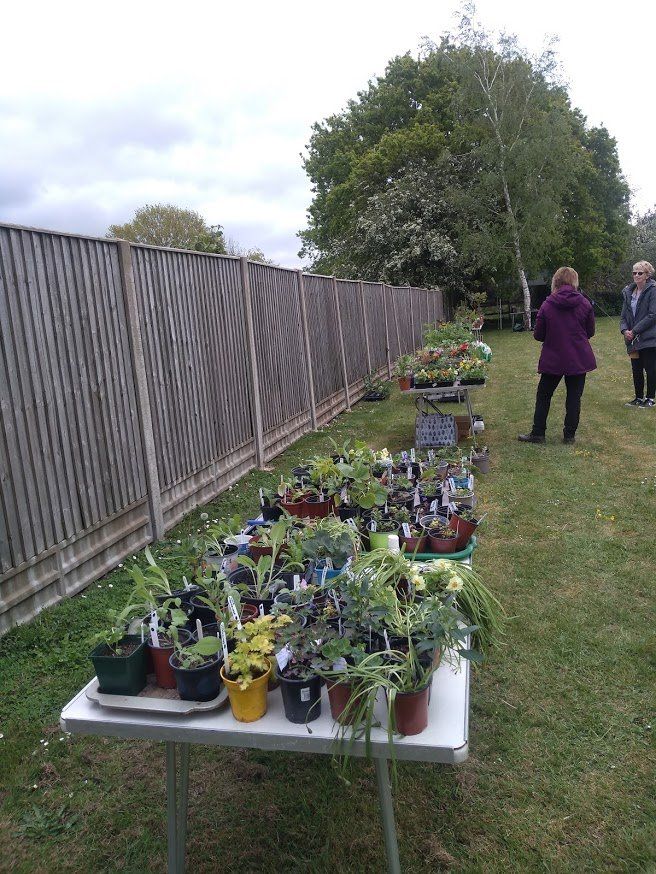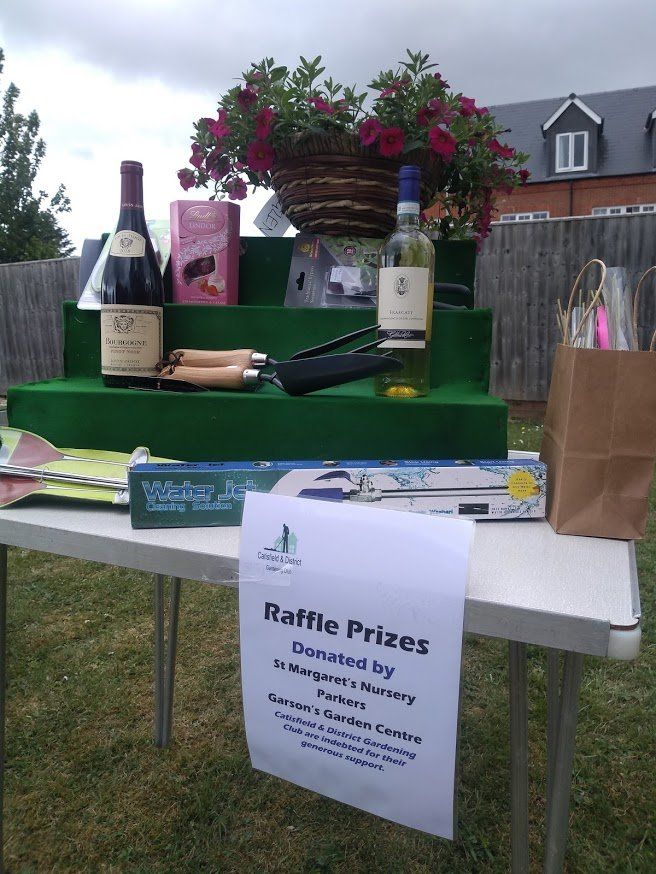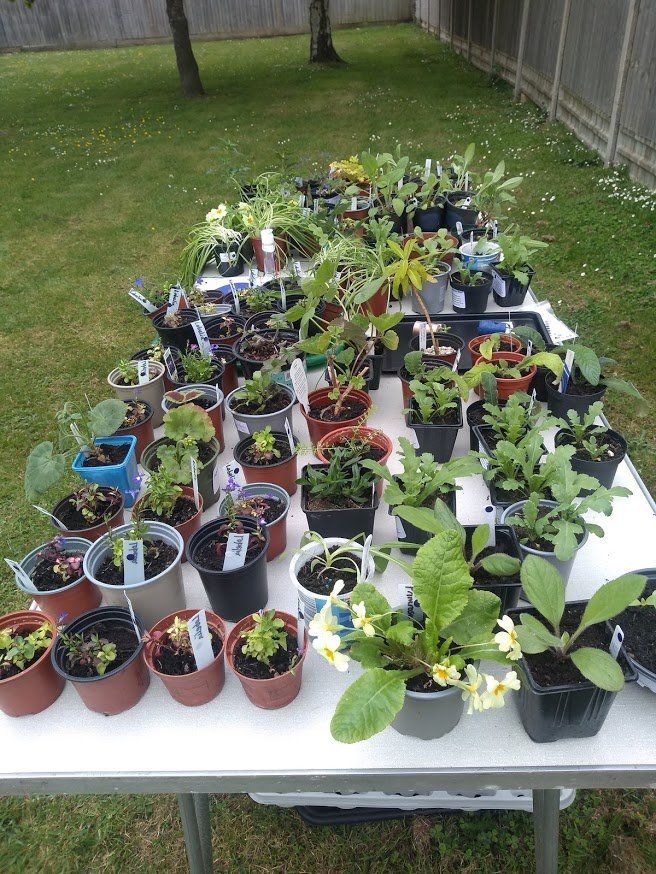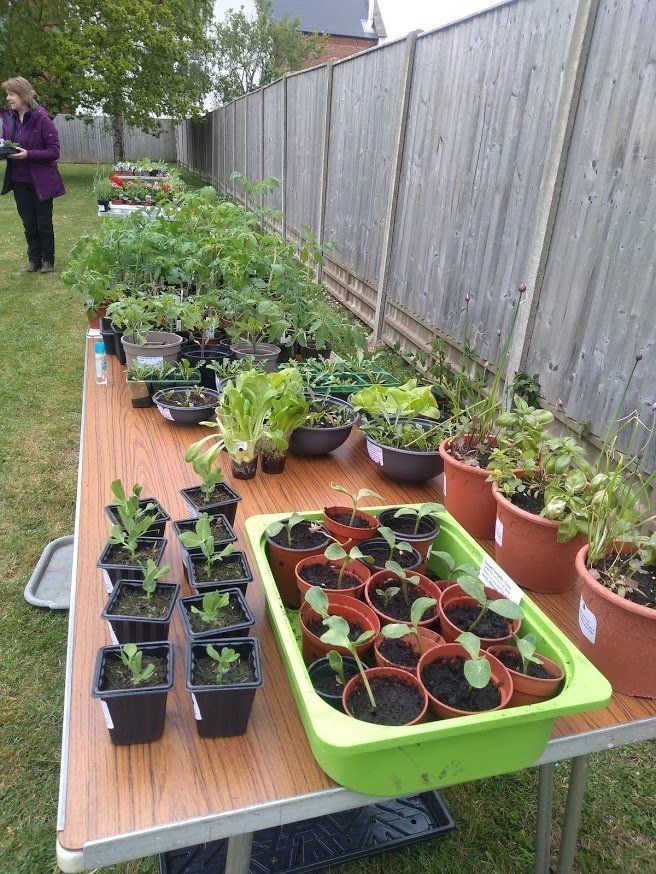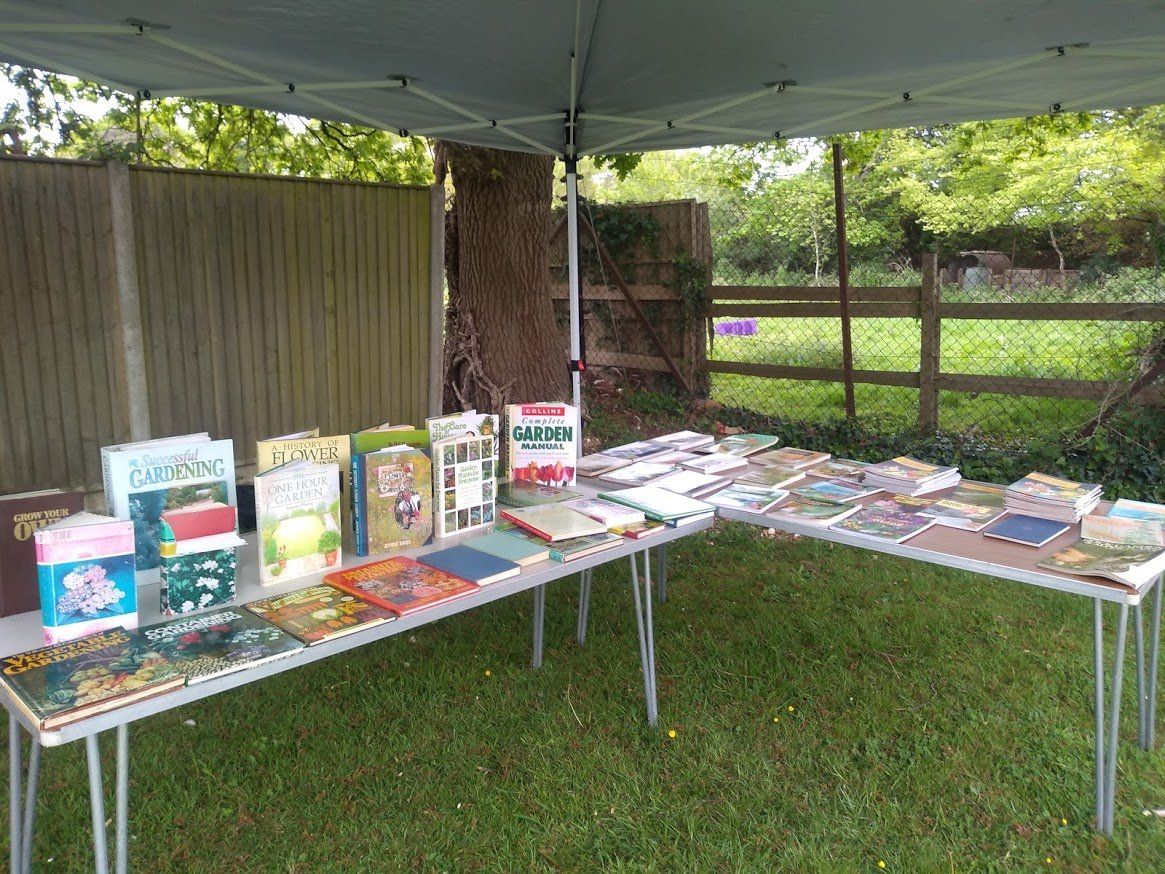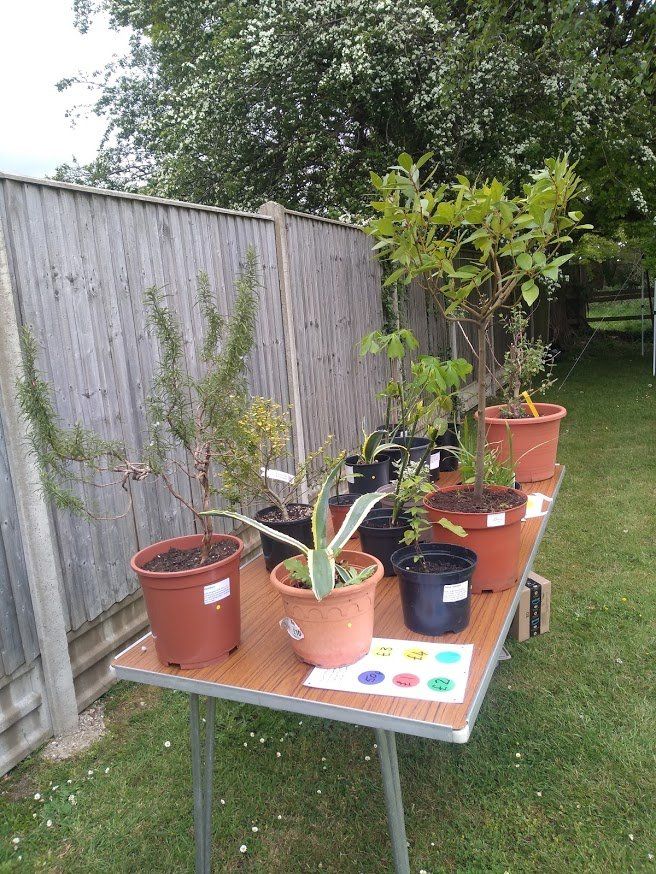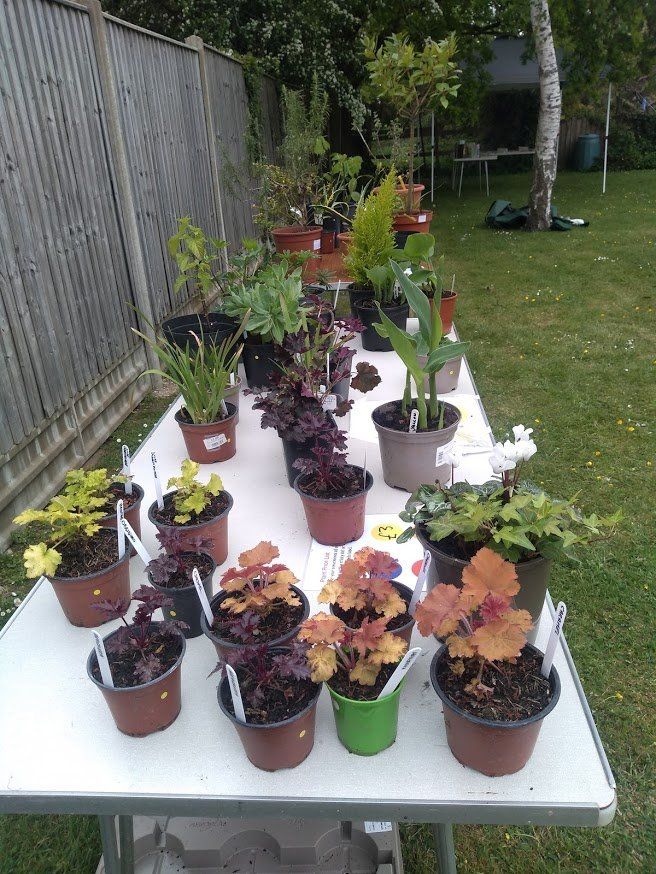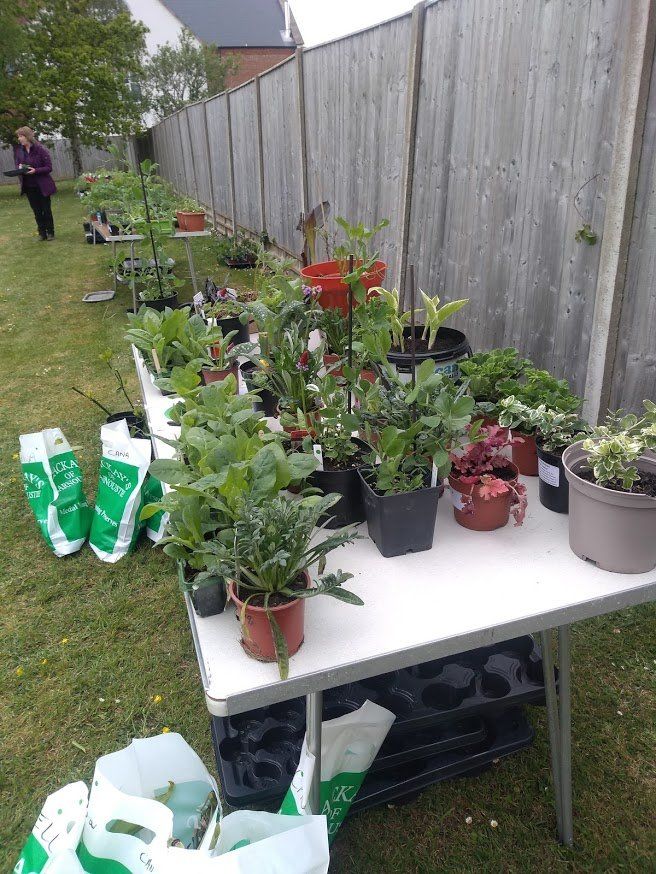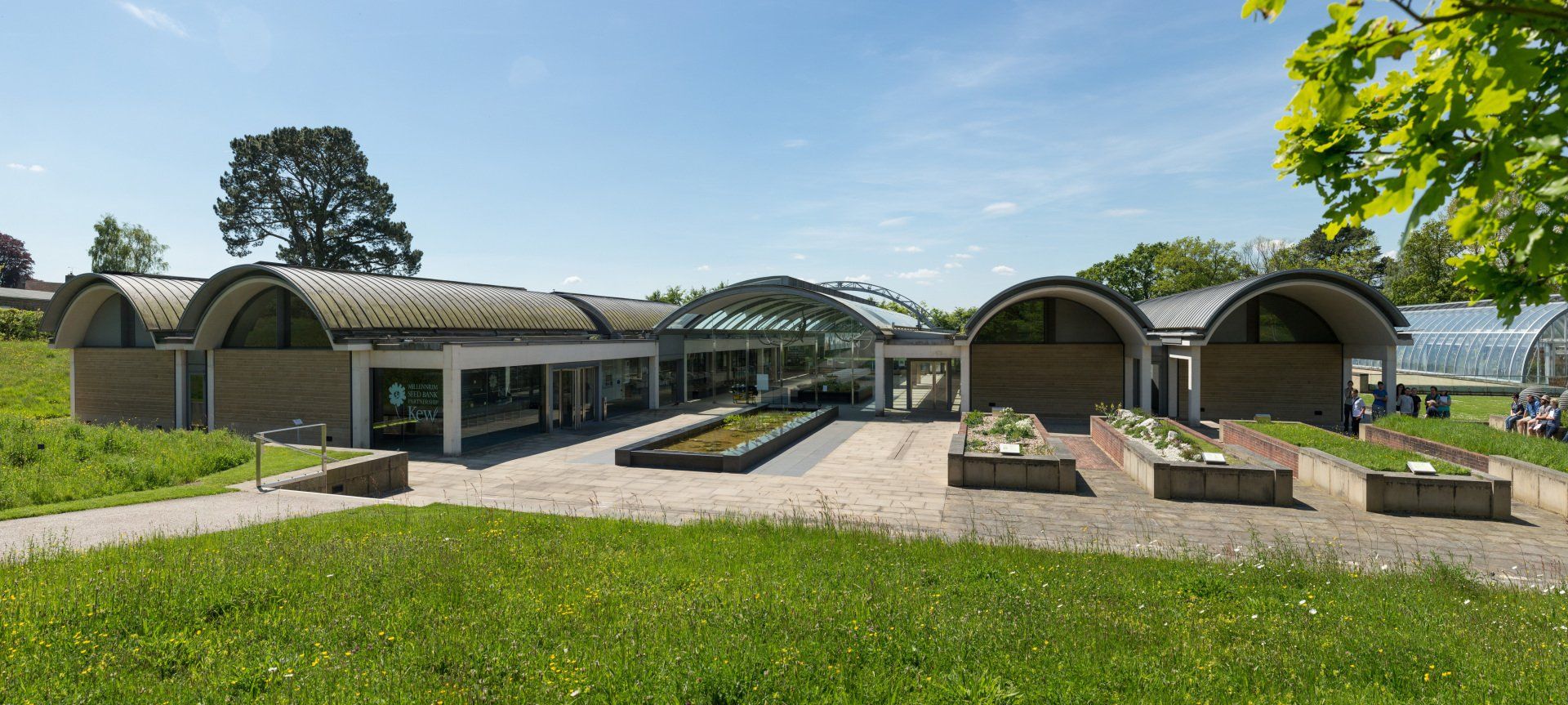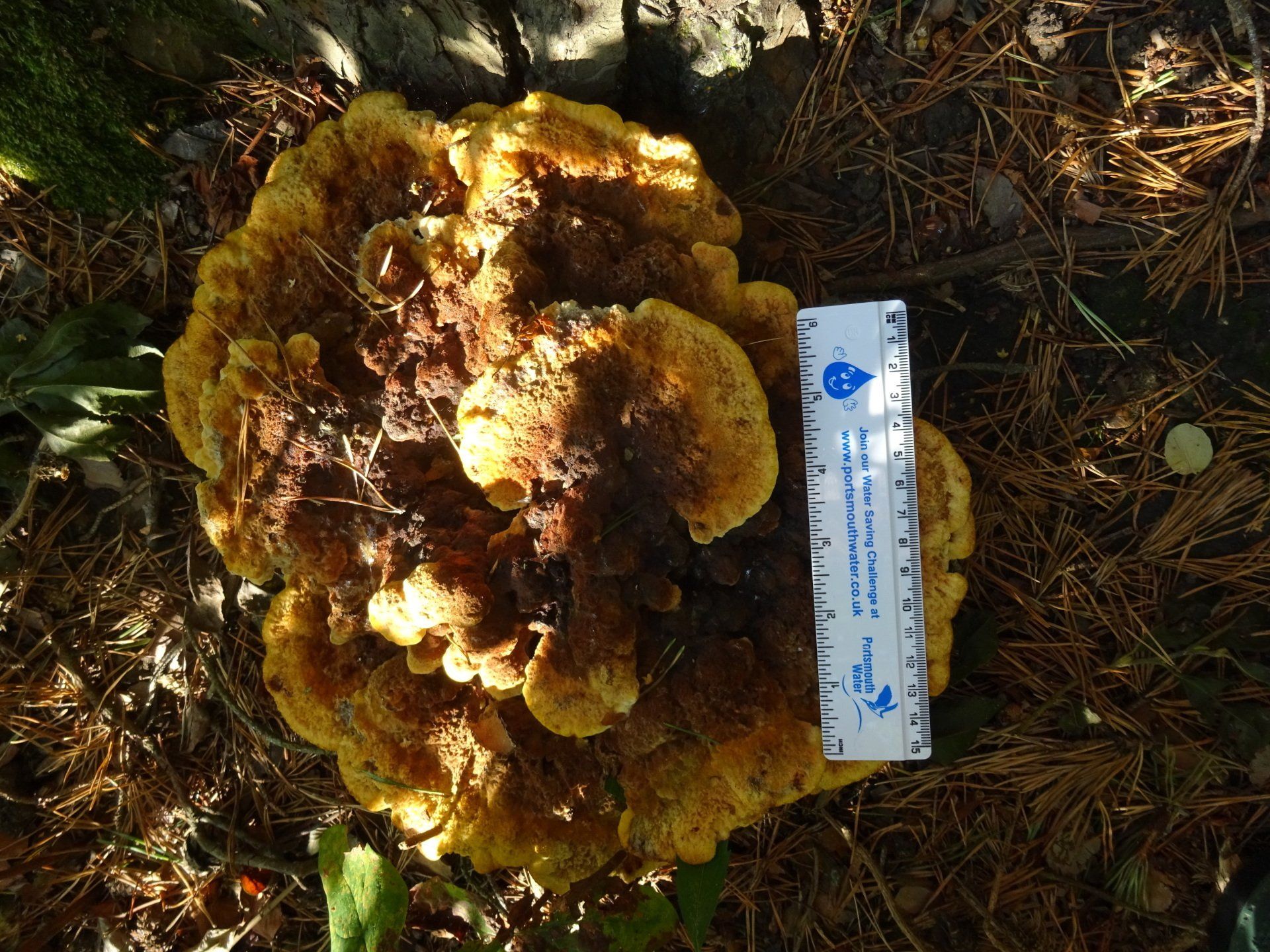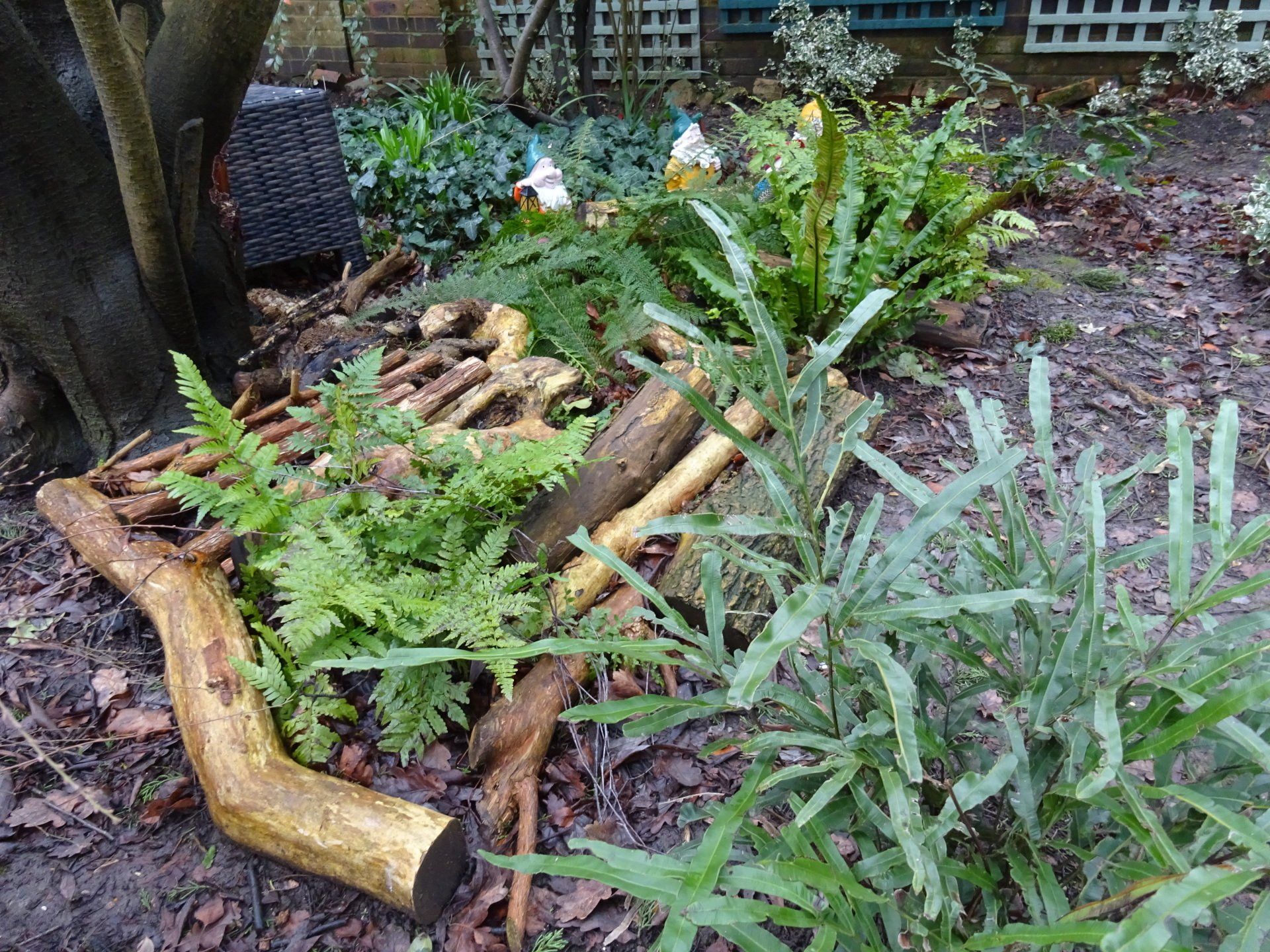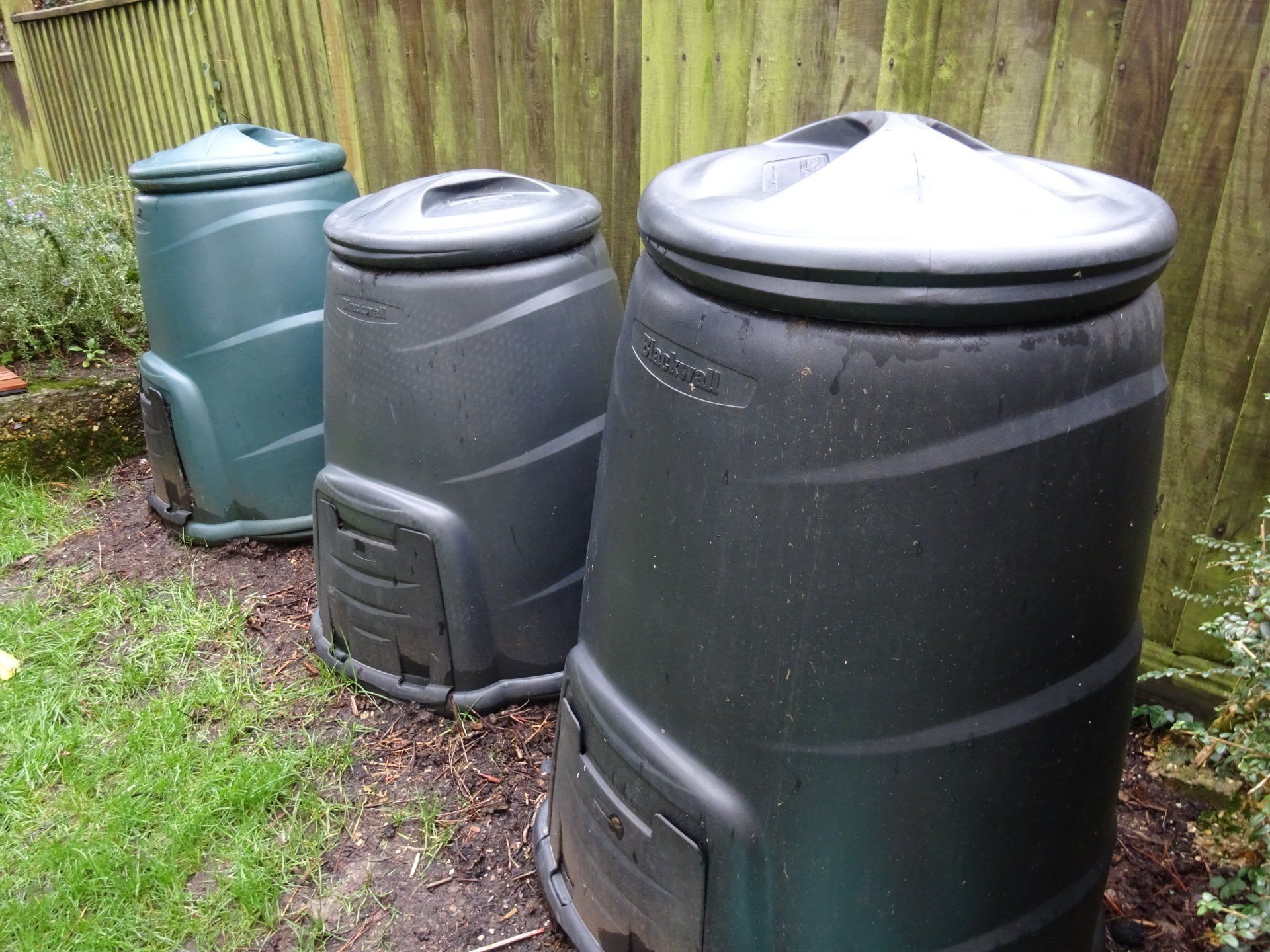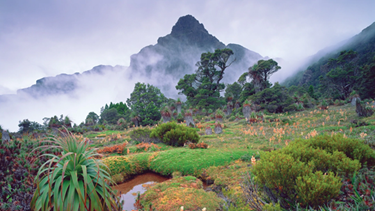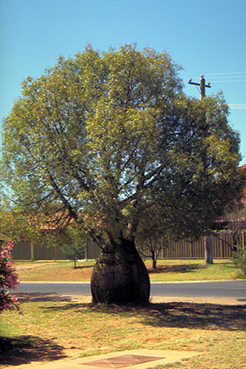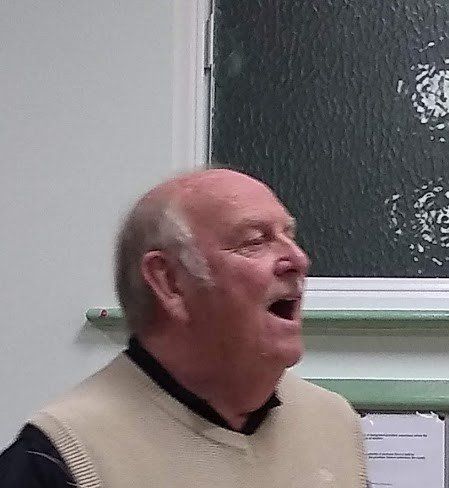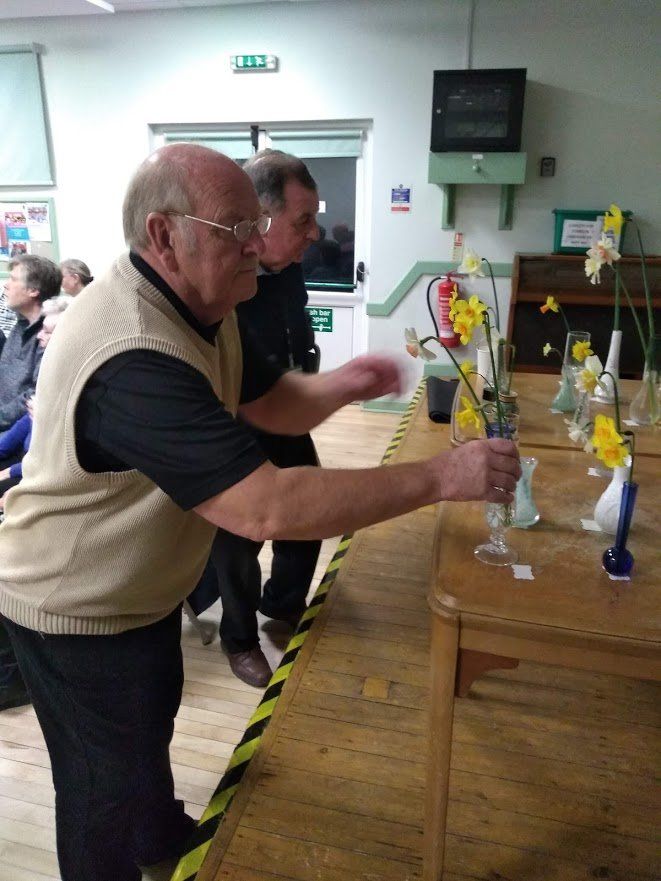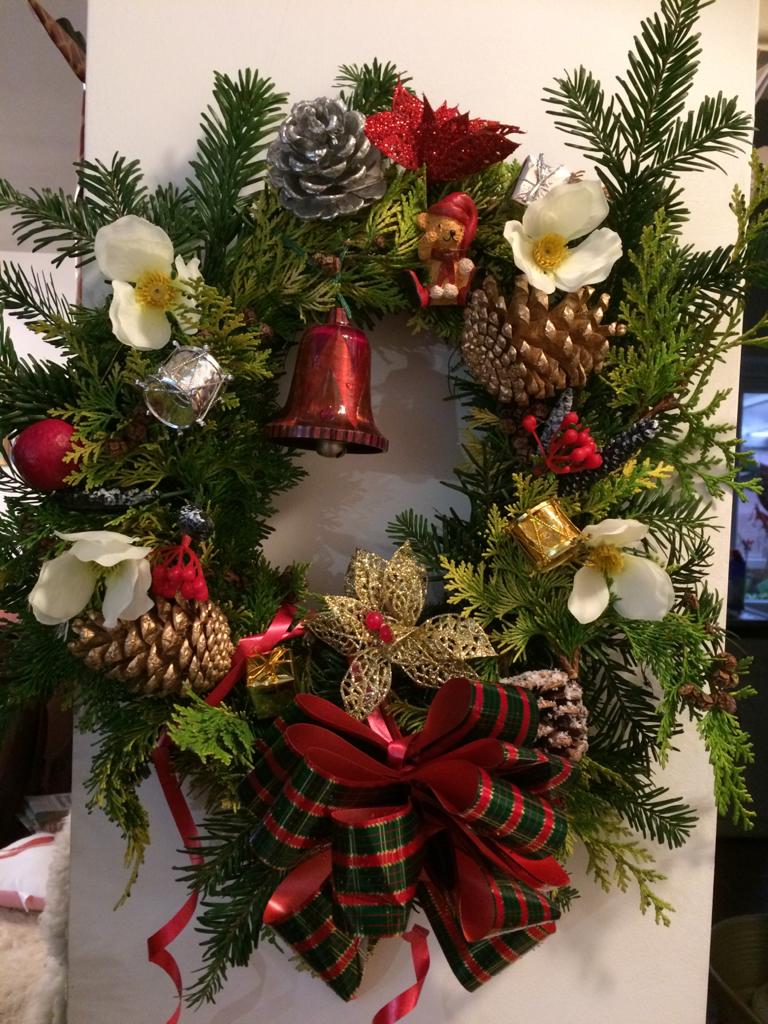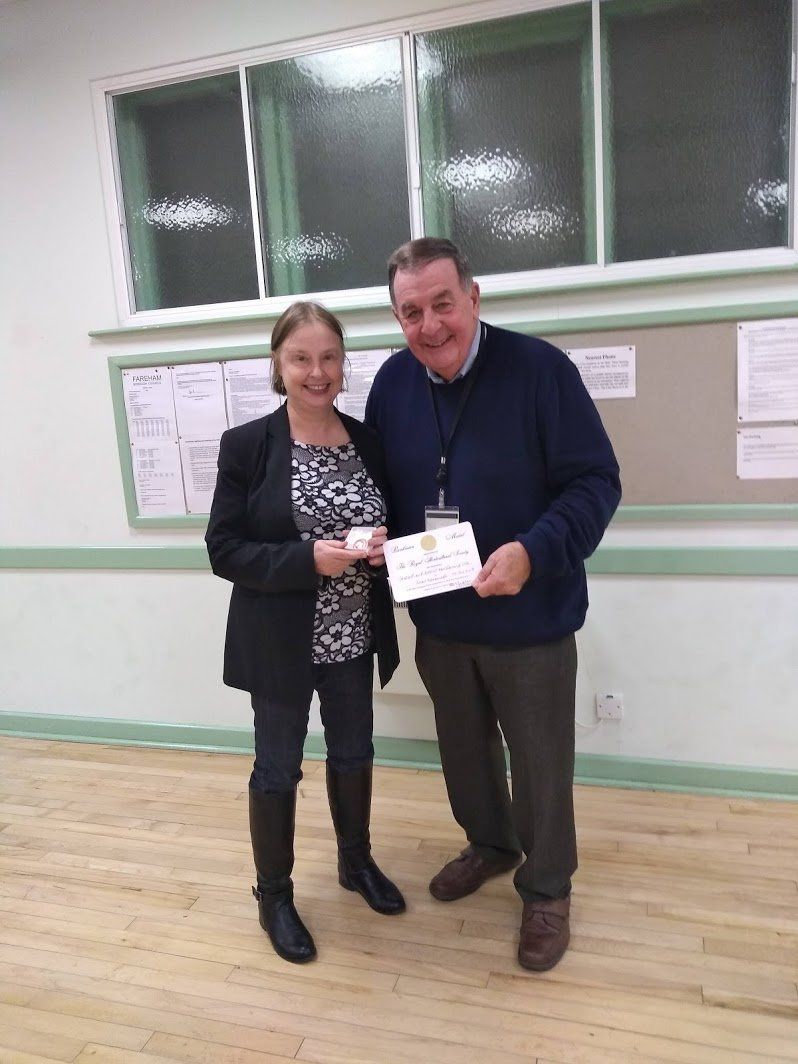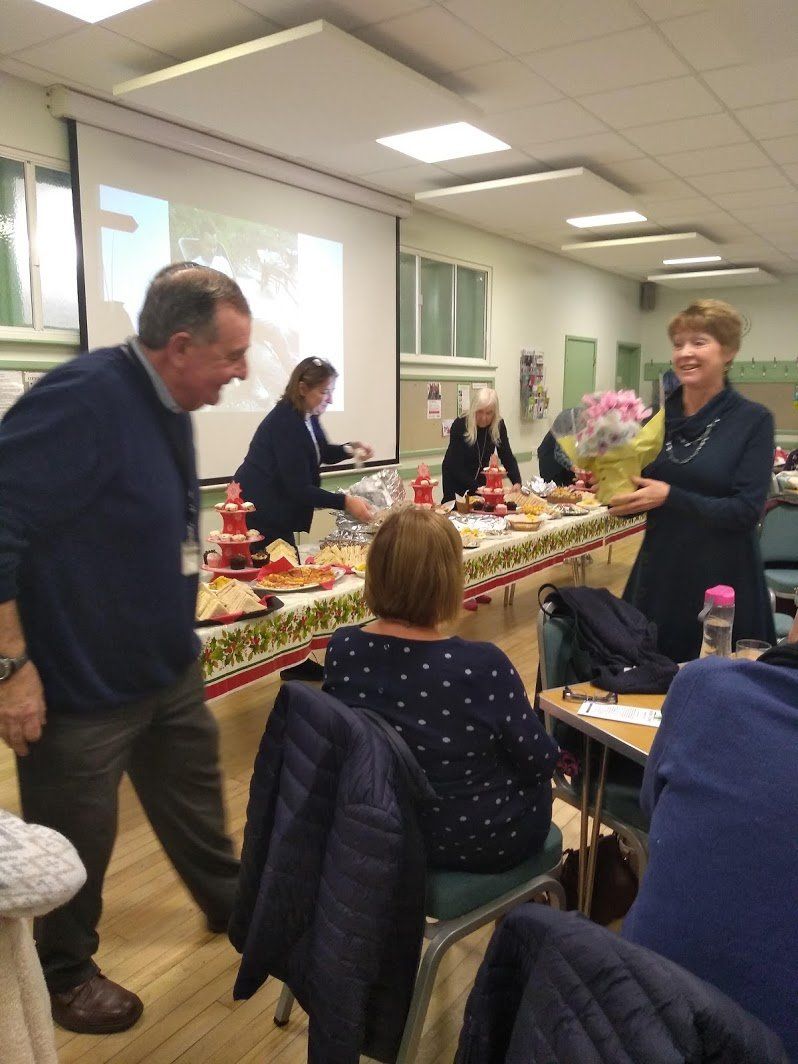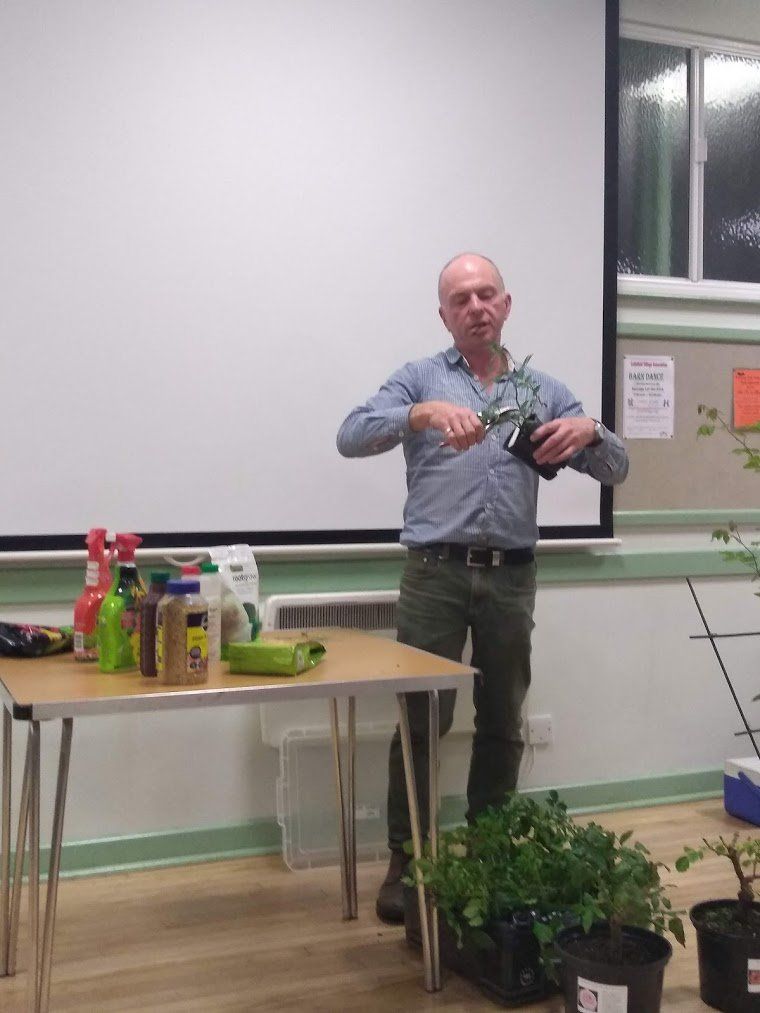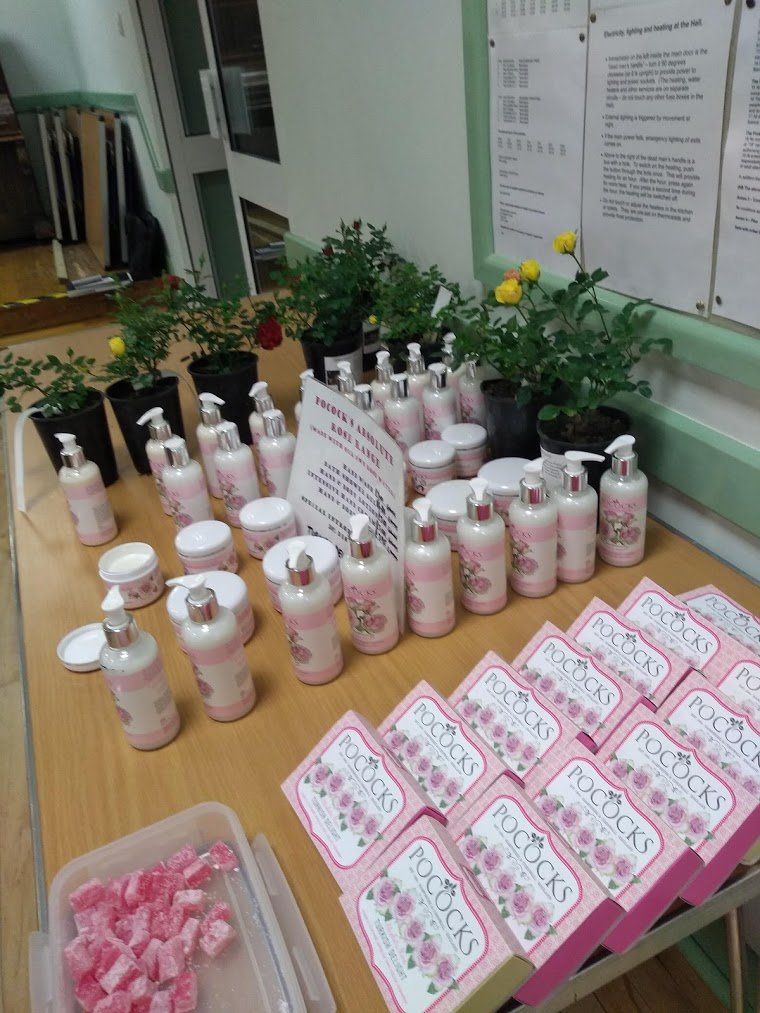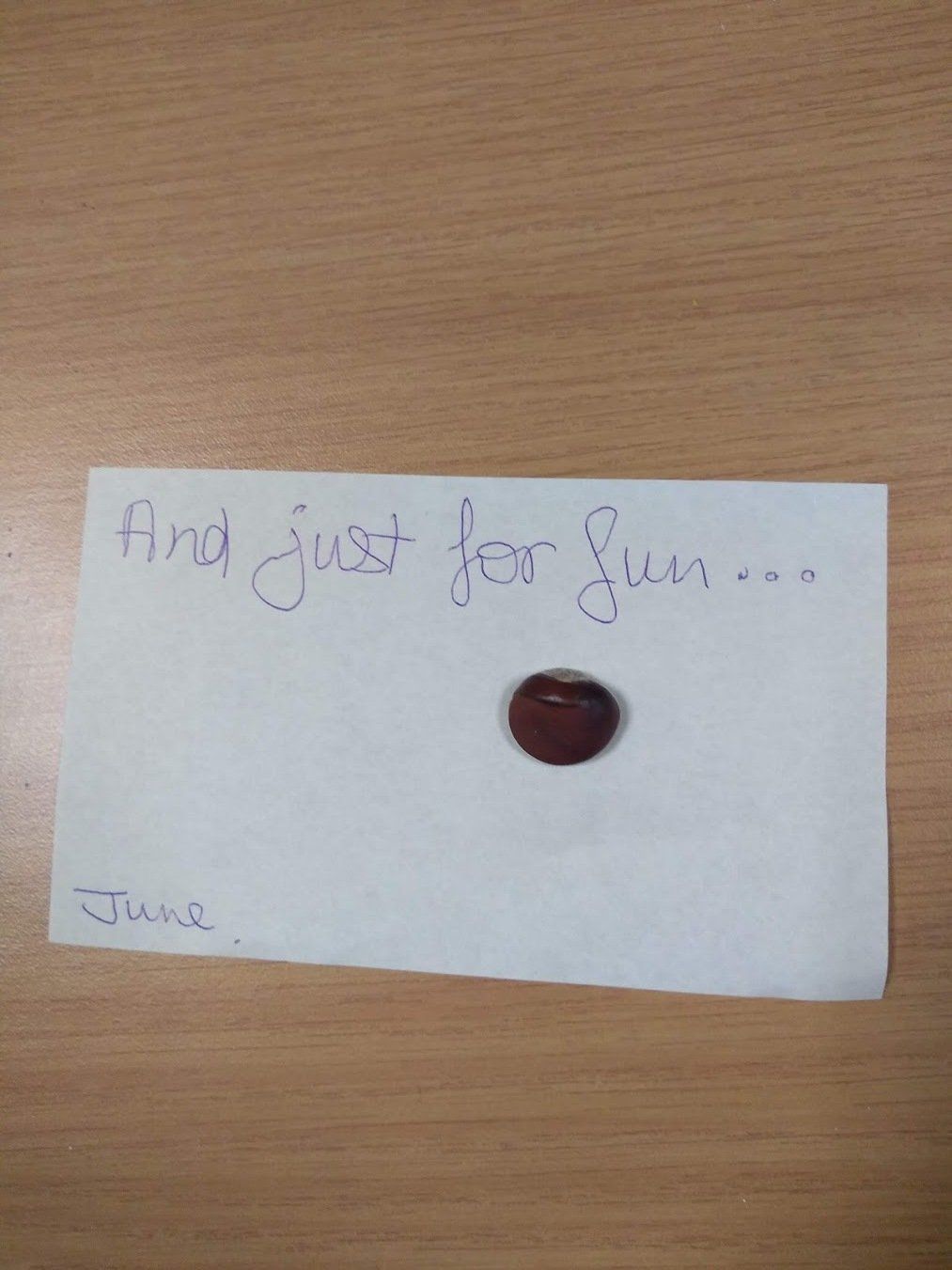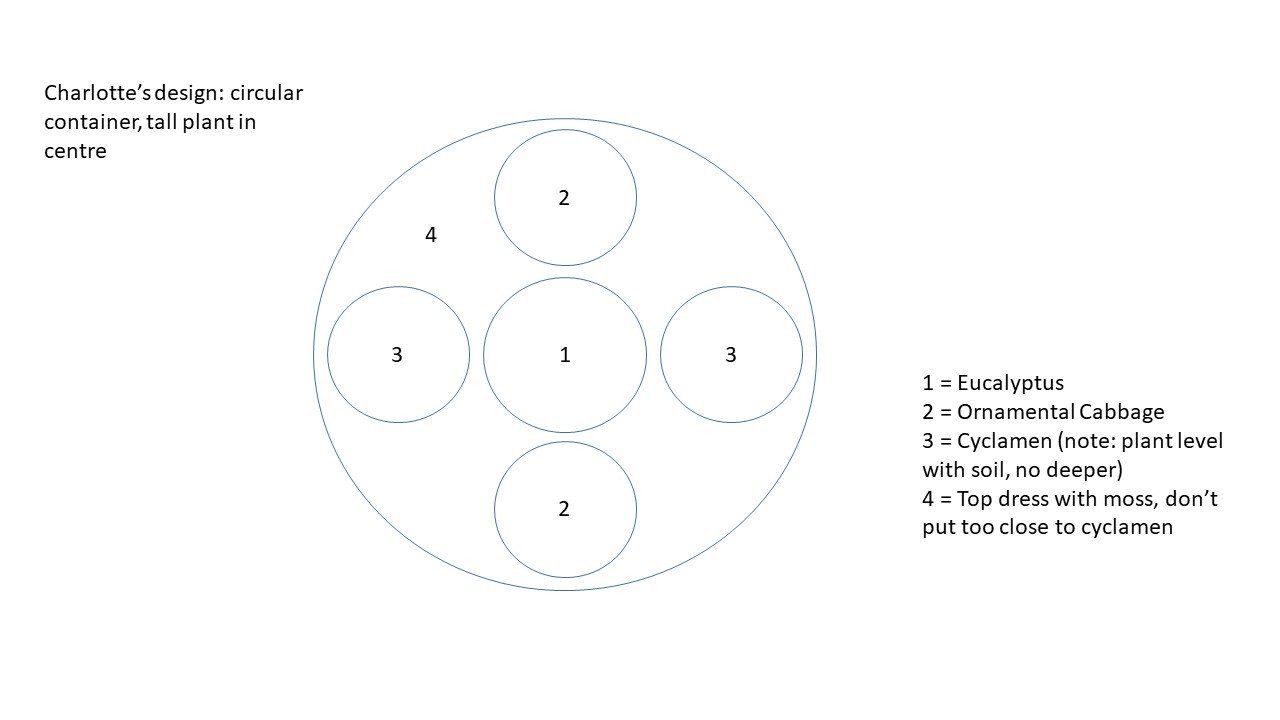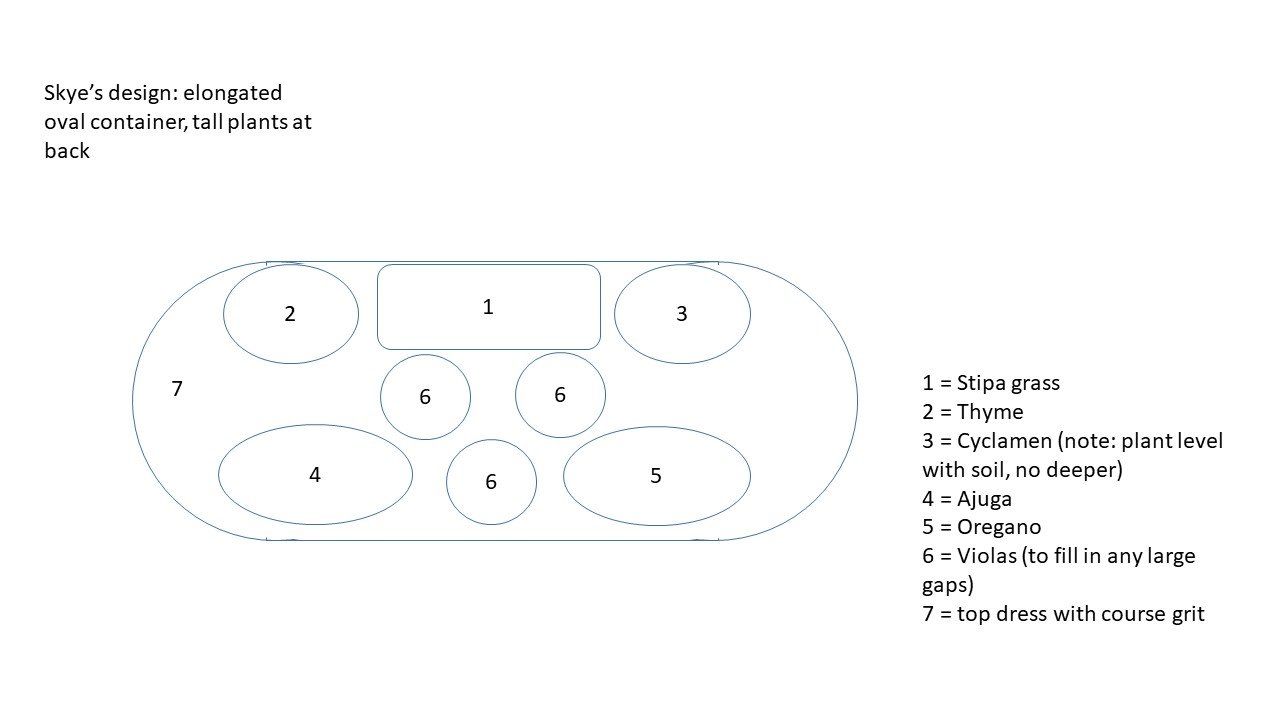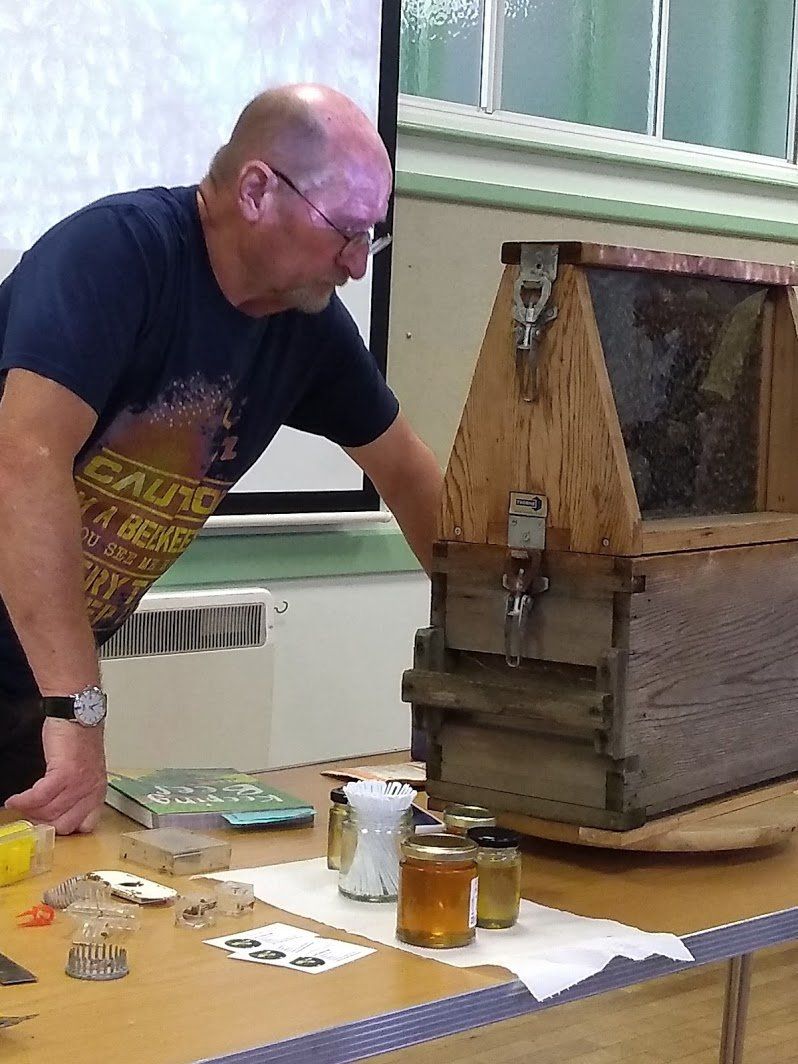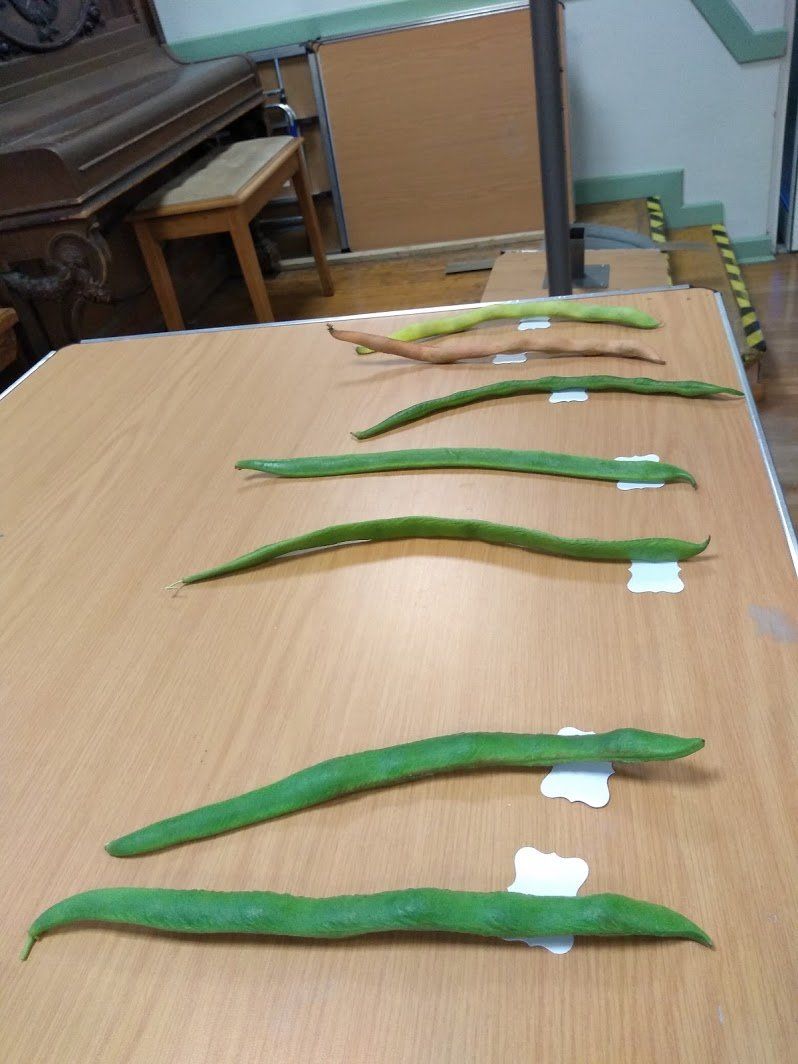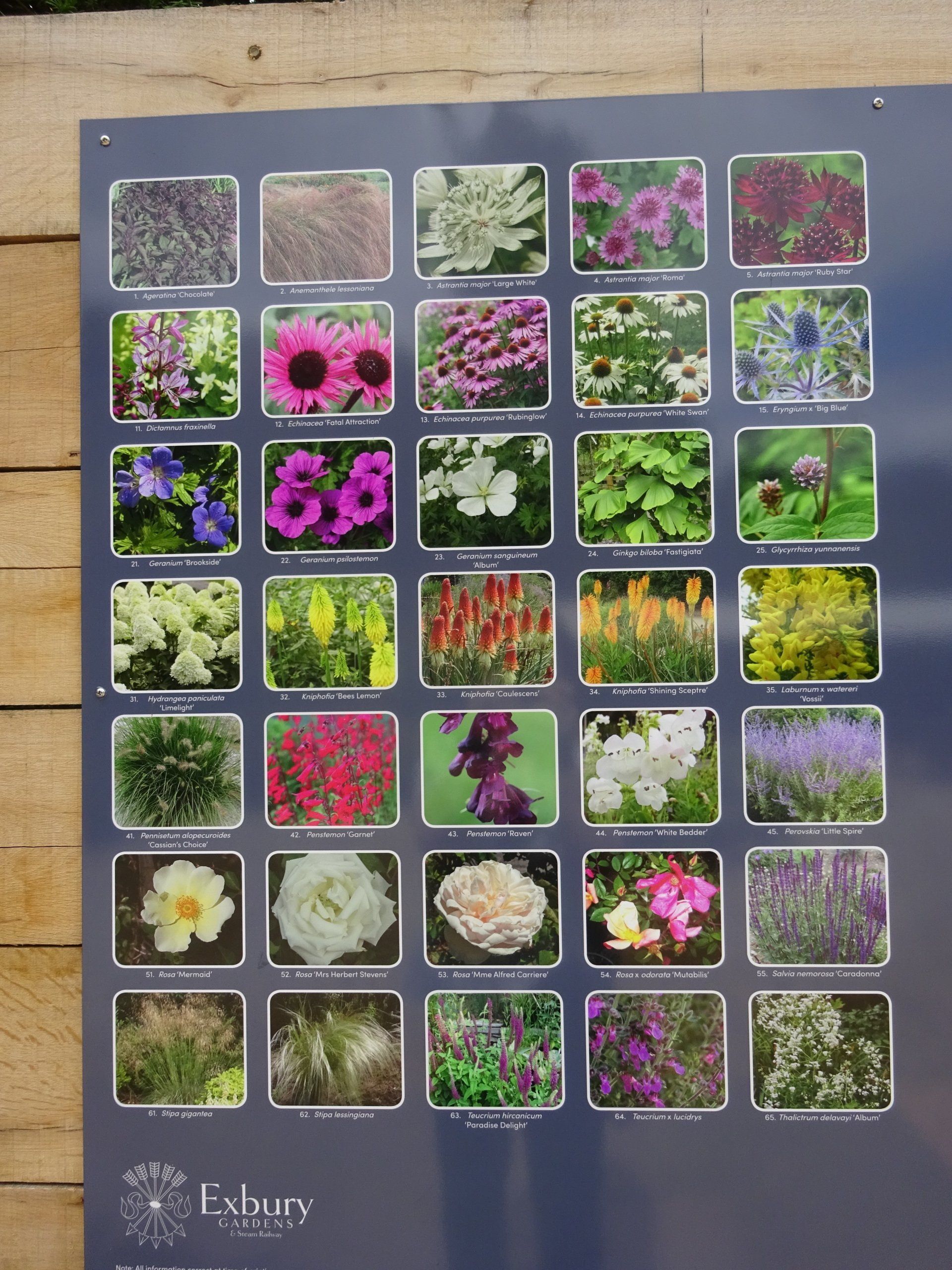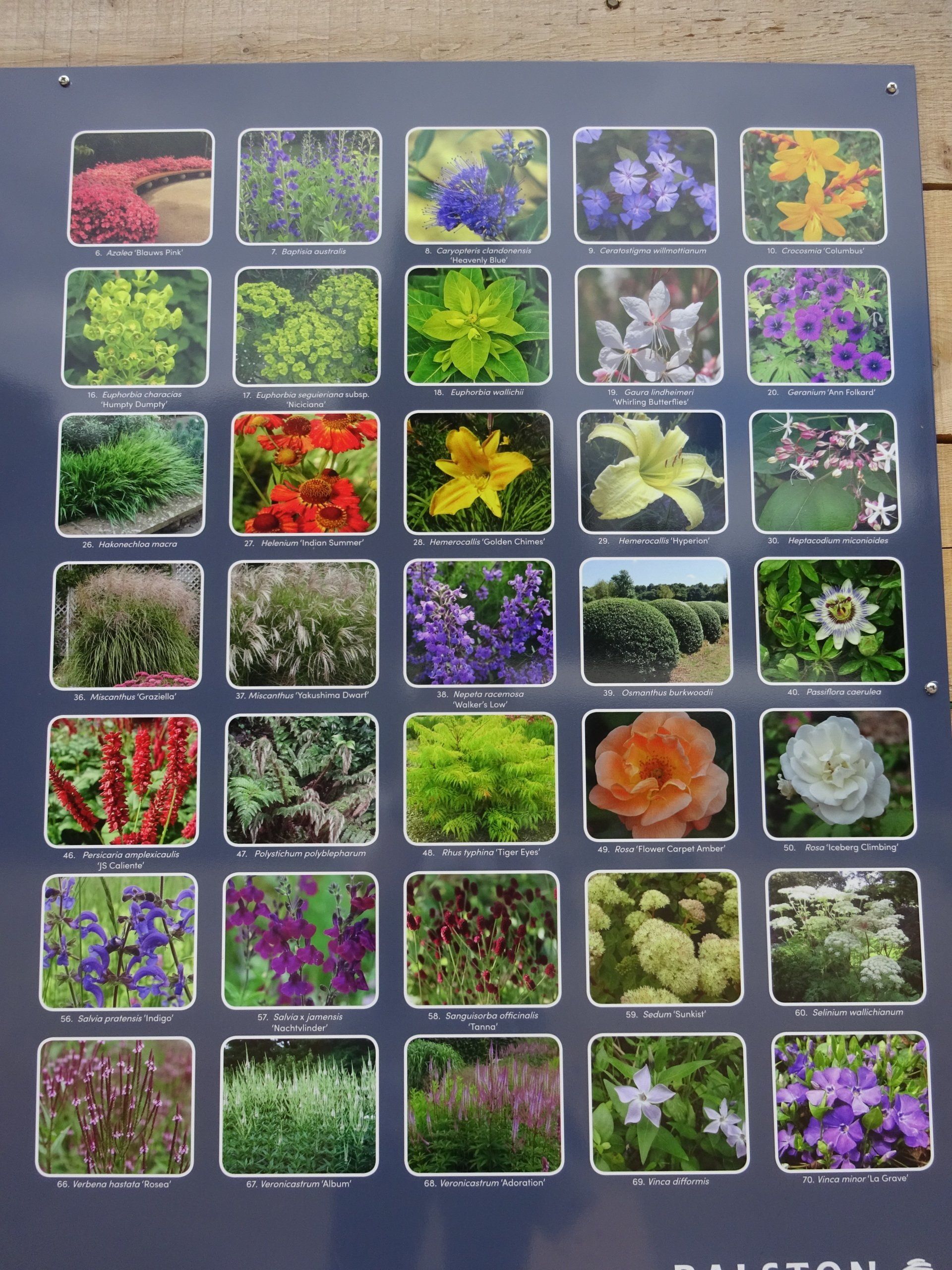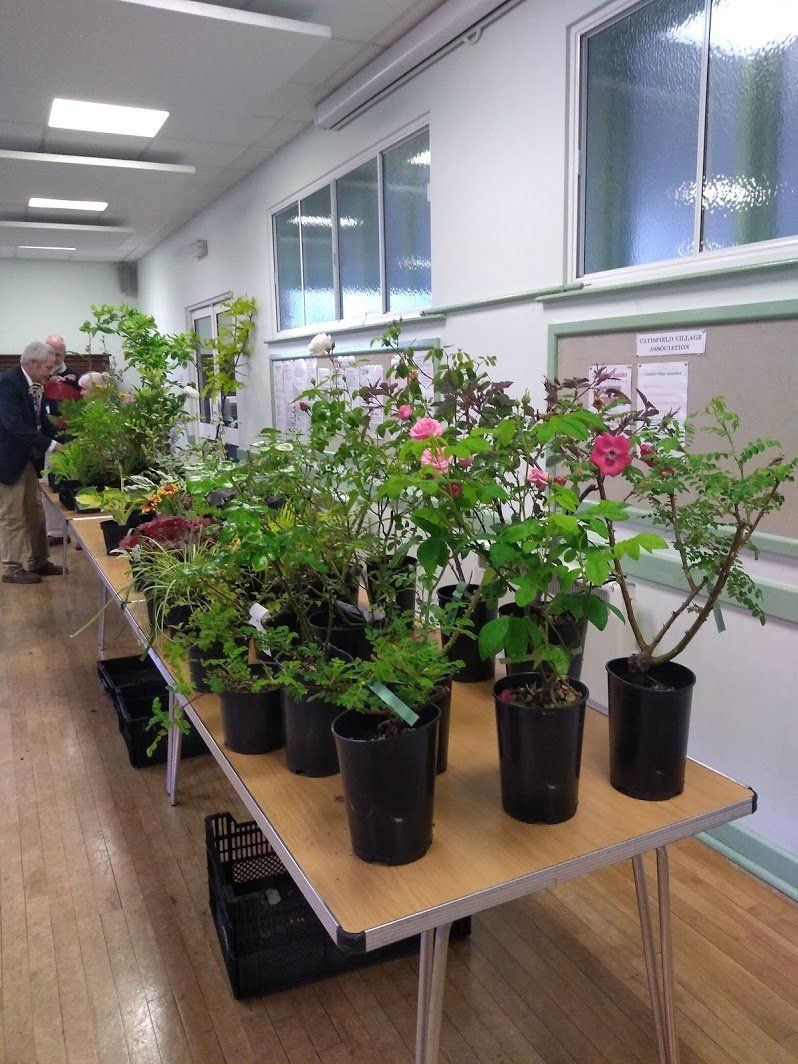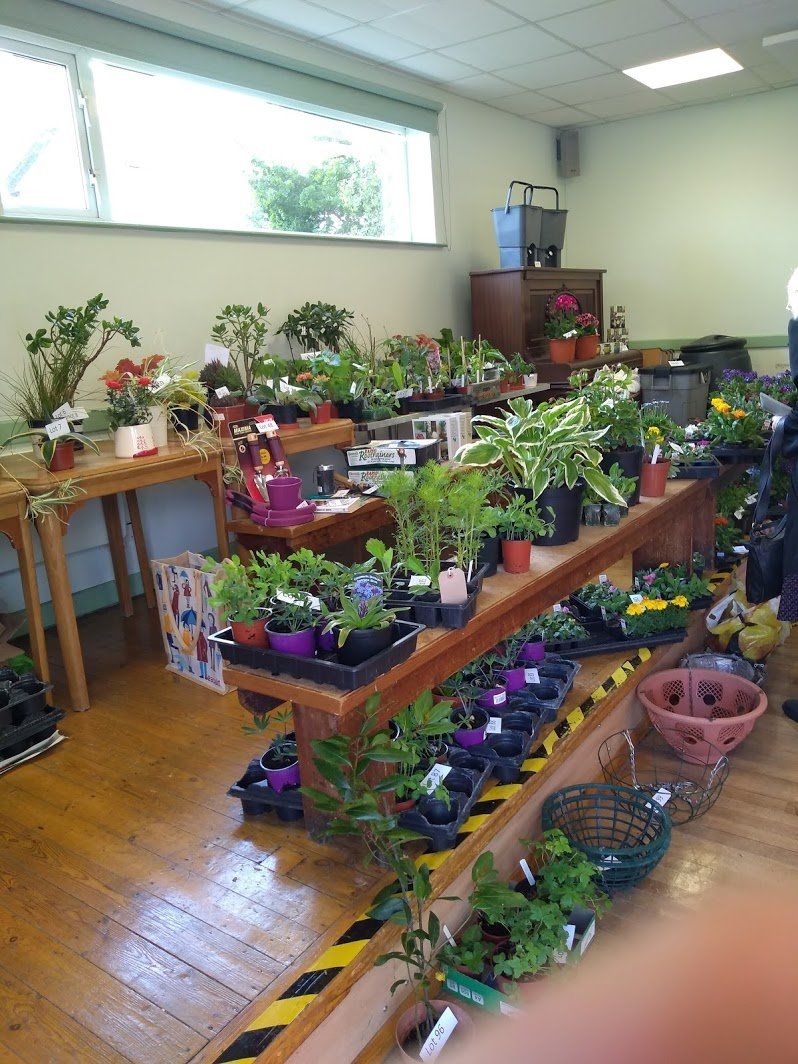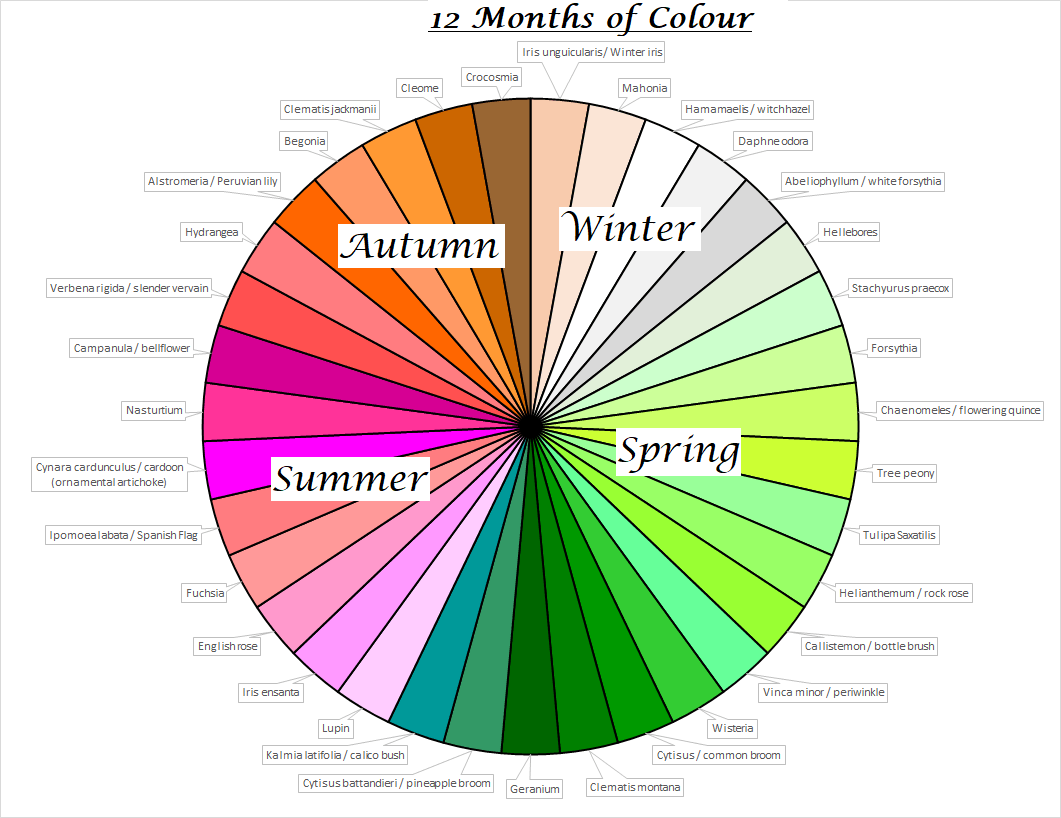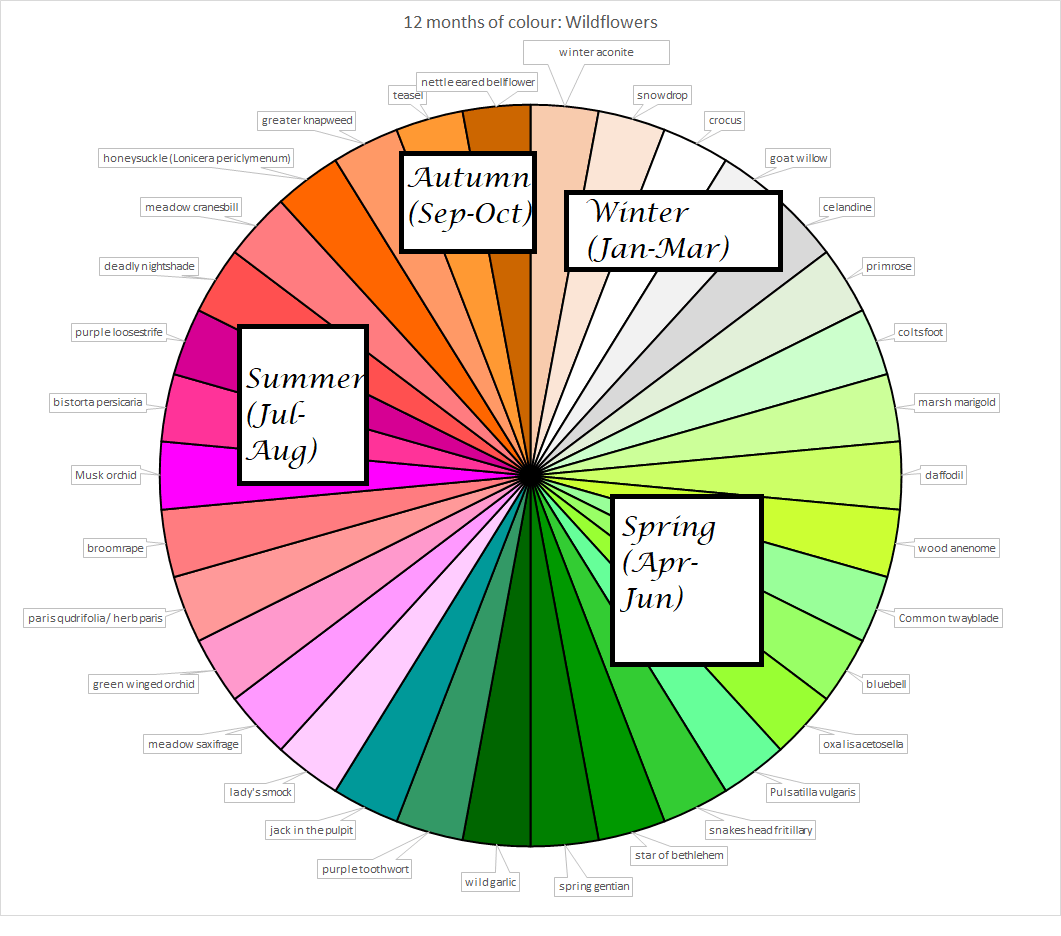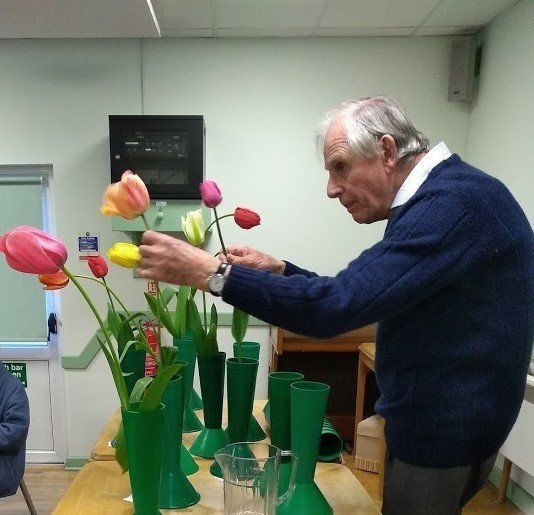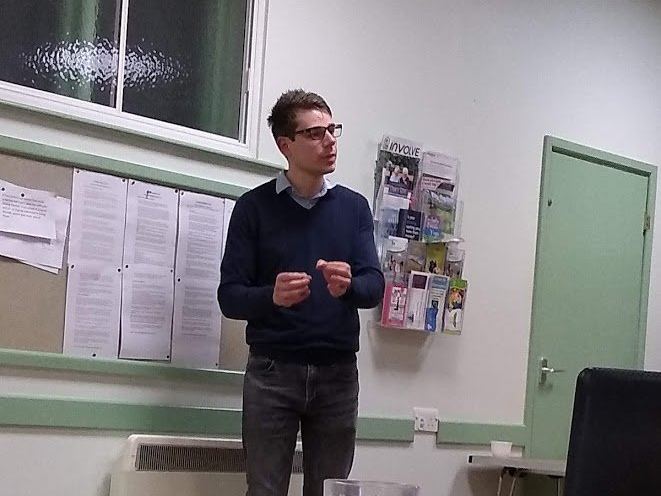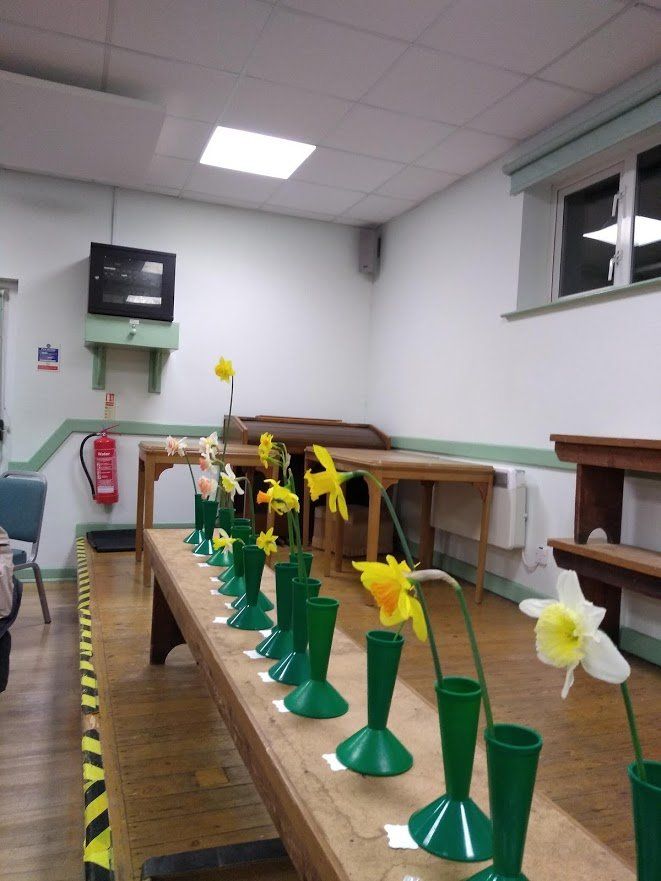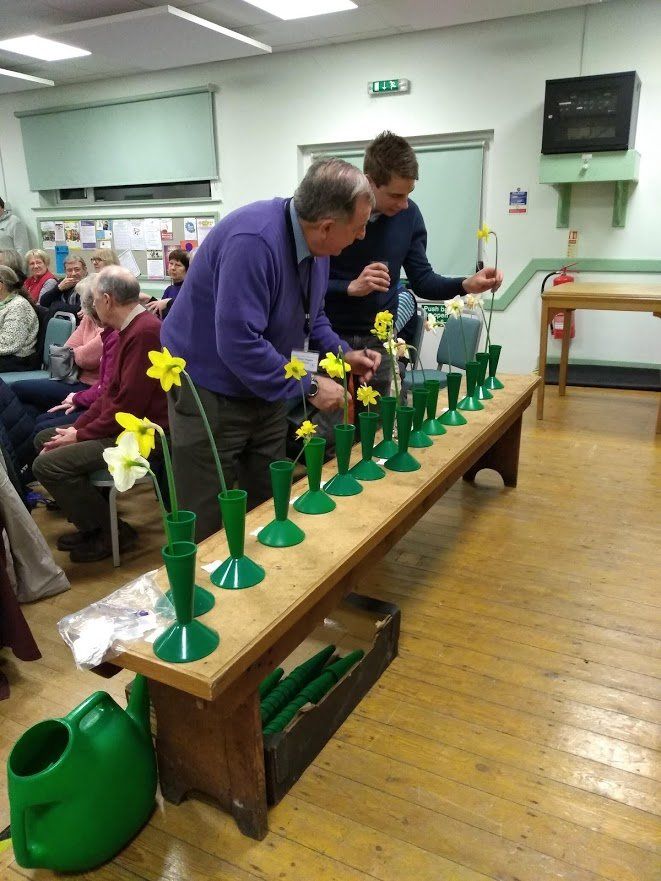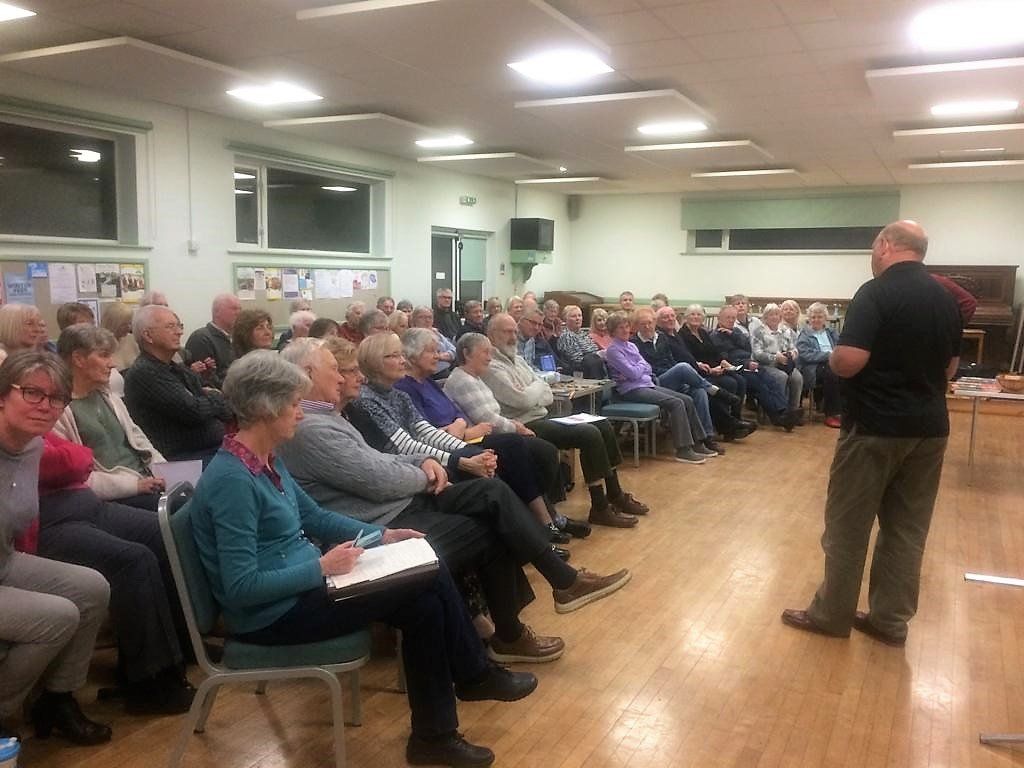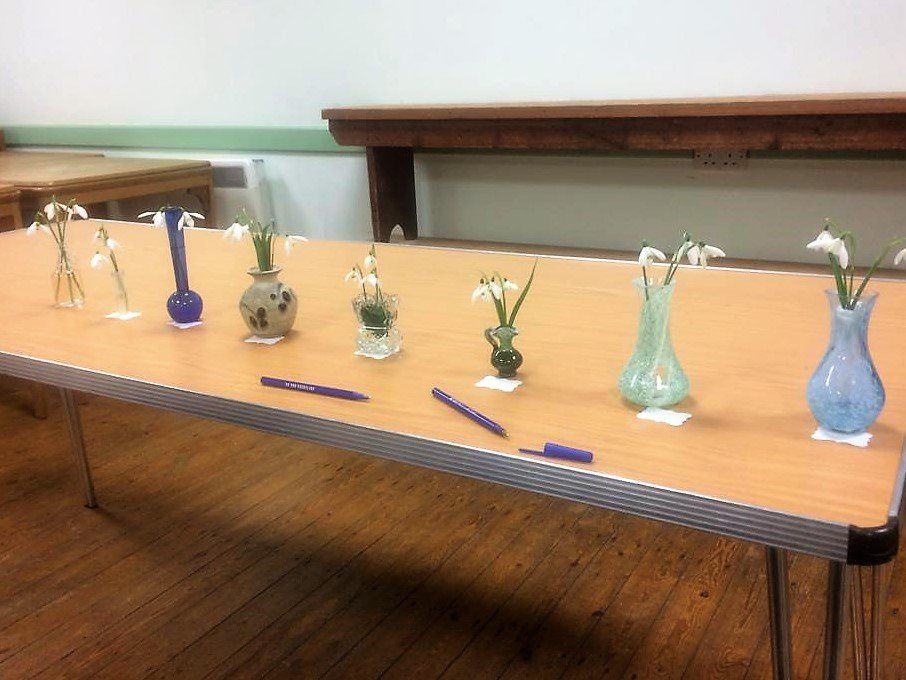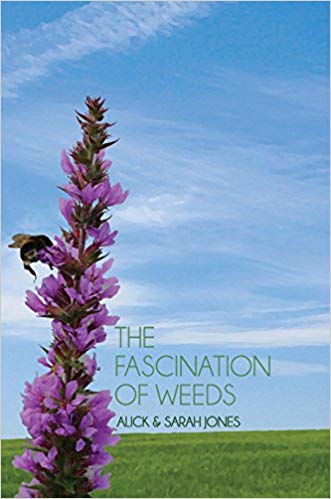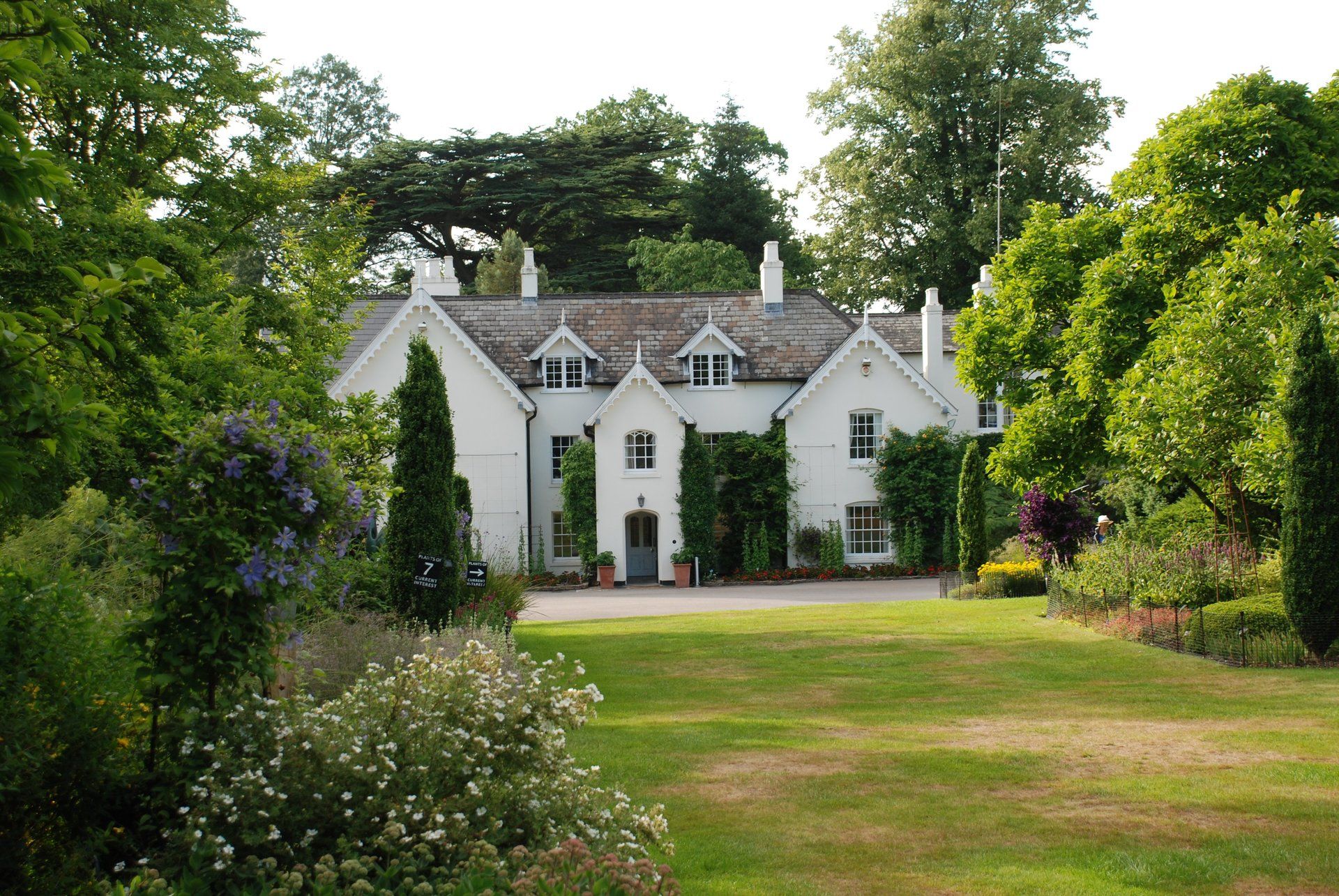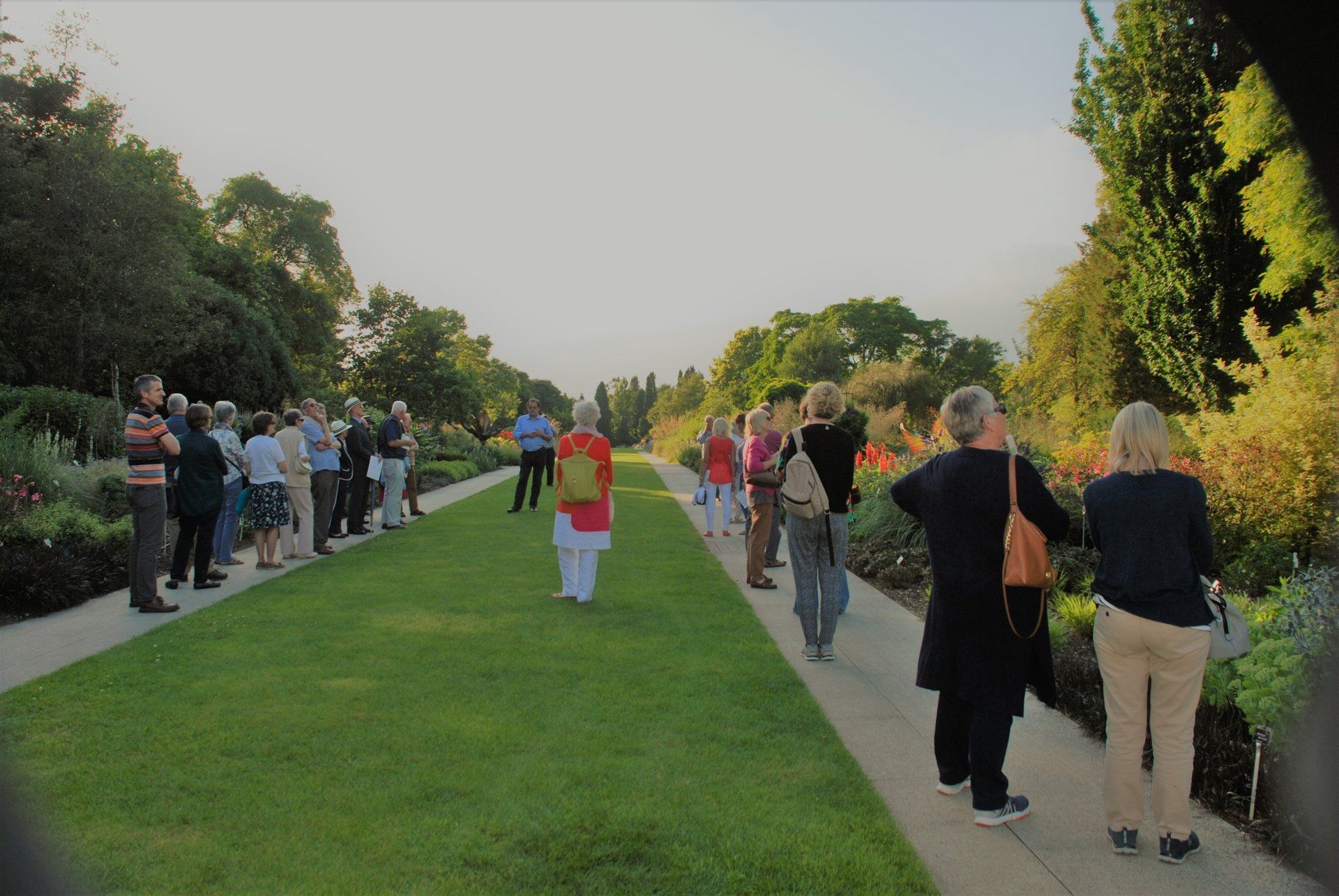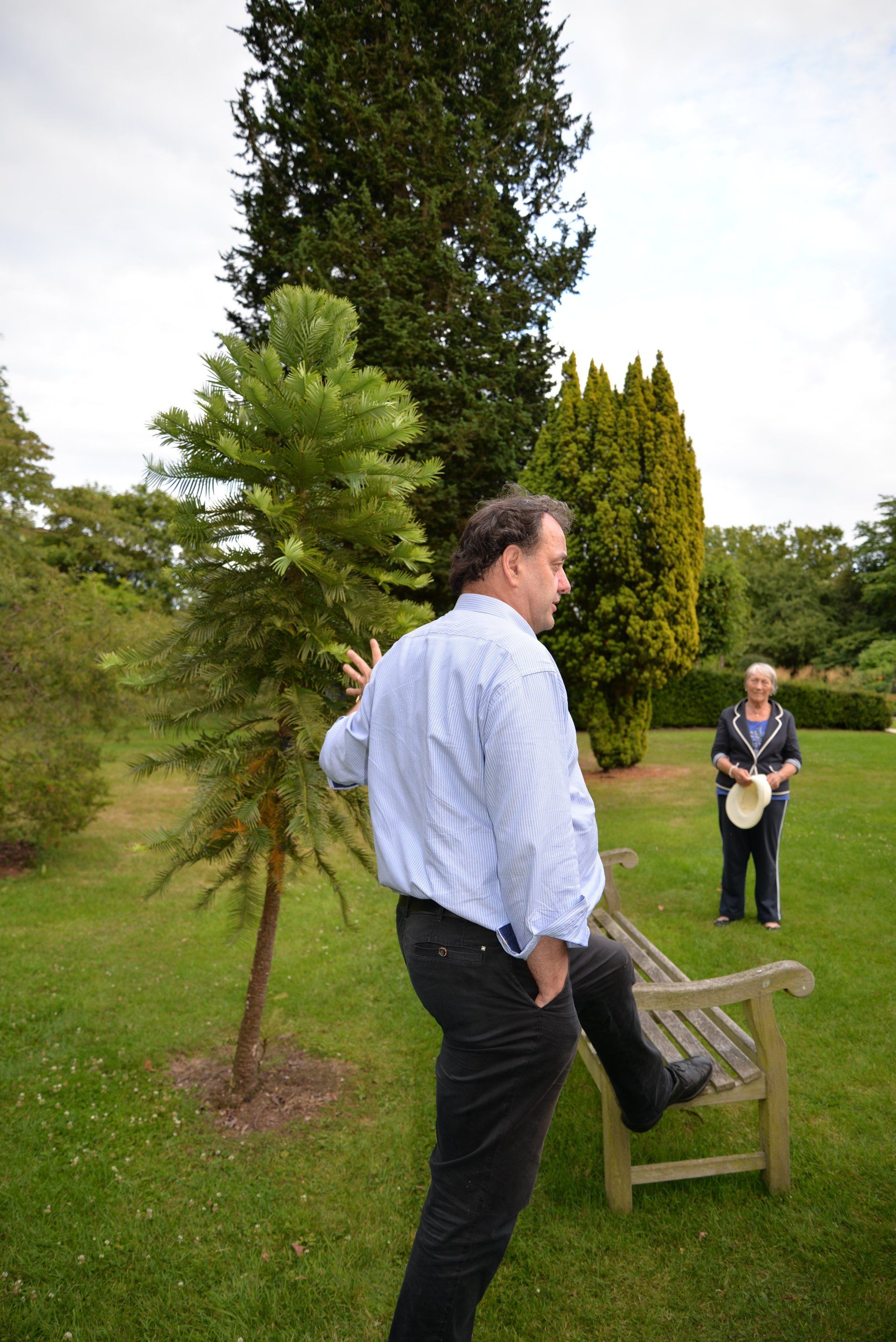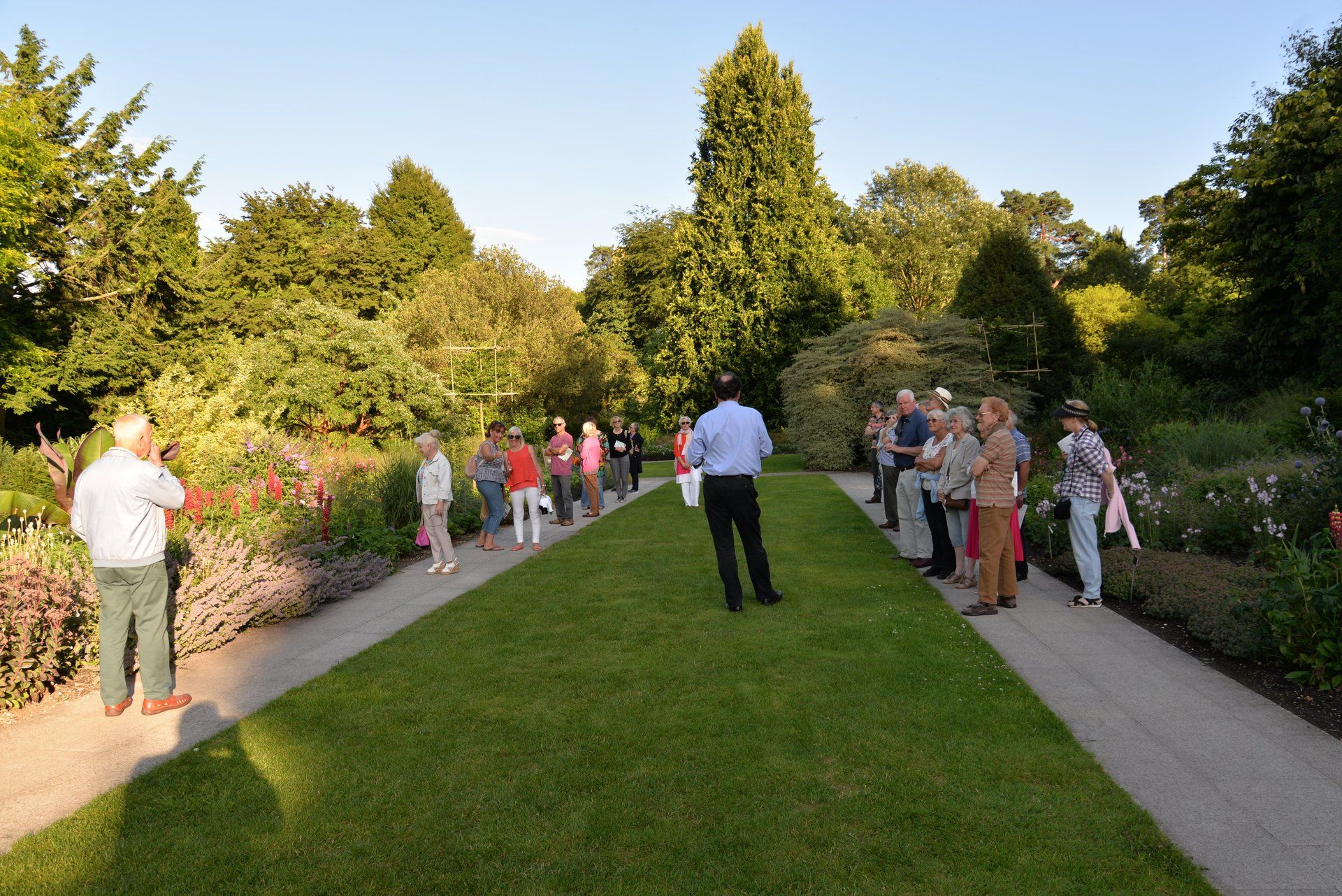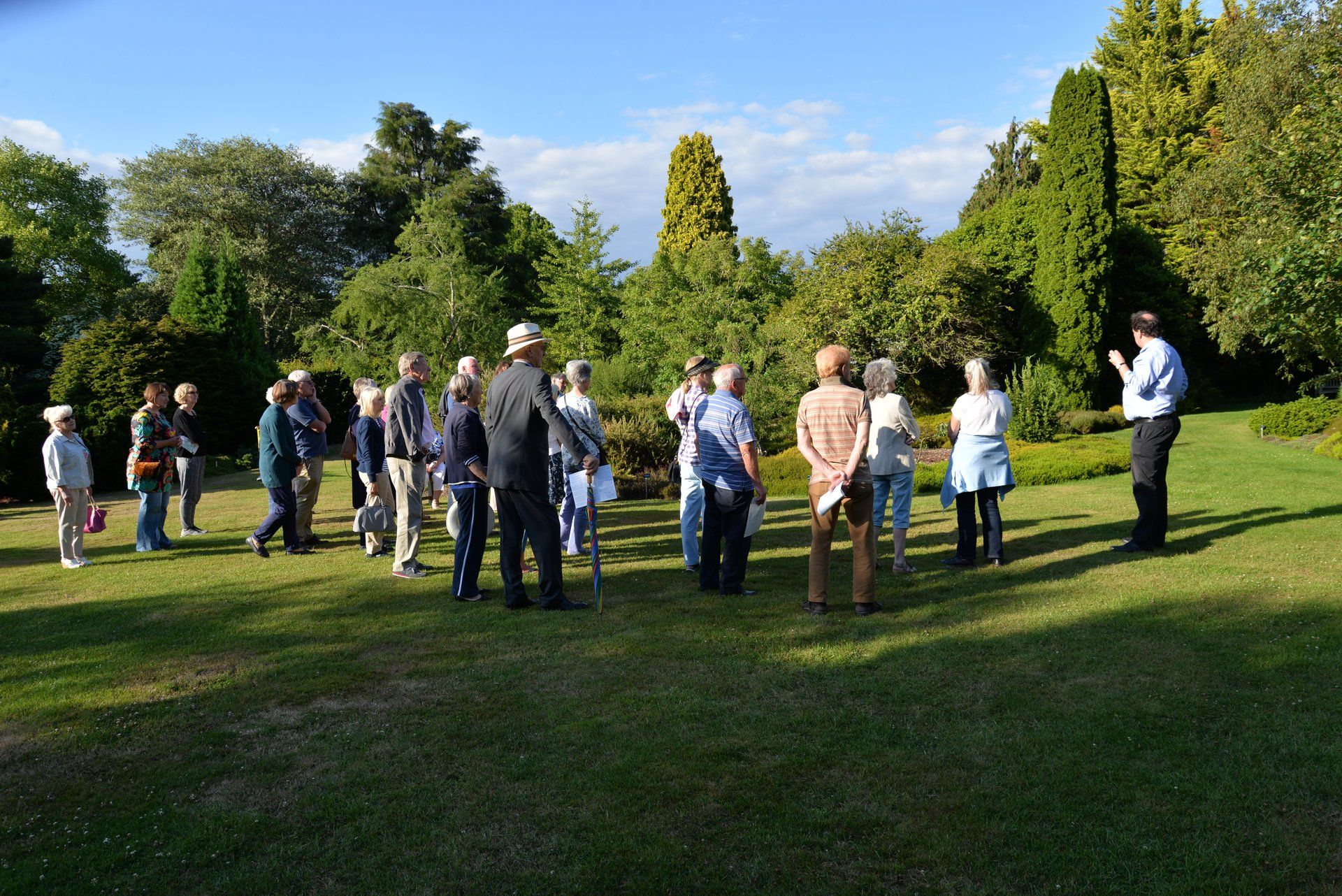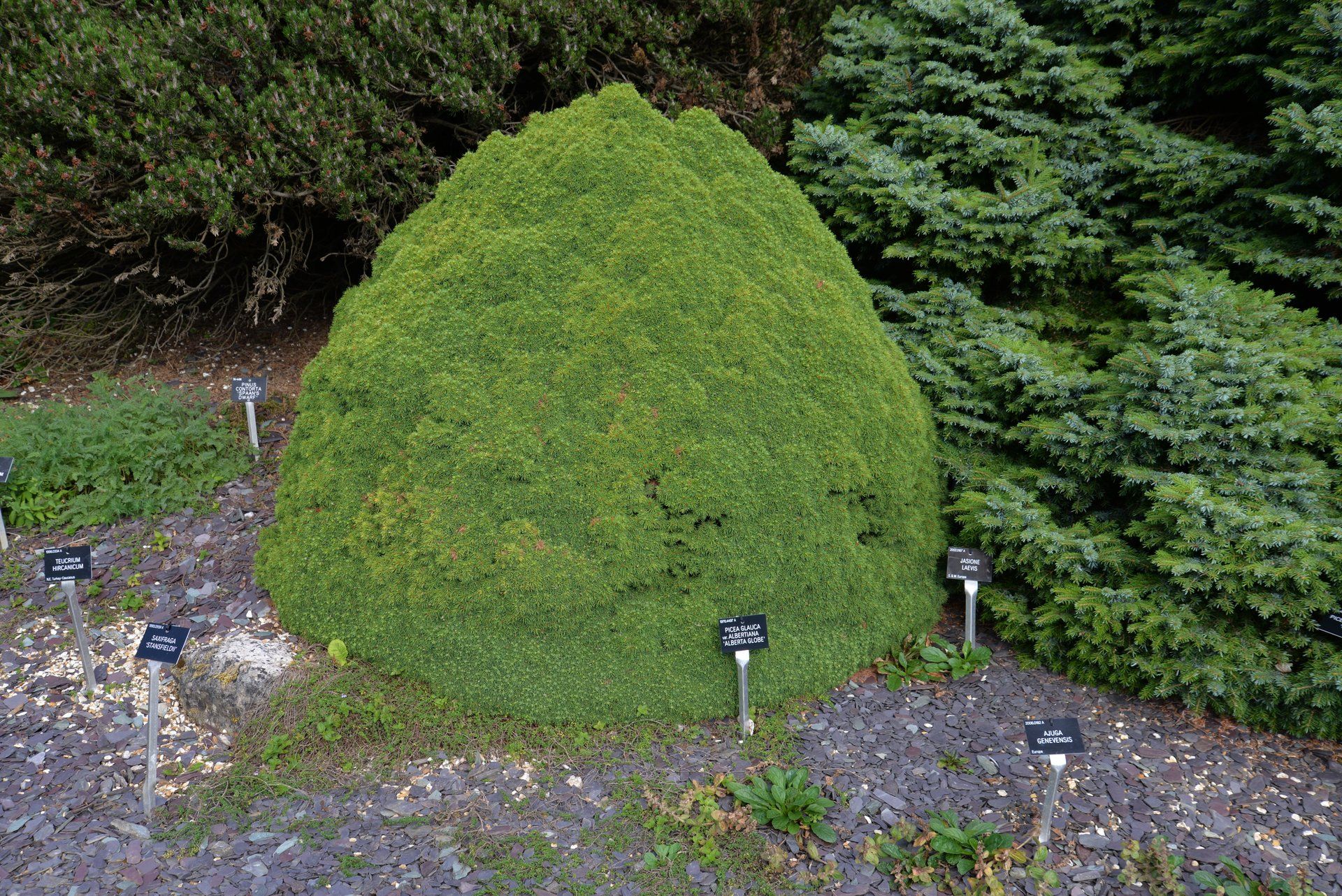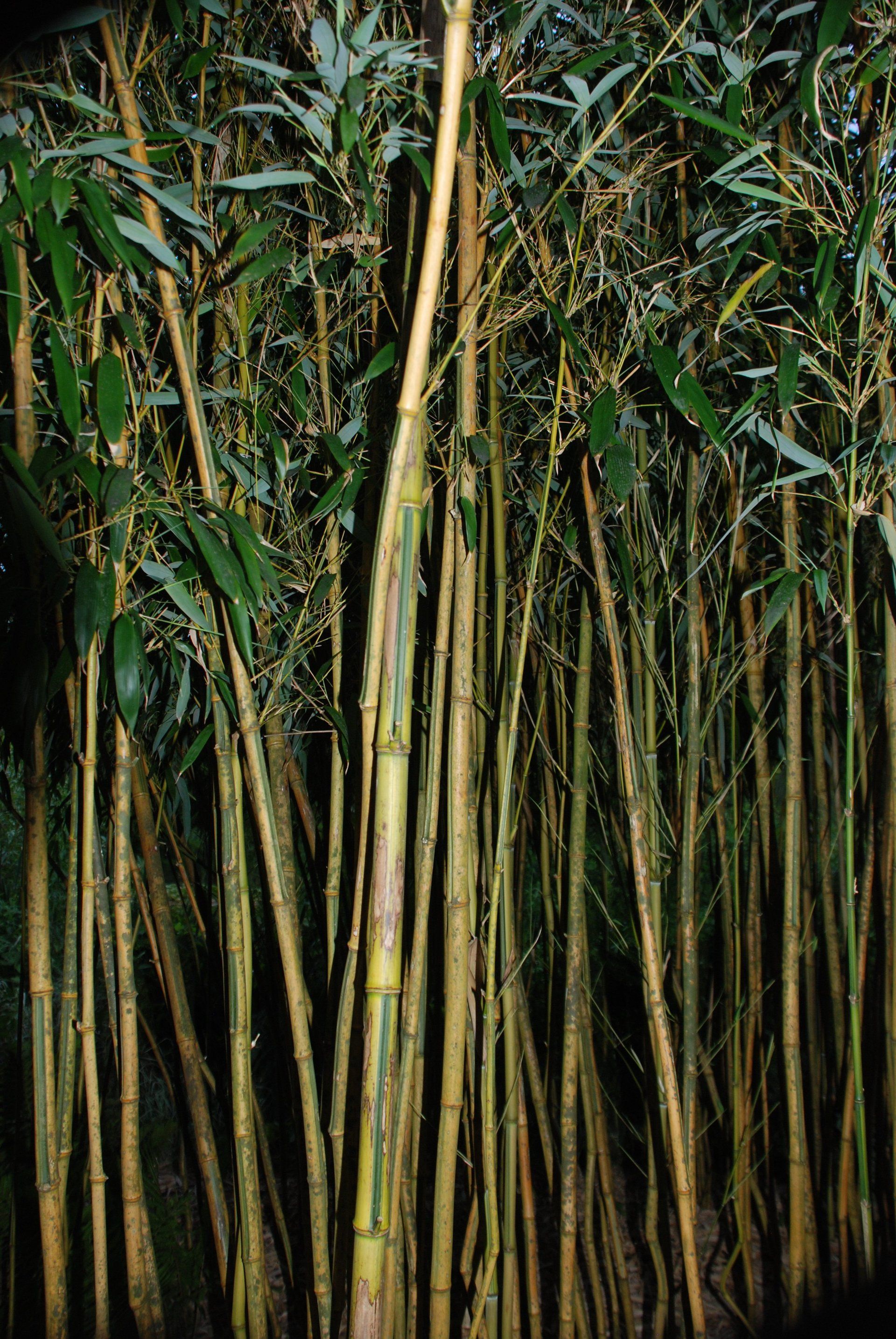- 2023 season (opens in new page)
- 2022 season
- 2021 season
- 2020 season
- 2019 season
- 2018 season
- 2017 season
- November 2022: Fred Dinenage
- October 2022: AGM, buffet and quiz
- September 2022: "Putting the Garden to Bed"
- August 2022: "Interactive Pruning"
- July 2022: Club awayday
- June 2022: Members' presentations
- April 2022: "On the trail of Farrer: from the Dales to the Dolomites"
- March 2022: "British Alstroemeria and the UK Cut Flower Industry"
- February 2022: "Perennial Bordersa at Wisley"

Above: Fred addresses the Club
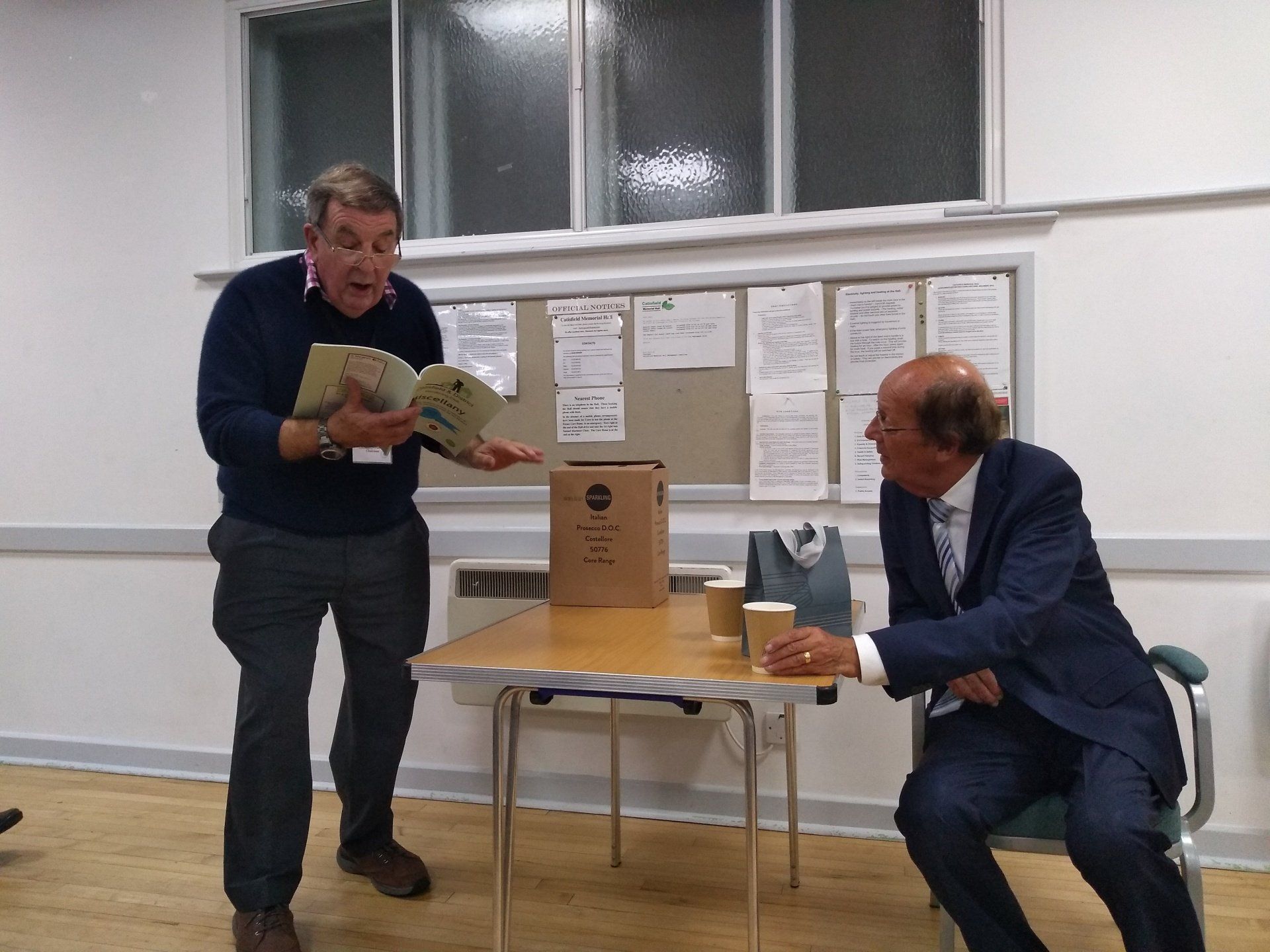
Above: Glenn presents a copy of the Club's 60th Anniversay Miscellany to Fred
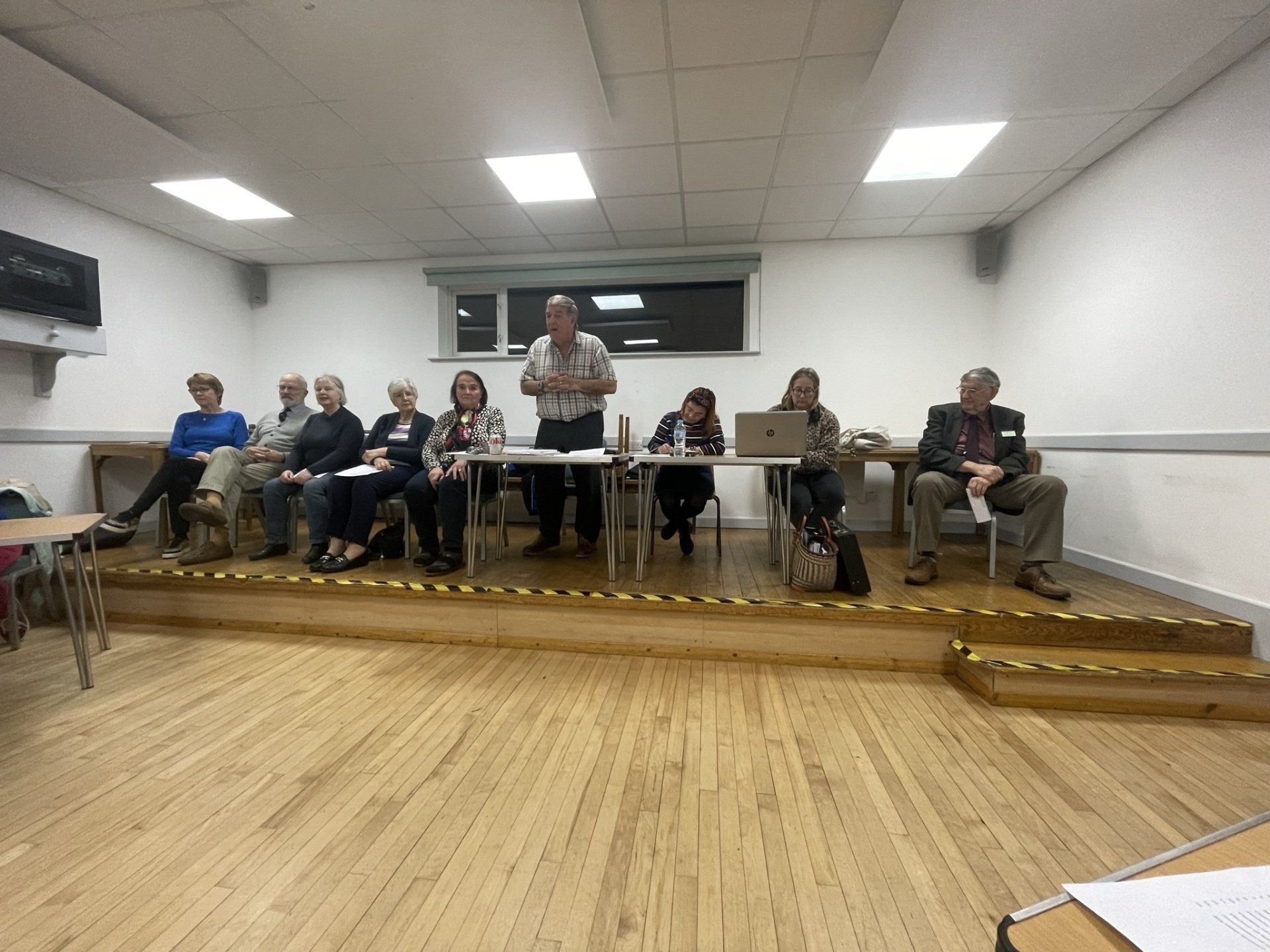
Above: Glenn addresses the Club at the AGM, surrounded by Committee members
After the rest of the committee discovered that he had never been received the Club's Banksian Medal - an RHS Medal awarded most years to an individual or couple who have made a special contribution to the Club - they unanimously agreed that this was overdue and so this year's Medal was awarded to our Chair Glenn Duggan.
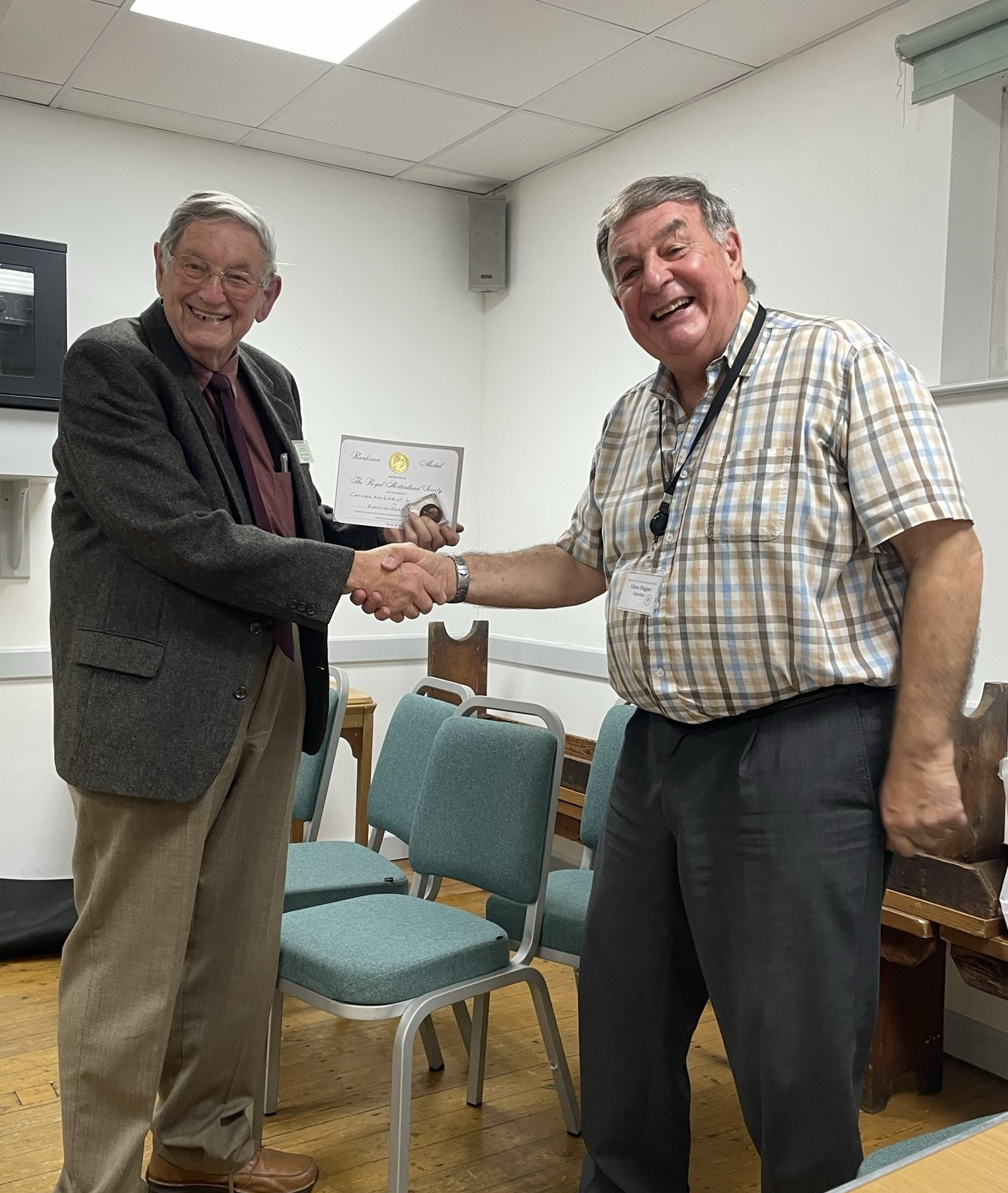
Above: Glenn (right) receives the 2022 RHS Banksian Medal from Club President Doug Glading
Above left to right: 2 of the quiz tables, the winning table
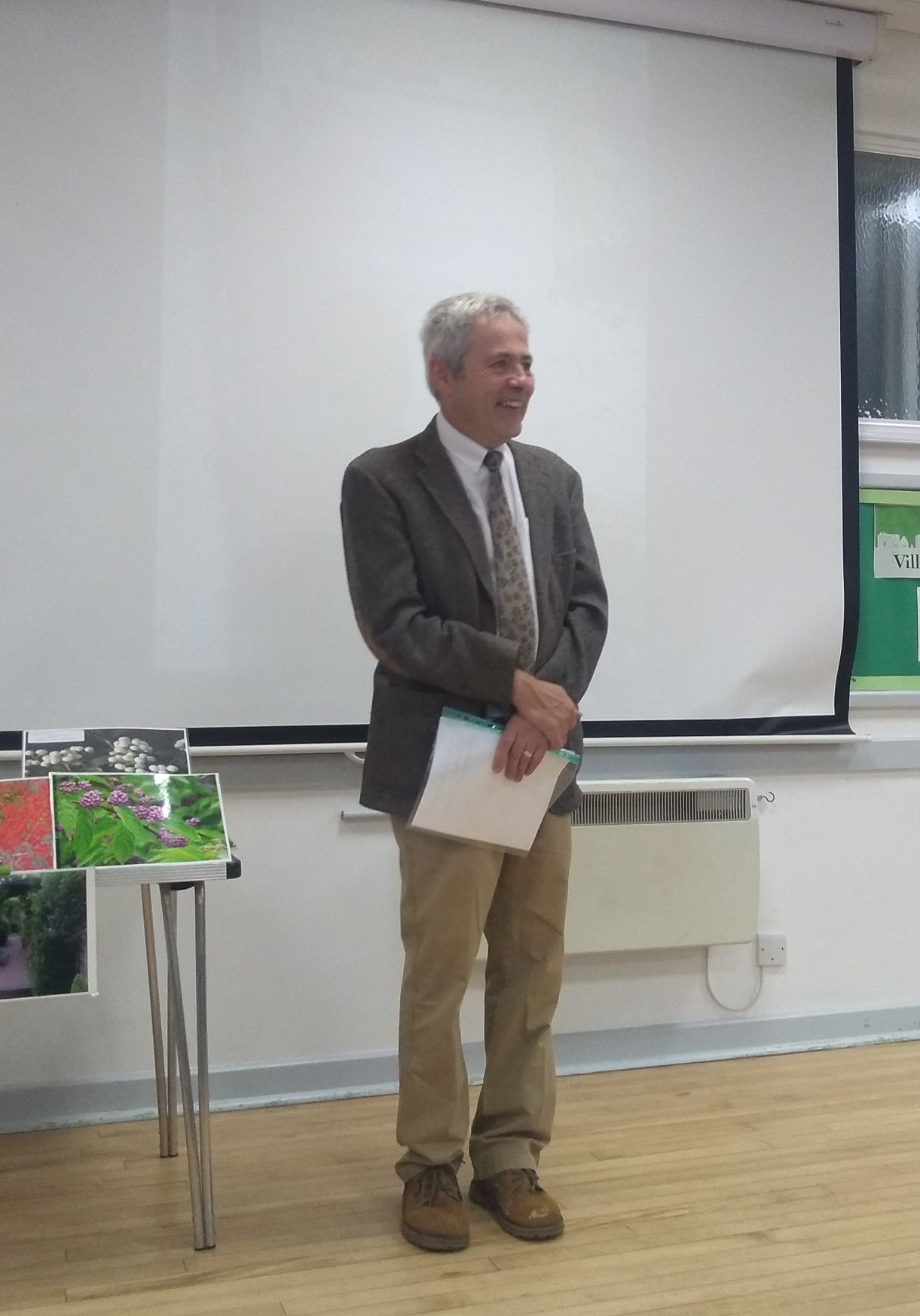
Above: Roger addresses the Club
- Don't over-tidy. Holding off on trimming hedges, leaving leaf piles and shrub trimmings on the soil and allowing perennials to die down naturally all provide valuable shelter and habitats to over-wintering birds and insects. Do, however, remove weeds and add mulch.
- When considering plants for winter interest, you may need multiple specimens for impact and pollination.
- Tie climbing plants and roses to supports - to guard against wind damage - but leave pruning them until spring
- When adding to log piles, always leave the bottom layer undisturbed as this will have rotting wood which is very important for beetles.
- Place bird baths and feeders close to shrubs and trees so that birds have shelter to retreat to.
- If you need to mow your lawn, do so on a high setting to leave the grass longer than usual. This is also the time to lay new turf or seed bare patches in your lawn.
- Clean out bird houses but then re-hang them as birds will need places to roost and will also be searching out suitable places for nesting next year.
Above left: Chris demonstrates pruning techniques, right: Chris wields a Fiskars UP86 tree pruner
- remember that "growth follows the knife", in other words if you prune one part of a plant you are likely to see new growth appear in that same area. To reduce the height of a shrub or tree, remove whole branches as simply trimming it back will encourage more growth;
- remove the 4Ds: Dead, Diseased, Damaged and Displaced (Crossing) wood;
- use the "rule of 3" i.e. for plants which need pruning aim to take out a total of 1/3 of the growth each year
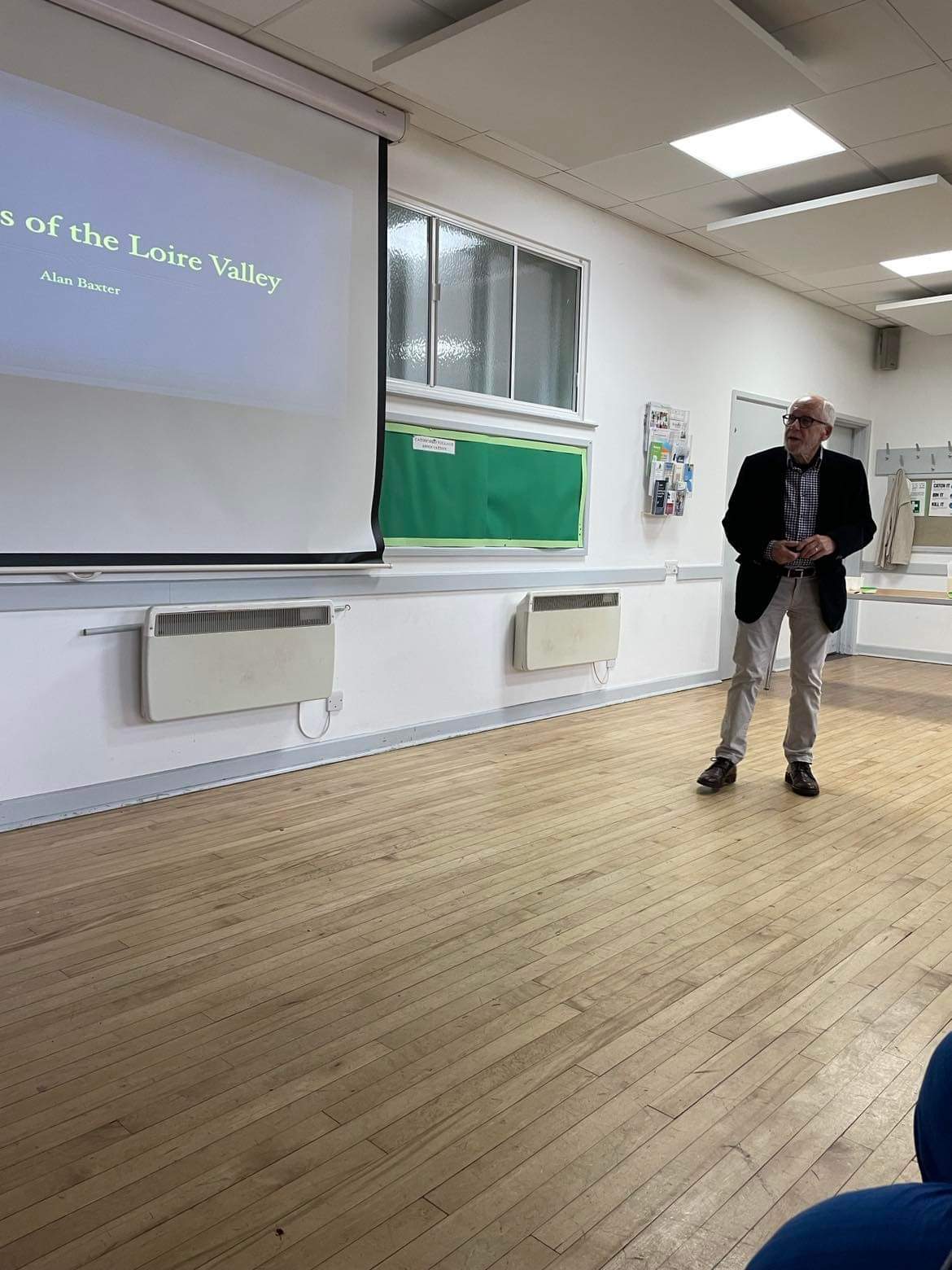
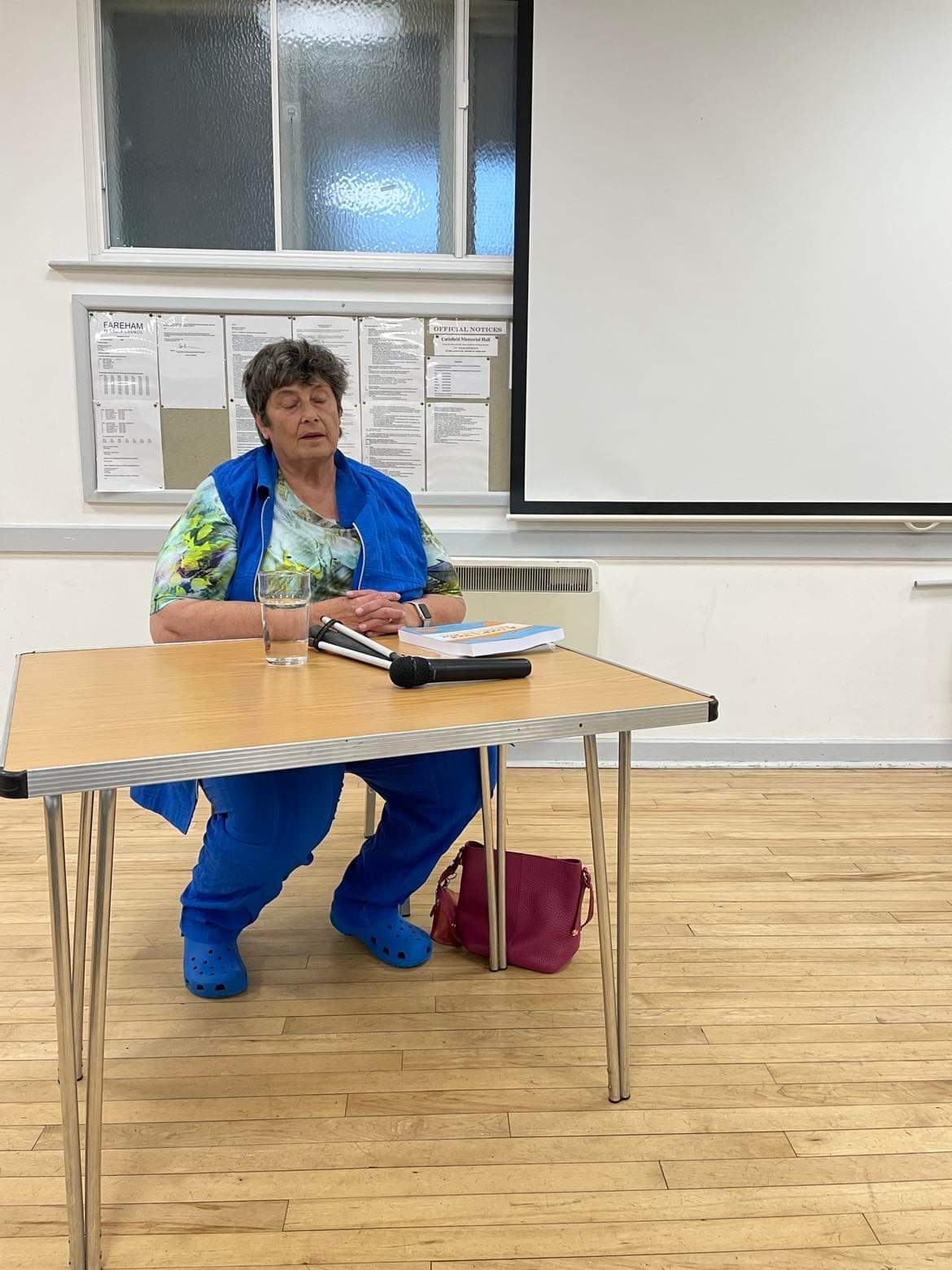


- Lower carbon footprint.
- Flowers are much fresher (Ben's flowers are picked one day and with the customer the next)
- Flowers are supplied at the ideal bud stage, not necessarily in full flower. As an example, the flowers Ben brought with him to sell were still in bud form but within 3 days they were flowering as shown below, photo kindly supplied by Club member Jo B.
- Supports the local economy.
- Less damage and waste.
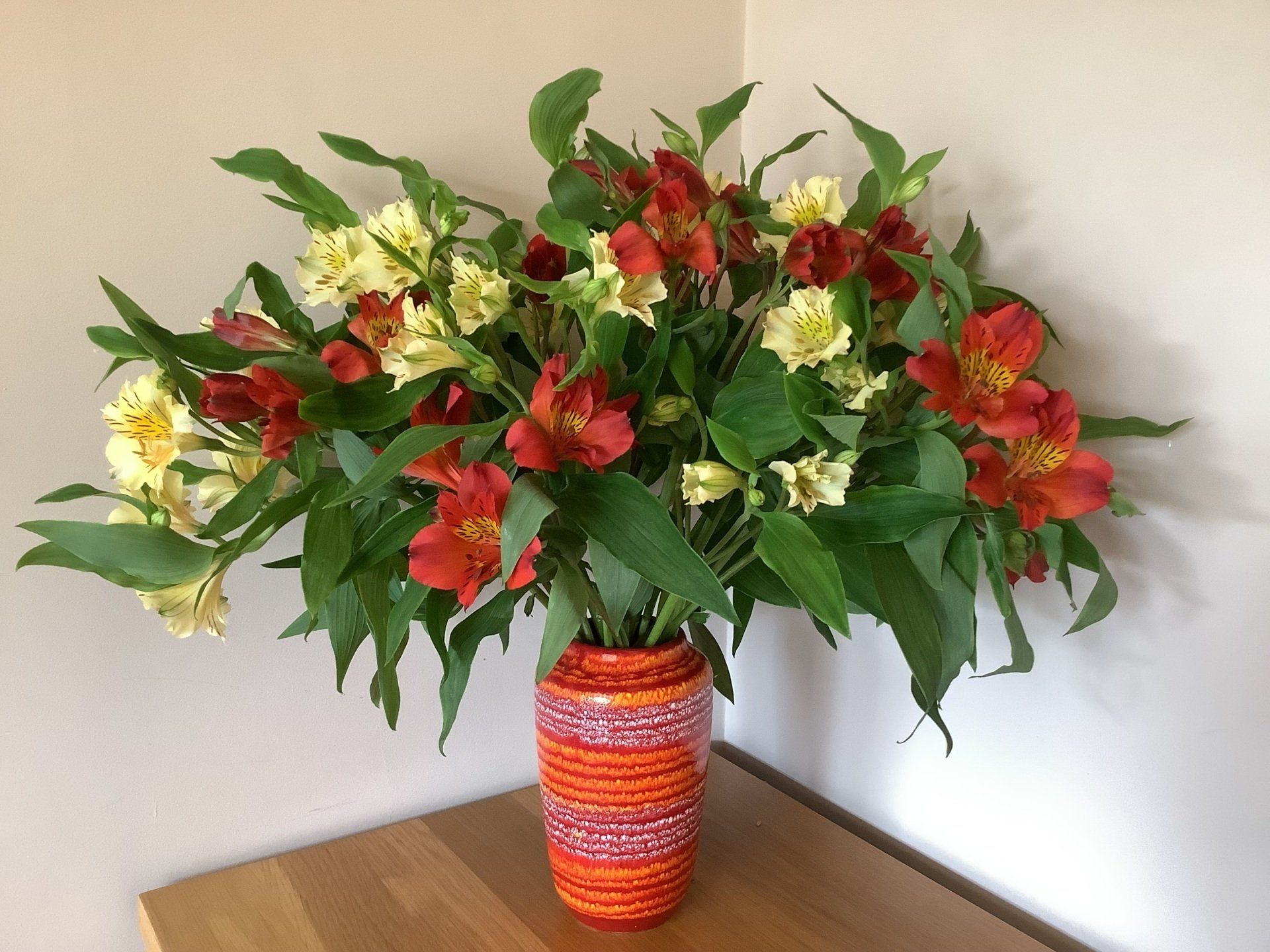
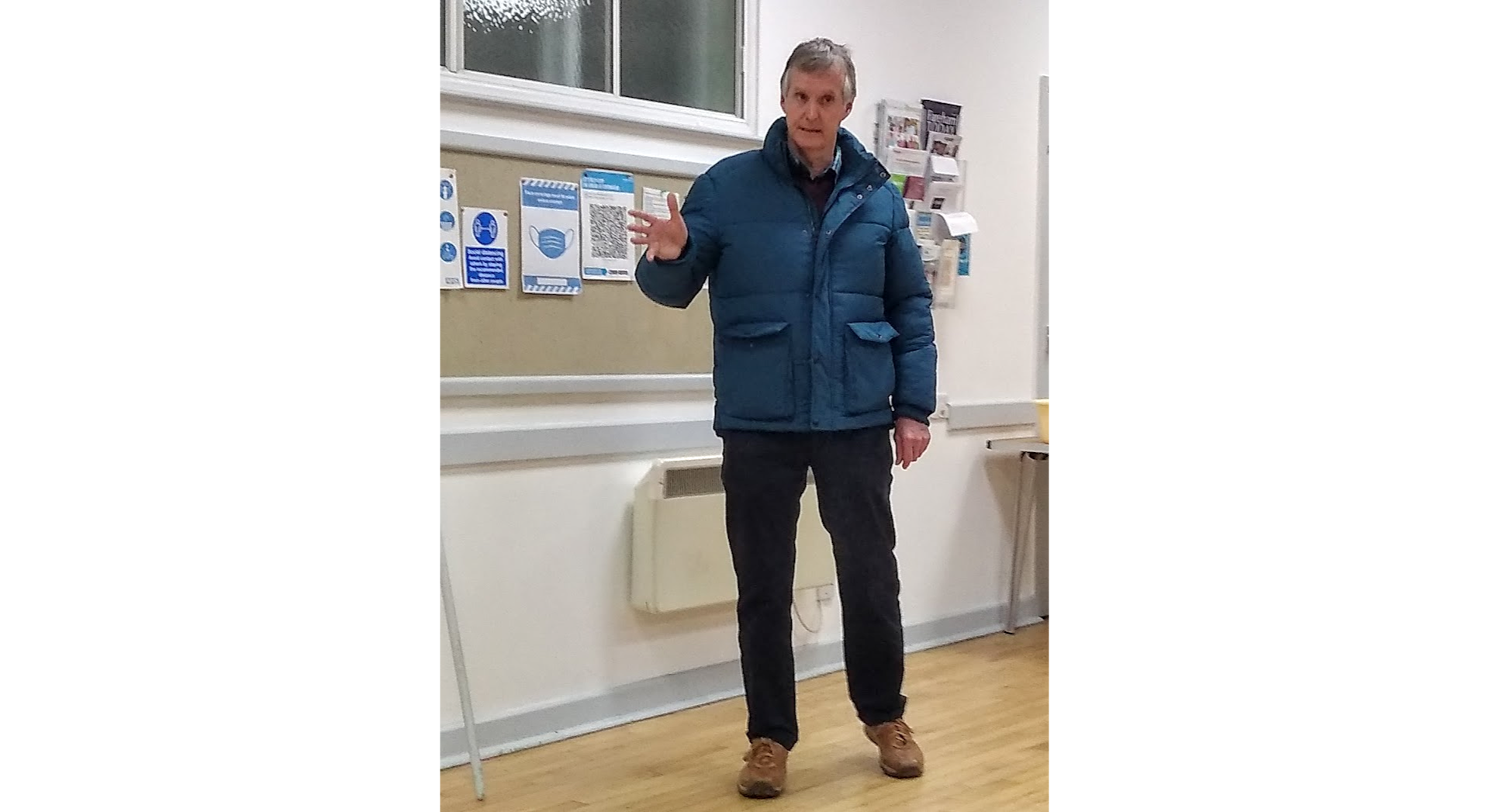
- When creating a new border add lots of manure and dig it well. Aim for neutral to slightly acid soil - adjust the manure / compost dug in to achieve this.
- If you have a choice of size, buy the smaller pots. With perennials the root ball is unlikely to be significantly smaller in a 1 litre pot compared with a 3 litre one, and the plant will soon catch up.
- Think about the key elements you want e.g. colour, height, shape, habit and repetition.
- Apply general fertilizer to the bed in spring.
- Dead head regularly and apply a liquid feed after dead heading.
- November 2021: Annual General Meeting (AGM)
- October 2021: Heritage Apples
- September 2021: Growing Sweet Peas
- August 2021: 60th Anniversary Celebration
- July 2021: Titchfield Great Barn, Abbey and Shakespeare
- June 2021: Catisfield Trail
- May 2021: Garden Sale
- April 2021: Flower Quiz results and answers
- April 2021: "The Kew Millennium Seed Bank Project"
- March 2021: "Going Green(ish) - How I learned to stop fighting nature and work with it instead"
- February 2021: “The Astounding Flora of Australia”
- 2020 season
- 2019 season
- 2018 season
- 2017 season
The Club had to cap attendance to a maximum of 50 persons being allowed in the hall and an on-line
booking system was introduced. We had 31 Members attend and they enjoyed a combined talk by Jim and Mary McDonald on “Growing Sweet Peas for Exhibition & Pleasure”. There can be no one more experienced in growing Sweet Peas than this couple who have held a variety of posts within the National Sweet Peas Society with Jim growing these flowers for 55 years and heading up both the RHS and Sparsholt College Sweet Pea Trials Team looking at and developing new Sweet Pea Varieties. This couple have won many prizes up and down the country for their Sweet Peas. They grow them in their own garden for cut flowers and they have an allotment where they grow the flowers to produce seed and a good range of seed was available to purchase on the night and Jim and Mary sold quiet a few packets and so their flowers will be growing locally next year! Jim presented how he successfully grows Sweet Peas and Mary covered how Sweet Peas can be arranged for shows etc.
Preparing the Ground
Jim explained that ground preparations are very important. The ground is completely cleared and he prepares the ground between November and January. Sweet peas love a rich, moist soil so he digs trenches and includes compost into the planting area to enrich the soil and hold moisture during dry weather. He also adds Vitax Q4, Sulphate of Potash and Chicken Manure pellets about 2 oz per square yard. He then leaves the ground alone until March when the elements will have broken down any rough areas of soil. He then rakes and levels out the top few inches of soil to get a nice fine tilth whilst at the same time working in Vitax Q4, Sulphate of Potash and Chicken Manure pellets about 2 oz per square yard.
Slugs do damage Sweet Peas so use your usual method to protect your plants.
Greenfly – can do a lot of damage to Sweet Peas and the plants can be infected with a virus which gives the plant a mosaic appearance. Use a systemic insecticide. Roses usually receive greenfly first in the garden. When you see them on roses it is time to spray your Sweet Peas.
1. Gwendoline - magenta pink
2. Mrs Bernard Jones - pale rose pink
3. Mrs R Chisholm - white
4. Karen Louise - lavender
5. Sir Jimmy Shand - mauve stripe on white
6. Windsor - maroon
Another 5 of great interest are:
1. Kings Ransom - burnt orange
2. Joejess - orange/red
3. Olivia - pink stripe on white
4. Mary Mac - cream
5. Alec Cave - white, new for 2022
Above left to right: Keith Fraser speaking to members, the rose garden at the Great Barn, the ruins of Place House
Team: “Rojo” – 580
Team: “Anne & Hilary” - 440
Team: “2 Young Girls” – 415
Team: “The Hobbits” – 380
Team: “Margaret” – 345
Team: “The Harvesters” – 340
Team: “The Eastwoods” – 310
Team: “The Elstons” – 285
Congratulations to Jo and Rob B for an excellent 580 points total, they win first prize of a £10 Parker’s Gift Voucher and a Box of Chocolates, Anne N & Hilary R for 2nd place (a box of chocolates) and Lynn P & Margaret B for taking 3rd Place (again a box of chocolates).
A special mention has to be made to Margaret W who returned home after a long journey from the West Country and came along and joined in the evening and collected 345 points on her own without the benefit of a team with her. Great work Margaret and we are going to award you a special prize for your efforts.
– Susan Kavanagh
Above left to right: Dyers Mazegill, a serious fungus which fortunately only affects conifers; willow tree planted to reduce waterloggin; log pile (provides shelter for beneficial hibernators such as toads which in turn eat slugs, and a home for insects which attracts birds); 3 bin system for compost and mulch
After the presentation Glenn provided an entertaining 20-question quiz which proved to be extremely challenging. The quiz was won by Tiffany H with Margaret W and Hilary R joint runners-up, prizes were copies of the RHS Magazine "The Garden".
Above left to right: General scene from mountains of Australia; Flame Tree, a stunning tropical tree that flowers without leaves; Bottle Tree; Flame Pea, one of the first plants to quickly provide ground cover after a bush fire.
Glenn has provided the following links for anyone who would like to find out more:
- The Australian Government Department of the Environment Web Site on Australian Native Plants, full of information and good illustrations: https://profiles.ala.org.au/opus/foa
- A website which sells Australian seed and sends it overseas to the UK: https://www.australianseed.com/shop/category/australian-native
- The following Web Site is full of information about Kangaroo Island which is one of the best places to see wild Australian flowers and fauna: http://www.brolgahealingjourneys.com
- A video illustrating just how dry Western Australia is but how interesting the plants are. This is filmed in a small botanical garden by an American gentleman, please be warned that he uses some bad language: https://www.youtube.com/watch?v=RM8opZ4qDKs
Glenn arranged with Jackie Wilson for the tree to be taken out of the ground and on Friday 18th December 2020 a small working party of Susan Kavanagh, her husband Robert, son Michael and son in law Dylan together with Edward Richardson who brought his Range Rover and trailer and Glenn Duggan loaded the tree on board and transported it successfully to the hall. Glenn had dug a hole the previous day and this had to be widened to take the root ball. The tree was successfully placed in its new location and given new soil and compost and a good amount of bone meal fertilizer. The two supports you see the picture are temporary to enable the tree to settle into the ground. If supports were placed close to the tree then this would enable air to get in the ground and this would impede the ground compacting which is essential for a mature tree with a good amount of leaves where there is a great danger of strong winds blowing it over. After Christmas when the ground has settled - and when we are allowed to meet up outside once more - the team will return to place the supports close to the tree.
Left to right: Robert takes his turn at digging under the supervision of Edward and Dylan; Susan checks the position of the tree; some of the team (Dylan, Robert, Susan and Glenn); the end result
Barry gave the Club a very interesting talk about growing vegetables in raised bed, supported by lots of examples from his own experience. The advantages of growing in raised beds include:
- you can tailor them to the vegetables you are growing by using the right soil type and controlling nutrients and pH values
- as long as you can reach in from the sides you don't need to step on the soil so it's less subject to compaction
- the raised height means less bending and easier maintenance
- the soil can be warmed quickly and drains well
- it's easier to protect from pests than open soil
- it's easy to manage crop rotation
The February members' competition was for the best daffodil / narcissus bloom.
The winner was Theresa Duggan with Sue du Preez in second place and Jo Drew in third place.
- they like sun, feeding and watering (they like tomato food every 3 weeks during the growing season) and regular dead heading
- they dislike standing in water (which is why some people "lift" dahlia tubers in the winter, particularly if they are in clay soil) and cold
- they are susceptible to slugs and earwigs.
The February members' competition was for Perfect Snowdrops.
The winner was Sharon Miles with Pat F in second place.
- December 2019: Christmas Wreath making
- November 2019: AGM,talk, buffet and quiz
- October 2019: Everything you ever wanted to know about growing roses
- September 2019: Visit to St Margaret's Nurseries
- August 2019: Bees and the Gardener
- July 2019: Visit to Exbury Gardens
- June 2019: Making Gardening Easy and Economical so that you can spend more time sitting in it!
- May 2019: Annual Auction
- April 2019: 12 Months of Colour
- March 2019: Planning and Planting for the Year Ahead
- February 2019: The Modern Kitchen Garden
- modern varieties are less susceptible to diseases
- there are roses suitable for any type of soil but they don't like waterlogged conditions or soil which has recently contained another rose
- mulch, feed and water your roses to keep them healthy. Make sure you water at the base, keeping foliage dry.
- roses prefer plenty of sunlight
- most pests will be kept down in numbers by natural predators, but sawfly can be a problem and should be removed by hand or chemically controlled
- roses can be planted bare-rooted or from pots. There is no need to tease out the roots.
- Don't be afraid to prune. For most roses just take 2/3 off strong stems between November and March and remove weak stems entirely.
The October members' competition was for the Largest Conker.
The winner was Glenn Duggan with his wife Theresa in second place.
Club News
Members' Competition
The August members' competition was for the Longest Runner Bean.
- When you remove one plant, don't replace it with another from the same family. They will need similar nutrients, which will have been largely exhausted by the previous plant, so the new one will not thrive and will require lots of extra time and money to supply it with the nutrients it needs. "Family" is quite a broad term e.g. roses, potentilla and prunus are all members of the Rosaceae family; check whether the plant you want is in the same family as a previous one using the RHS website: https://www.rhs.org.uk/plants. NOTE: you can refill a pot with a plant of the same family as long as you clean it and use new compost, because this will give it a fresh supply of nutrients.
- For the same reason, don't have too many plants of the same family close together in your garden.
- When planting, don't just fill the hole with potting compost. Instead mix in 30% of the local growing medium (eg your own topsoil) because otherwise the roots will tend to stay within the area of the ompost.
- Buy shrubs / trees which only require one prune per year, and don't prune in autumn. Plant growth will be slowing down at this point and the plants will need some of the old growth to protect them through the winter.
- Buy herbaceous perennials in preference to annuals, they will re-grow for at least 4 years and can be divided by their roots to make new plants.
- Plants which grown on slopes in nature do not require good soil, because in their native situation nutrients will tend to be washed downhill by rainwater.
- When buying shrubs or trees, consider their ultimate height and spread because this will indicate how large their roots are likely to be. It is difficult to plant among a root system.
- Bordering your lawn with something around 4 inches deep but with their tops level with the lawn(eg a row of bricks on concrete) will reduce the need to keep edging the lawn and will also keep fungus from the borders away from the grass.
- Water new plants at various times of the day and various intervals (eg 2 days, 8 days, 4 days) so that they do not become dependent on a fixed watering regime. This will help them withstand periods when you are on holiday and unable to look after them.
Club News
Members' Competition
The June members' competition was for the Prettiest Rose.
For this we are grateful to you the members for your fantastic support in providing items and for your bidding on items including two members who donated £20 each because they could not attend.
We could not hold such a successful auction without the amazing support of our two sponsors; Parkers and St Margaret’s nursery. Parkers donated £70 worth of tools alone plus trays of plants and other garden items. St Margaret’s provided us with an array of quality plants and I know many of our members wanted to get hold of those trays. Our raffle was also a great success with quality items as prizes and that brought in £54.
Club News
Members' competition: Tallest Tulip
This months competition was for the tallest single tulip. The winner - judged by speaker John Negus - was Dawn Wallis with Pat Furminger taking the runner-up spot.
- use a low release fertiliser, some commerical brands provide too much nitrogen in a single hit whereas a small amount released over time is better
- consider where you will position plants very carefully, especially for larger plants or trees because these will be difficult to move later on
- take lots of photographs and keep notes to help you identify what works well in your garden and what to avoid in future
- research before you buy, don't rely on plant lables for information
- water well when planting even if the ground is already wet, because this helps the new plant to bond with the soil.
Members' competition: Best daffodil / narcissus bloom
This months competition was for a single daffodil or narcissus flower. The winner - judged by speaker Steve Austin - was Theresa Duggan, with Ann Hudson taking second place.
- People are more knowledgeable and concerned about nutrition, eating well and the origin of their food.
- You can produce a steady amount of greens, fruit and roots throughout the year.
- Harvesting fresh produce in its optimum condition.
- We currently import 50% of veg and 95% of fruit.
- Open growing
- Container growing
- Raised beds
This is the traditional way, suitable for large gardens and allotments. You can grow a full range and cultivate crops that require more room.
Versatile and useful in a restricted space. You can use pots, troughs, grow-bags, old sinks and baths. Galvanized containers can be very effective, put in holes for drainage. Be artistic with your choices!
When growing tomatoes:
- Put pots in a water bath to soak them through when you first start
- You can grow them up poles that are held in place using non-slip cord and clips.
- Grow one stem, remove lower leaves once the first set has started to ripen.
- Prune each truss after 12 fruit have formed.
- Trim back side shoots but remember the plants need enough leaves left to photosynthesize and grow.
- Planting into rings set into the ground is also a good way to aid watering and feeding. It also makes it much easier to hoe the weeds out without damaging the plants.
- Grow-bags have gone out of fashion as they can get very hot and dry out. If you want to use them, give them a good shake to plump up the soil and incorporate air, with the soil at one end of the bag fold under the other end to increase the depth of soil you plant in and use tomato rings to help watering.
- Tomatoes can also be grown successfully in hanging baskets. Barry grows Sungold cherry and Beefsteak tomatoes with Tumbling Toms in baskets.
- Beds can be constructed out of many sorts of materials e.g. railway sleepers, plastic, new oak, concrete gravel boards even stainless steel. They can be built high enough to sit on for less mobile gardeners and wheel-chair users. Always make sure that the top of the bed is level whatever the slope of the ground.
- They should be a minimum of 6” deep, you should be able to reach the middle of the bed to avoid walking on the soil and compacting it.
- Allow sufficient room to work from a kneeling position and move a wheel-barrow between them.
- Lay a mesh fabric on the base of the beds to prevent moles.
- Use gravel, old compost and the top soil from the paths to help fill the beds.
- Line paths with weed suppressing fabric then top wood chips or bark. You will then have all weather access. Solid paths are another option but loose laid paving slabs will harbor slugs and snails and gravel will be no deterrent.
To grow potatoes in a raised bed:
- Dig out a trench across the bed, use a powder fertilizer e.g. Vitax Q4, in the trench.
- Fill black plant bags (these have holes pre-cut in the base) with any sort of compost.
- Place a chitted potato carefully into each bag burrowing it down using your fist to protect it. Top up the compost and water. The roots will grow out of the holes so it is the soil in the bed that needs most water.
- Keep the leaves off of the soil to prevent detritus. The bags will keep all nasties out of the potatoes.
- To harvest: cut off leaves, lift bags and store in cool dry place. Empty bags as needed keeping compost for the following year.
- Grow bags can be used instead. Cut the bag in half with half the contents in each end. Roll down the top of each half and cut holes in the bottoms.
He recommends the varieties Venus, Defender and Ambassador. Barry also grows butternut squash up a hedge, he recommends the variety Hunter. There will be an article on growing like this in the May edition of “The Garden”, the RHS magazine.
Members' competition: Perfect Snowdrops
This month members were invited to enter up to 3 snowdrops. The winner - judged by speaker Barry Newman - was Margaret Wellington.
- November 2018: AGM and Quiz
- October 2018: Madeira and Horticultural Paradise and Economical Gardening
- September 2018: Netherlands and the Dutch People in the Second World War
- August 2018: Ventnor Botanical Gardens
- July 2018: Visit to Staunton Country Park
- June 2018: An evening with Fred Dinenage
- April 2018: Weeds - can we ever win?
- March 2018: Windowsill orchids
- February 2018: The history of floral art from cave paintings to present day
-
2017 season
Our Annual General Meeting took place in November and was followed by a delicious buffet lunch prepared by Jan Purnell and a light hearted quiz.
The AGM was chaired by Edward Richardson. Minutes will be available shortly, but in the meantime the photograph above shows Pat Sutton from St Margaret's Nursery accepting this year's Banksian Medal from Edward.
The quiz was hosted by Jo Drew and won by "Flower Pot People" with the prize for the best quiz team name going to "The Has Beans"
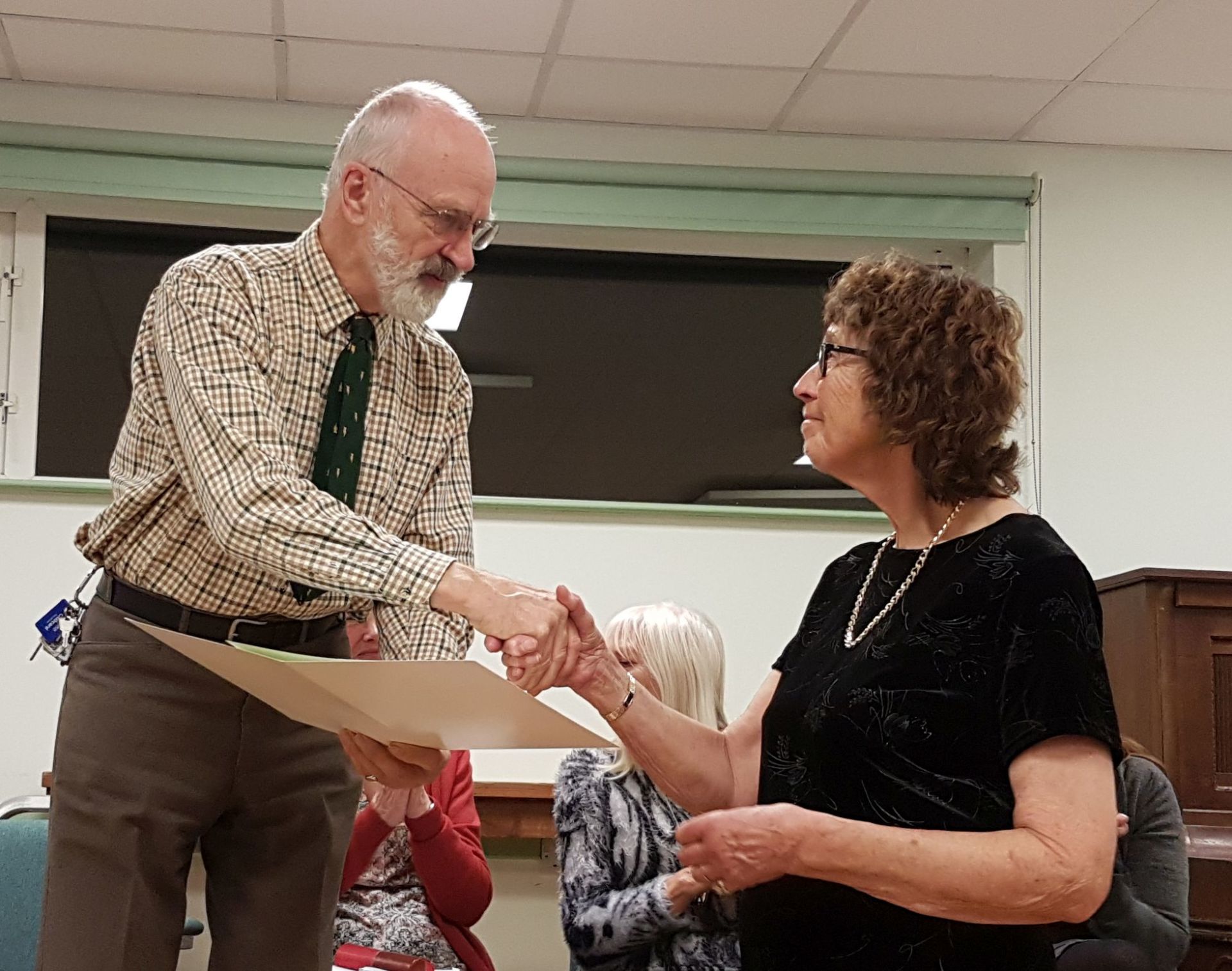
Matt’s interest in gardening started at the age of 7 with a bowl of cacti. Later he tended a very windy garden on the roof of his east London tower block before growing exhibition dahlias on an allotment at around 11 years old. He subsequently studied at Capel Manor, Writtle University College and RHS Wisley where he obtained his Masters degree. He worked for as a lecturer in horticulture until he took a job with Fareham Borough Council, where he has now worked for over 26 years. His work is varied including responsibility for the design, development and landscaping of FBC parks, marketing and public relations, management of allotments and organising the annual Fareham in Bloom displays and competitions; Fareham has just received its 15th consecutive gold medal for the south and south east region.
Matt explained that Madeira is a subtropical island with temperatures ranging from 14-25C. It is, however, also quite wet with rainfall much higher than its nearest neighbours the Canary Islands. This provides a unique climate which enabled it to grow specialised crops such as sugarcane from the 15th century onwards, and later appealed to the plant-collecting explorers of the Victorian era. The northern part of the island still retains its original forest but the southern region has a lot of fine gardens, irrigated by levadas in areas where more water is required.
The talk focused on two specific gardens: the Jardim Botanico (Botanical Garden) and Monte Palace, both located on a mountain above the town of Funchal.
The Botanical Garden was originally created around 1881 as a private park for the Bom Sucesso Estate, and opened to the public in 1960. It is built on a rocky surface with very thin soil, but more was imported to provide a better growing medium. Covering an area of 8 hectares, it showcases a wide variety of plants both native to Madeira and from every continent and also acts as a centre for horticultural research. Matt showed us a lot of beautiful photographs of the Garden including floral carpet beds, topiary, succulents and trees. Of particular interest was the Cereus cactus whose flower open at night; Matt explained that this is because it is pollinated by moths. The Garden was partially destroyed by a forest fire in 2016 and traces of this remain in the form of blackened tree trunks, but fortunately much of the garden was rescued or has since been restored.
The Monte Palace garden is higher up the mountain, frequently covered in cloud. Like the Botanical Garden, it was originally the grounds of a private house (later a hotel) built on the rock so it relies on imported soil. Following the death of the hotel’s founder in 1943 the hotel closed and the estate was allowed to decline. In 1988 it was donated to the Berardo Foundation which set about re-establishing the gardens, and it was opened to the public in 1991. The 7 hectare garden incorporates ponds, lakes and naturally fed waterfalls and includes oriental areas. It is particularly known for its collection of cycads, tree ferns and orchids.
After the break club member Maggie Allan spoke to us about “Economical Gardening”. She explained that in her garden she expects every plant to be productive, either by being edible or by being easy to grow and propagate.
She suggested a number of cheap sources of new plants including supermarkets (particularly Tesco in the late evenings when stock is sometimes greatly reduced), newspaper offers and special / free offers at St Margaret’s Nursery.
Many of her plants are divided or separated in order to grow new ones including her dianthus, primula, euphorbia and New England aster. She has grown daffodils from a few bulbs found in a hedge and hyacinths from bulbs given to her as Christmas gifts. Other plants self-seed, or grow and spread easily (for example heather). With some plants she collects and sows seeds, for example she has runner beans which have been growing for several years from seeds collected at the end of the previous year. Other plants are naturally productive for example curly kale: you pick the outer leaves as required and new leaves then grow to replace these, with the result that it lasts for several months (she has also found it to be quite pest resilient).
Between the talks Chairman Glenn Duggan advised that the talks schedule for next year is now complete and includes many of the topics which members asked for in the recent survey, although if any member would like to present a short talk of their own this would be very welcome either for after an external speaker or as an emergency fill-in should a speaker be unable to attend. Another new venture for 2019 will be a light-hearted competition for every month, with themes including the most beautiful daffodil and the biggest conker. It is hoped that our outing next year will be to Exbury Gardens on 11th July, including a guided tour and cream tea, for a cost of around £20 per person.
The November meeting will be the last for this year and will take the form of our AGM, a buffet meal and a quiz.

Peter had been invited to speak to us as a result of our Chairman Glenn Duggan and his wife Theresa visiting the ‘Eyewitness’ Museum in Beek, Netherlands last year. So impressed were they with Peter’s guided tour of that establishment that they invited Peter over to give us a talk on the fascinating subject of Holland being invaded by the Germans and the hardships they had to suffer as a result. Peter who was accompanied by his 14 year old son Vaos stayed with Glenn and Theresa from Wednesday to Saturday and apart from the talk they were shown some of the many historical attractions around our area.
Peter began his talk by correcting the title of his talk from ‘Holland’ to ‘Netherlands’ for the name Holland applies to two of the 12 provinces that make up the Netherlands; North Holland and South Holland. Peter stated that the story begins in the First World War when the Netherlands remained neutral and Germany who invaded Belgium respected Netherland’s neutrality by not passing through the strategic Dutch province of Limburg. Instead the Germans detoured around. Because of the neutral position of the Netherlands many refugees sought protection from the Germans inside the country. By 1914 one million Belgian refugees were already in the Netherlands and refugees kept coming and tried to cross the border. As result construction began in the spring of 1915 of over 125 miles of 2,000-volt electric wire fencing with a height ranging from 5 to 10 feet spanning the length of the Dutch-Belgian border from Aix-la-Chapelle to the River Scheldt. In addition anyone who was not able to officially explain their presence, when found close to the fence, was summarily executed. It is estimated that the death toll was between 2,000 and 3,000 people. However, many also succeeded in overcoming the fence, often poll-vaulting over or tunneling under etc.
The period between the First and Second World War, known as Interbellum, resulted in turmoil in Europe followed by economic depression and gradually - as the 1930s arrive - Fascism was displacing democracy. In Germany it was the Nazis lead by Adolf Hitler, and in the Netherlands it was The National Socialist Movement that came to the fore and became more and more openly anti-Semitic. Heavy handed tactics were employed by ‘Black soldiers’ dressed similarly to Nazis. The Fascists exploited the economic situation by providing jobs and finance to those without jobs and creating organisations for the youth called ‘Jeugdstorm’. The people were extremely grateful for the jobs and their ability to have a better life. Meanwhile ‘storm clouds’ were gathering over Europe and war looked inevitable as the end of the 1930s was reached. As a result suppressed people in other parts of Europe started to make their way to neutral Netherlands. The Dutch government backed up this neutrality with little or no effort to defend the country with a fairly small army of about 300,000 men, no air force to speak of and a Navy based in the Far East where Dutch Colonial interests were centred. As Peter told us the Dutch had one tank on loan from Belgium but with an understanding that it would never be used in battle. Hand grenade training involved using potatoes as grenades!
At the outbreak of World War II in September 1939 the Netherlands proclaimed neutrality just as it had in World War I, but Adolf Hitler ordered it to be invaded anyway. Nazi Germany attacked on 10 May 1940 and on 14 May 1940, one day after the bombing of Rotterdam, the Dutch forces surrendered. The Dutch government and the royal family saved themselves by going to London. At first life under German occupation was not at all bad. The Germans spent money in the country and the regime was not too tough, many Dutch believing that life was like a holiday. The National Socialist Movement had become divided and had split into distinct sections one headed by long term leader Anton Mussert and the other under hard-line Seyss Inquart. The Germans chose Inquart to lead the country and in 1941 everything changed when the persecution of Jews began. They were increasingly isolated and forbidden to mix with non-Jews. Then on 22nd and 23rd February 1941 427 Jewish men were taken prisoner to work for the Germans in Germany. The Dutch responded by arranging a national strike on 25th and 26th February. The Germans responded in a brutal fashion announcing that strikers would be shot. As a consequence 9 strikers were killed and 24 badly wounded. Hundreds were placed in captivity and an even larger hunt took place for Jews. The psychological impact on Dutch people was immense. Despite this Germans were being killed by the Dutch resistance and the Germans were brutal by responding with the killing of a large number of people on most occasions and the destruction of blocks of houses. In one famous case a German Officer was killed and 7 Dutch civilians were executed immediately. The Germans then went to the town of Putten (which had nothing to do with the killing of the German) and sent 600 men to concentration camps of which only 48 men survived the war. Until the allies started to free the Netherlands resistance was concentrated on cartoons being circulated, along with underground newspapers.
In the UK Dutch forces that escaped the Germans or who were outside the Netherlands at the time of the German invasion made their way there, where the Dutch Government in exile set up their Headquarters. Though the Netherlands was occupied, by no means was all lost. The Royal Netherlands Navy had managed to get most of its ships to England (one, the light cruiser Jacob van Heemskerk was not finished yet and had to be towed). The Netherlands had a large merchant marine, which would contribute greatly to the Allied war effort during the rest of the war. A few Dutch pilots also had escaped and joined the RAF to fight in the Battle of Britain. In July 1940, two all-Dutch squadrons were formed with personnel and Fokker seaplanes from the Dutch naval air force: 320 Squadron and 321 Squadron. In 1942, an all-Dutch brigade was formed, the Princess Irene Brigade. This brigade would go on to participate in Operation Overlord in 1944.
Back in Netherlands the deportation of Jews, Gypsies and handicapped people continued at a pace. In 1939, there were some 140,000 Dutch Jews living in the Netherlands, among them some 24,000 to 25,000 German-Jewish refugees who had fled Germany in the 1930s. By 1945, only about 35,000 of them were still alive. This is a low percentage compared to other countries occupied by the Germans. There were good reasons however. Most Jews were poor, which limited their options for flight or hiding. Another factor is that the country did not have much open space or woods to flee to. Also, the civil administration was advanced and offered the Nazi-Germans a full insight into not only the numbers of Jews, but also exactly where they lived. Peter made a very important point in his talk when he said - and I quote - “Not all Germans are Nazis and not all Nazis are Germans”. The Netherlands had to contend with the fact that many Dutch fought on the side of the Nazis including the forming of the 34th SS Volunteer Grenadier Division "Landstorm Nederland" a division in the Waffen-SS.
After the Allied landing in Normandy in June 1944, the western Allies rapidly advanced in the direction of the Dutch border. Tuesday September 5 is known as Dolle dinsdag ("mad Tuesday") — the Dutch began celebrating, believing they were close to liberation but their celebrations were short lived. The failed attempt to capture the Rhine bridge at the Battle of Arnhem meant that while substantial regions to the south, including Nijmegen, Eindhoven and much of North Brabant, were liberated, much of northern Netherlands remained in German hands until March 1945. The winter of 1944–1945 was very harsh, which led to 'hunger journeys' and many cases of starvation (about 30,000 casualties), exhaustion, cold and disease. This winter is known as the Hongerwinter (literally, "hunger winter") or the Dutch famine of 1944. In response to a general railway strike ordered by the Dutch government-in-exile in expectation of a general German collapse near the end of 1944, the Germans cut off all food and fuel shipments to the western provinces in which 4.5 million people lived. Severe malnutrition was common and 18,000 people starved to death. Relief came at the beginning of May 1945 when the war was over. The Dutch then had to deal with the aftermath of almost 5 years of occupation which included the deaths of over 260,000 people.
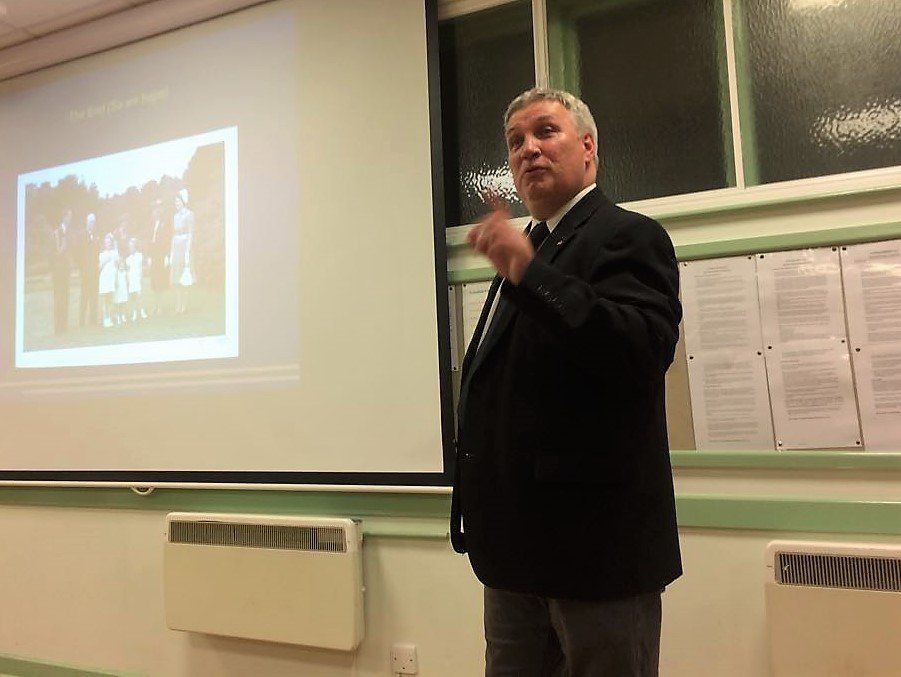

What was particularly surprising is that a lot of the gardens have only three inches of soil. Apparently the site was originally that of a hospital which was built in a rocky area, with just enough topsoil imported to provide some grounds. As a result much of it tends to be very dry, despite which none of the plants are watered; instead they chose plants which suit the conditions.
Originally under council control, the gardens are now privately owned and for the most part are maintained by volunteers from the local area.
The gardens include a large solar-heated tropical house, hyrangea dell, rock and courtyard garden and a number of country-themed gardens showing the flora of different regions of the world.
Highlights include foxgloves which reach 8 feet in height, tropical vegetables and fruits such as bananas. They also grow hops from which they produce their own Ventnor Beer.
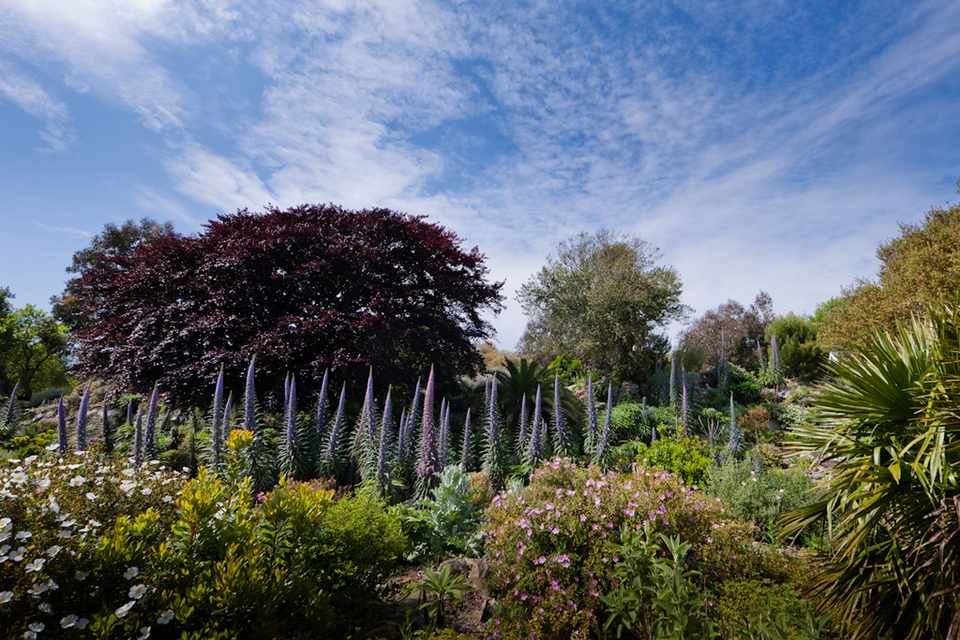

Fred’s departure at 9.15 meant that after our tea break the committee could talk to the members about the Club generally and its future. There was a nice and open discussion with the membership and what was clear was that you want the Club to continue and you want it to succeed. It was interesting that the majority view was that you would help if asked and for instance the membership thought having a Tea Rota where members help get the tea ready and wash up afterwards was a good idea and something you would like to see set up. You also asked for a list to be produced on tasks that Club would like membership support for such as delivering pamphlets. You have asked for a Volunteers List to be produced and we will produce one for the August meeting. Several Members said they would consider joining the Committee and one member, Susan Kavanagh has indeed joined the Committee where her Newsletter and Web Page skills will be a welcome addition and take off of me as Chairman, some of the workload. I will be working with Susan during July to hand over responsibilities in this area to her. We hope that others who stated an intention of considering about joining the committee.
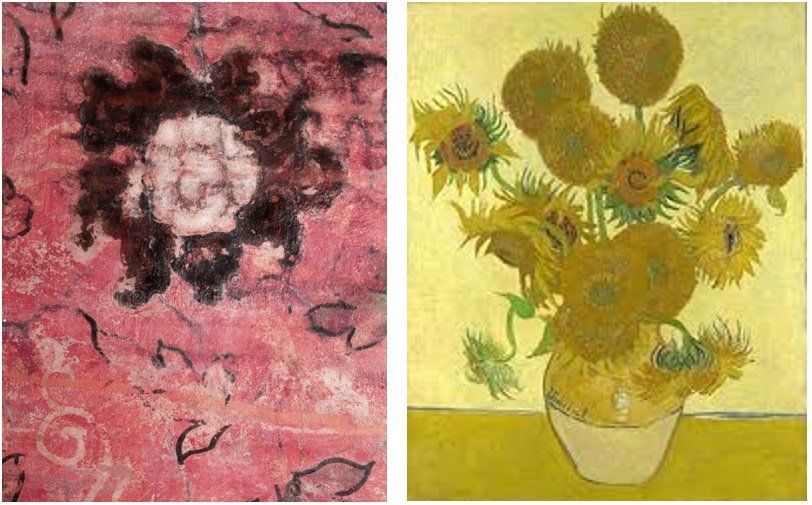
- October 2017: Your lawn
- September 2017: Perennials for everyone
- August 2017: Visit to Shore Leave Haslar
- July 2017: Visit to Sir Harold Hillier's garden
- June 2017: Annual auction
- May 2017: a practical demonstration of gardening techniques
- April 2017: Plant Propagation from seed/softwood cuttings & Colourful Summer Containers
- March 2017: Roses
- February 2017: Vegetables all the Year Around

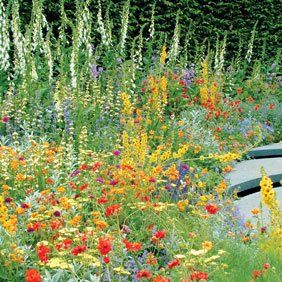
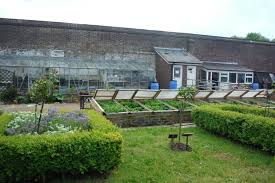
What a wonderful occasion, we had, 30 members attend and the travel arrangements worked very well indeed. On a wonderful summers evening we were treated to a sumptuous amount of information on an array of plants, shrubs and trees, that Wolfgang has an incredible knowledge of. Wolfgang's passion showed through the two and a half hours we had him to ourselves.
I think all of those who were there would agree it was a unique occasion and we were privileged to have been there. As dusk started to descend we made our way back to our starting point of Jermyn's House, for a welcome drink and nibbles that were demolished quickly, the walk and talk having built an appetite! The Chairman presented Wolfgang with a donation cheque from the Club which will go towards the gardens. The Club Members showed their appreciation for Wolfgang's tour by a very generous round of applause.
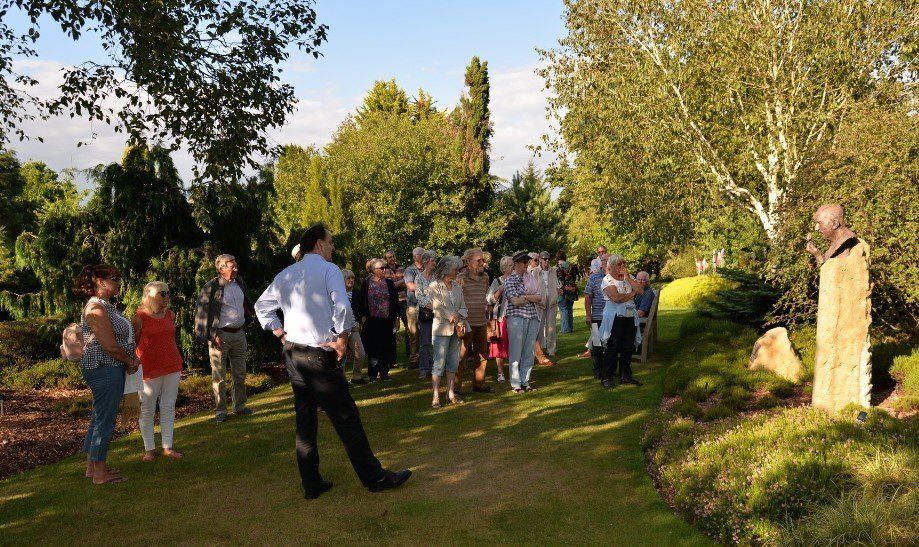

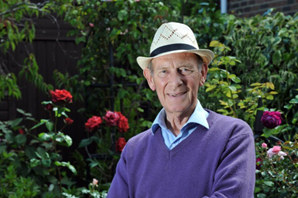
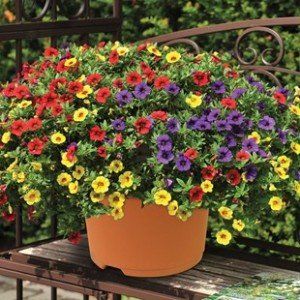
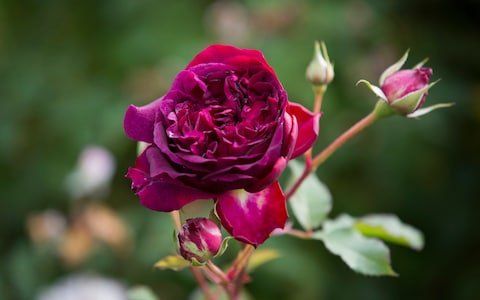
John Trim's advice can be found at the following link: http://www.allotment-garden.org/vegetable-show/
This link takes you to John’s 18 pages on the advice section of the very useful Allotment & Garden Web Site which has a wealth of advice. At the link click on each of the sub sections such as “Growing Potatoes for Show Cultivation” and you will find John’s advice on the right Compost Mix for Show Potatoes which everyone was interested to make a note of. Members Score 8.5/10
